The document discusses the Internet of Things (IoT) and connected devices, detailing various aspects including definitions, functionalities, technical features, architecture, and project management perspectives. It provides examples of use cases across different sectors such as smart cities, agriculture, and home automation, while also emphasizing the importance of devices, communication technologies, and security in IoT systems. Overall, the document illustrates the complexity and diverse applications of IoT technologies in modern society.
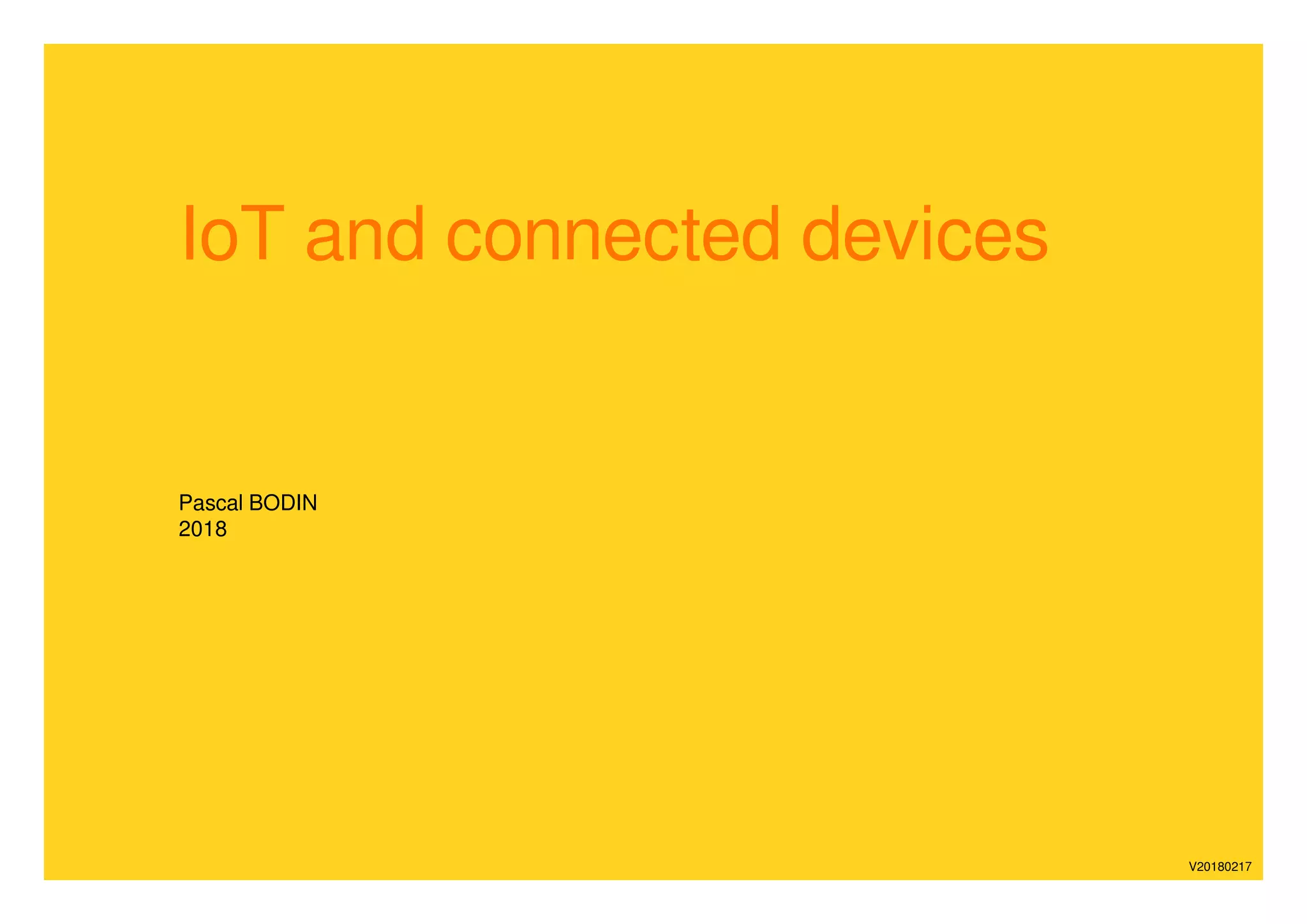
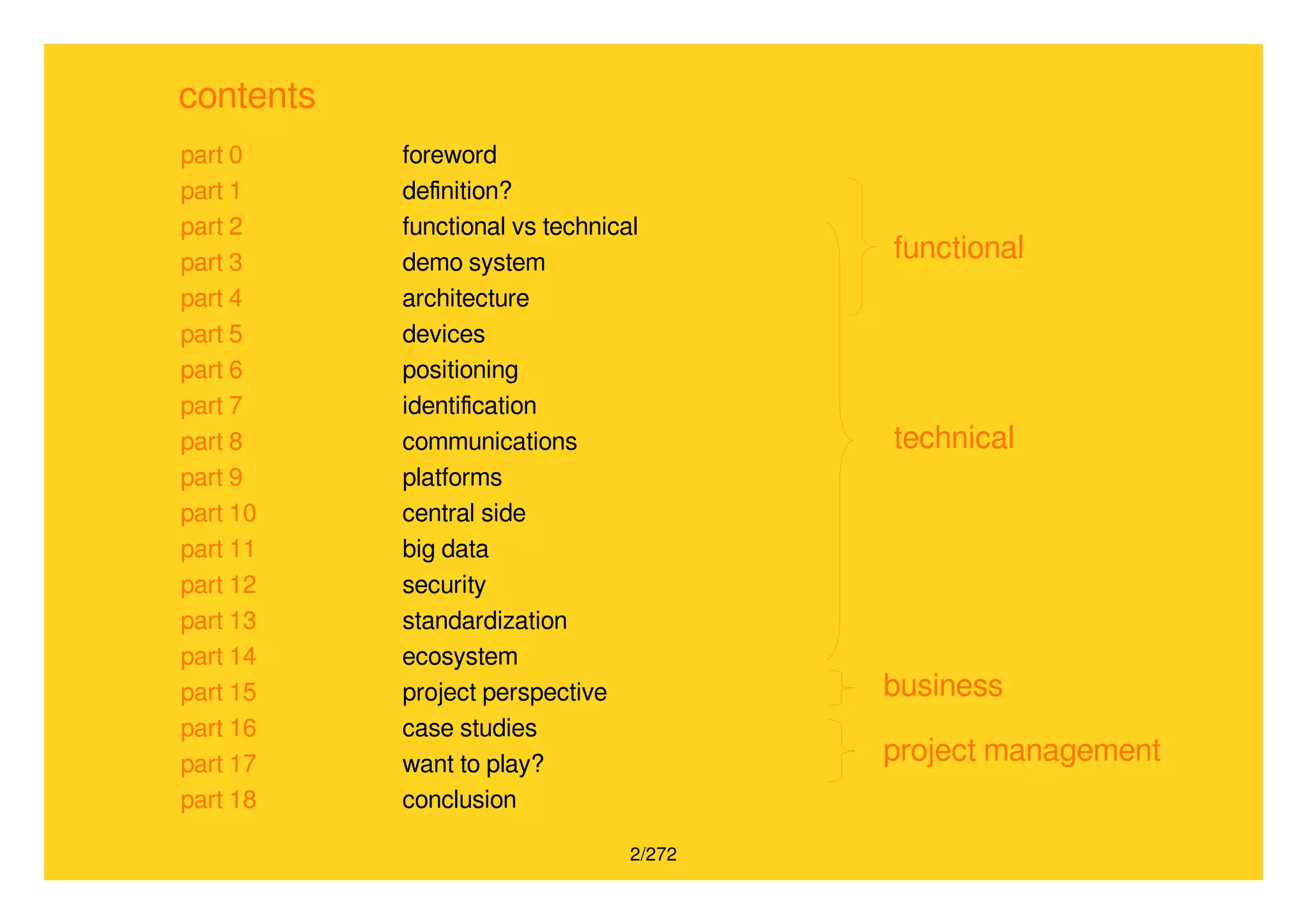
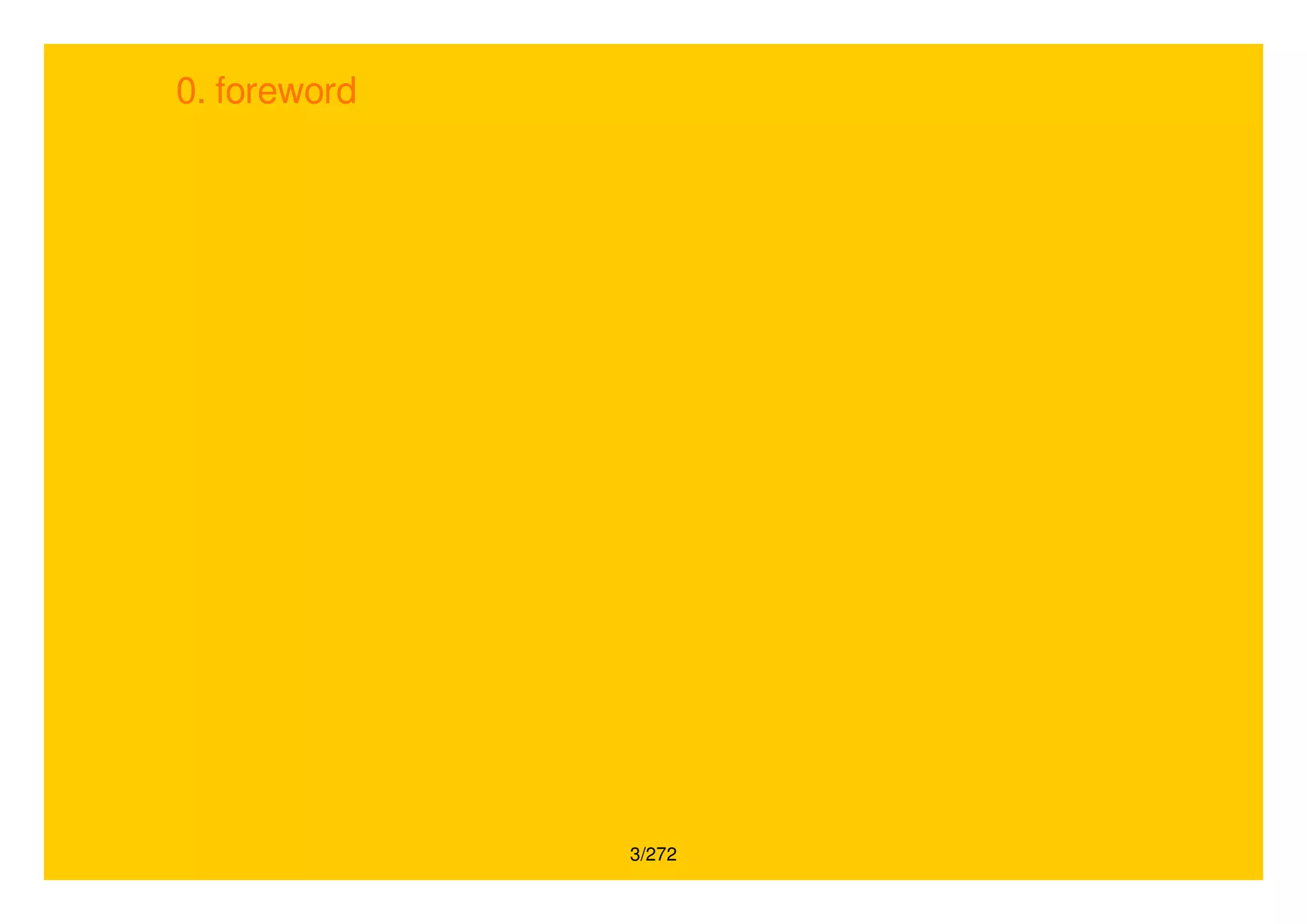
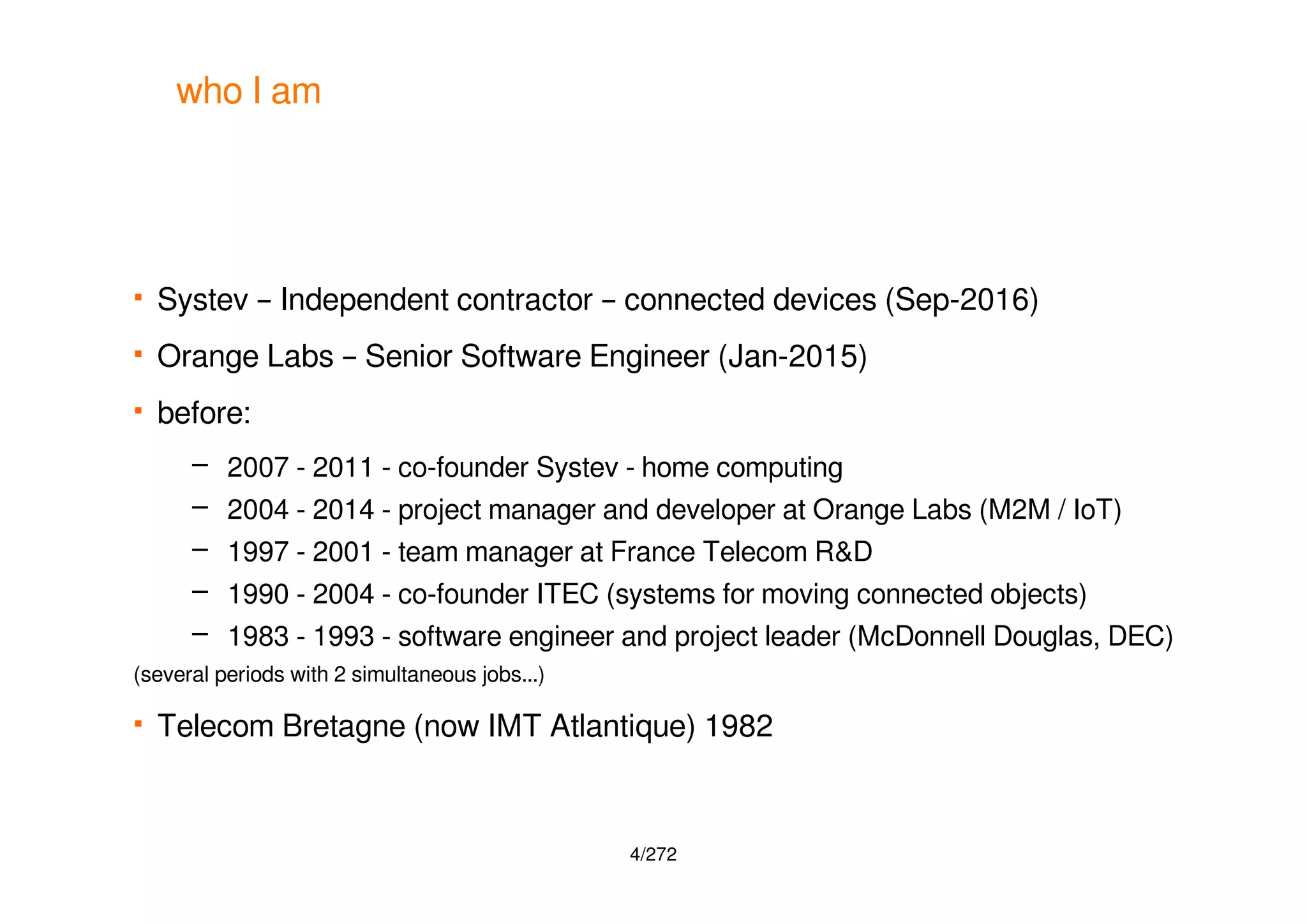
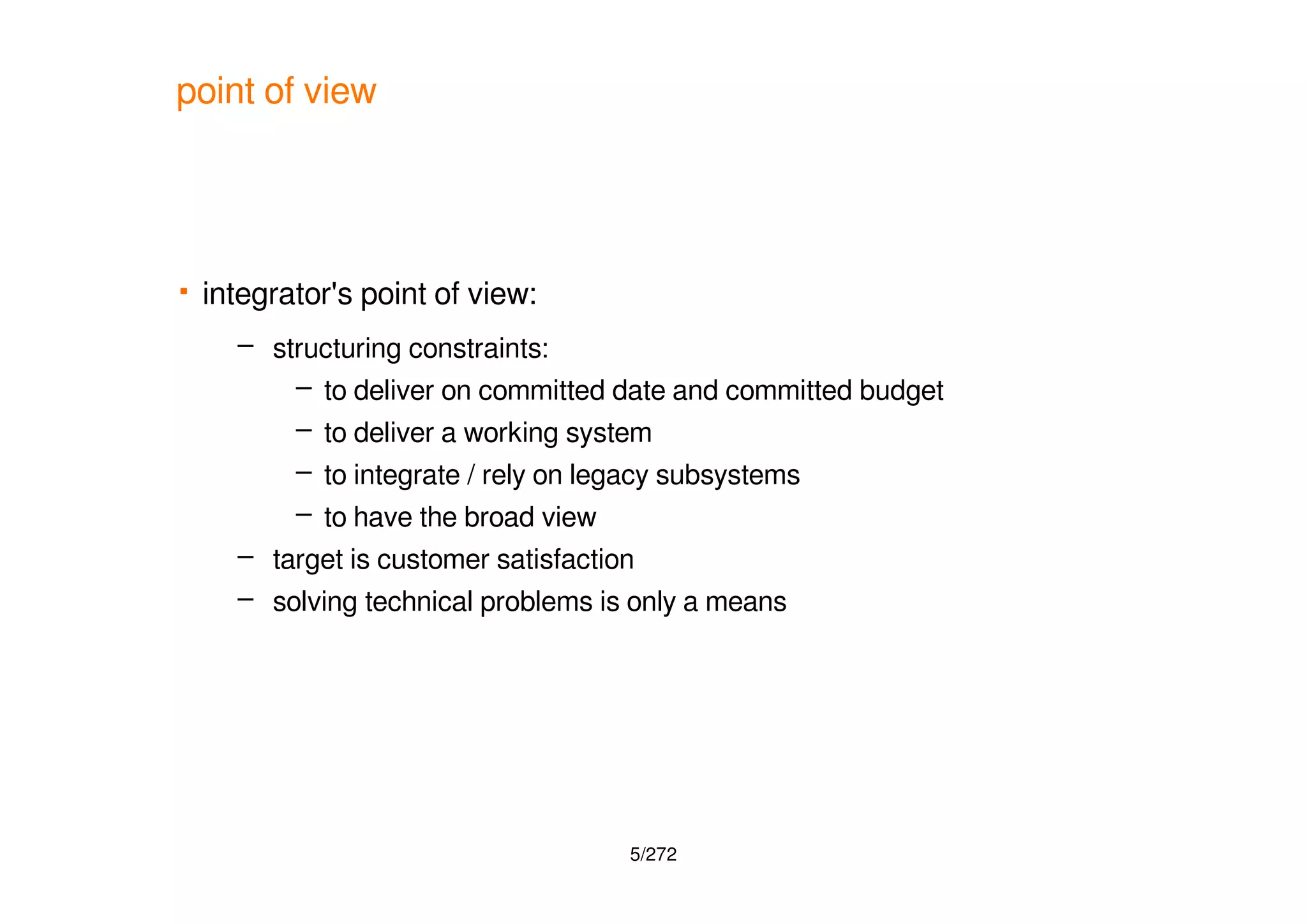
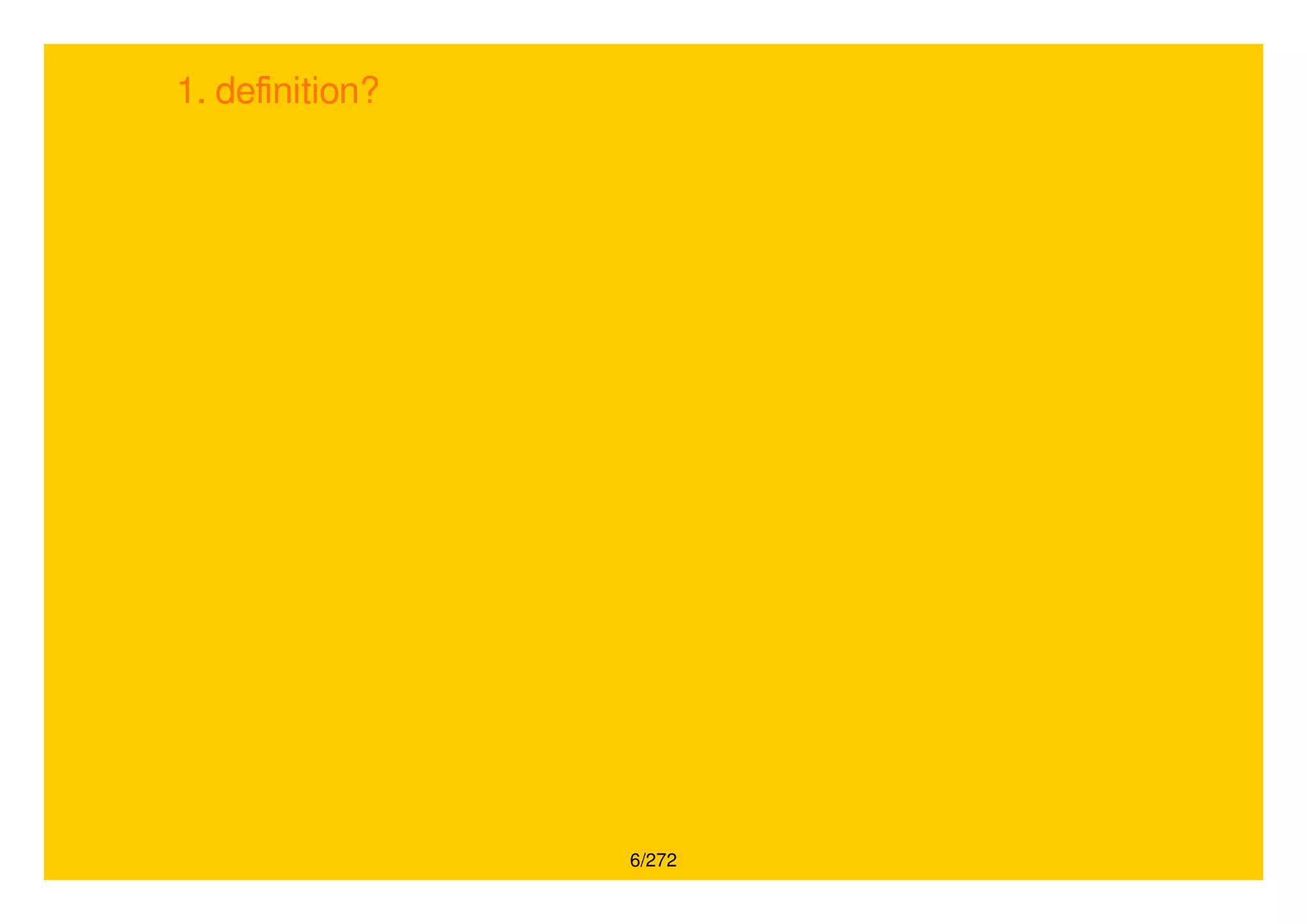
![7/272
in the '70s - '80s
[Def01] [Def02]](https://image.slidesharecdn.com/20180217-iotandconnecteddevices-180217095428/75/IoT-and-connected-devices-an-overview-7-2048.jpg)


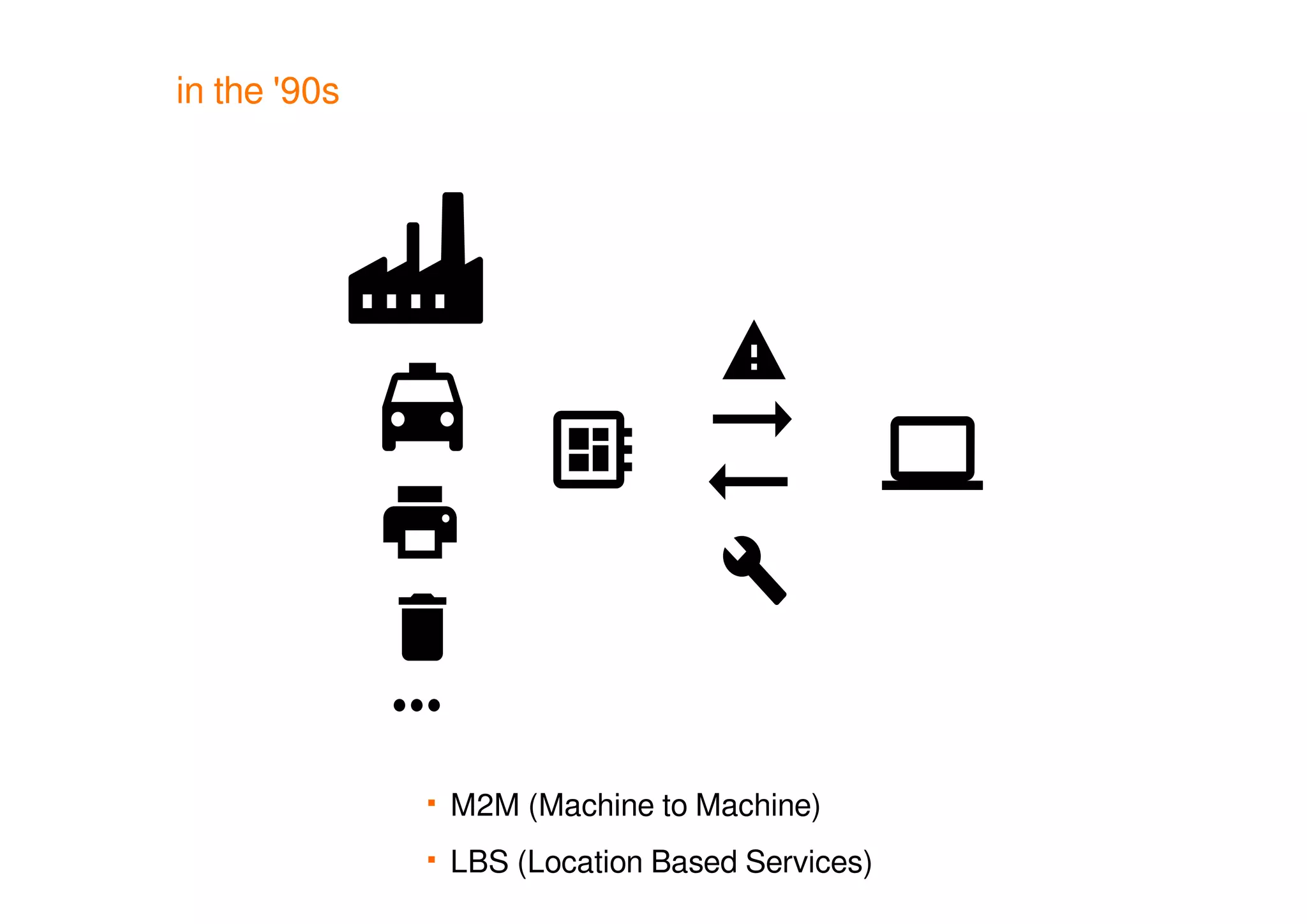
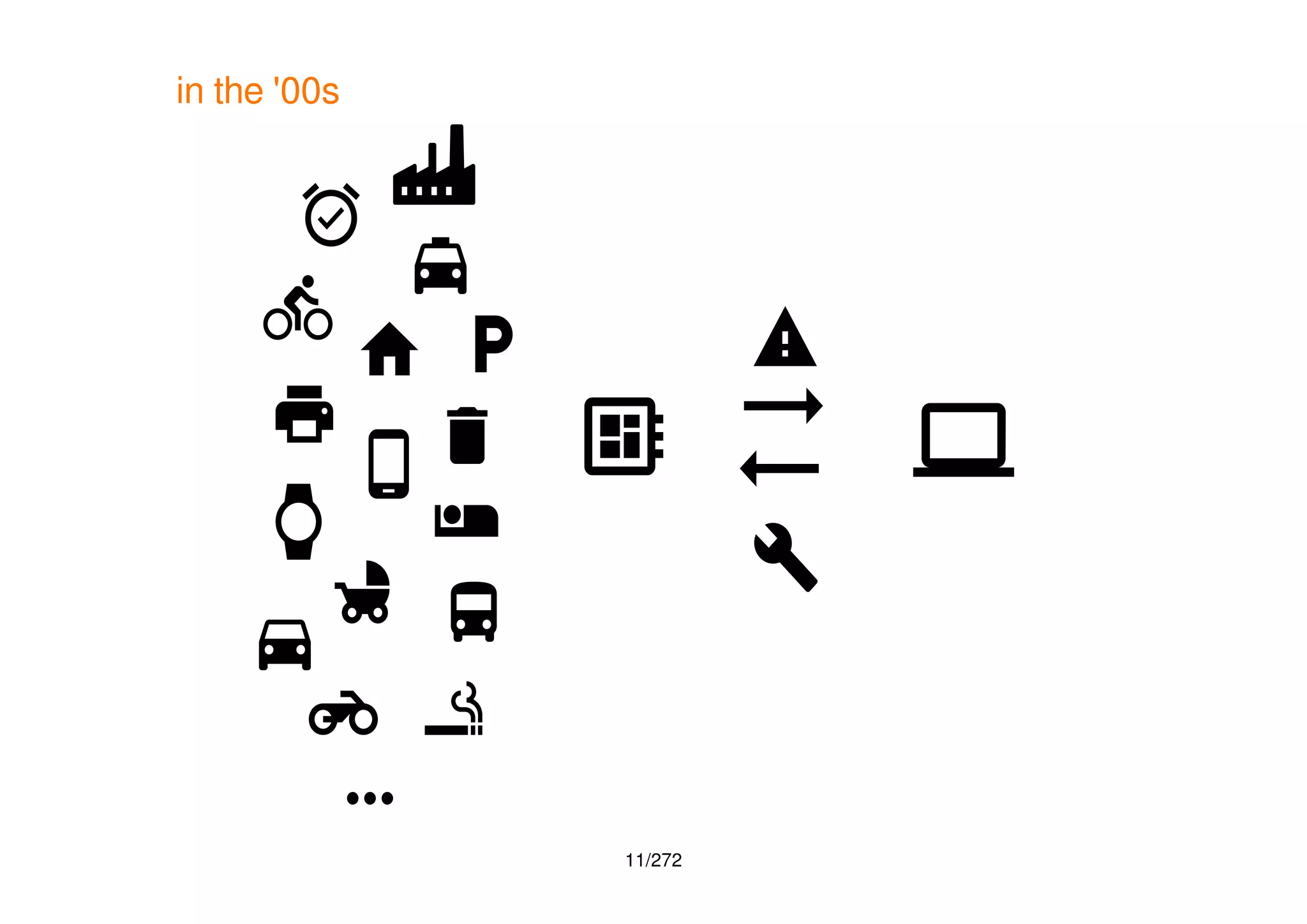
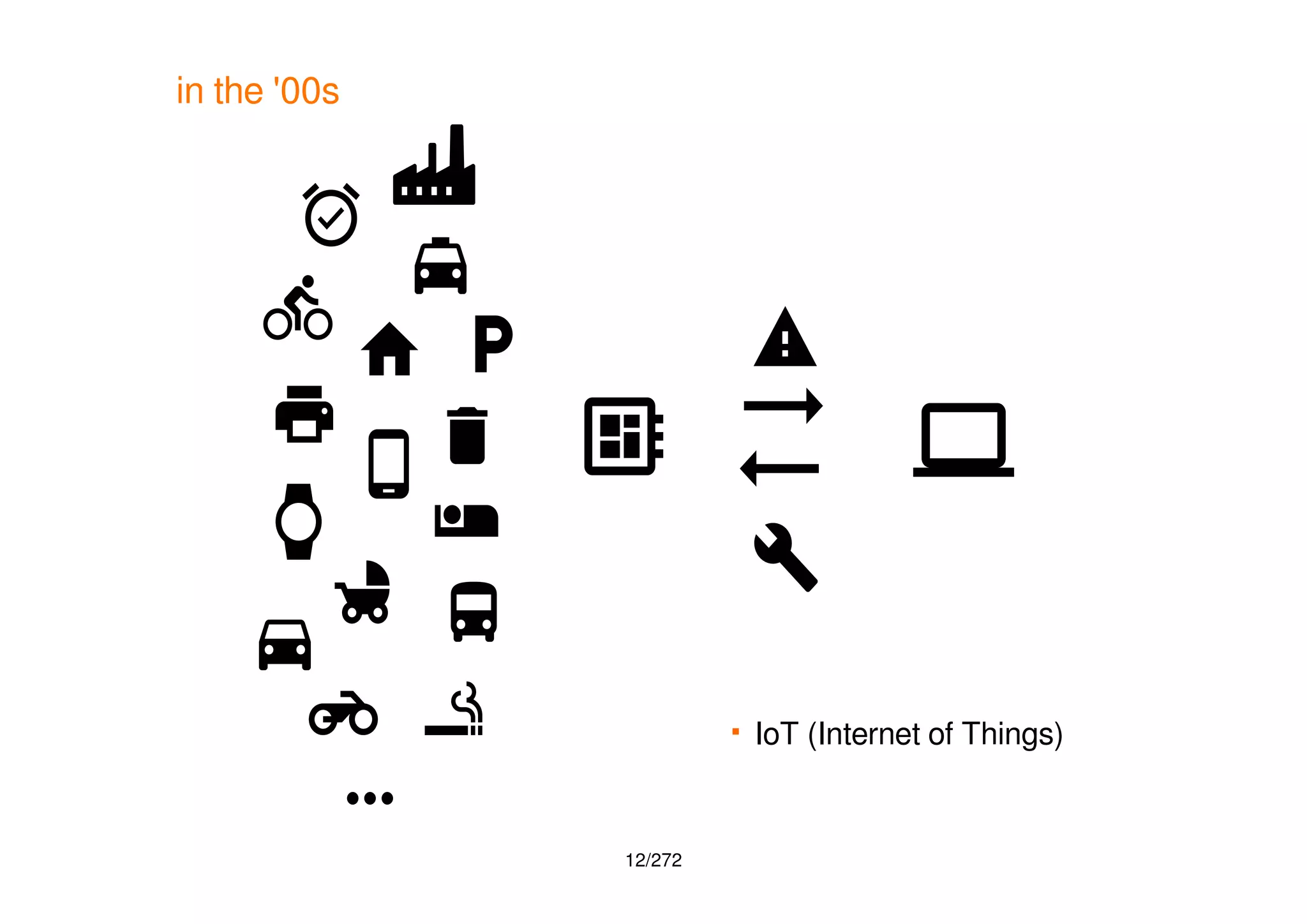
![13/272
one defnition
Internet of things: the network of physical devices, vehicles, home
appliances and other items embedded with electronics, software, sensors,
actuators, and network connectivity which enables these objects to connect
and exchange data. Each thing is uniquely identifable through its
embedded computing system but is able to inter-operate within the existing
Internet infrastructure. [Wikipedia]
many other ones exist
[Def03]](https://image.slidesharecdn.com/20180217-iotandconnecteddevices-180217095428/75/IoT-and-connected-devices-an-overview-13-2048.jpg)

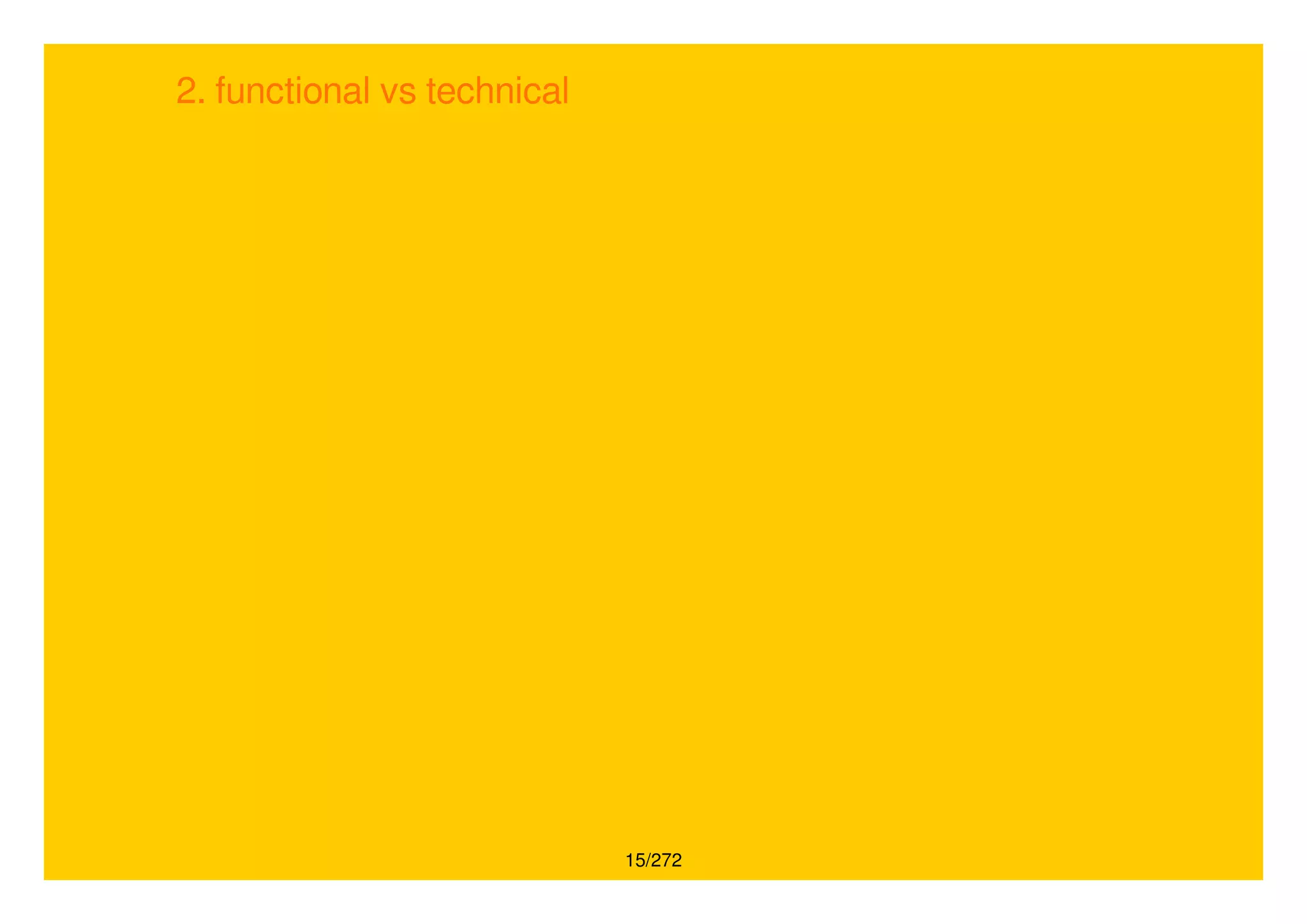
![16/272
some use cases – smart cities
Controlling shipping trafc in the
Netherlands canals with wireless sensors
Saving water with Smart Irrigation System
in Barcelona
Trafc and Road Conditions Monitoring in
Malaga
[Fct01]](https://image.slidesharecdn.com/20180217-iotandconnecteddevices-180217095428/75/IoT-and-connected-devices-an-overview-16-2048.jpg)
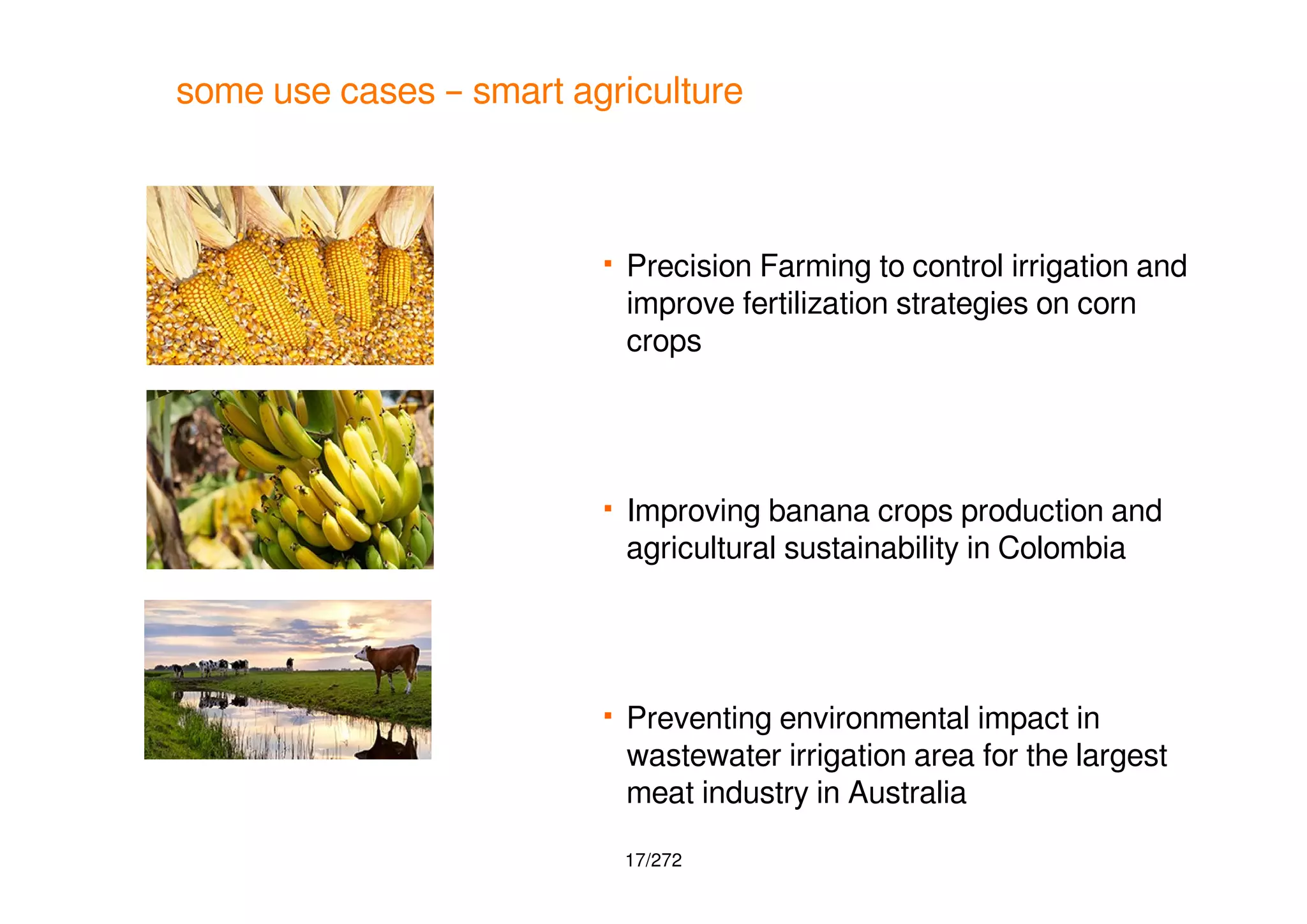
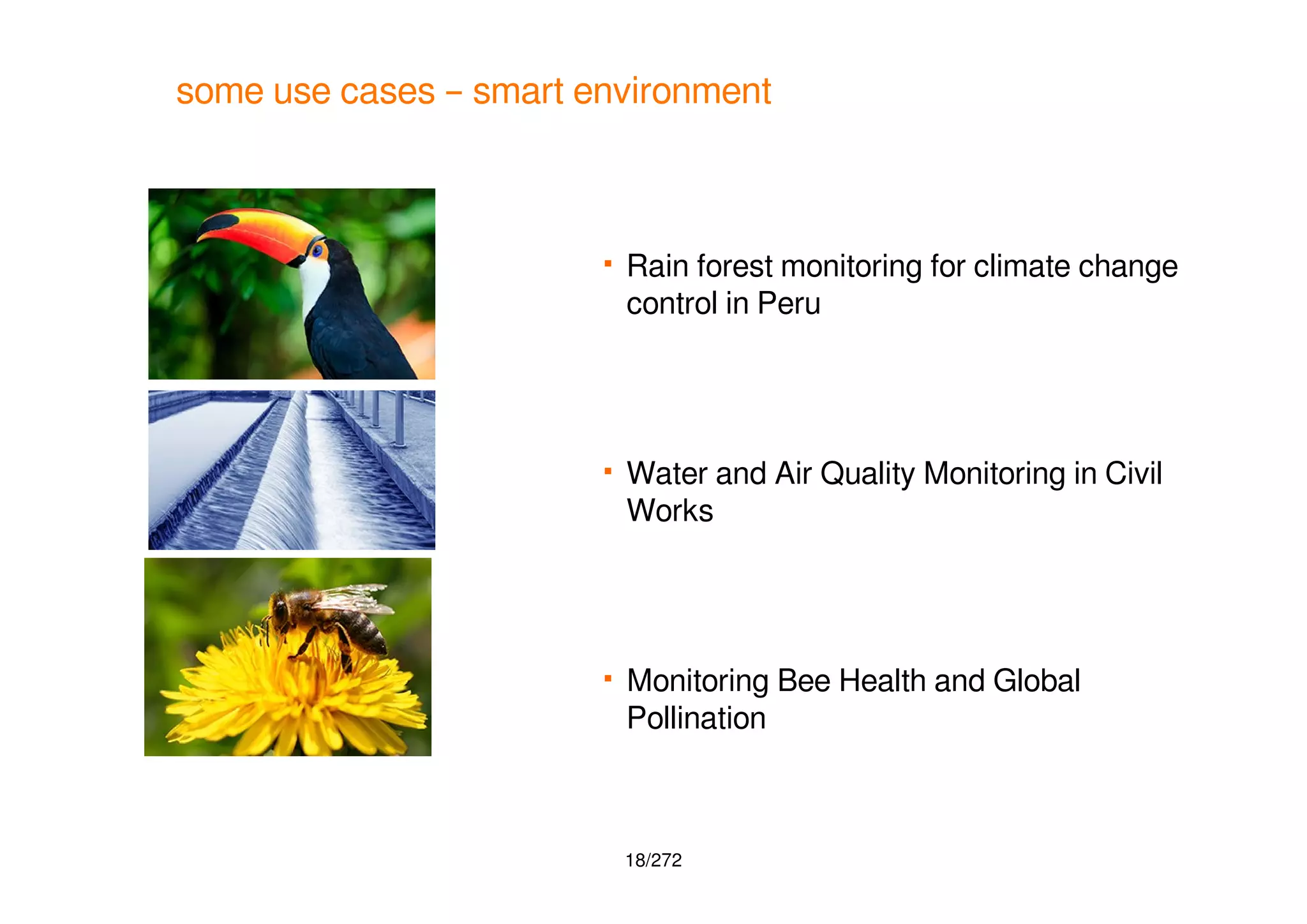
![19/272
some use cases – smart home
Smart appliances: remote diagnostics,
proactive alerts, etc.
Water treatment: automated consumable
ordering, etc.
Fire and safety: property monitoring,
emergency alert, etc.
[Fct02]](https://image.slidesharecdn.com/20180217-iotandconnecteddevices-180217095428/75/IoT-and-connected-devices-an-overview-19-2048.jpg)
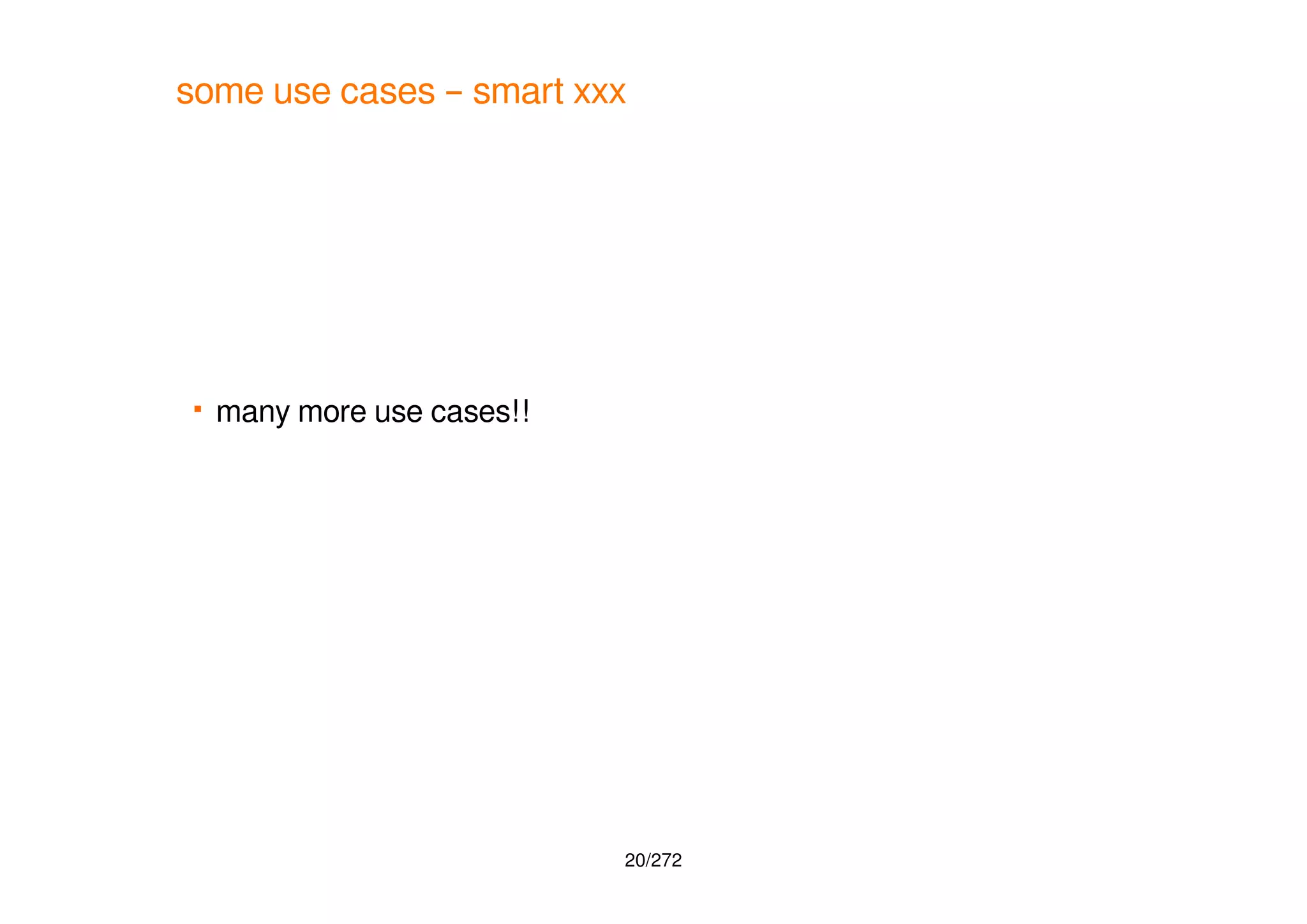
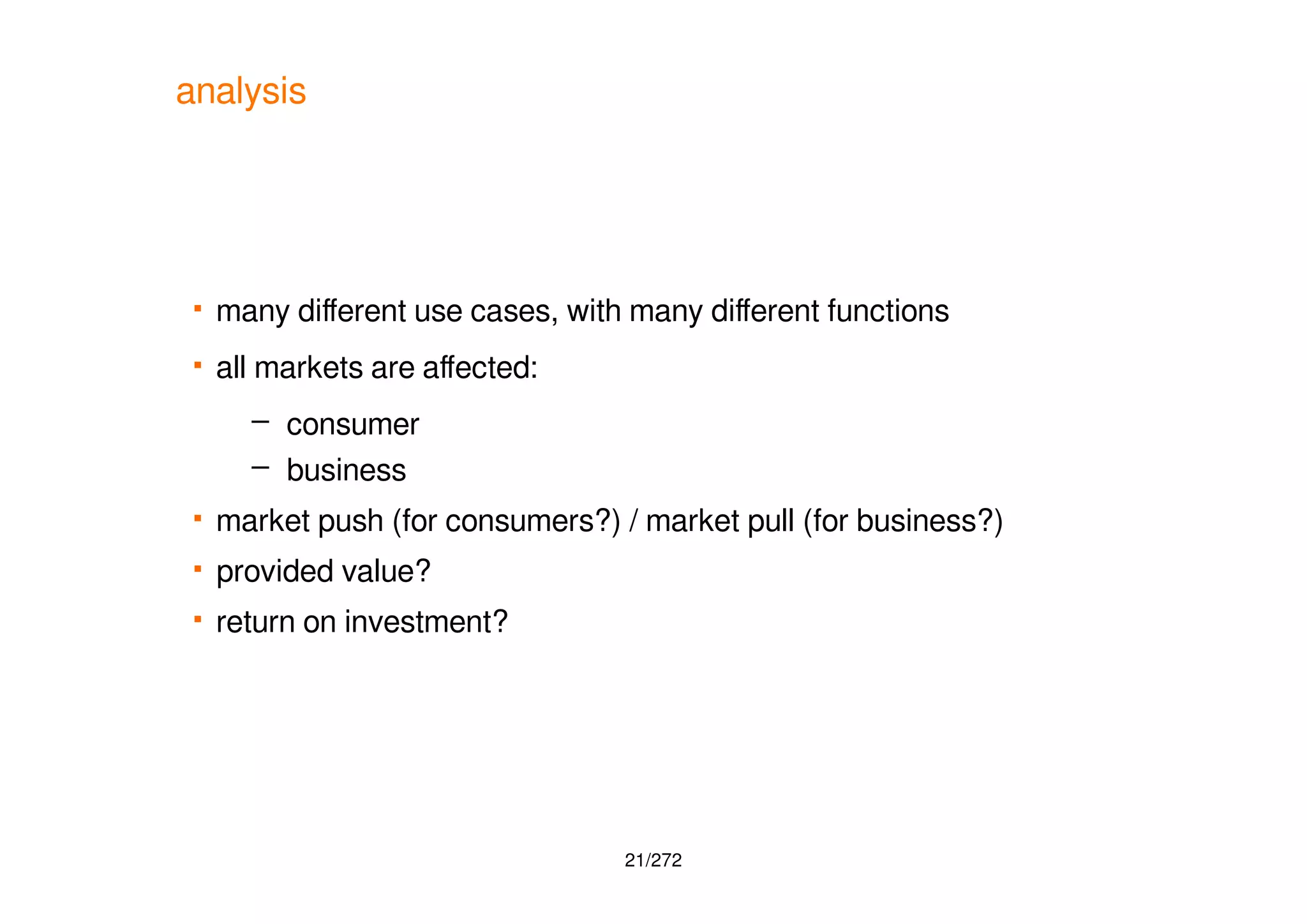
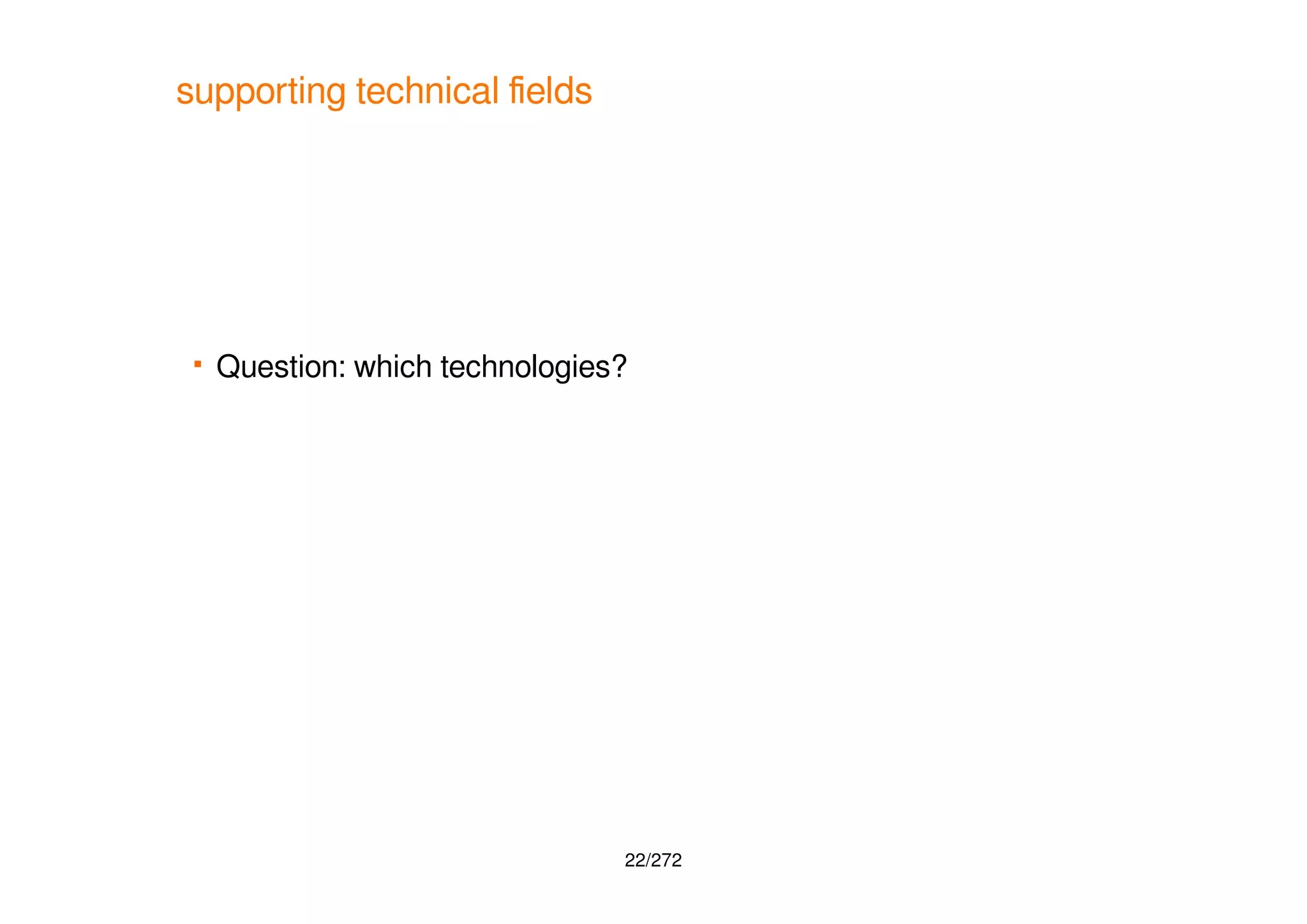
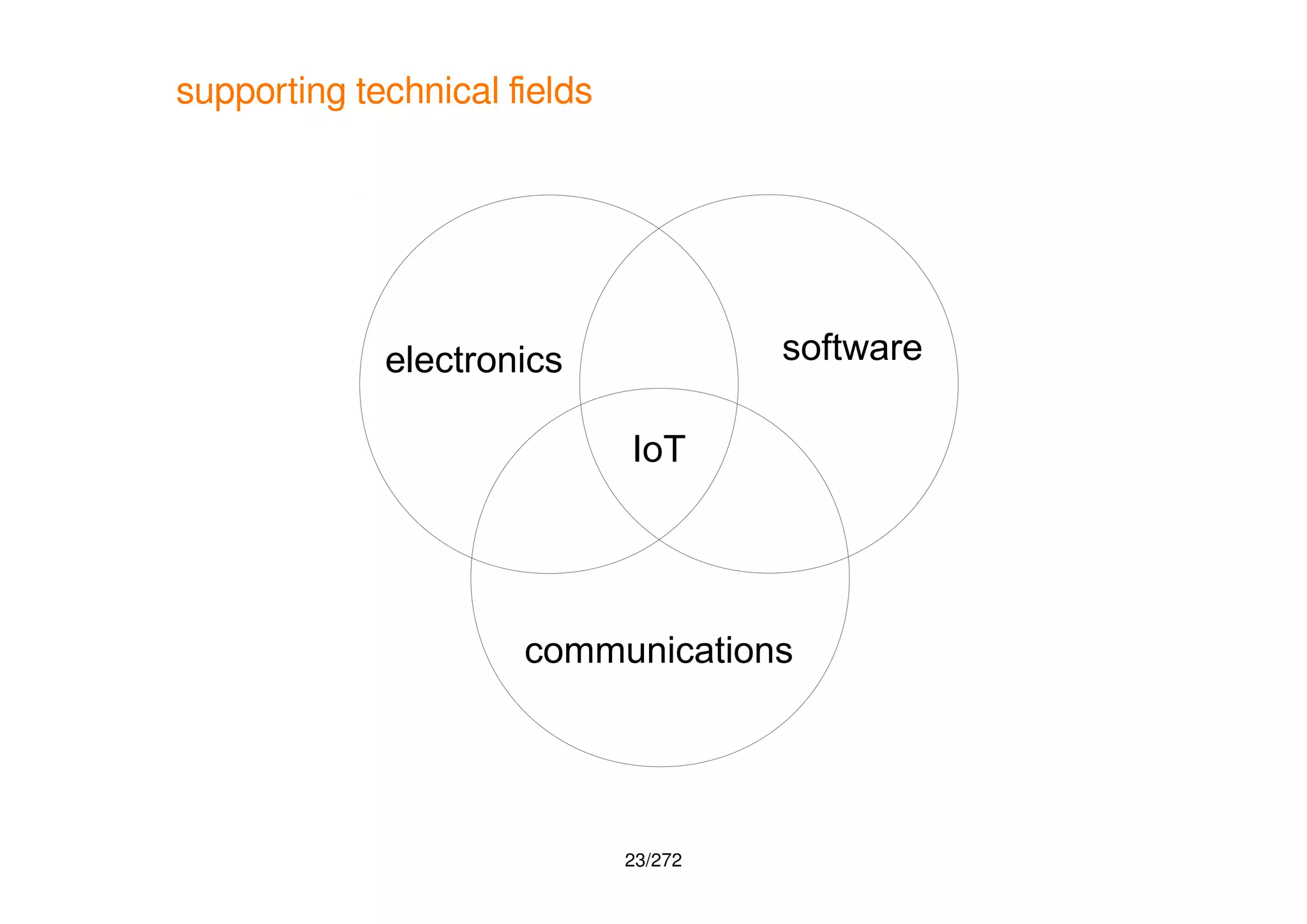
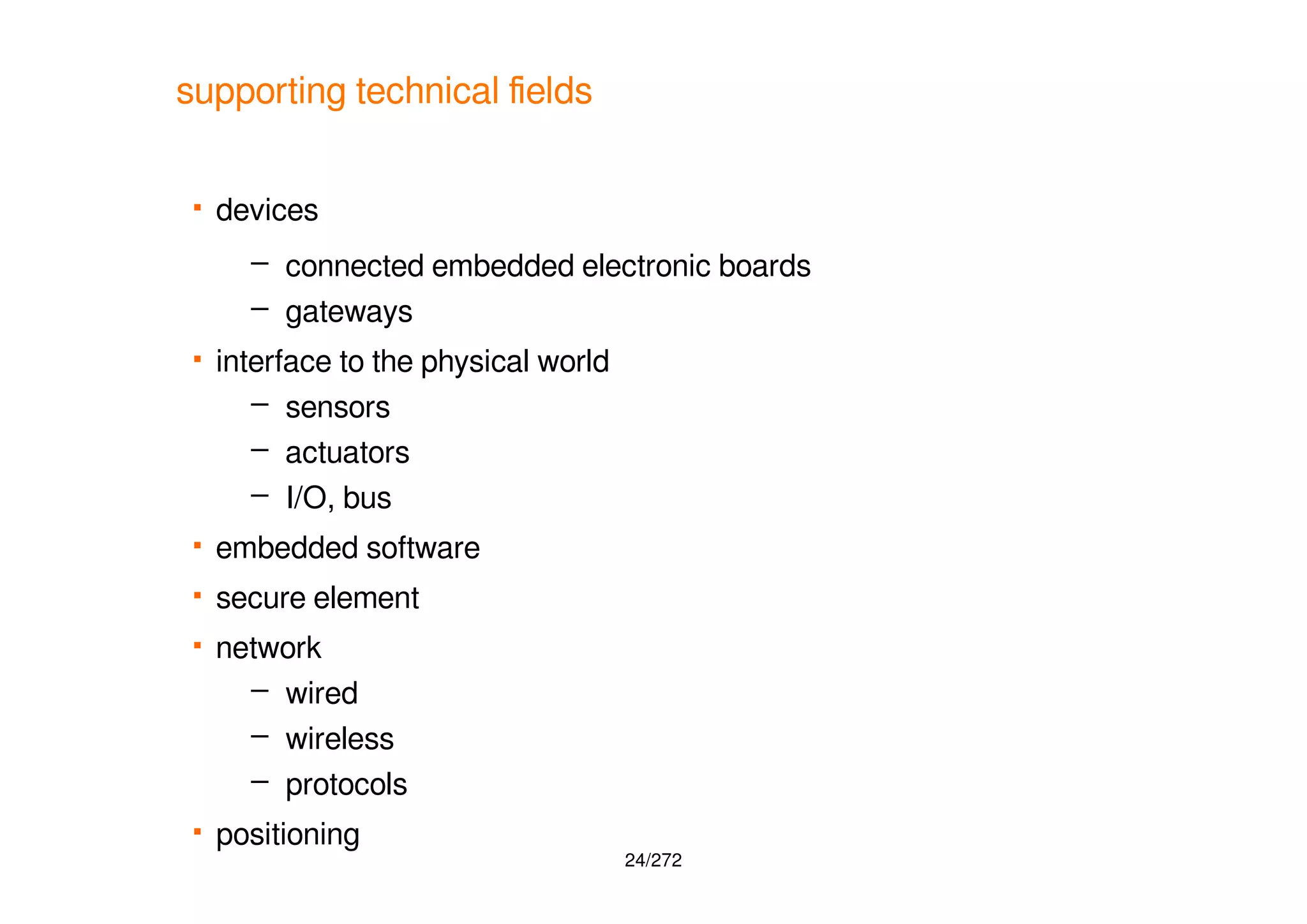
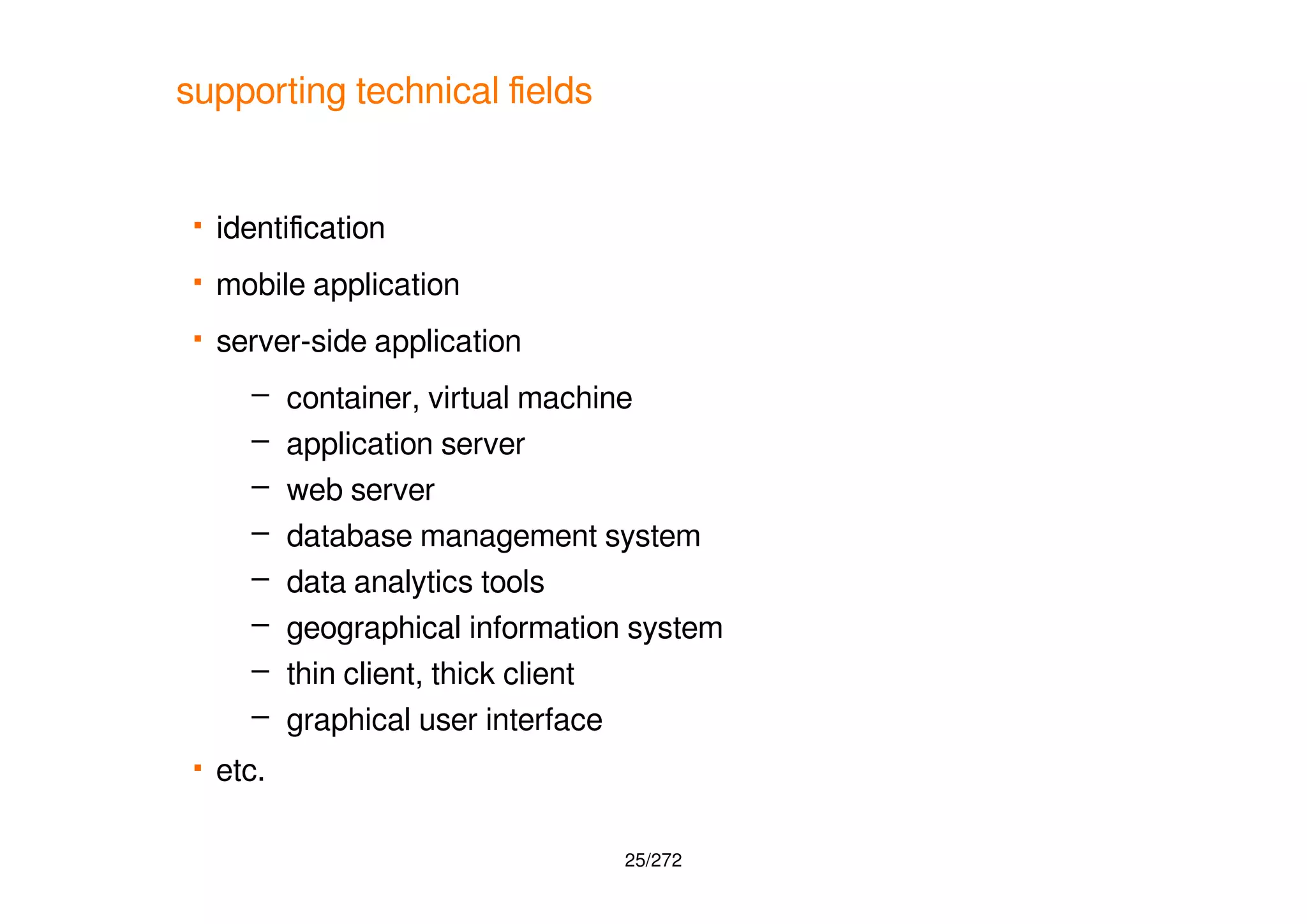

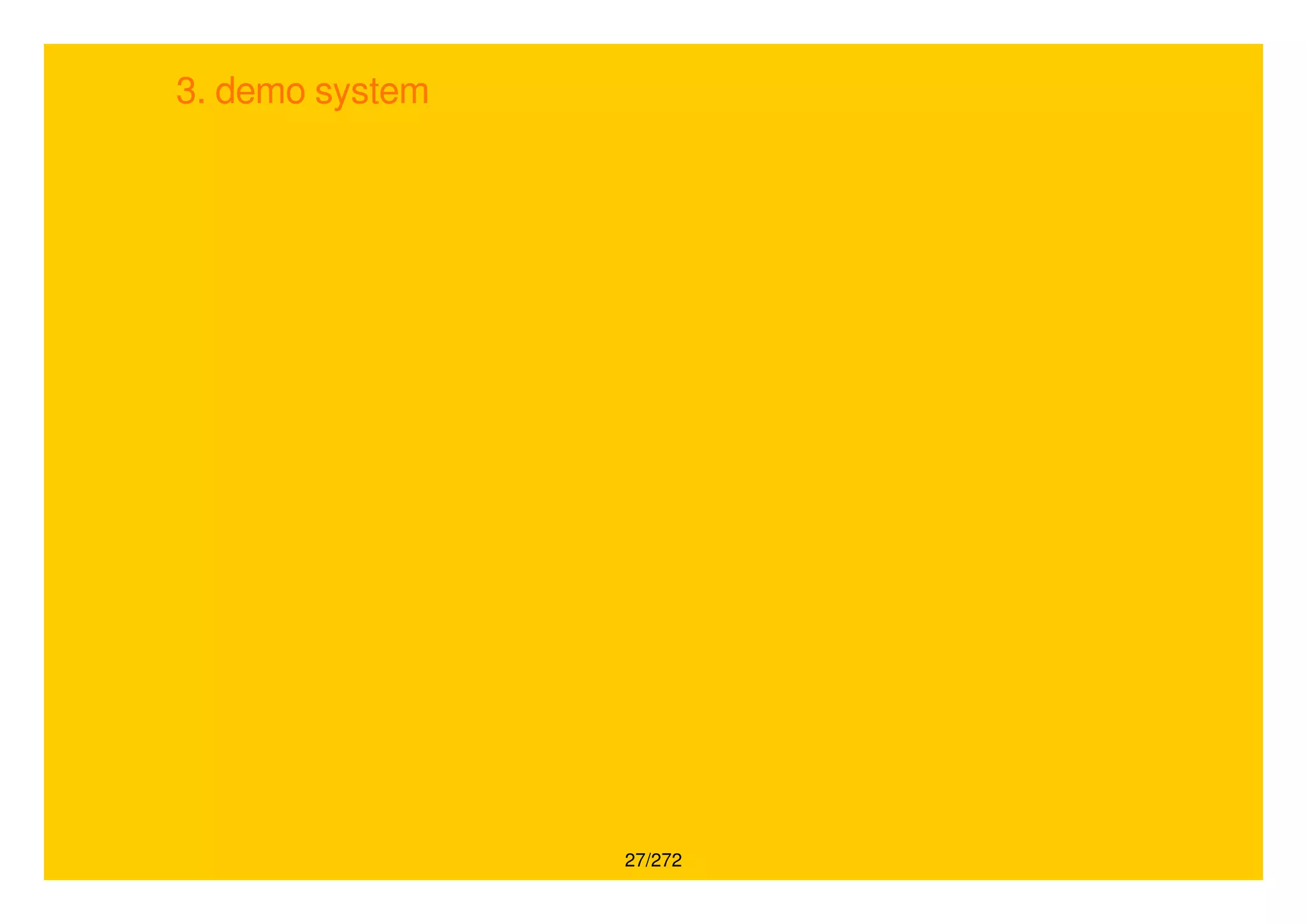
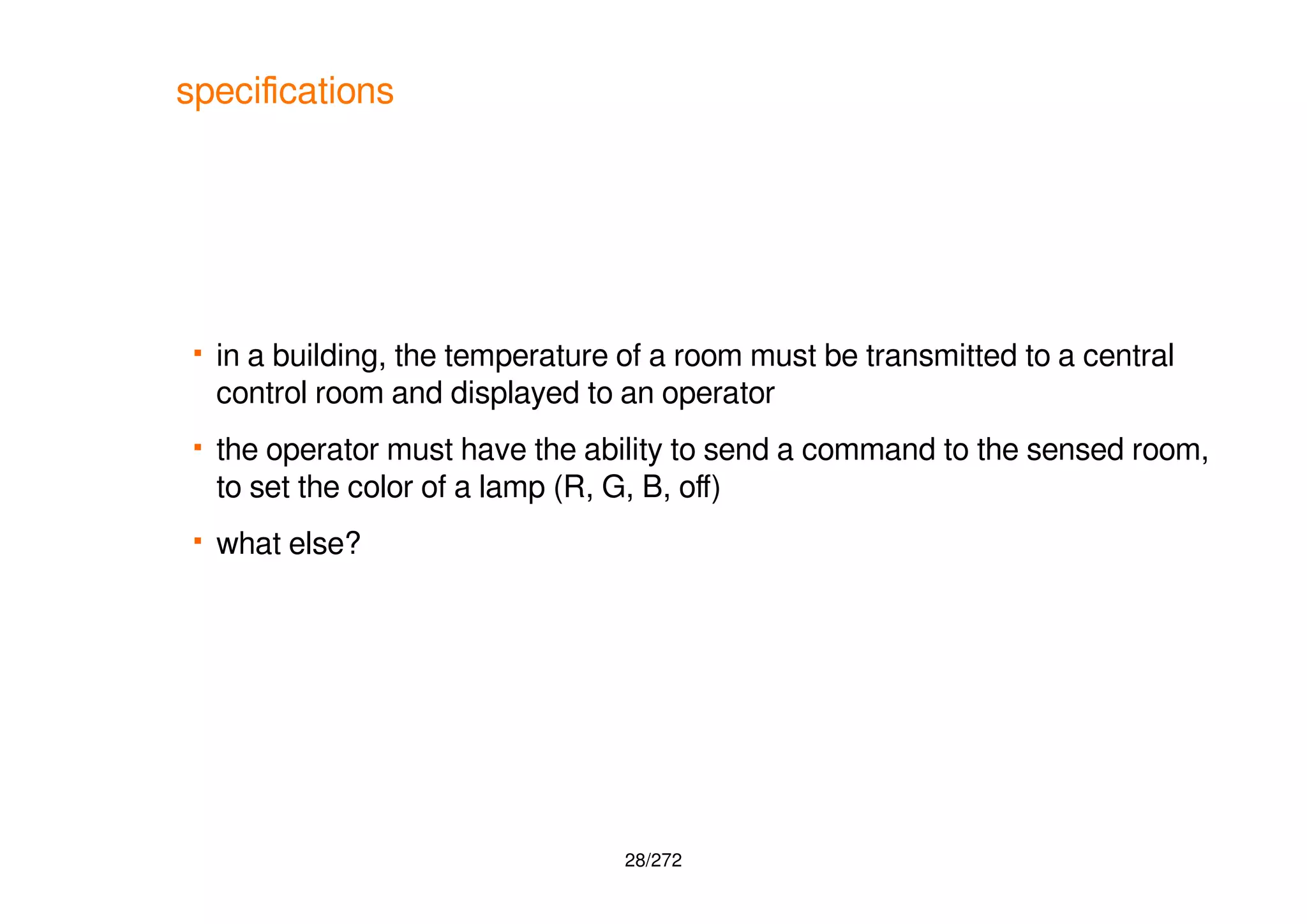
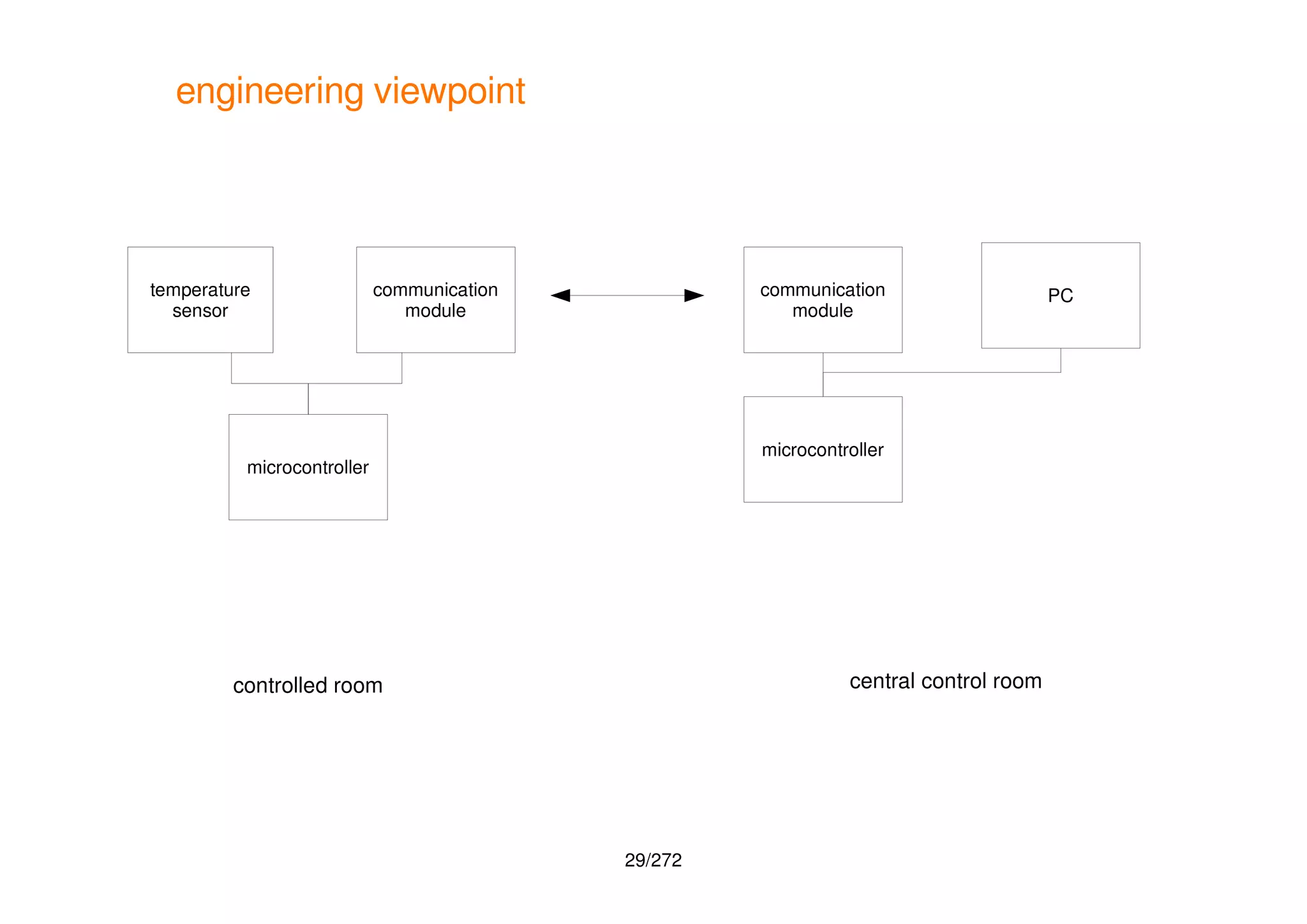
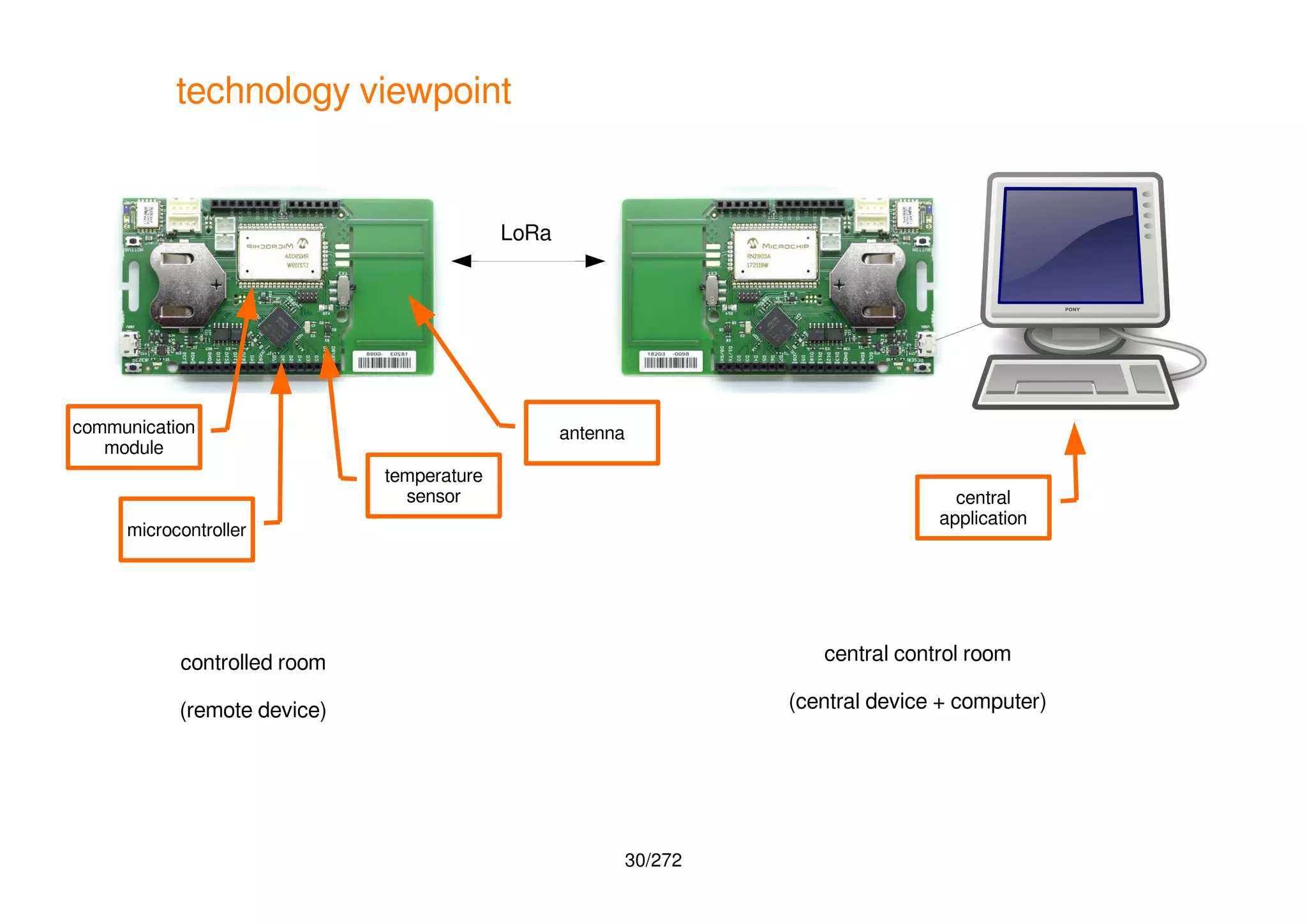
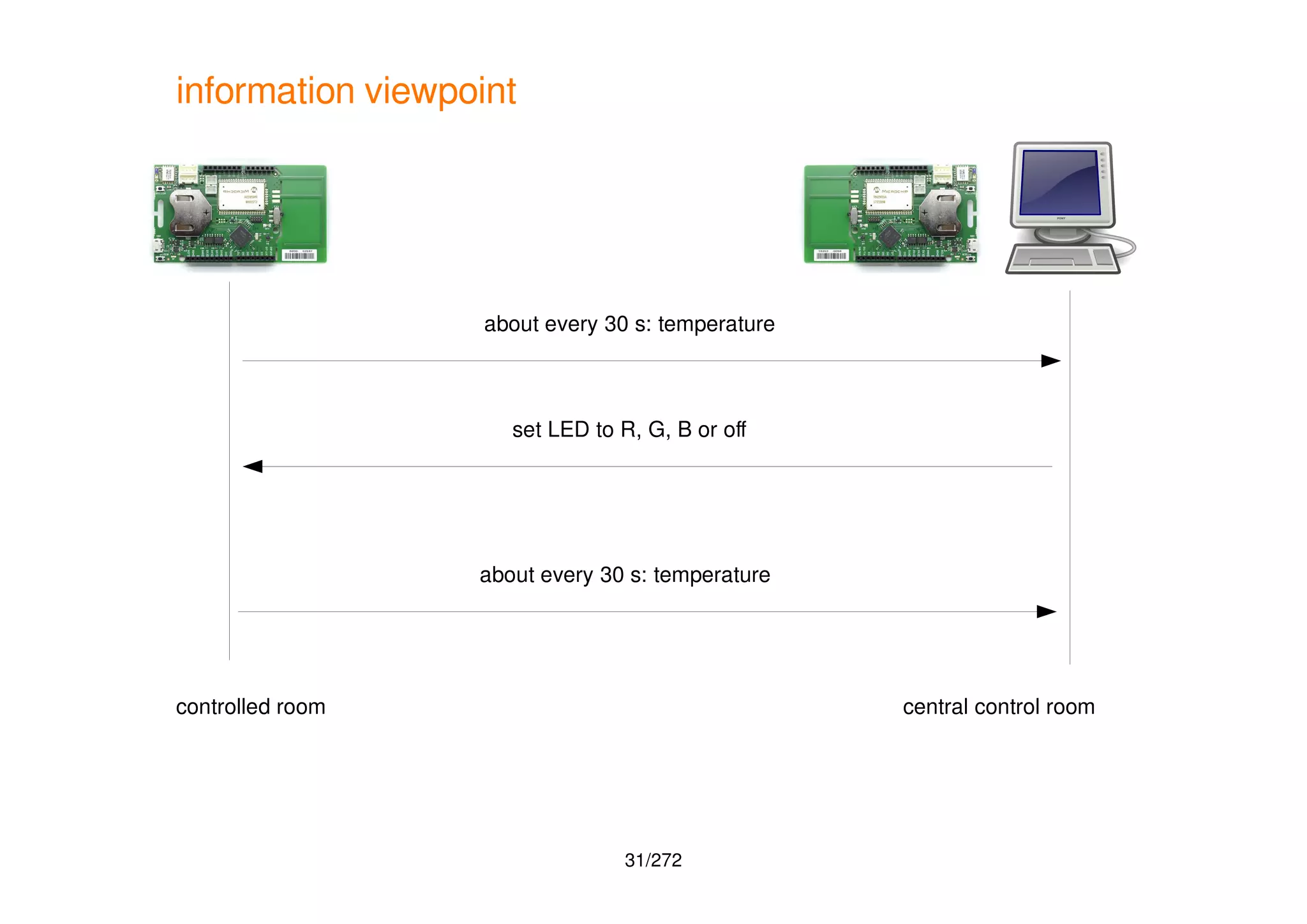
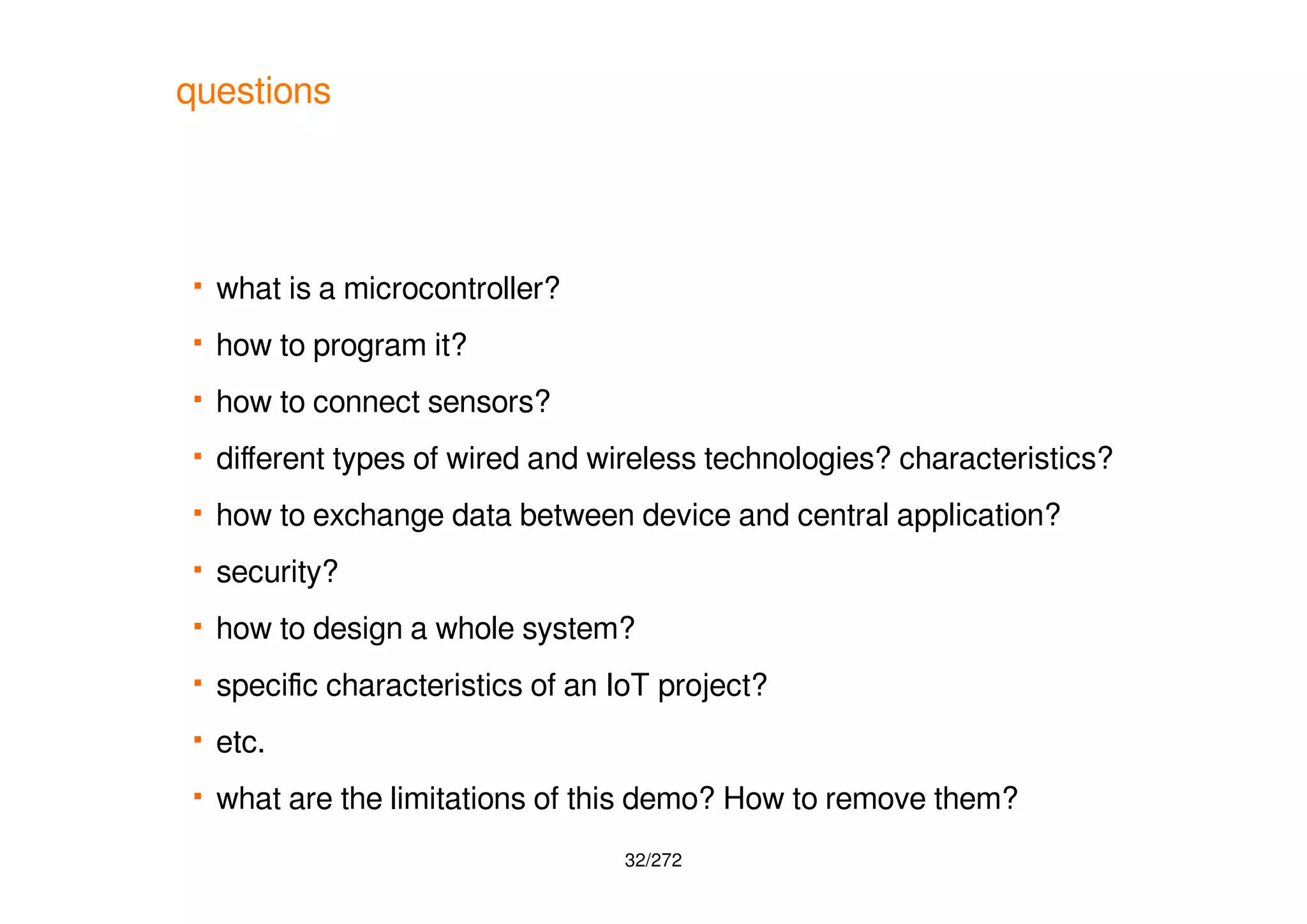
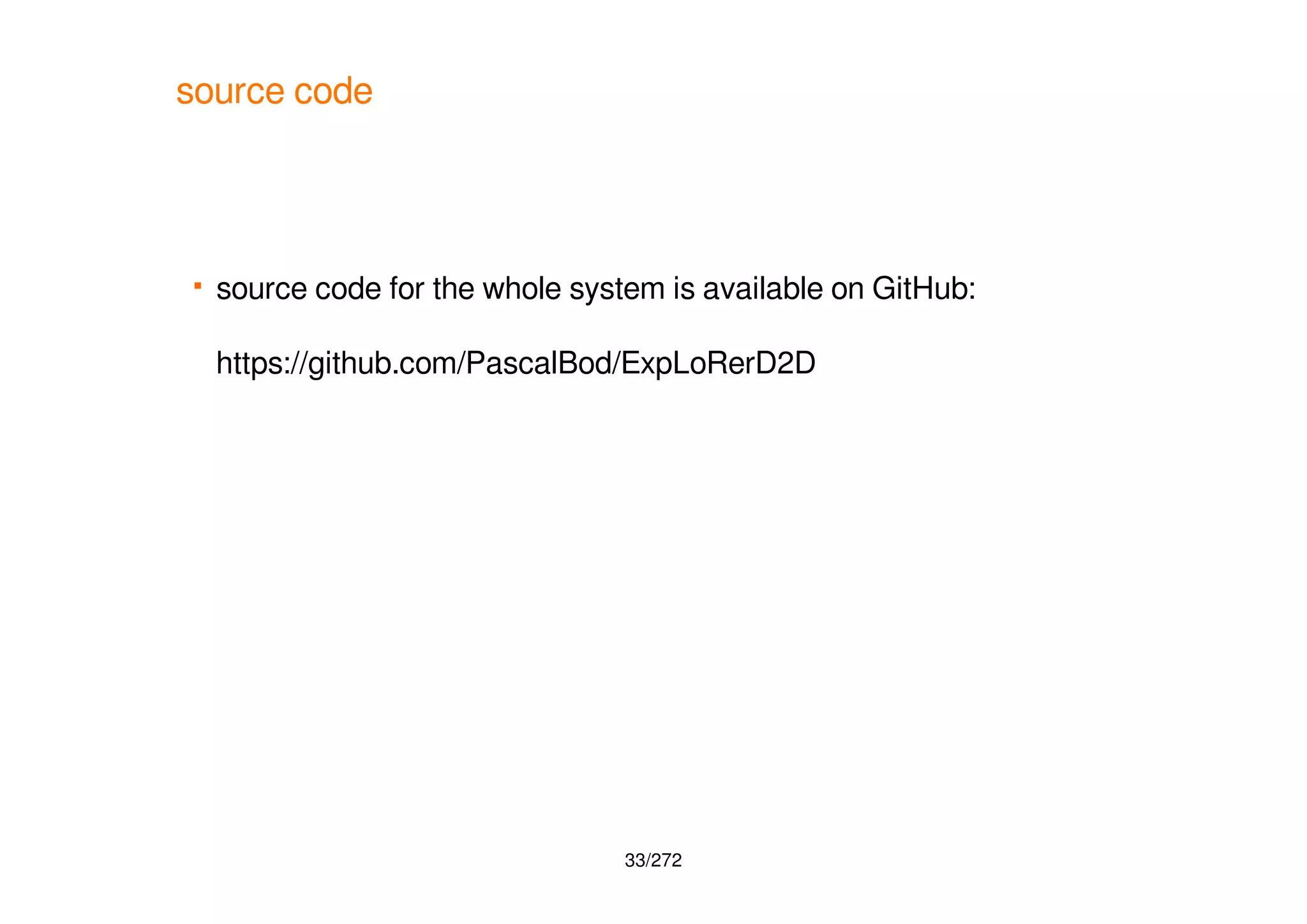
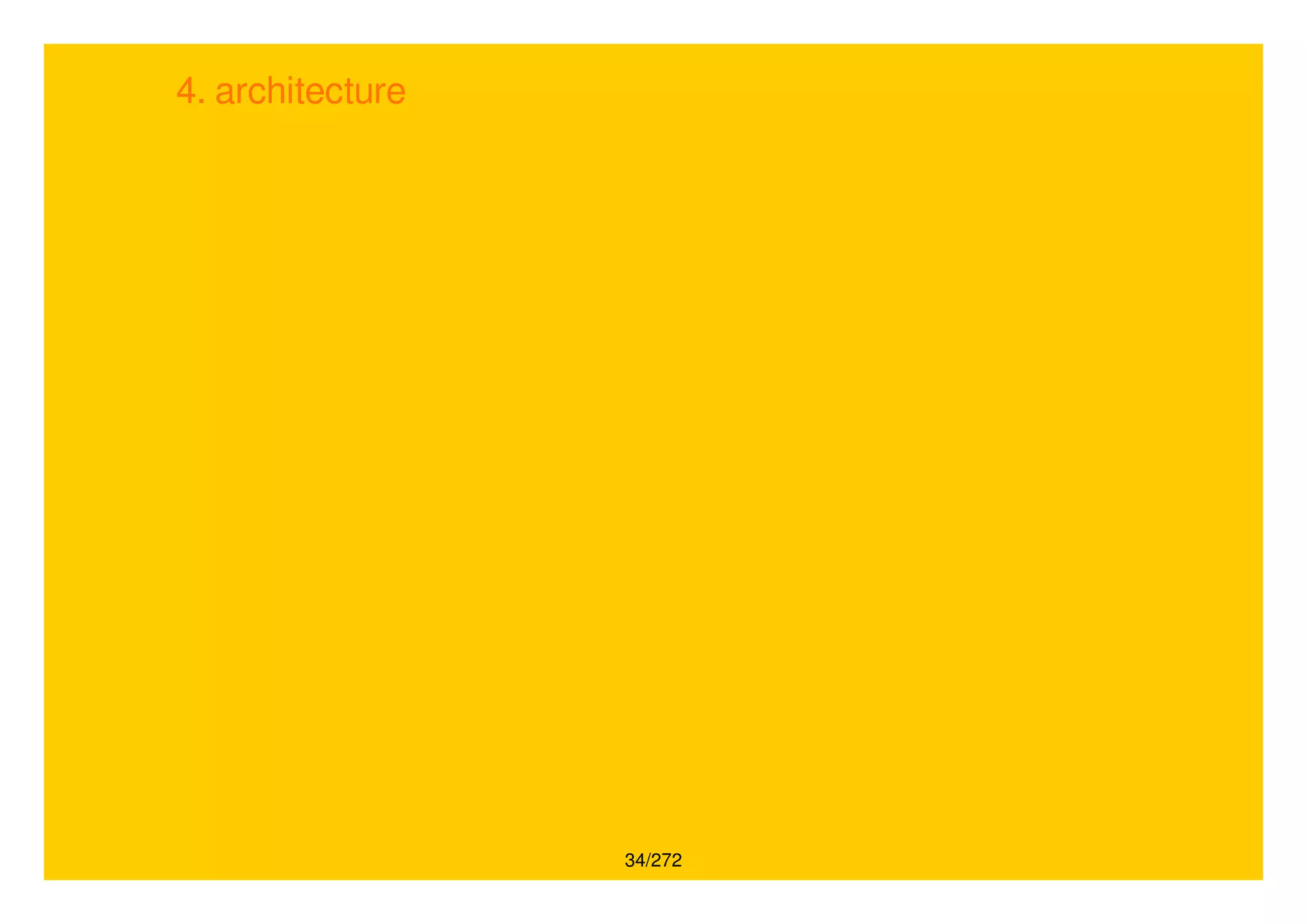
![35/272
architecture?
defnes:
– functions
– structure
– behavior
– deployment
diferent viewpoints:
– enterprise viewpoint (business requirements)
– information viewpoint (information semantics and processing)
– computational viewpoint (functions, interfaces)
– engineering viewpoint (distribution of processing)
– technology viewpoint (technologies)
[RM-ODP: Reference Model for Open Distributed Processing]
[Arc01]](https://image.slidesharecdn.com/20180217-iotandconnecteddevices-180217095428/75/IoT-and-connected-devices-an-overview-35-2048.jpg)
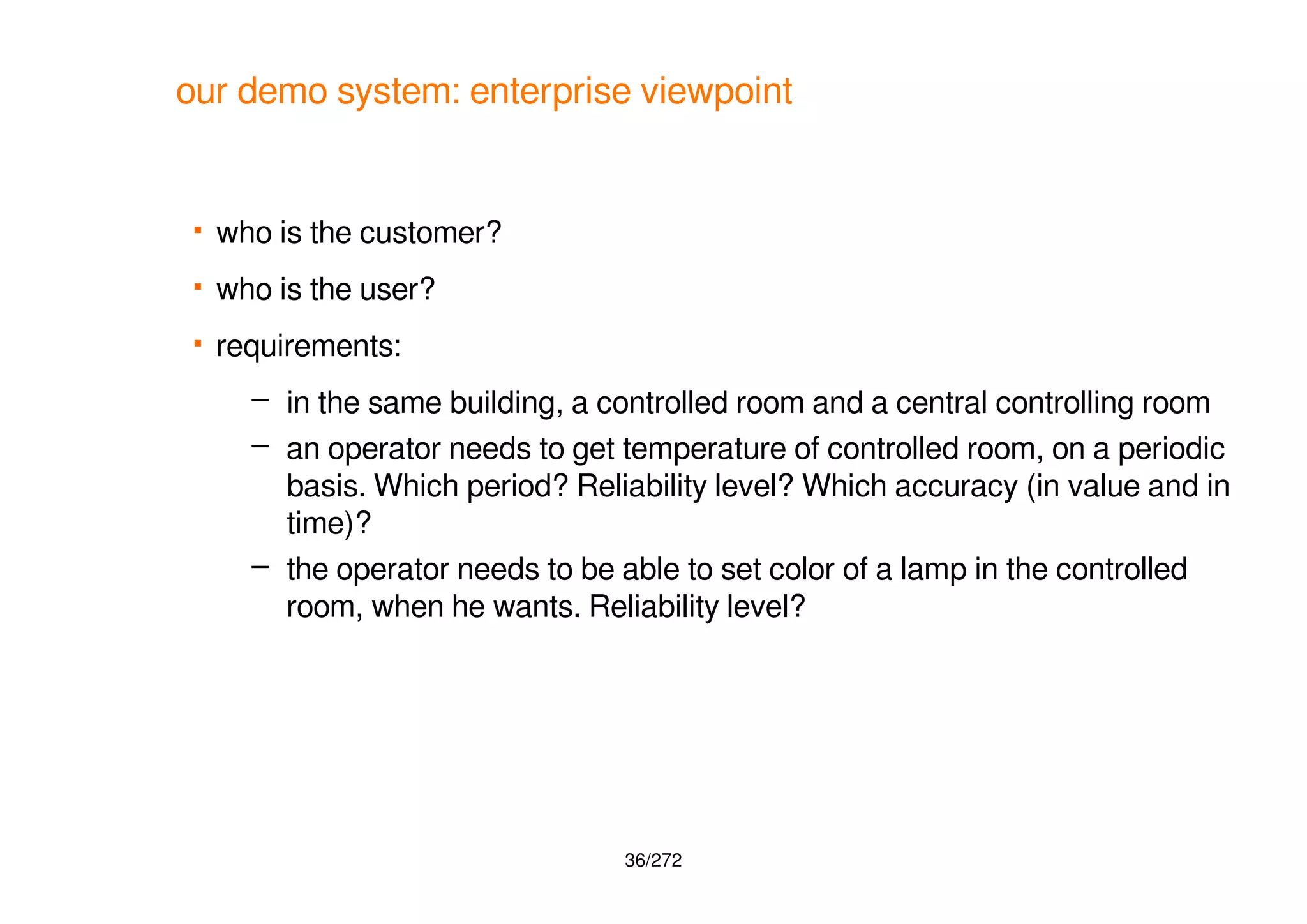
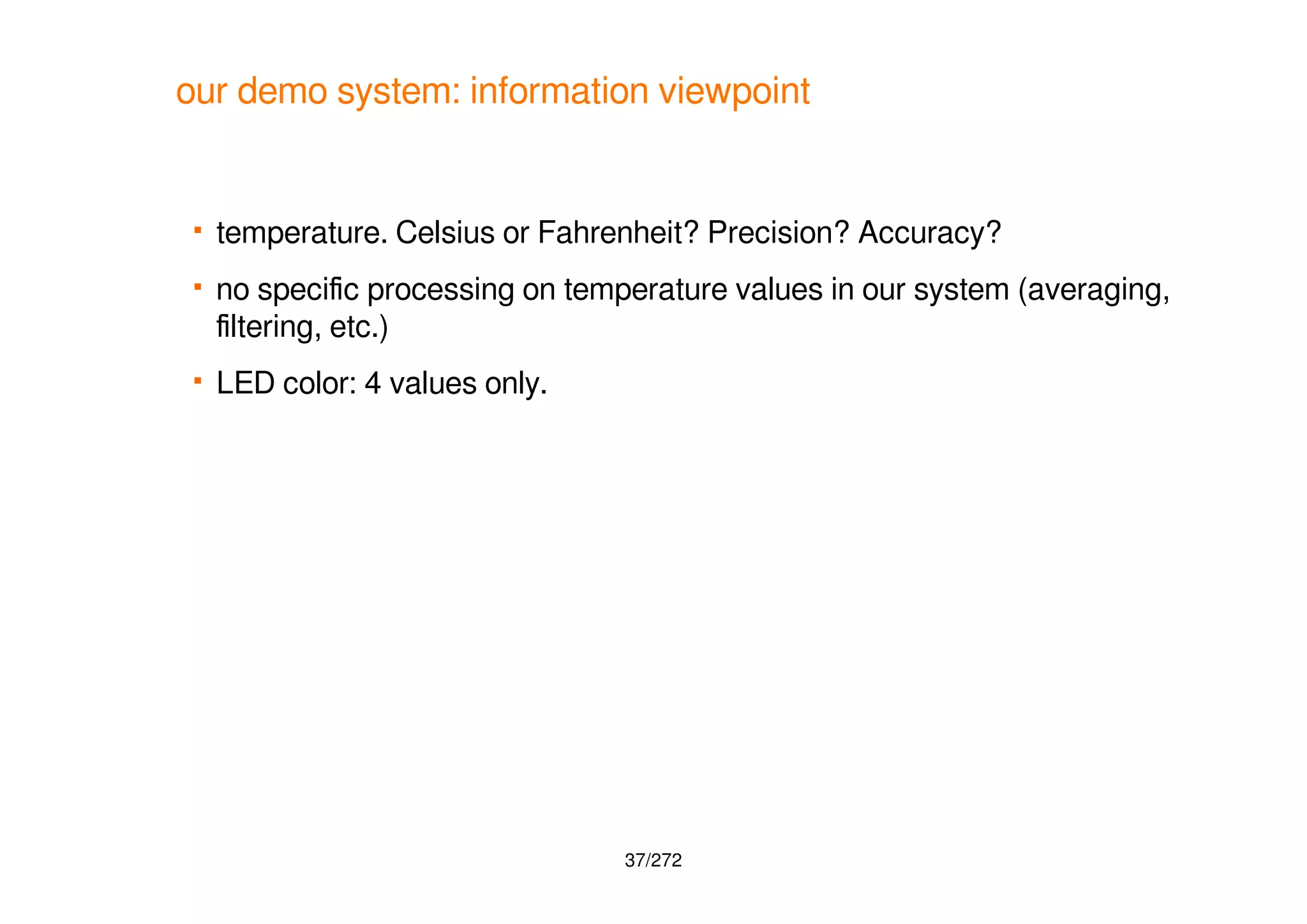
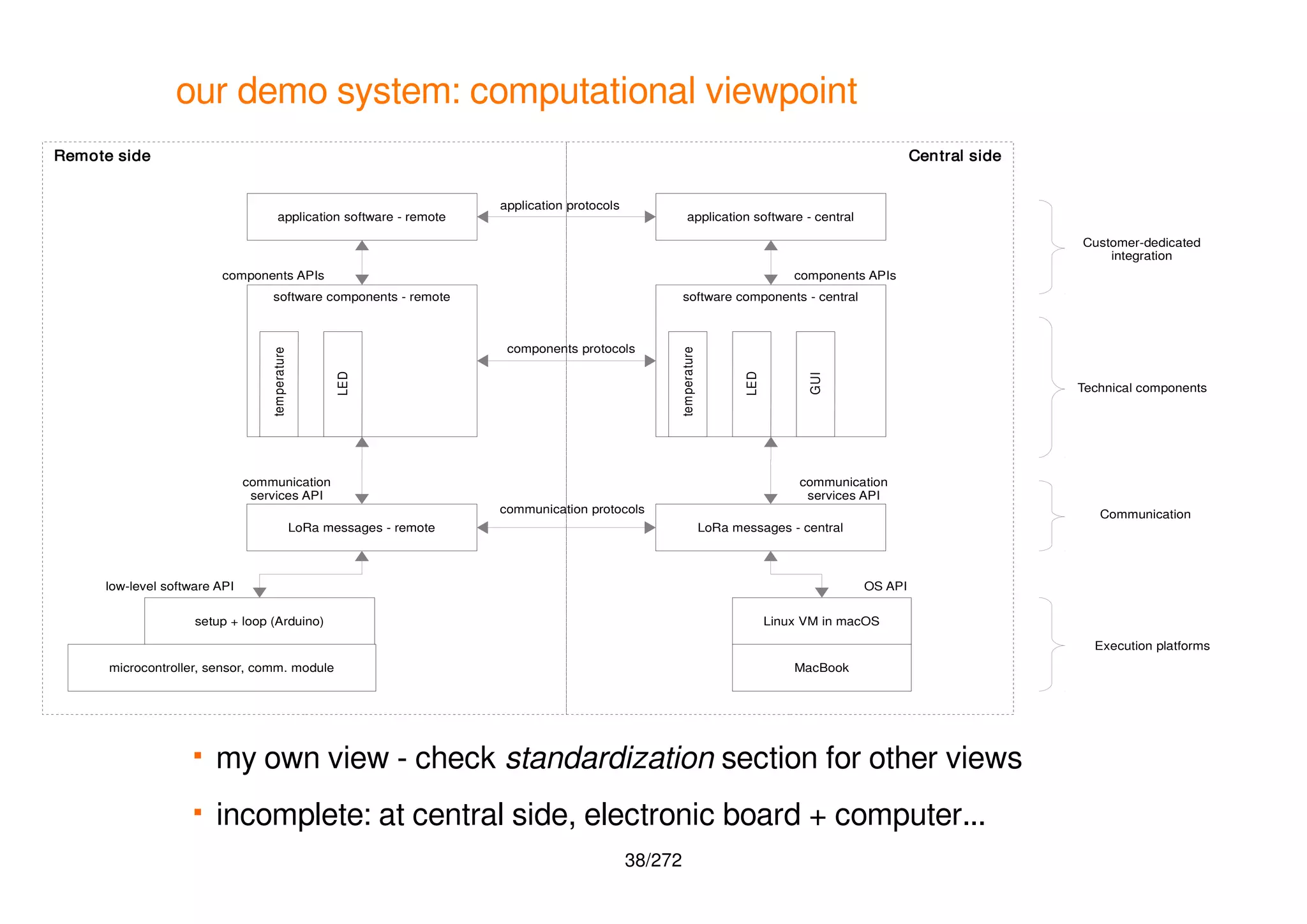
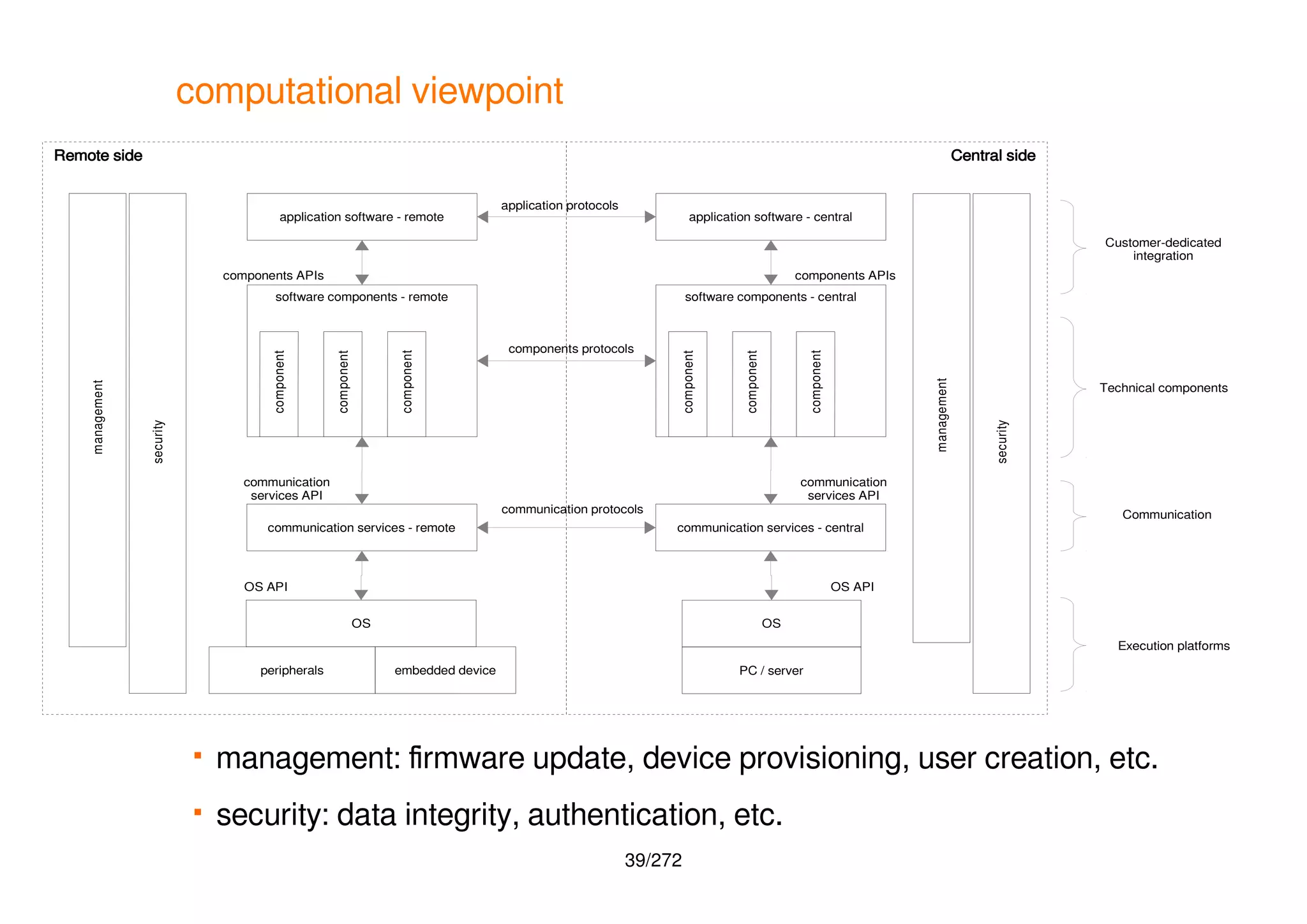
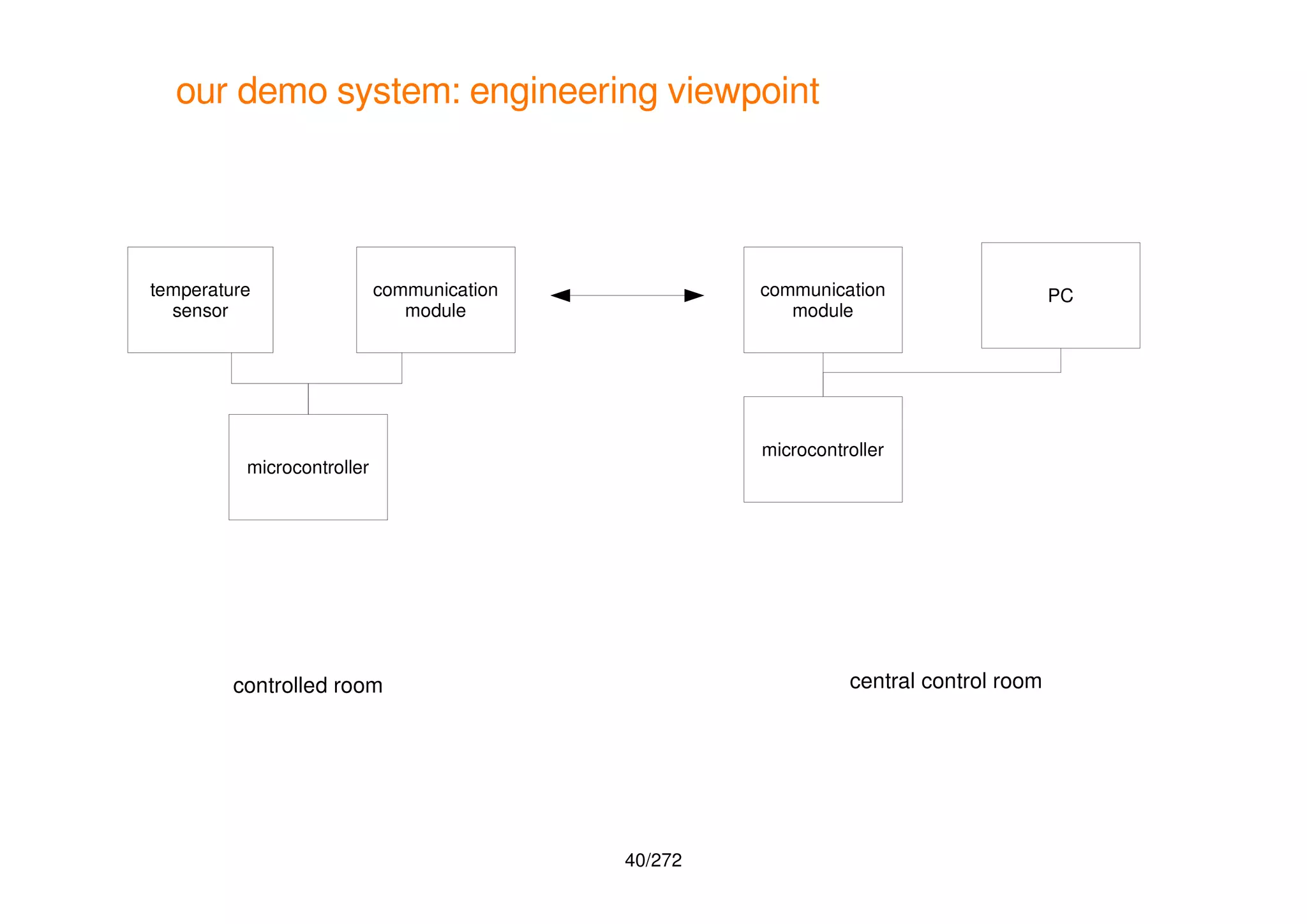
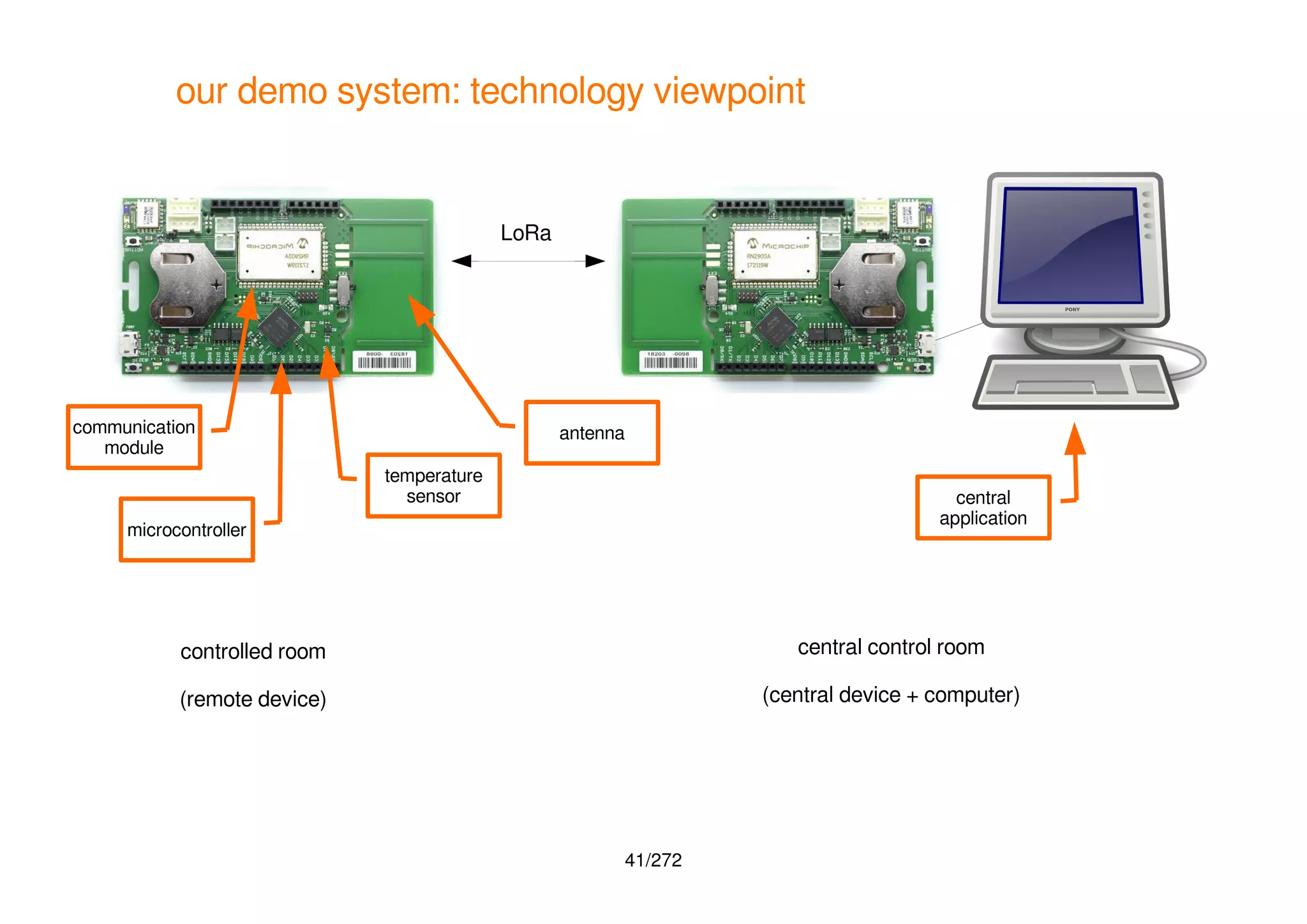
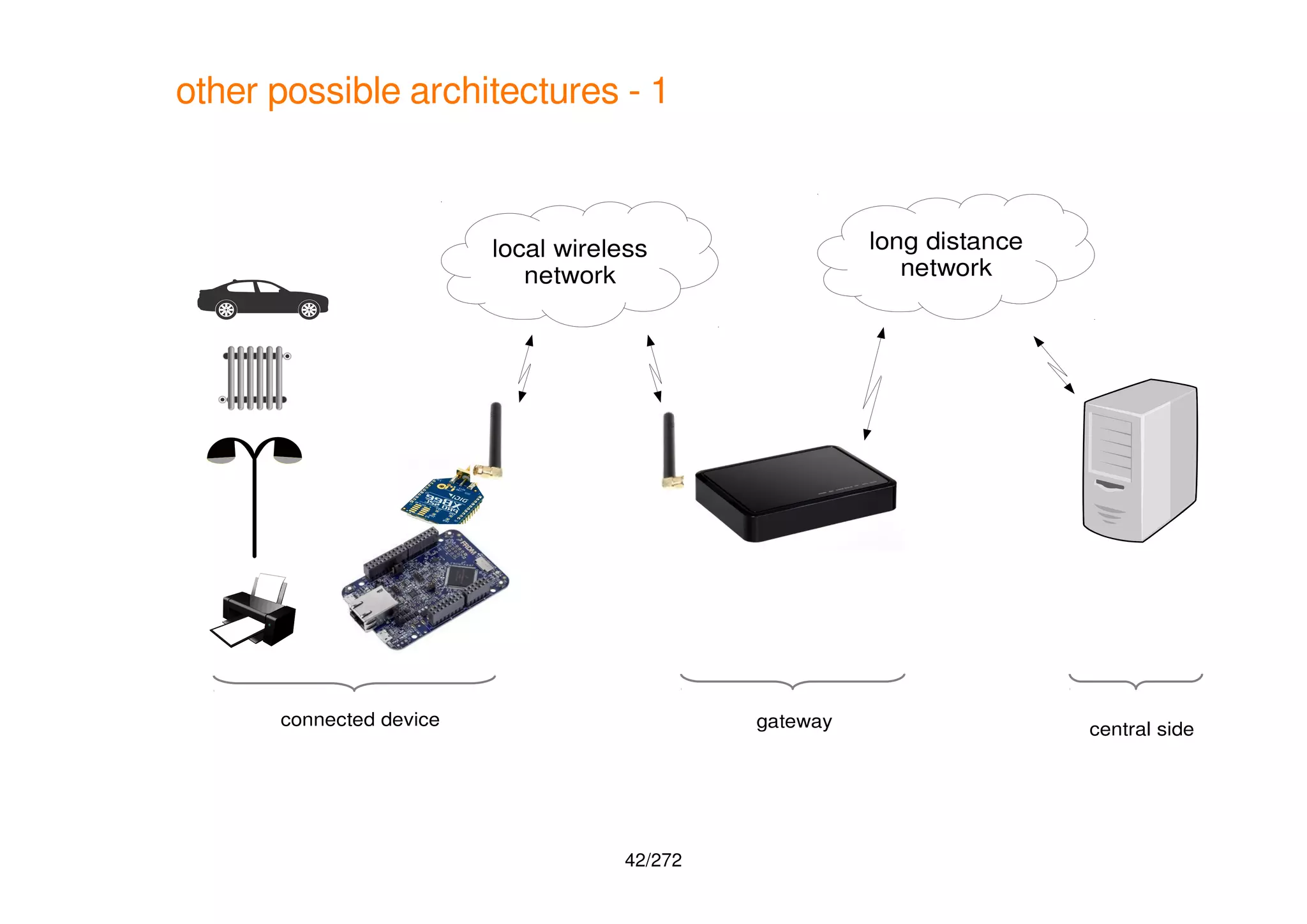

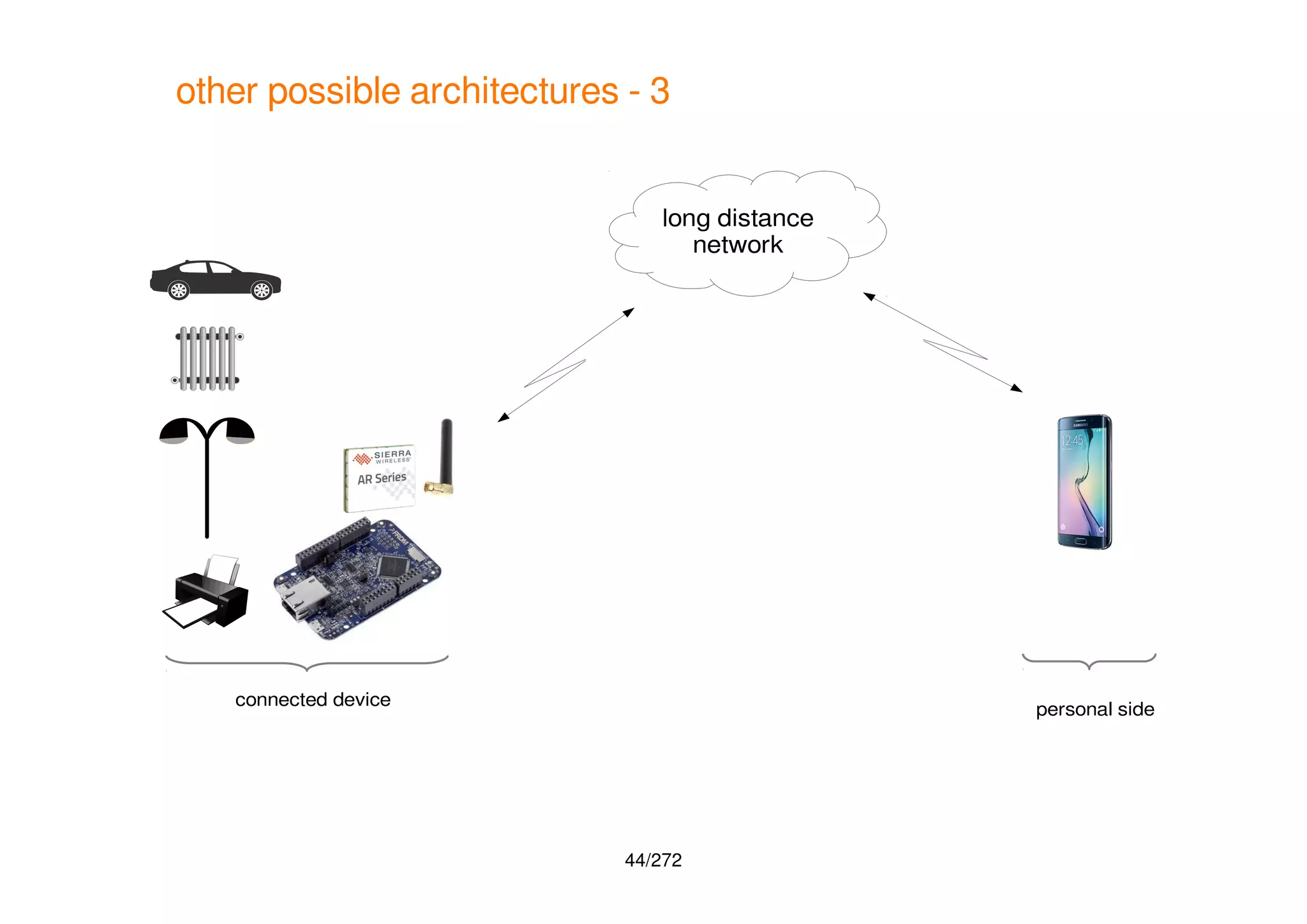
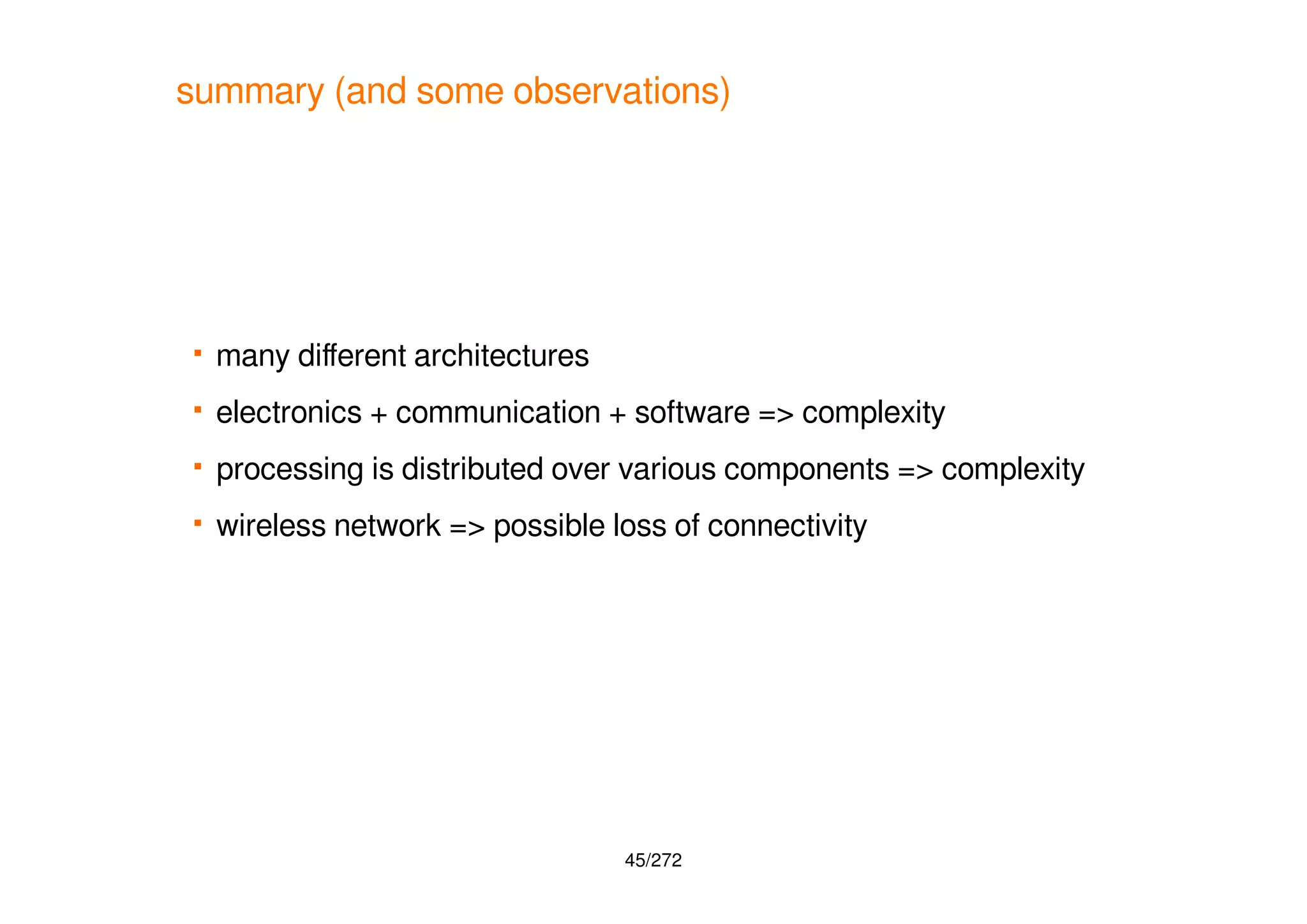


![48/272
our demo system
communication
module
microcontroller
temperature
sensor
antenna
board: €78,65
[Dev05]](https://image.slidesharecdn.com/20180217-iotandconnecteddevices-180217095428/75/IoT-and-connected-devices-an-overview-48-2048.jpg)
![49/272
another example
[Dev01] [Dev02]
[Dev03] [Dev04]
microcontr. board: $12.50
GSM/GPS module: $49.95
GSM antenna: $2.95
GPS antenna: $3.95
analog
inputs
digital I/O
microcontroller
+ memory
location
+ communication
module](https://image.slidesharecdn.com/20180217-iotandconnecteddevices-180217095428/75/IoT-and-connected-devices-an-overview-49-2048.jpg)
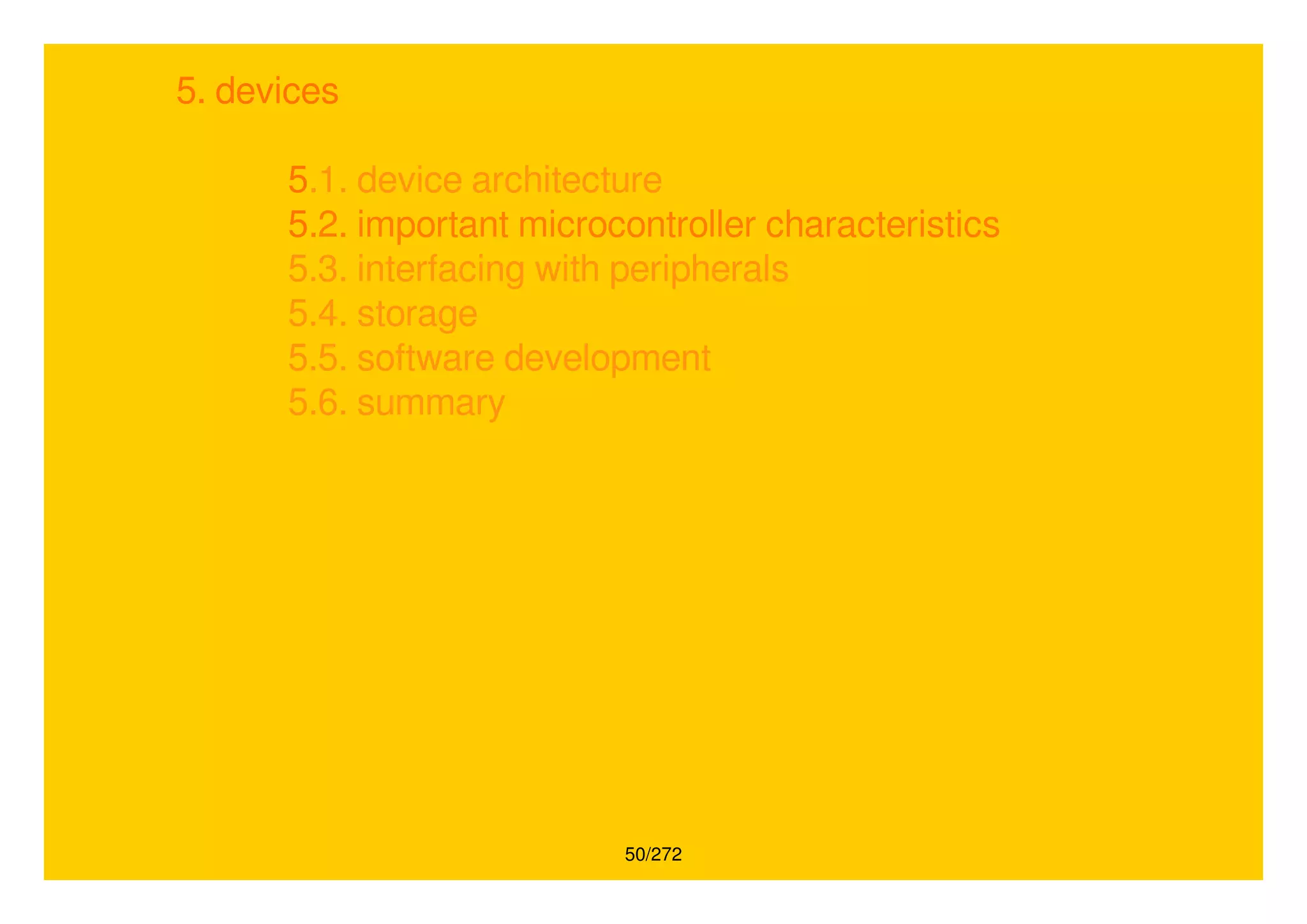
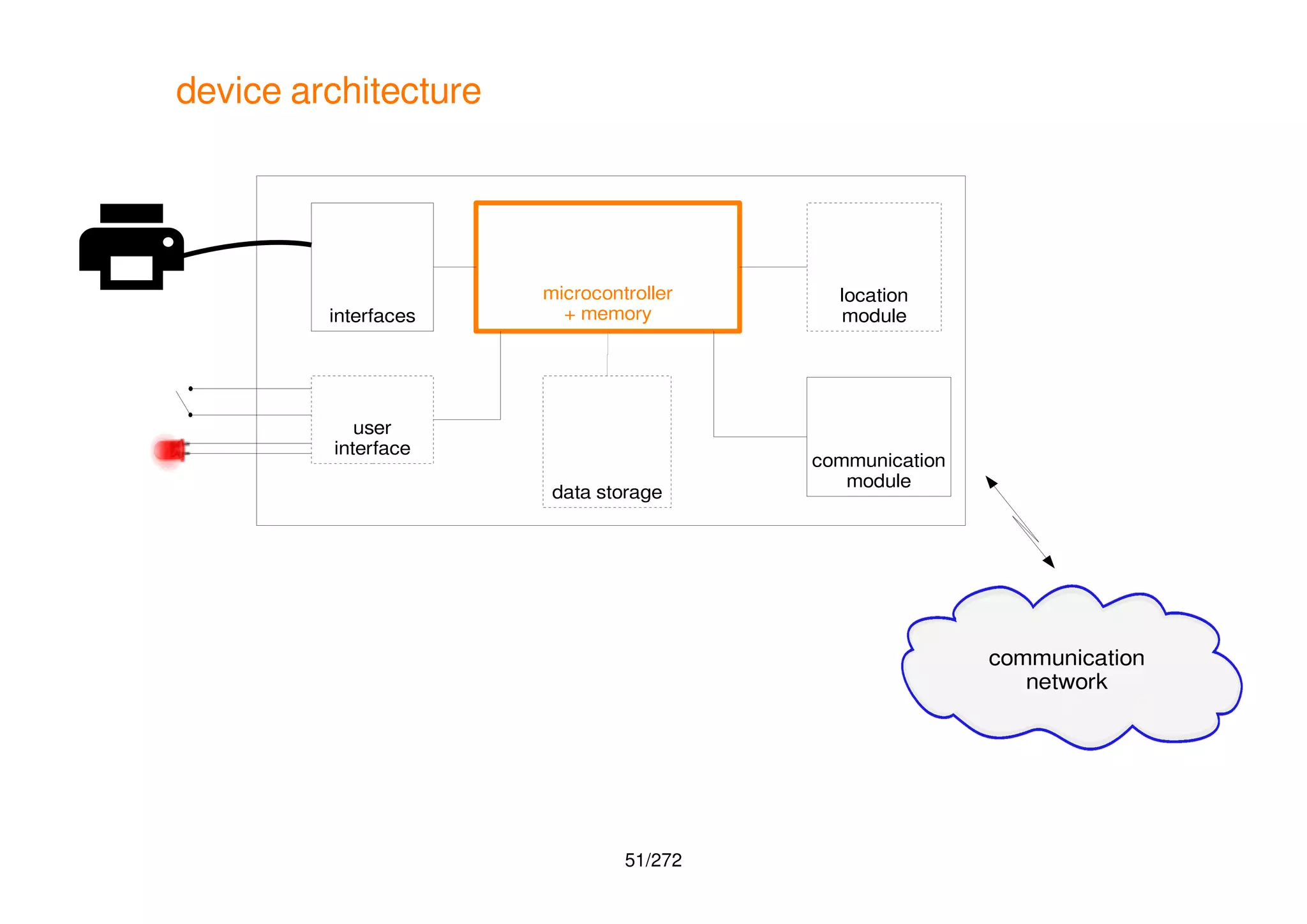
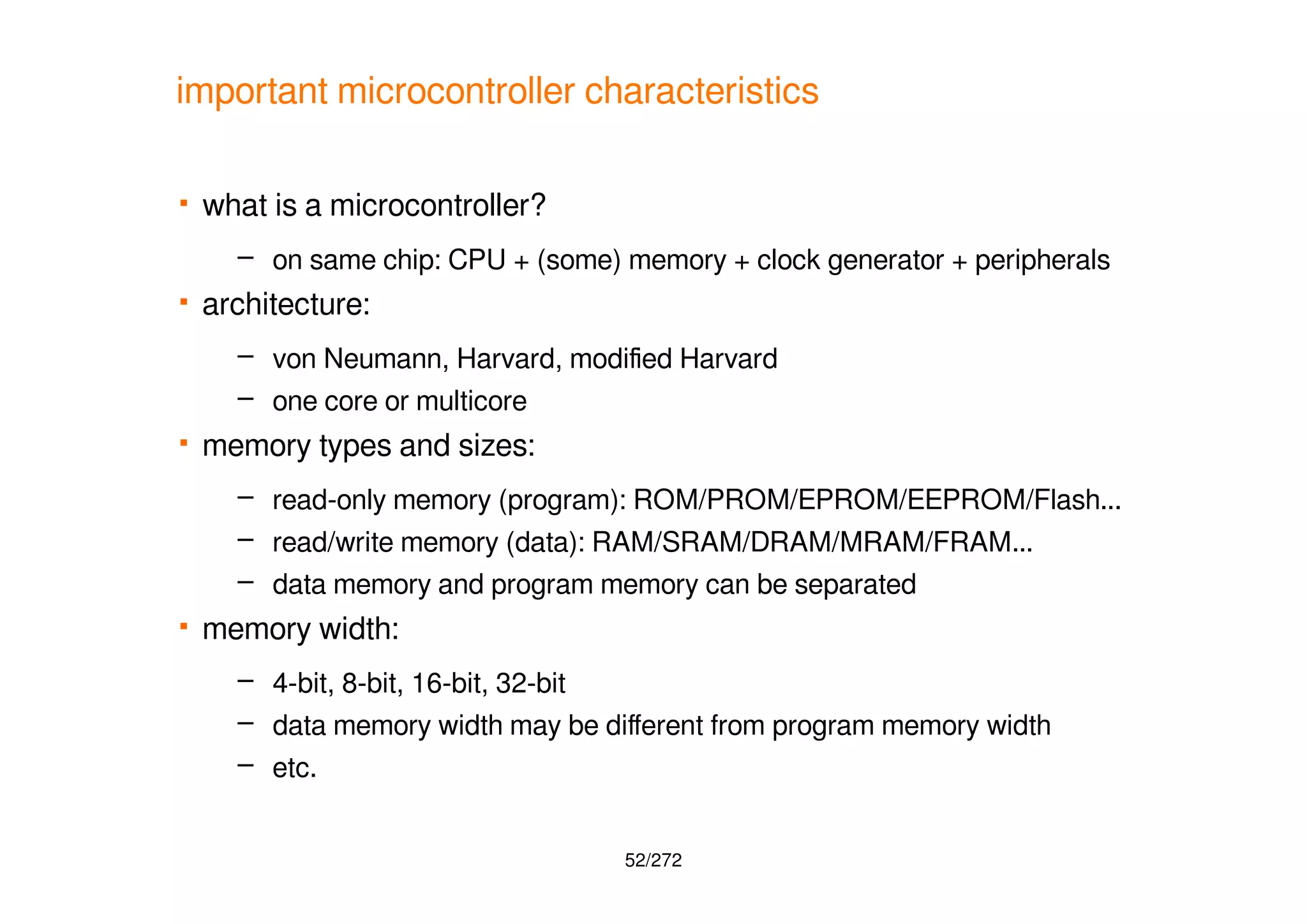
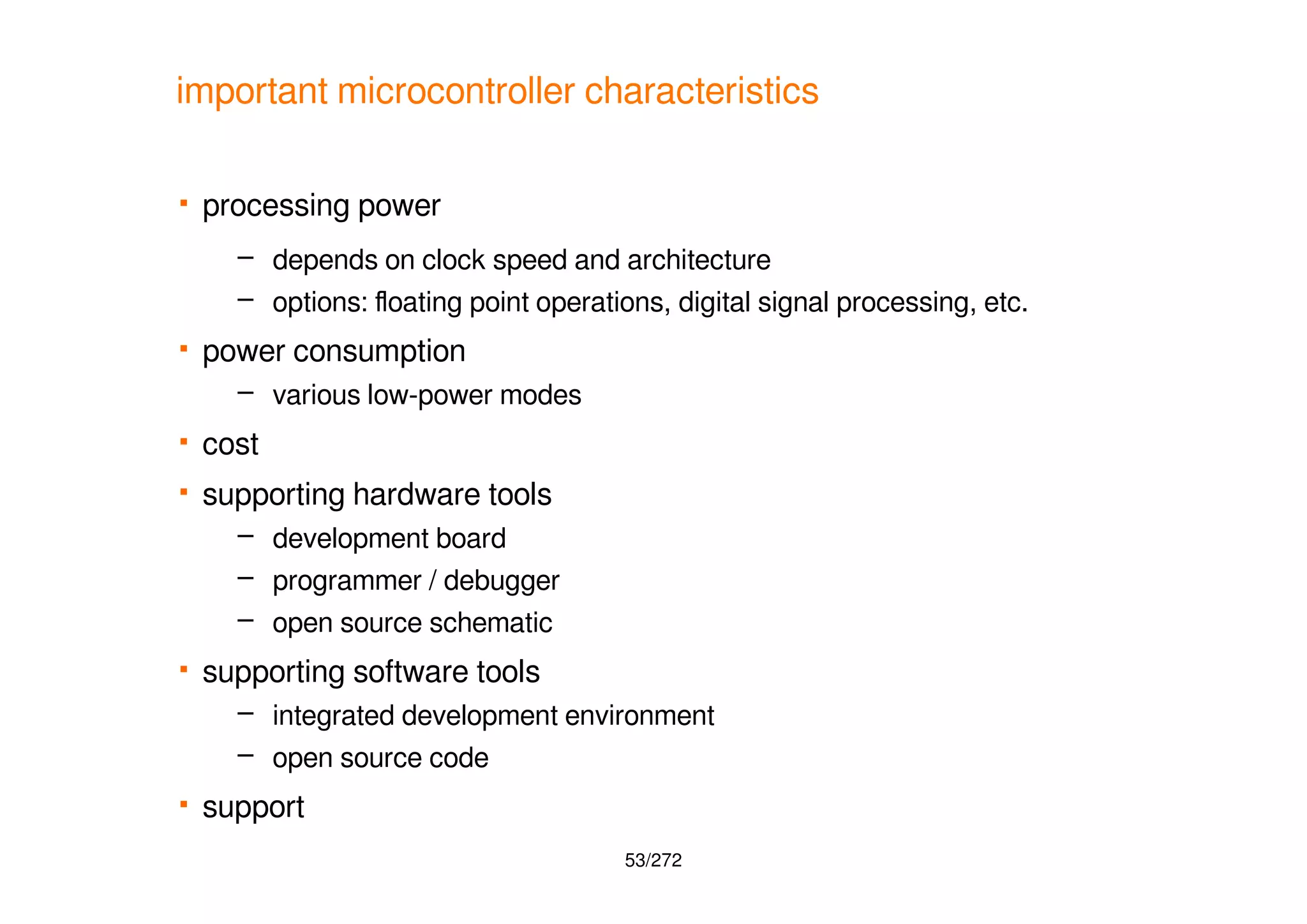
![54/272
legacy microcontroller - example
Freescale 68HC11E1
– 8 bits
– 3 MHz
– RAM: 512 bytes - EEPROM: 512 bytes
– 38 General Purpose I/O (GPIO)
– 1 x Asynchronous Serial Communications Interface (SCI)
– 1 x Synchronous Serial Peripheral Interface (SPI)
– 8 x 8-Bit Analog-to-Digital Converter (ADC)
– 16-bit Timer System
– address / data bus for external memory
– bootstrap mode
– price: ⋍ US$7 (10 000)
[Mic01]](https://image.slidesharecdn.com/20180217-iotandconnecteddevices-180217095428/75/IoT-and-connected-devices-an-overview-54-2048.jpg)
![55/272
recent microcontroller - example 1
Microchip PIC16F1705
– 8-bit data memory, 14-bit program memory
– 32 MHz
– RAM: 1 KB - Flash: 14 KB
– 2 x Capture / Compare / Pulse Width Modulation
– 1 x Universal Asynchronous Receiver Transmitter (UART)
– 1 x SCI - 1 x Inter Integrated Circuit (I2C)
– 8 x 10-bit ADC
– timers: 4 x 8-bit, 1 x 16-bit
– price: ⋍ US$0.88 (10 000)
[Mic02]](https://image.slidesharecdn.com/20180217-iotandconnecteddevices-180217095428/75/IoT-and-connected-devices-an-overview-55-2048.jpg)
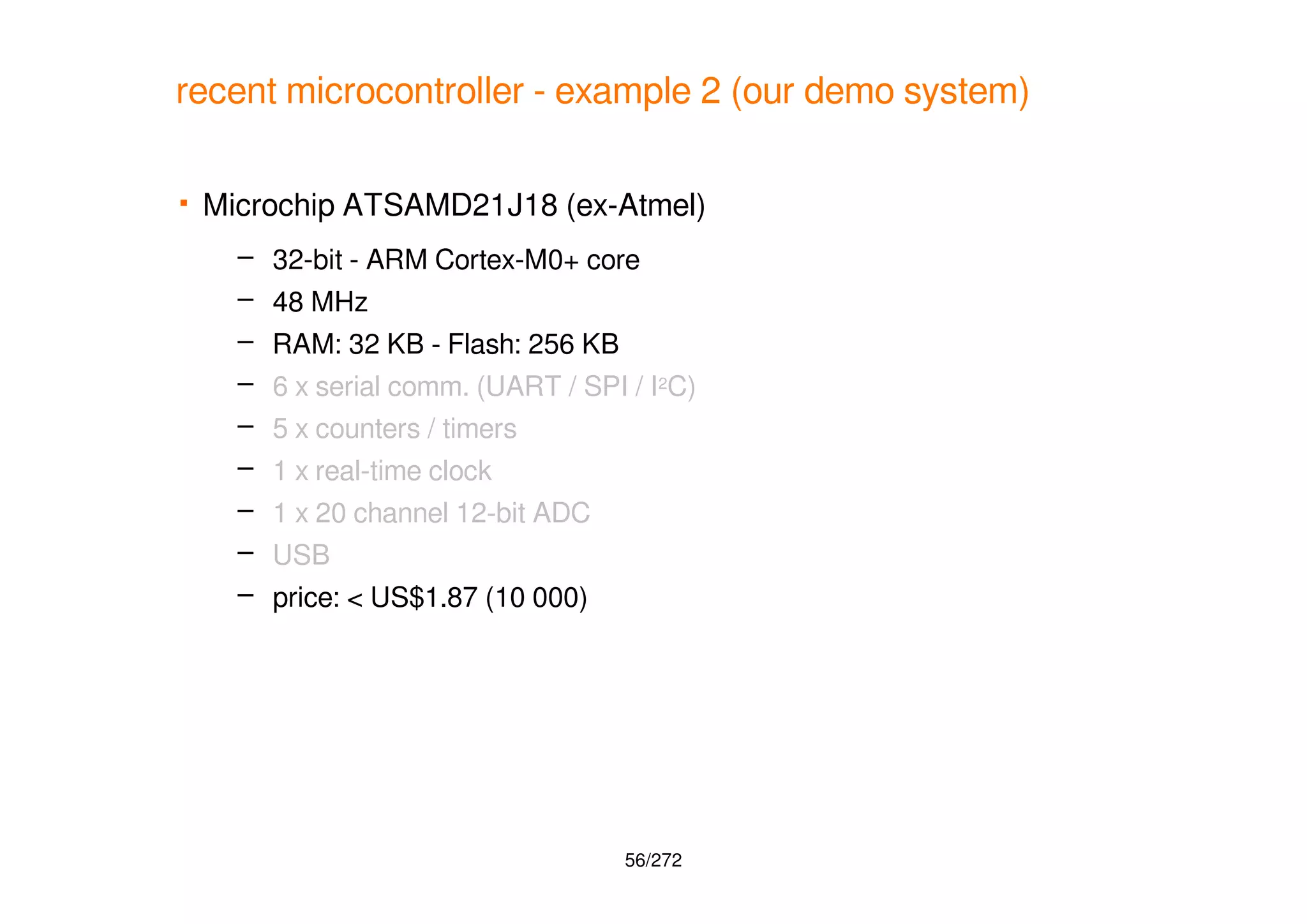
![57/272
recent microcontroller - example 3
NXP LPC1837JET256
– 32 bits - ARM Cortex-M3 core
– 3-stage pipeline, modifed Harvard architecture
– 180 MHz
– RAM: 136 KB - Flash: 1024 KB
– 6 x PWM
– 4 x UART - 2 x I2C - 2 x SPI
– 2 x CAN - 2 x USB - 1 x Ethernet
– 8 x 10-bit ADC
– 4 x 32-bit timers
– price: ⋍ US$8 (10 000)
[Mic03]](https://image.slidesharecdn.com/20180217-iotandconnecteddevices-180217095428/75/IoT-and-connected-devices-an-overview-57-2048.jpg)

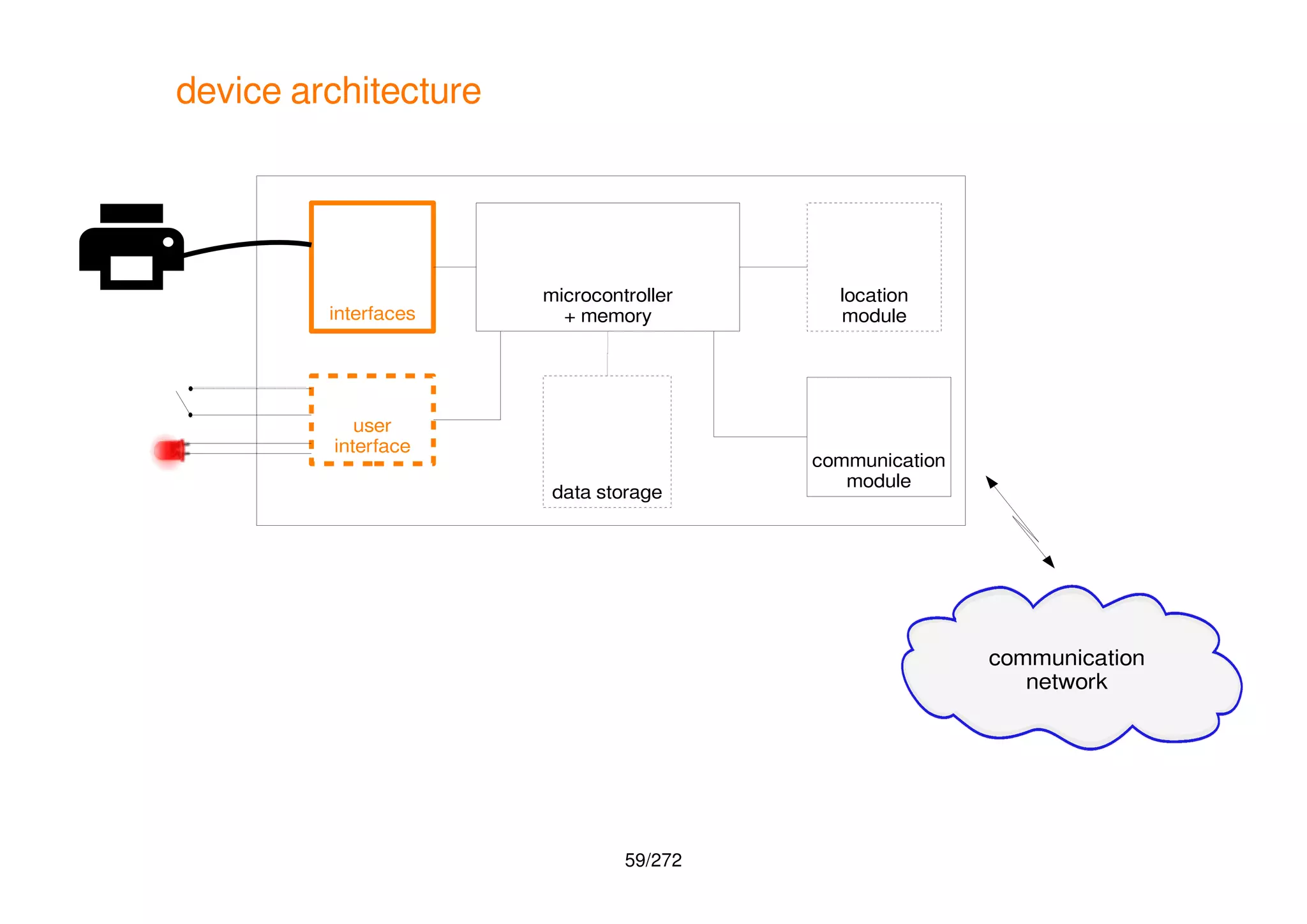

![61/272
interfacing with peripherals - GPIO
general purpose digital input/output (GPIO):
– read or set a voltage (high / low)
[Per01]](https://image.slidesharecdn.com/20180217-iotandconnecteddevices-180217095428/75/IoT-and-connected-devices-an-overview-61-2048.jpg)
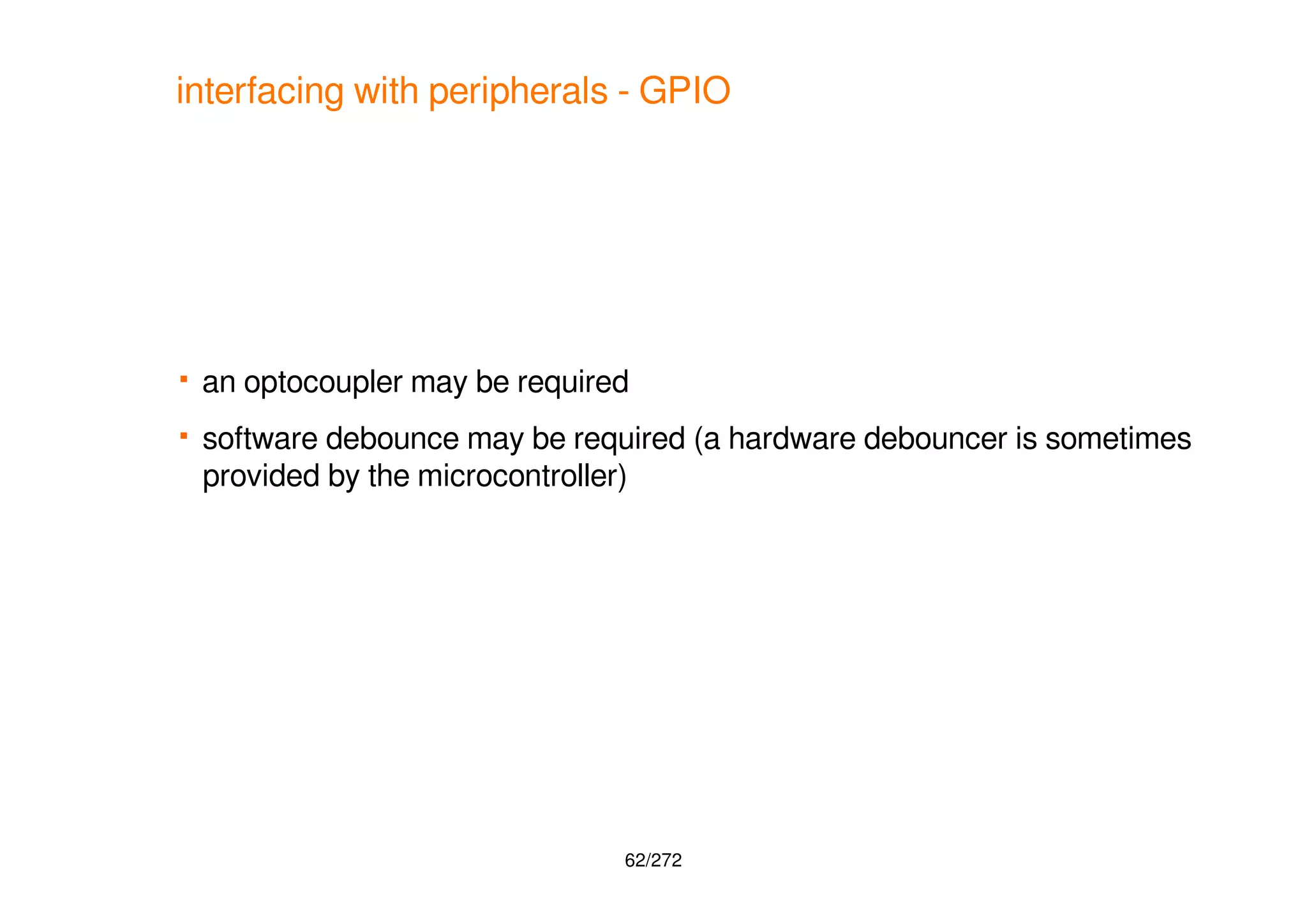
![63/272
interfacing with peripherals - ADC / DAC
important parameters: resolution and sampling rate
analog to digital converter (ADC):
– converts an analog voltage to a digital value
– signal conditioning may be required
– some microcontrollers provide integrated Op Amp (e.g. PIC16F527)
digital to analog converter (DAC):
– converts a digital value to an analog voltage
[Per02]](https://image.slidesharecdn.com/20180217-iotandconnecteddevices-180217095428/75/IoT-and-connected-devices-an-overview-63-2048.jpg)
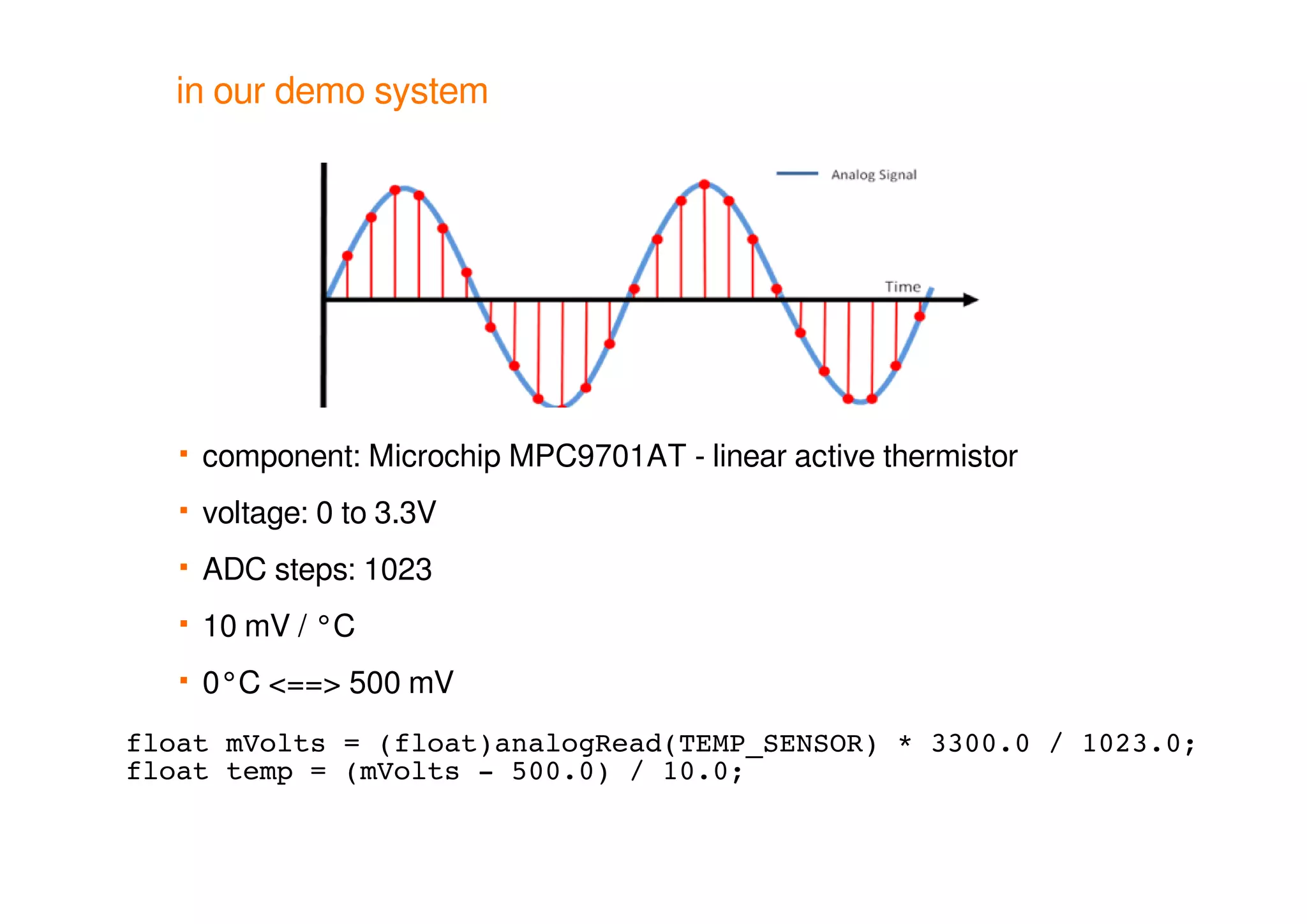
![65/272
interfacing with peripherals - serial interface
V.24 / RS-232
– minimum 3 wires: transmitted data, received data, signal ground
– asynchronous communication (start bit, stop bit)
– additional wires for control signals (request to send, ready for sending, data
set ready, calling indicator, etc.)
– voltage level:
– V.28:
– bit to 1: -15 V < voltage < -3 V
– bit to 0: +3 V > voltage > +15 V
– distance: < 15 m
– connectors: DB-25, DB-9
– USA: RS-232 (TIA-232)
[Per03]](https://image.slidesharecdn.com/20180217-iotandconnecteddevices-180217095428/75/IoT-and-connected-devices-an-overview-65-2048.jpg)

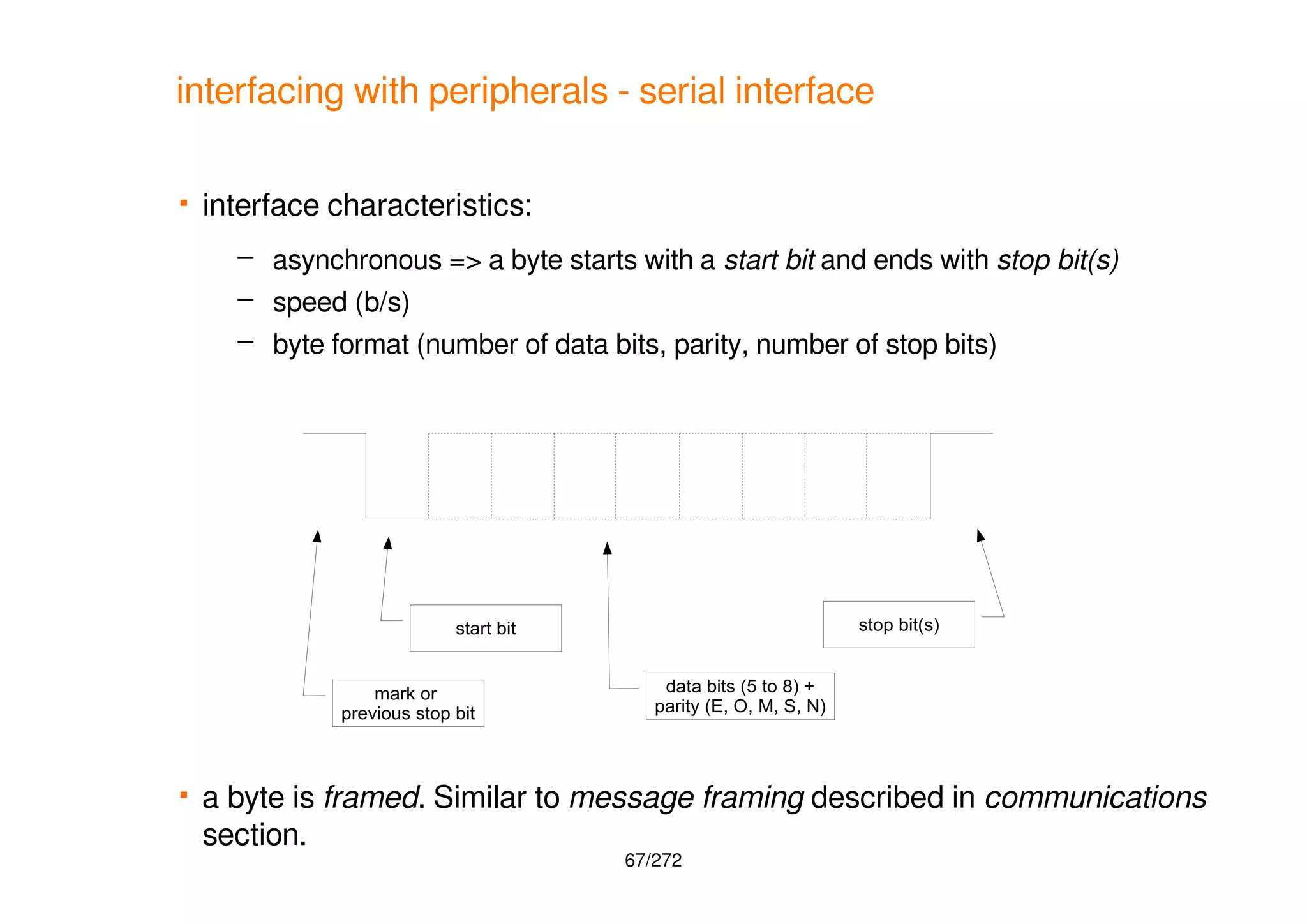

![69/272
interfacing with peripherals - SPI
Serial Peripheral Interface
– defned by Motorola (then Freescale, then NXP Semiconductors, now
Qualcomm) (1985?)
MOSI: Master Output, Slave Input SCLK: Serial Clock
MISO: Master Input, Slave Output SS: Slave Select
[Per04] [Per05]](https://image.slidesharecdn.com/20180217-iotandconnecteddevices-180217095428/75/IoT-and-connected-devices-an-overview-69-2048.jpg)
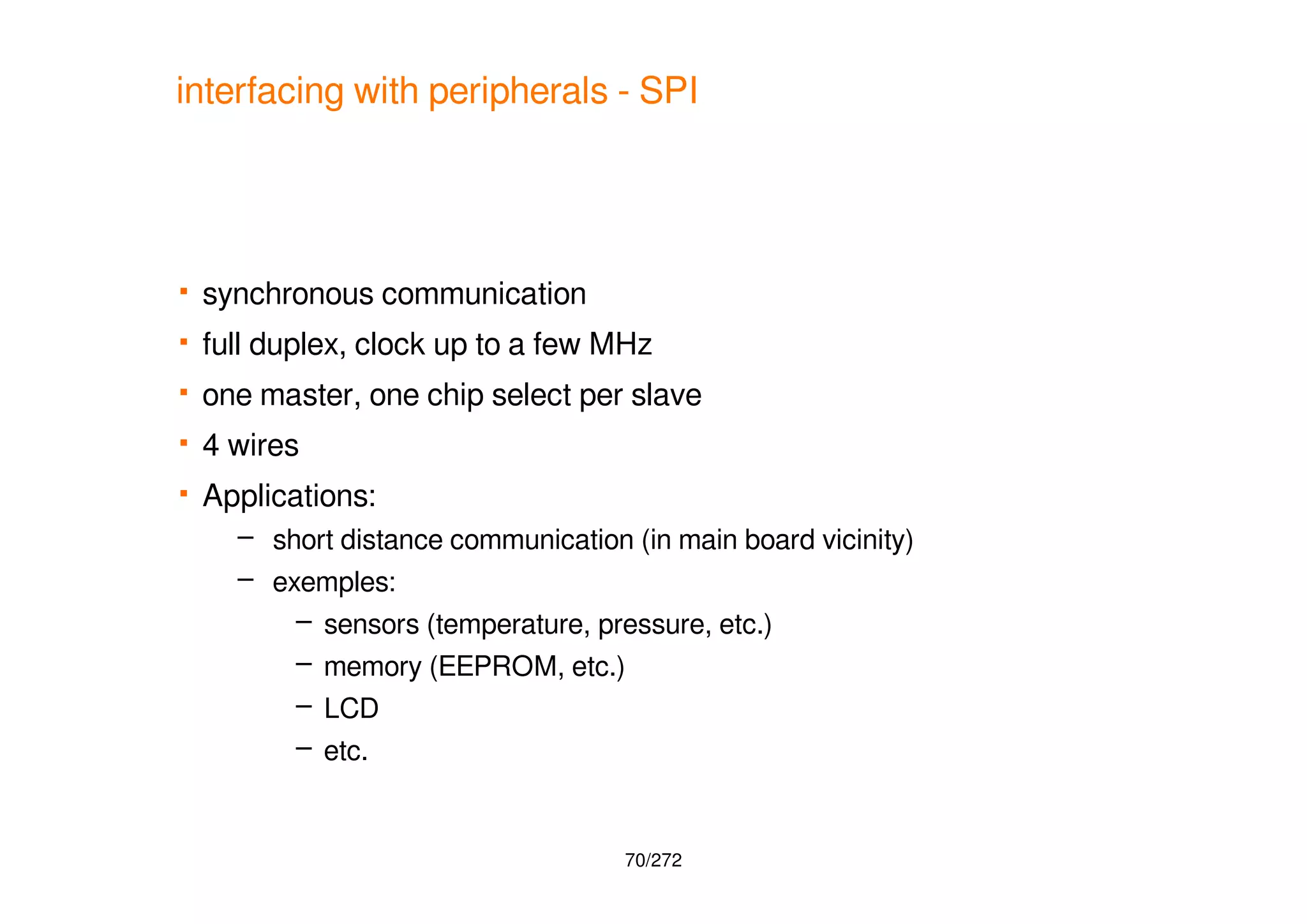
![71/272
interfacing with peripherals - I2
C
Inter-Integrated Circuit
– defned by Philips (the NXP Semincoductors now Qualcomm) (1980's)
[Per06] [Per07]](https://image.slidesharecdn.com/20180217-iotandconnecteddevices-180217095428/75/IoT-and-connected-devices-an-overview-71-2048.jpg)
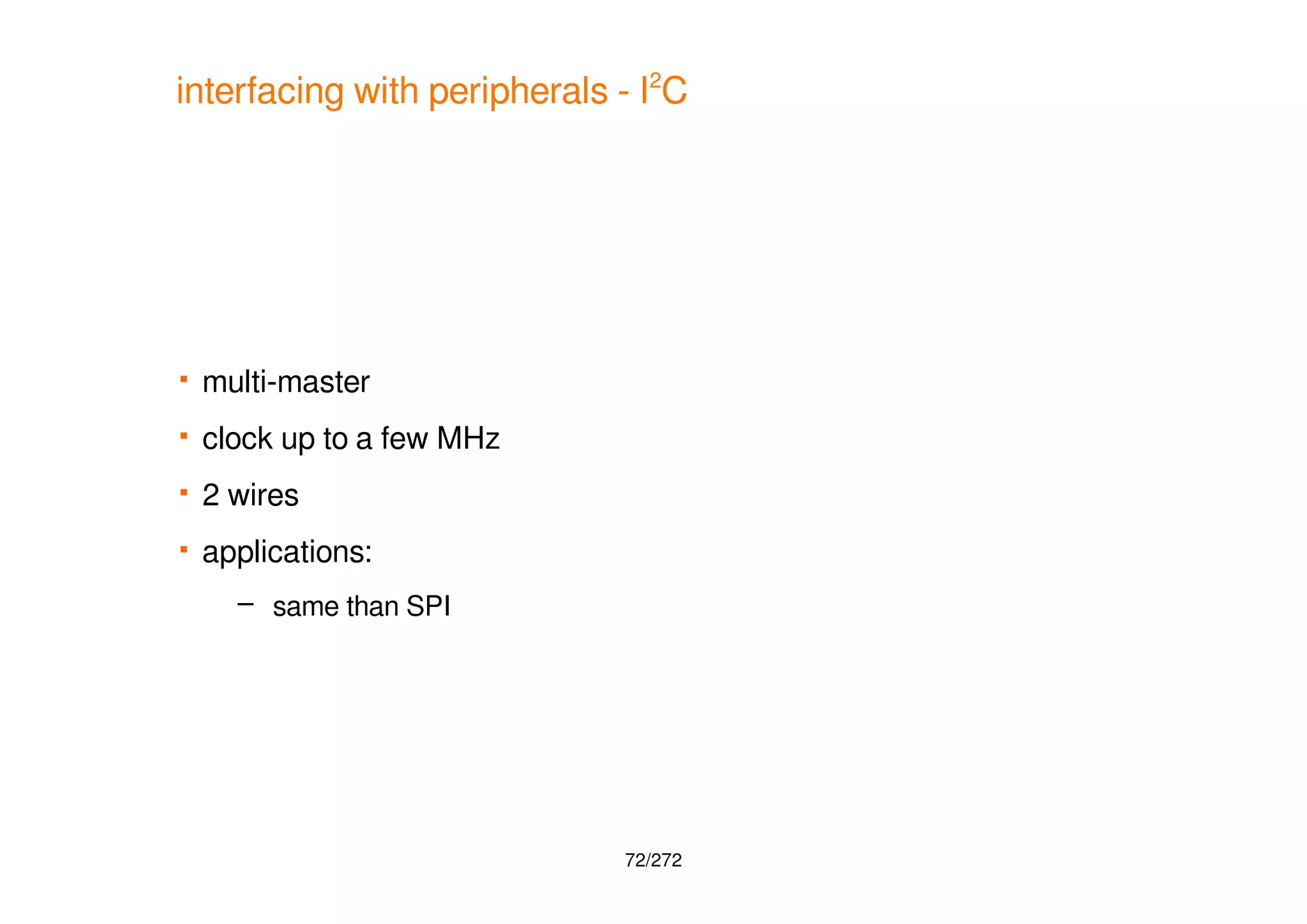
![73/272
interfacing with peripherals - CAN
Controller Area Network
– defned by Bosch (1986)
[Per08]](https://image.slidesharecdn.com/20180217-iotandconnecteddevices-180217095428/75/IoT-and-connected-devices-an-overview-73-2048.jpg)
![74/272
interfacing with peripherals - CAN
mainly for vehicles
2-wire bus
multi-master, message broadcast system with asynchronous
communication
bus access: CSMA/CD+AMP (Carrier Sense Multiple Access / Collision Detection with
Arbitration on Message Priority)
maximum speed: 1 Mb/s
distance: up to several hundreds of meters (with “low” bit rate)
[Ser03]](https://image.slidesharecdn.com/20180217-iotandconnecteddevices-180217095428/75/IoT-and-connected-devices-an-overview-74-2048.jpg)
![75/272
interfacing with peripherals - Bluetooth
Bluetooth:
– designed in 1994 by Ericsson
– originally: to replace RS-232 cables
– range: less than 100 m
– Serial Port Profle (SPP). Many other profles (audio, fle, telephony, etc.)
Bluetooth Low Energy (BLE - 4.0):
– designed for very low power operation
– optimized for data transfer
[Blu01]](https://image.slidesharecdn.com/20180217-iotandconnecteddevices-180217095428/75/IoT-and-connected-devices-an-overview-75-2048.jpg)
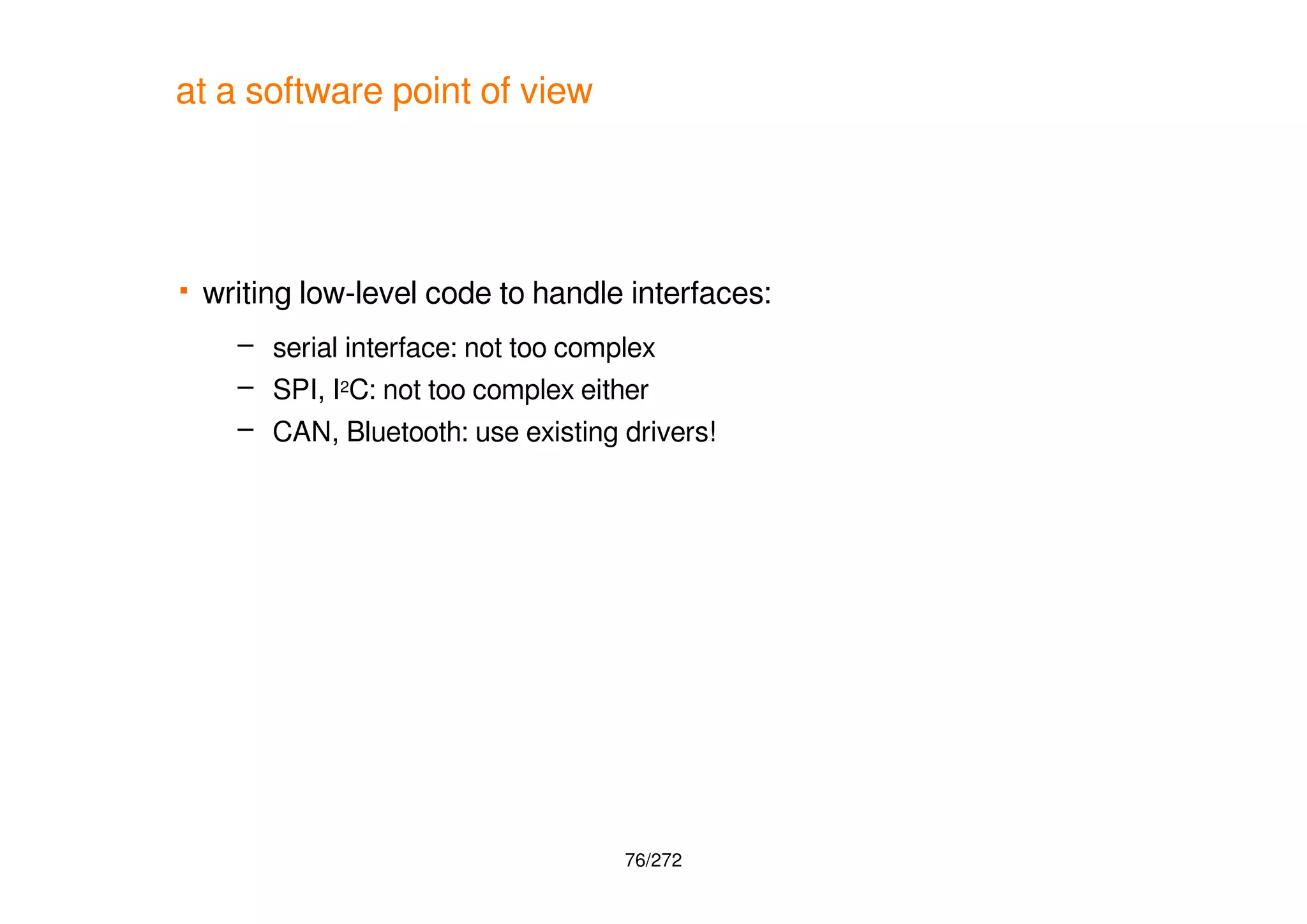
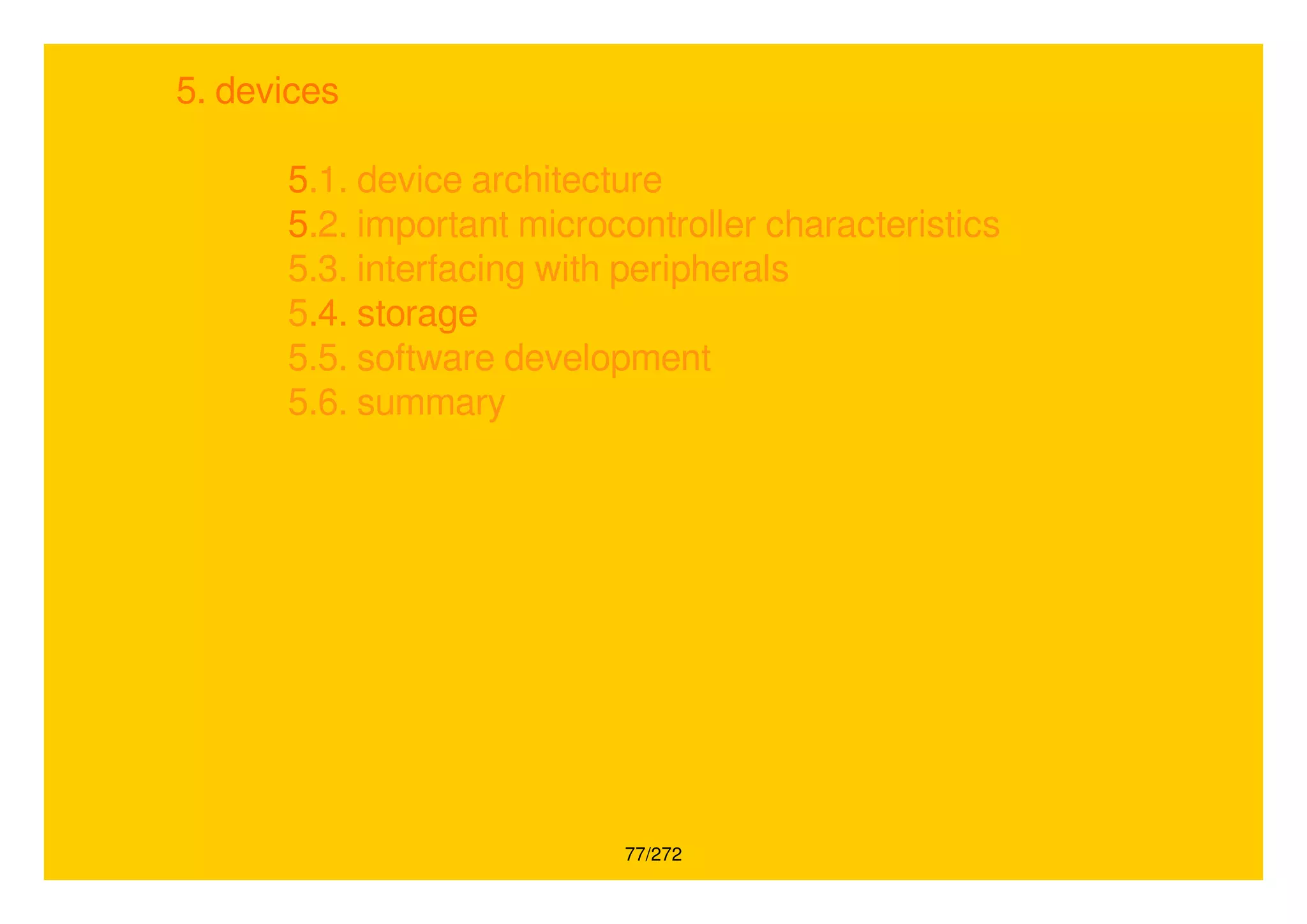
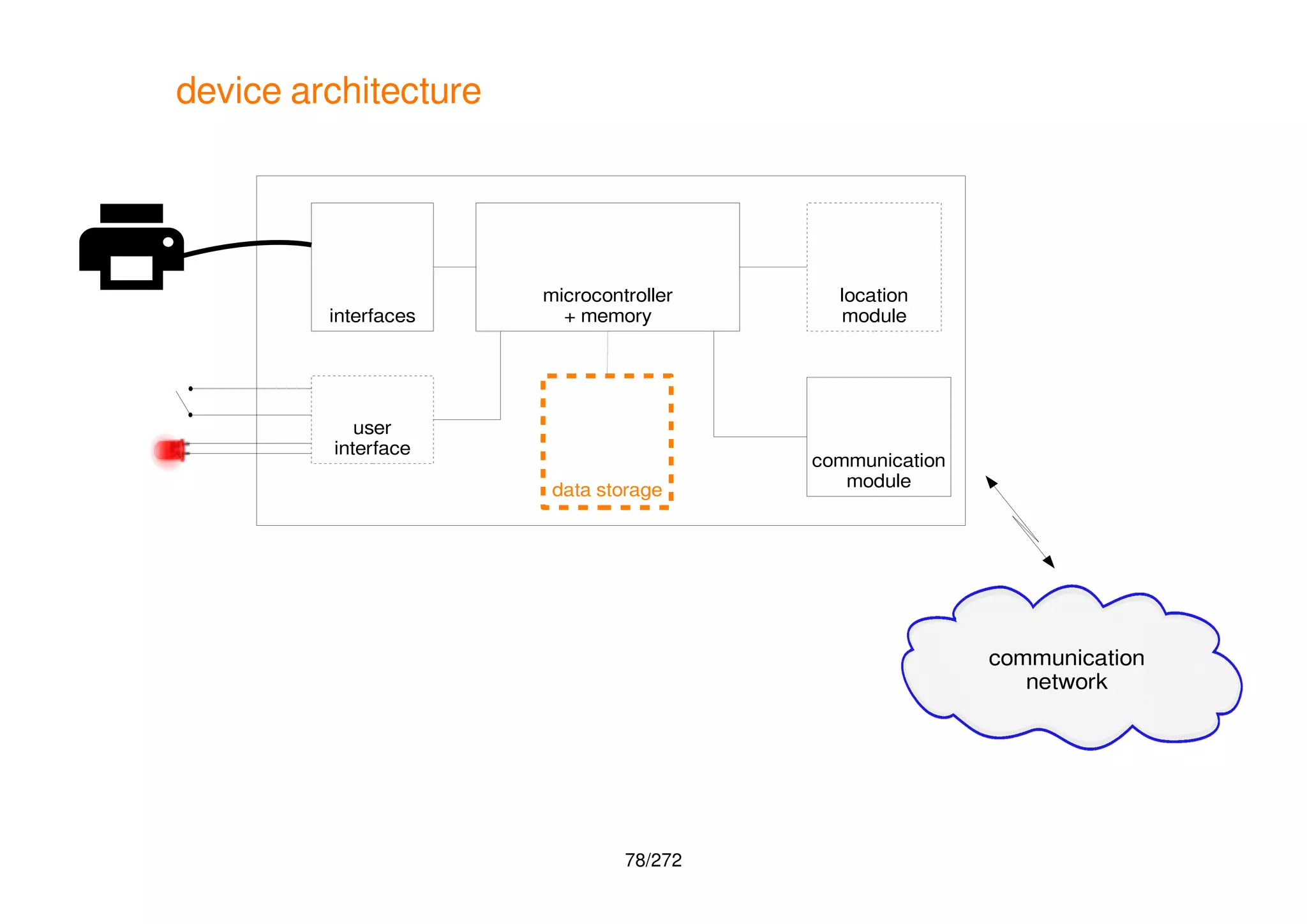
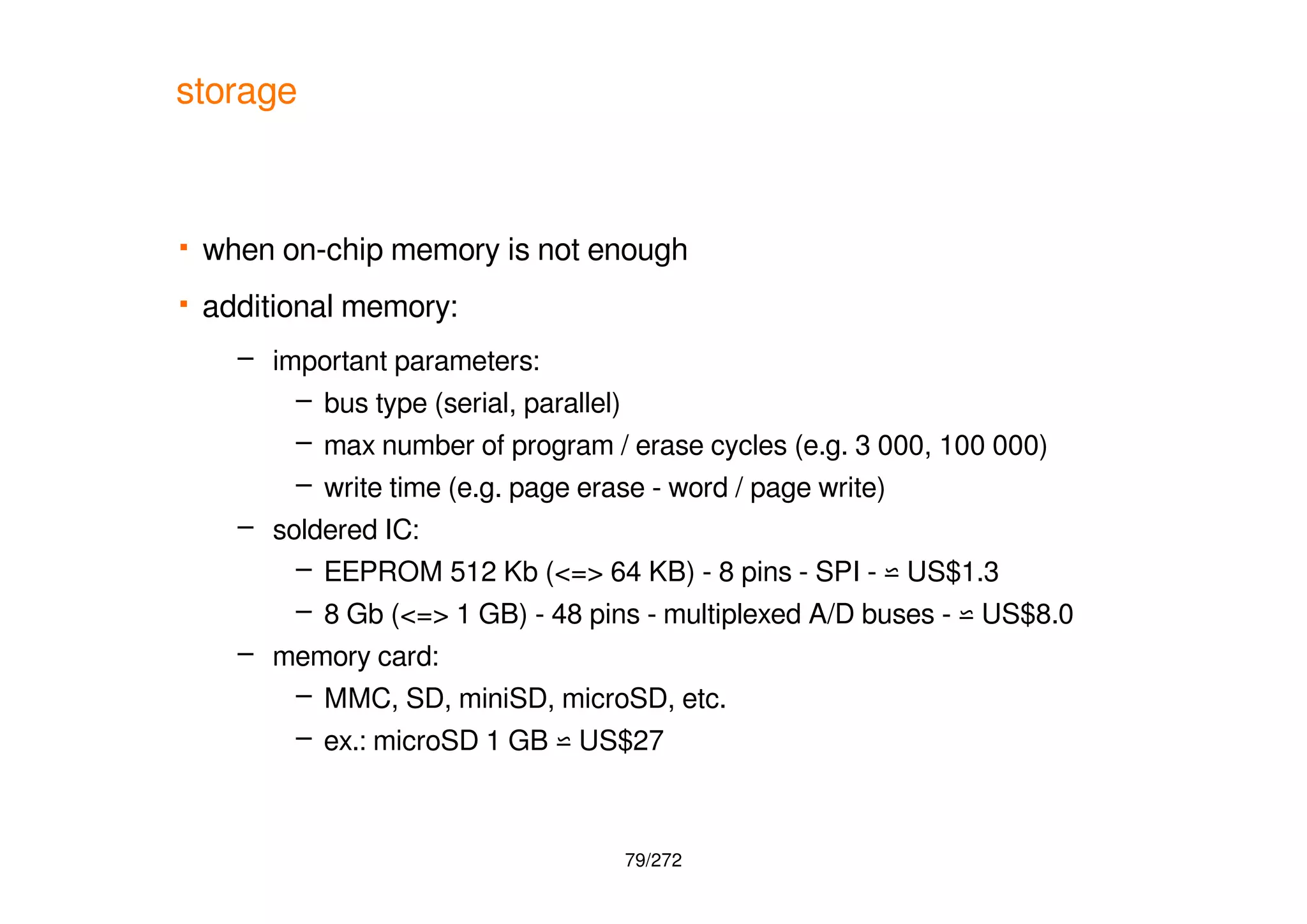
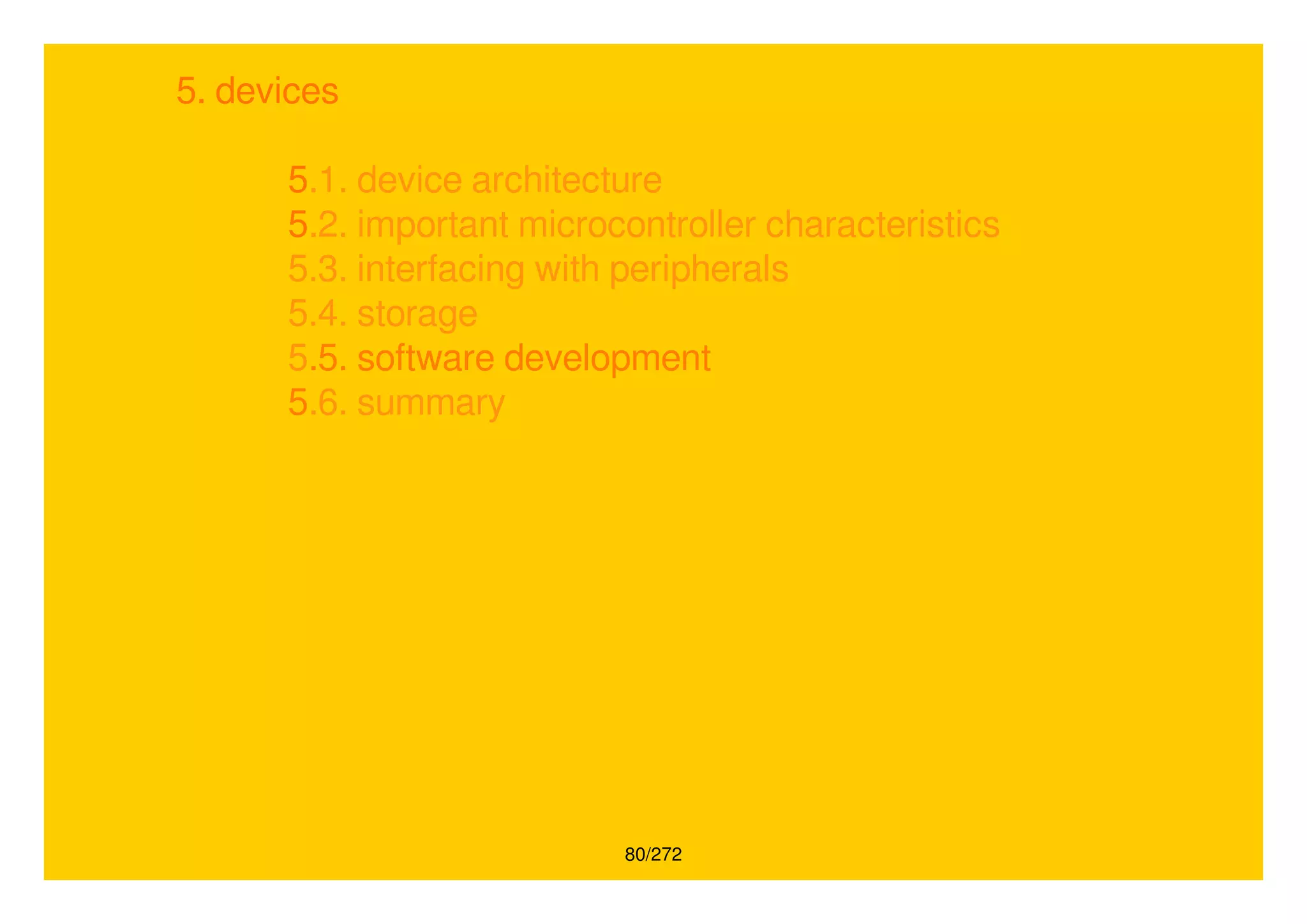
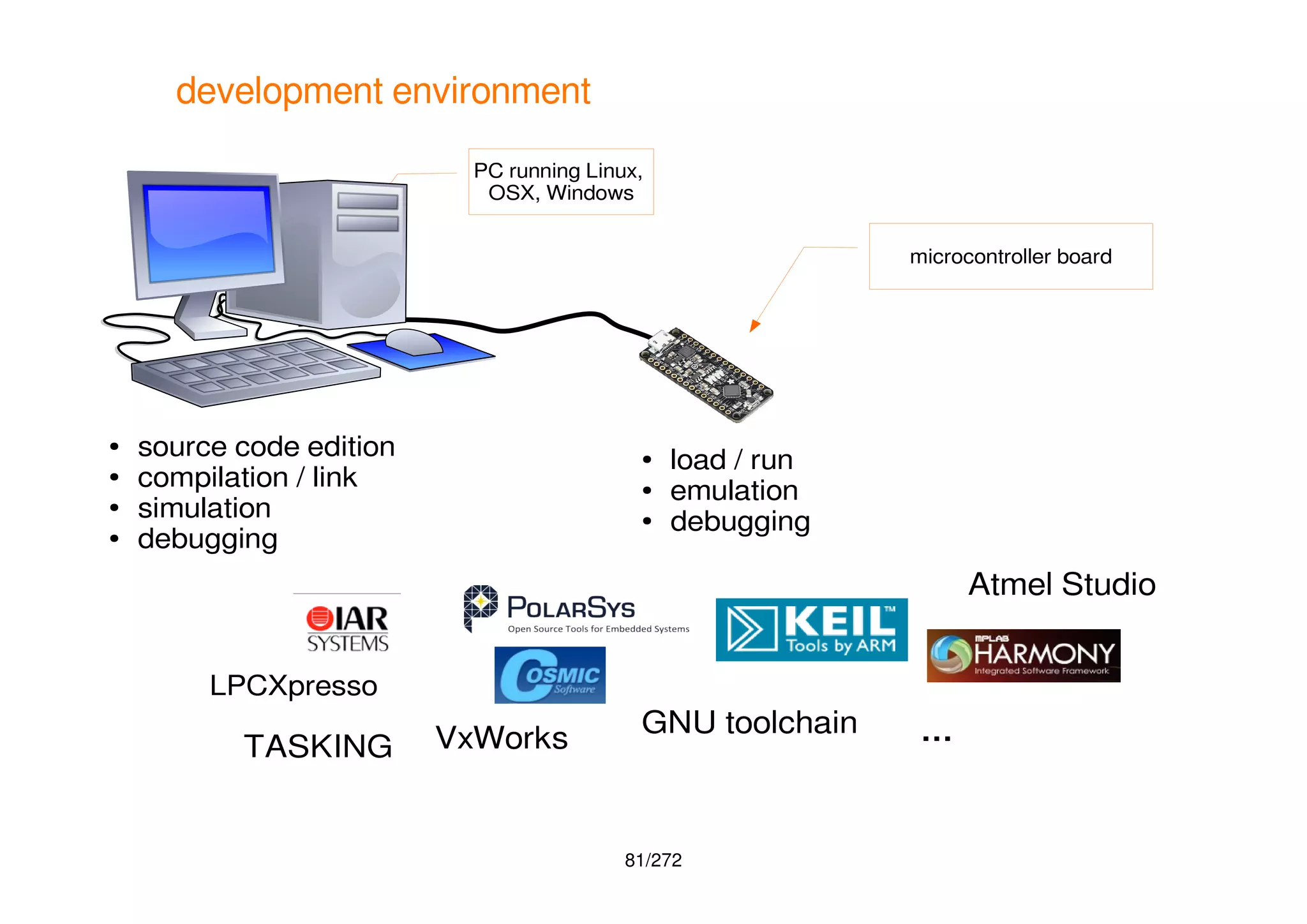
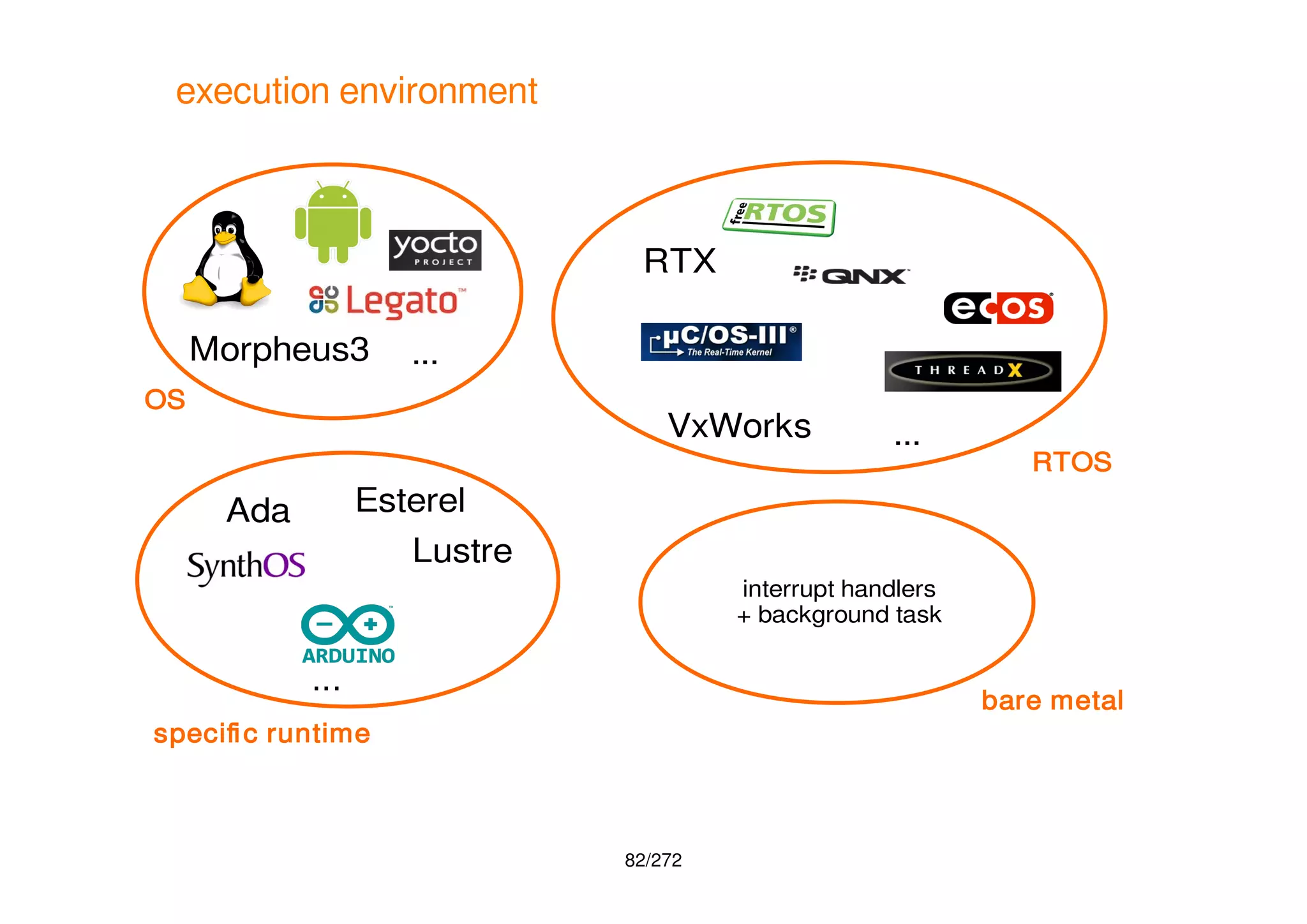
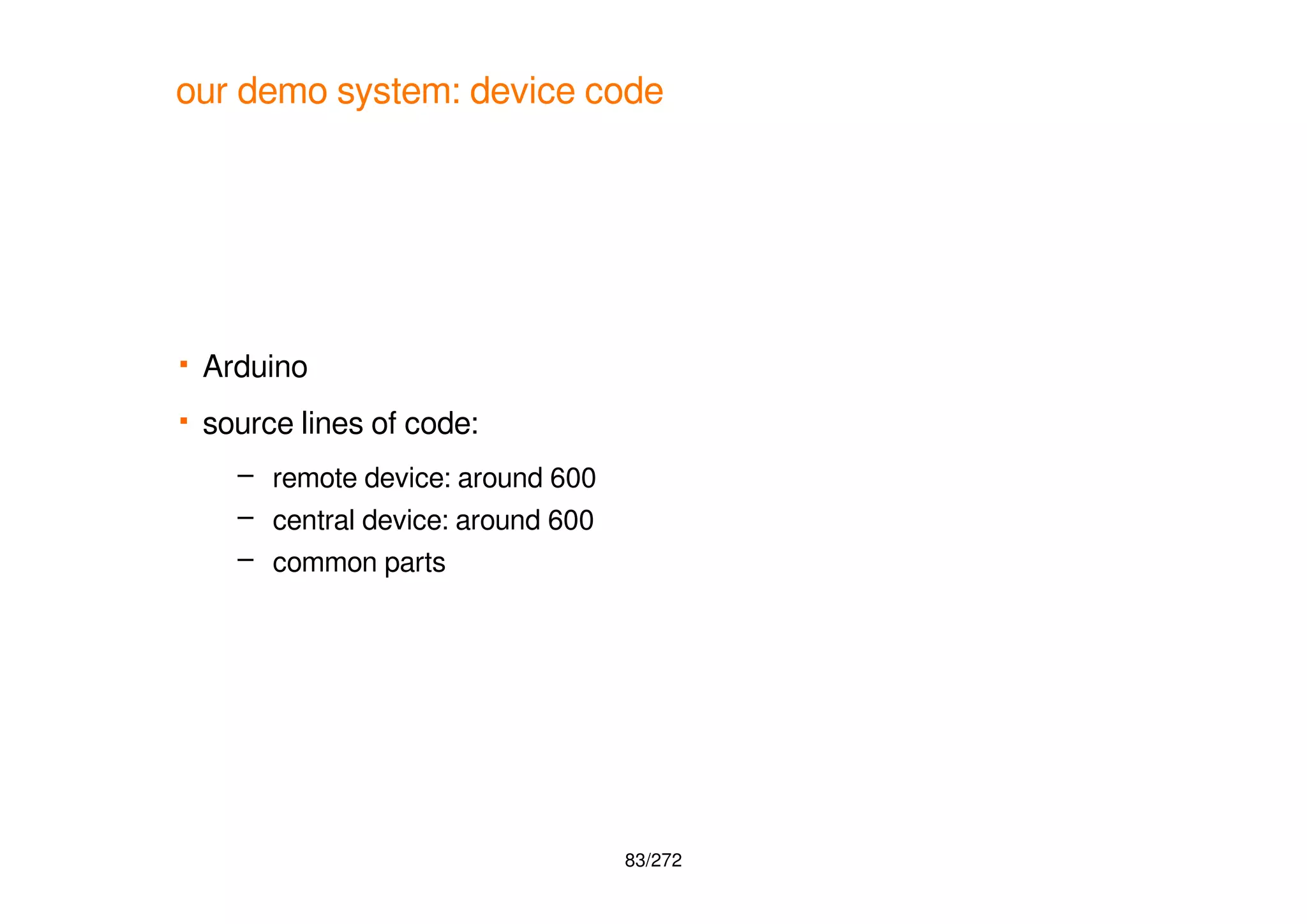
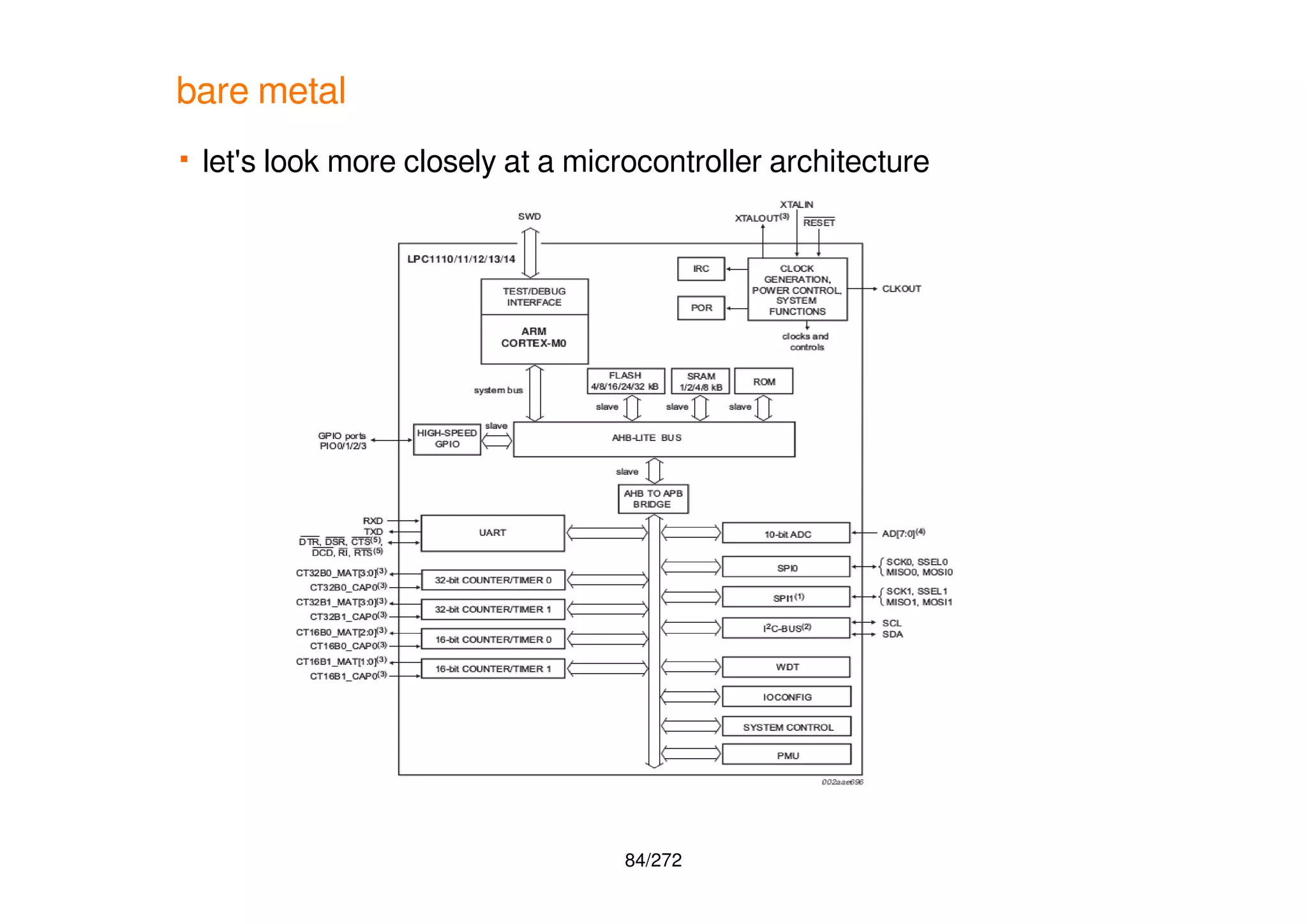
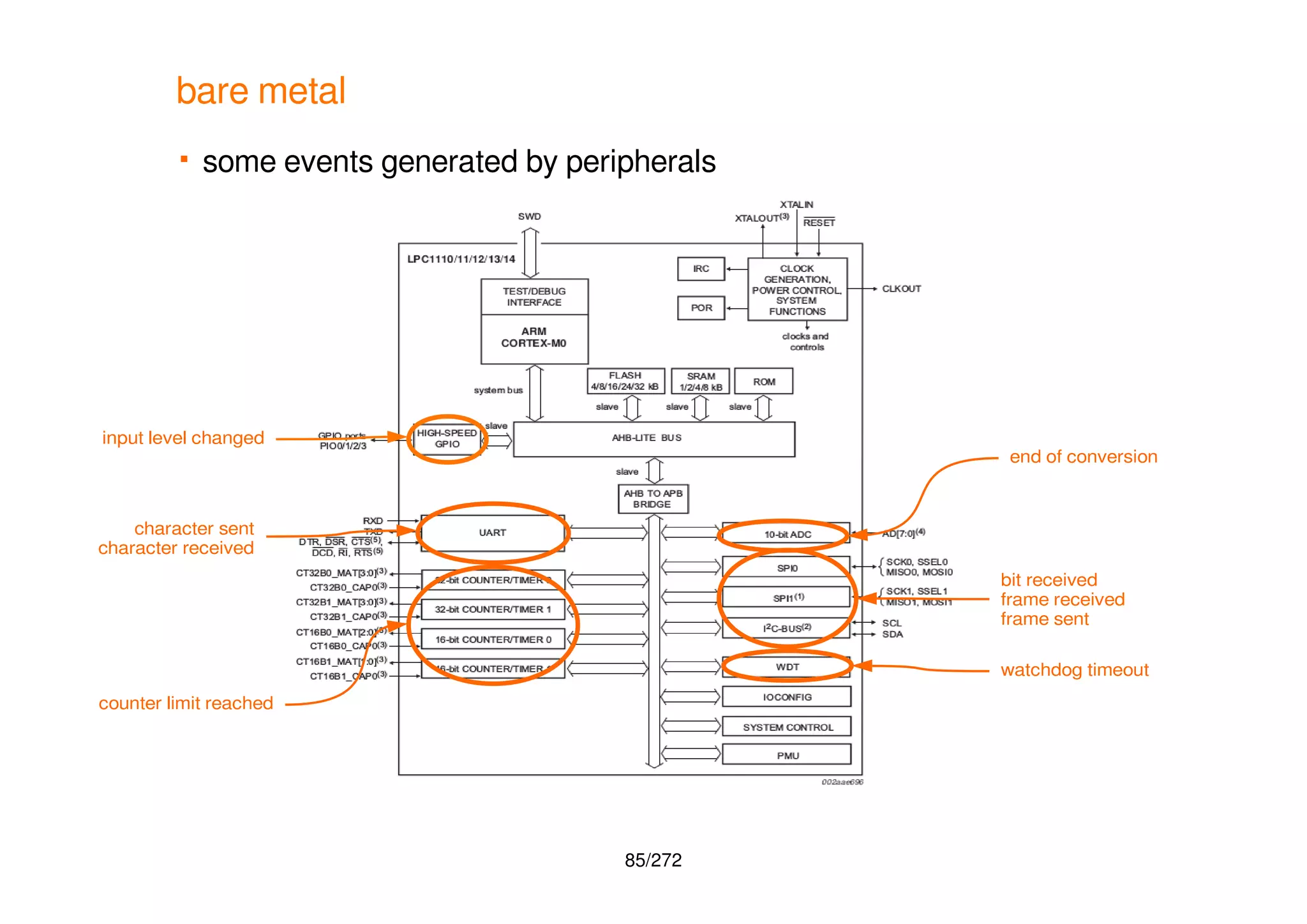
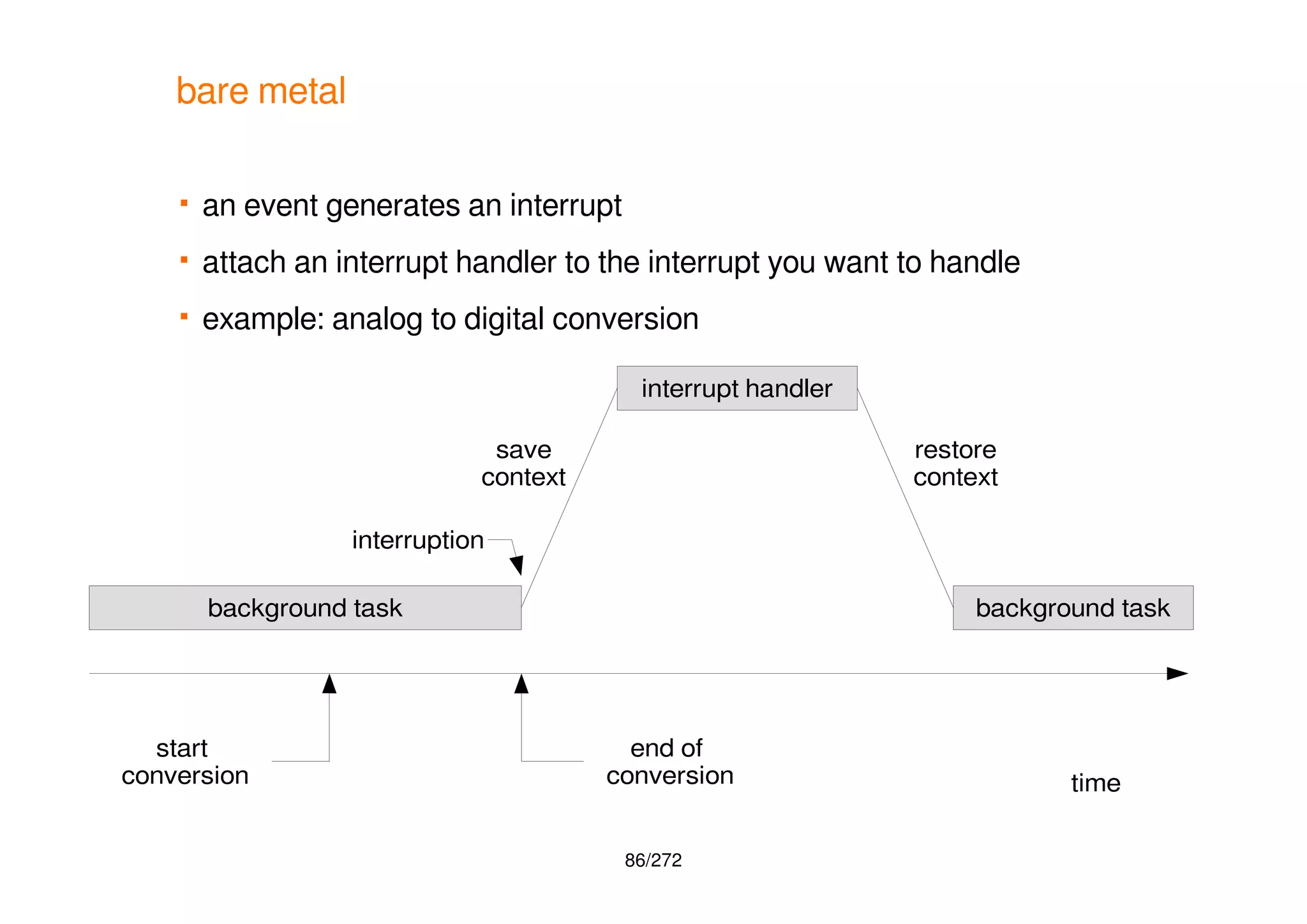

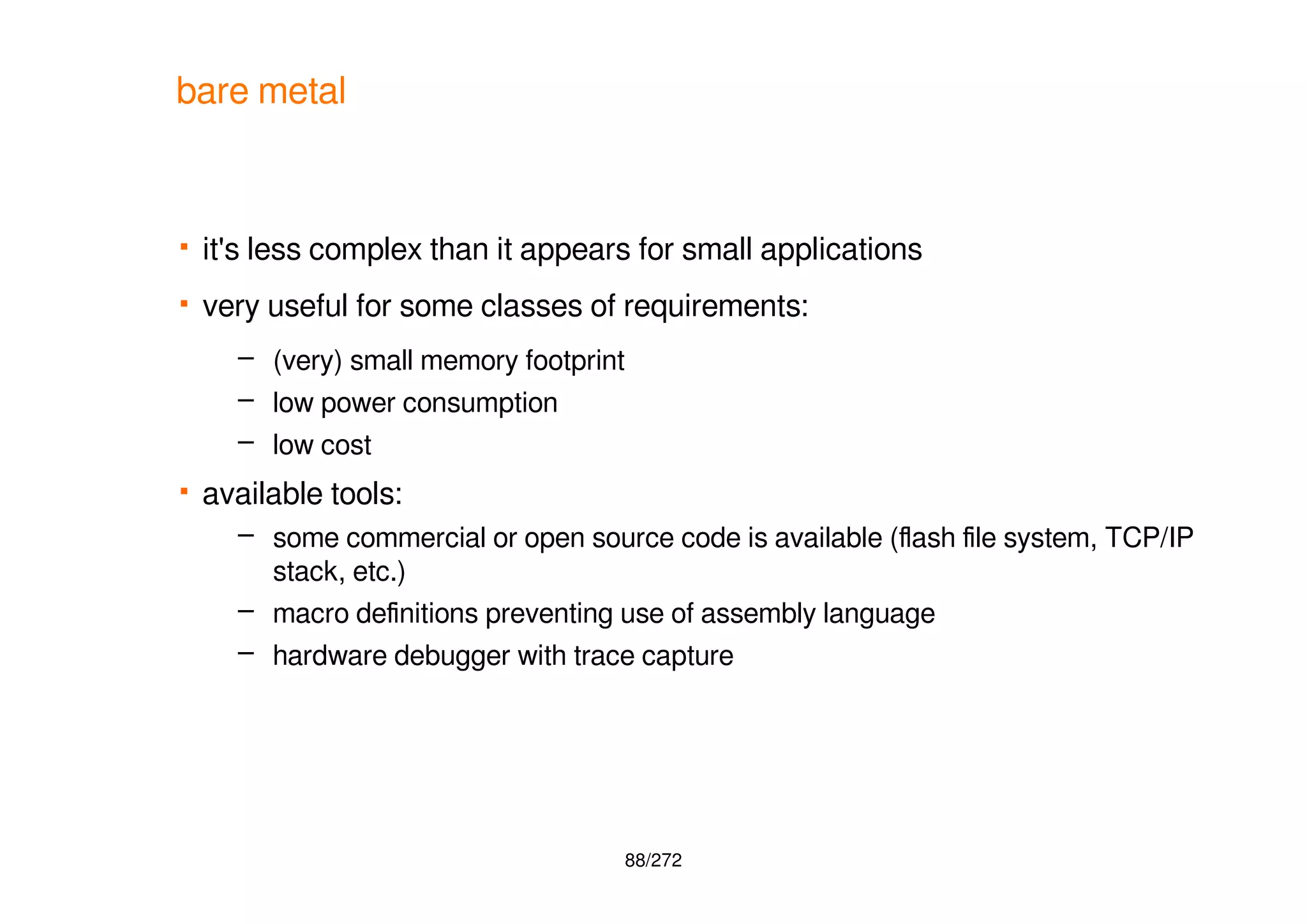
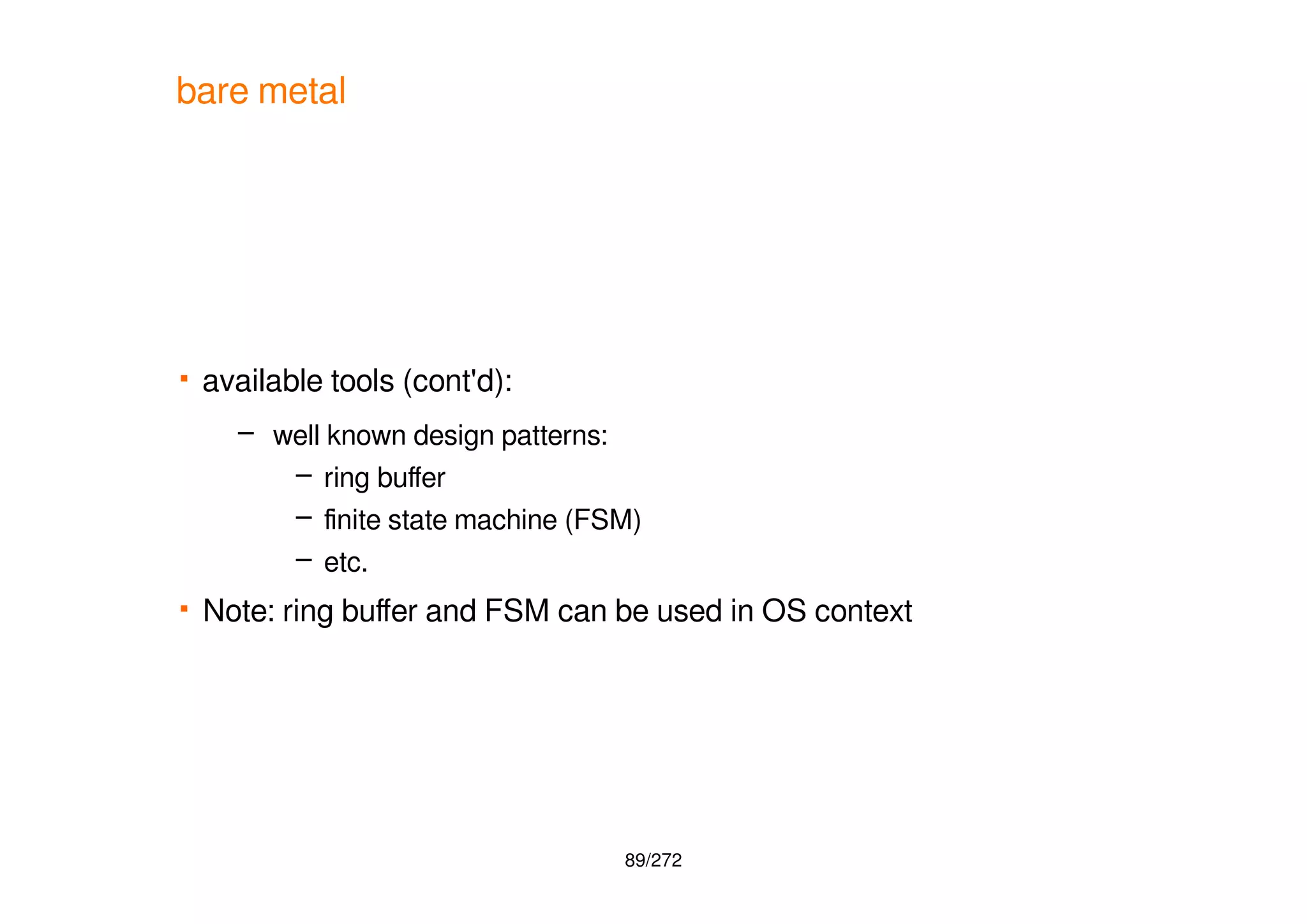
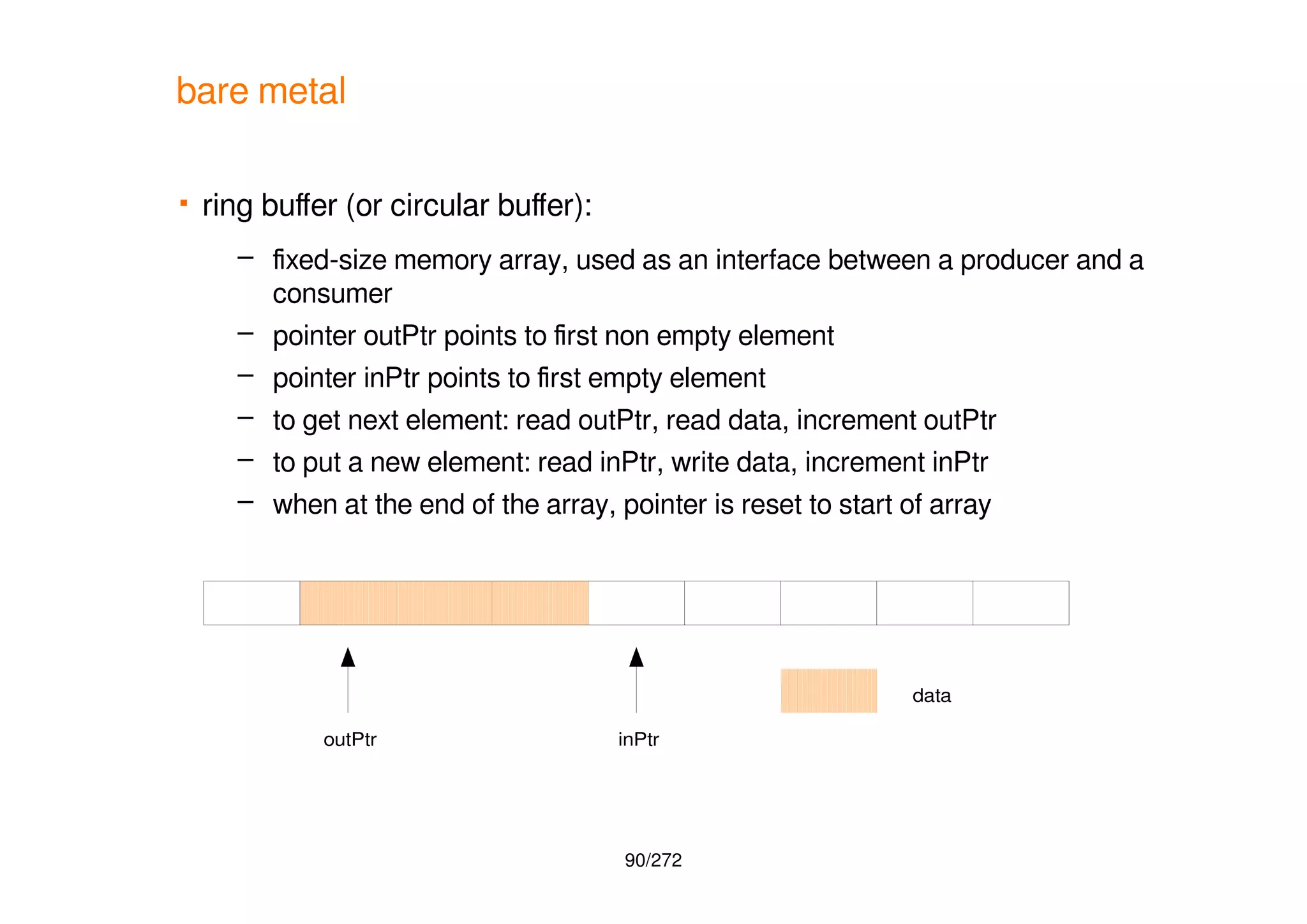
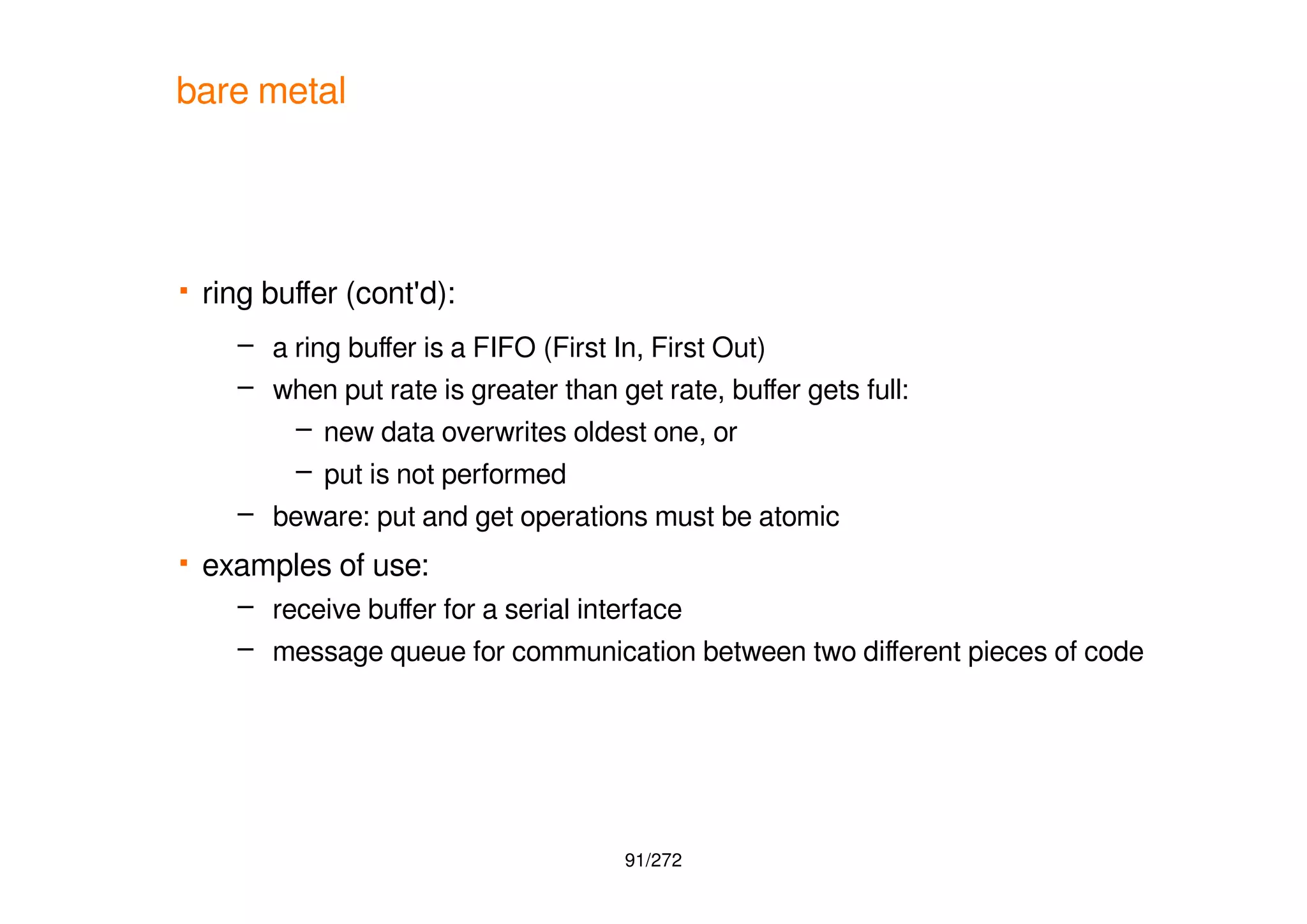
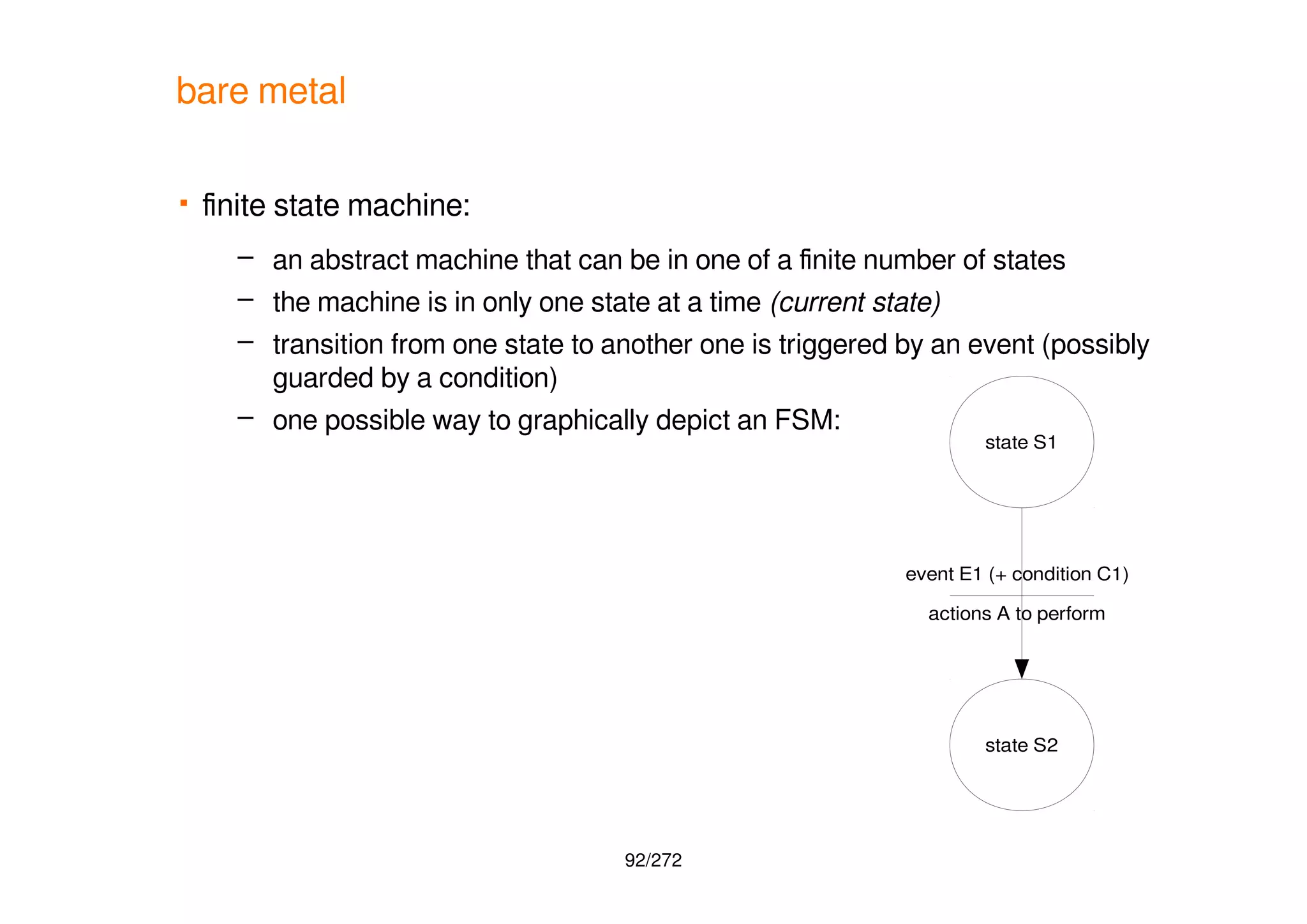
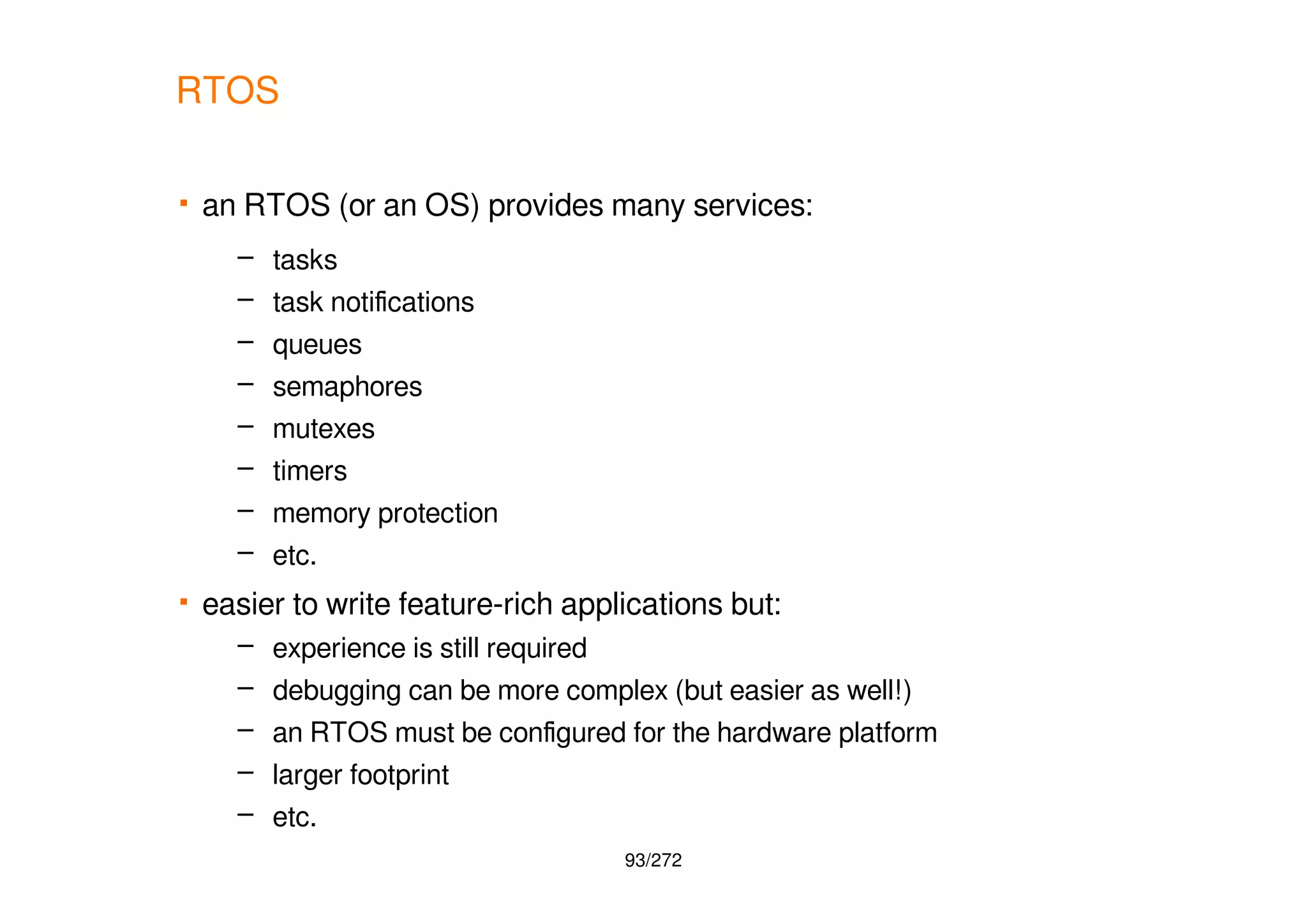
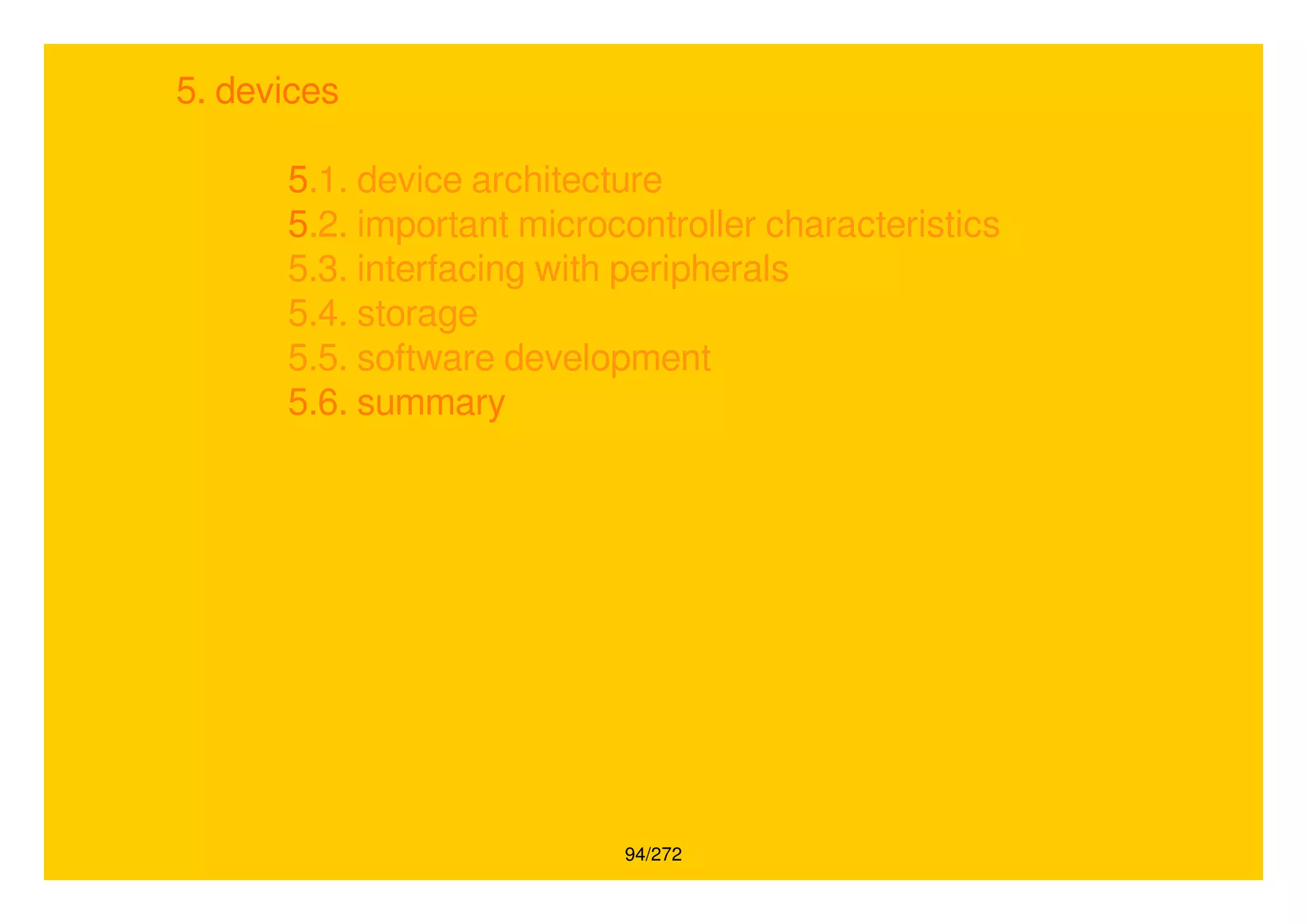

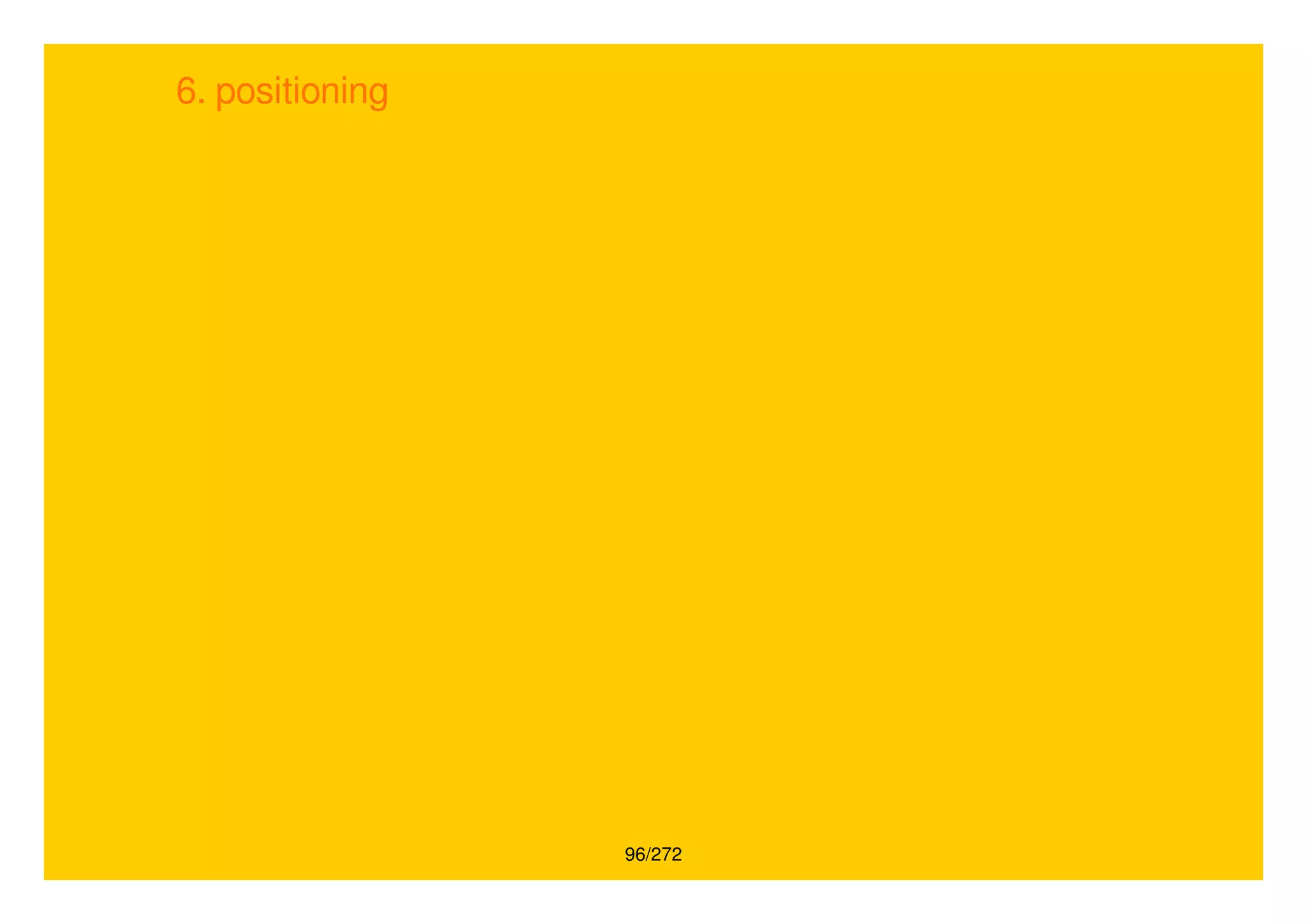

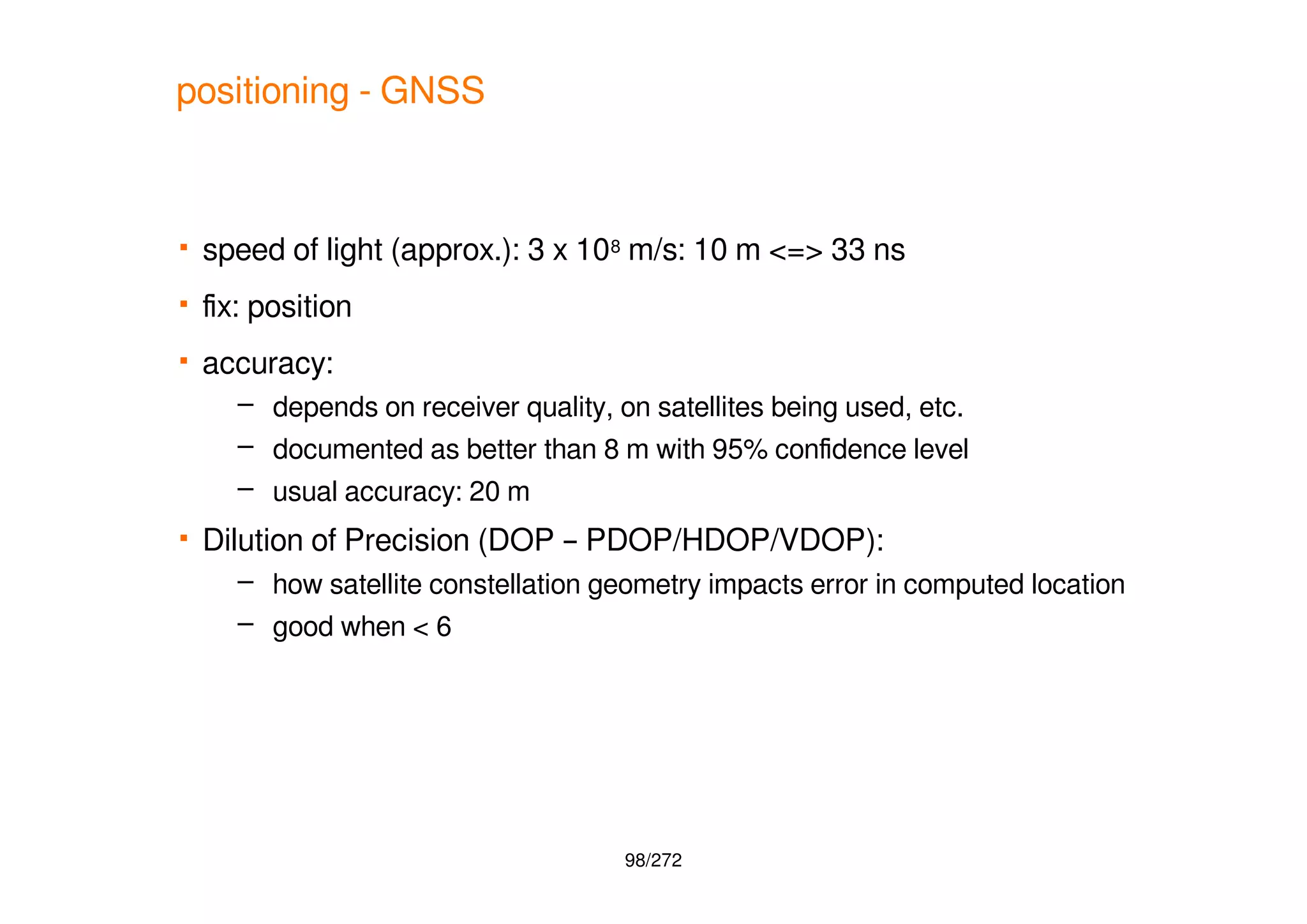
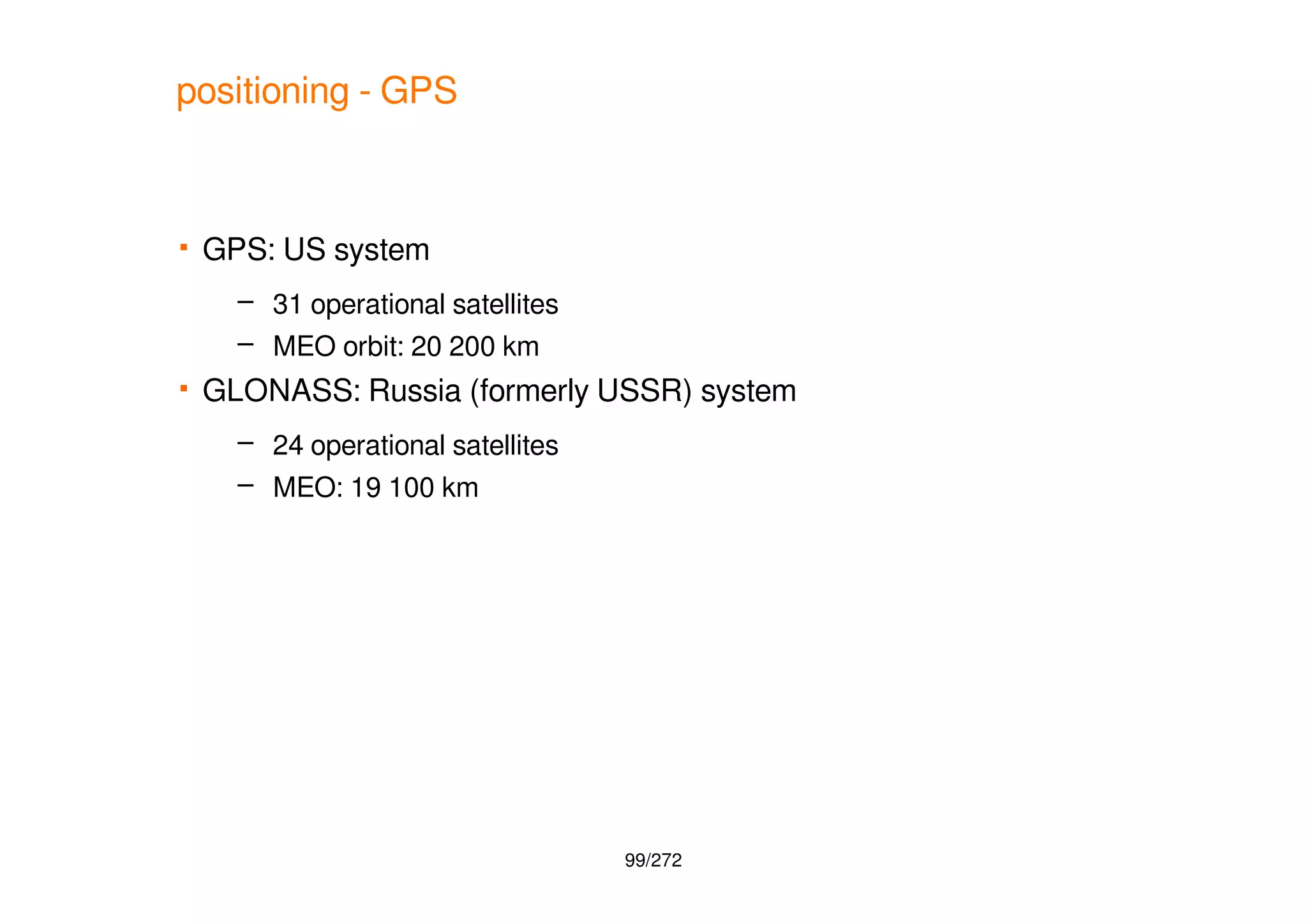
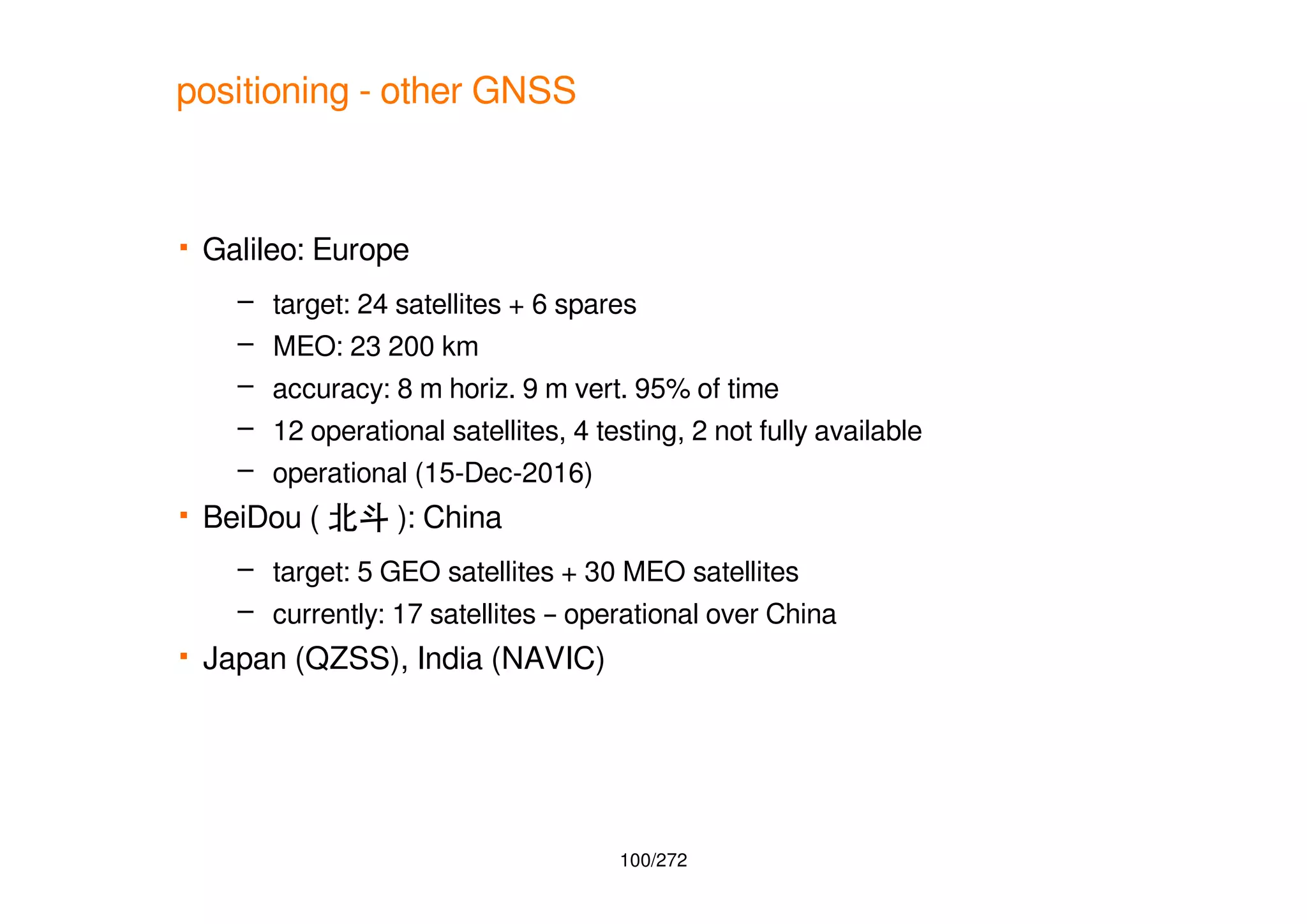
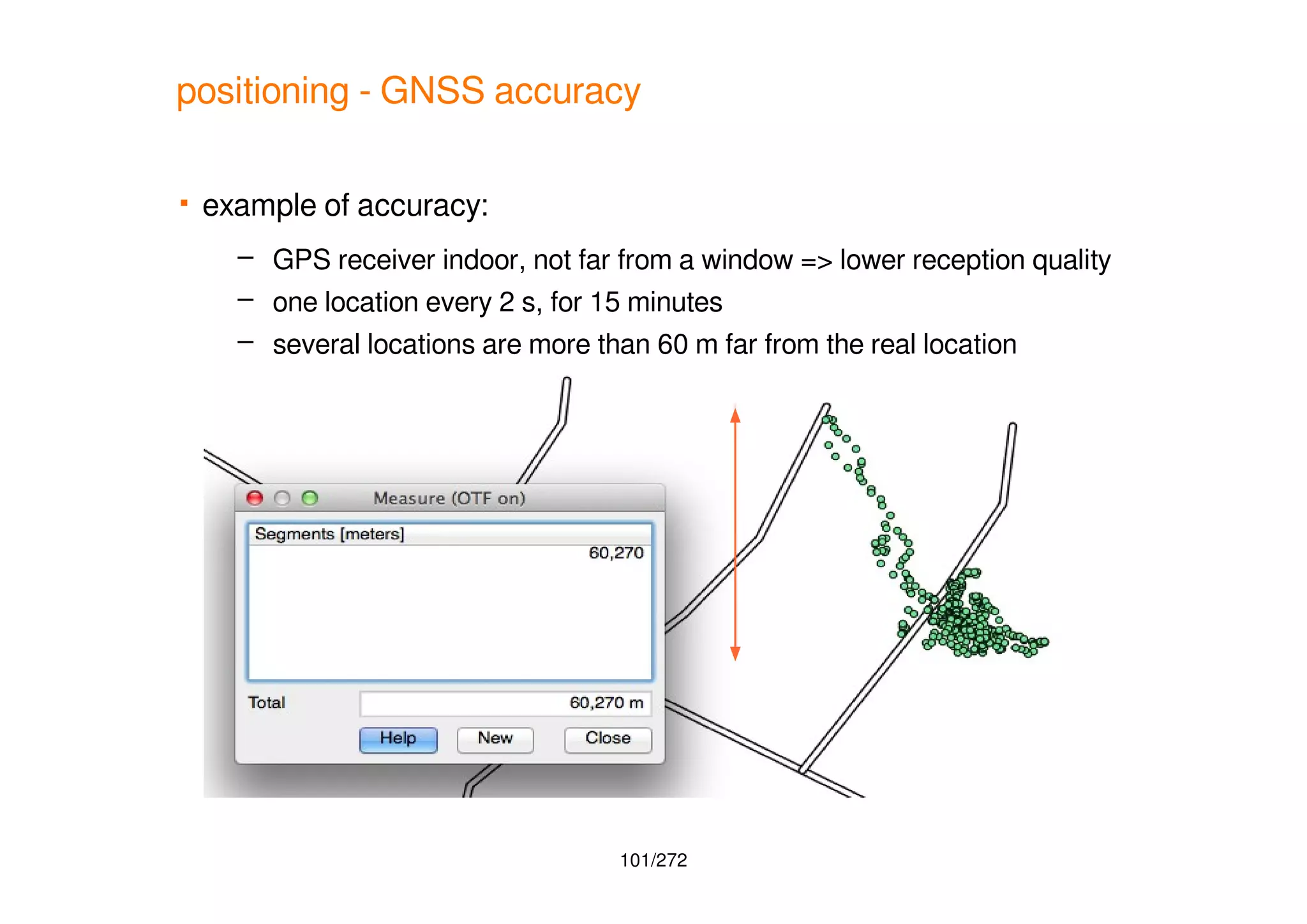
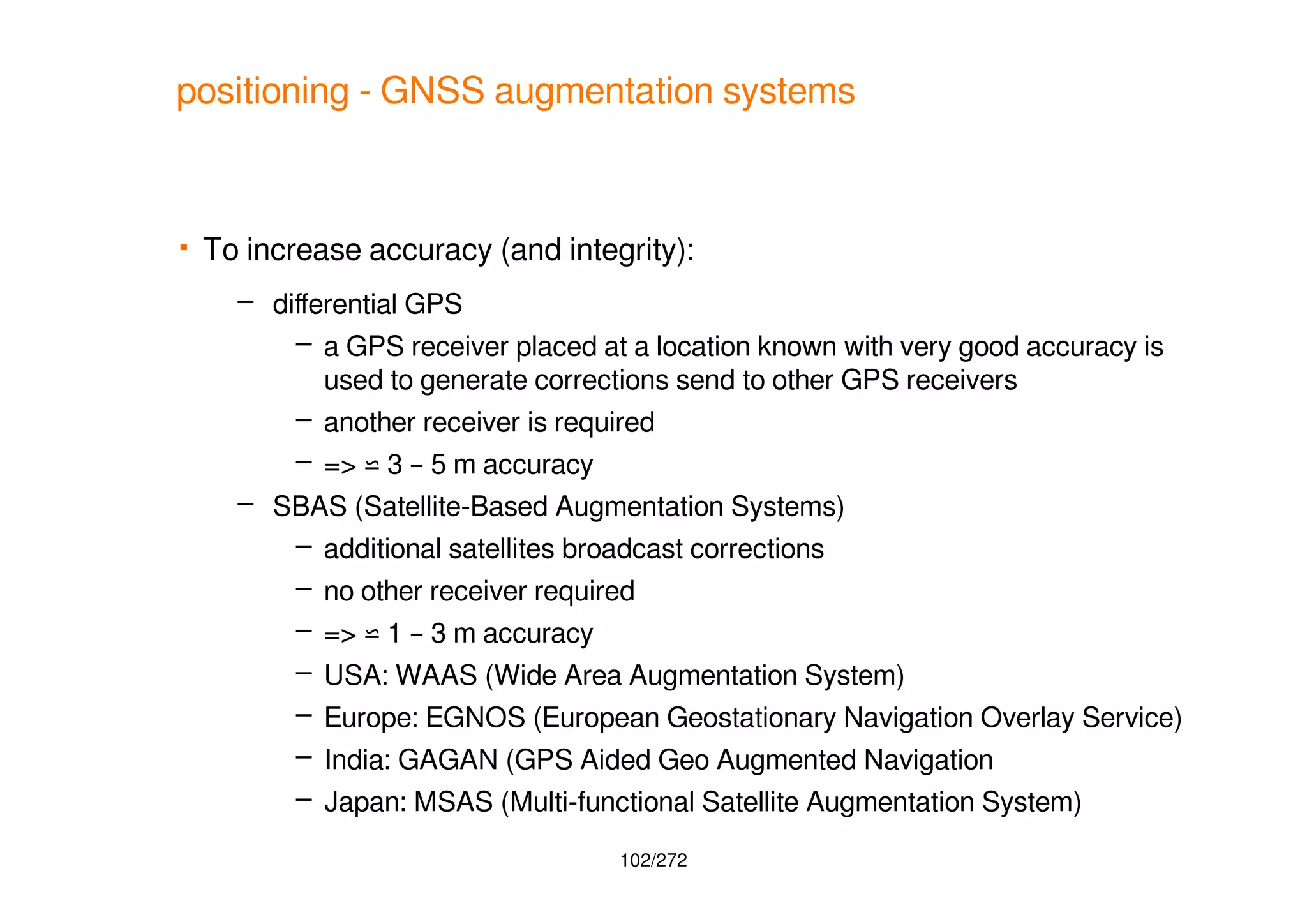
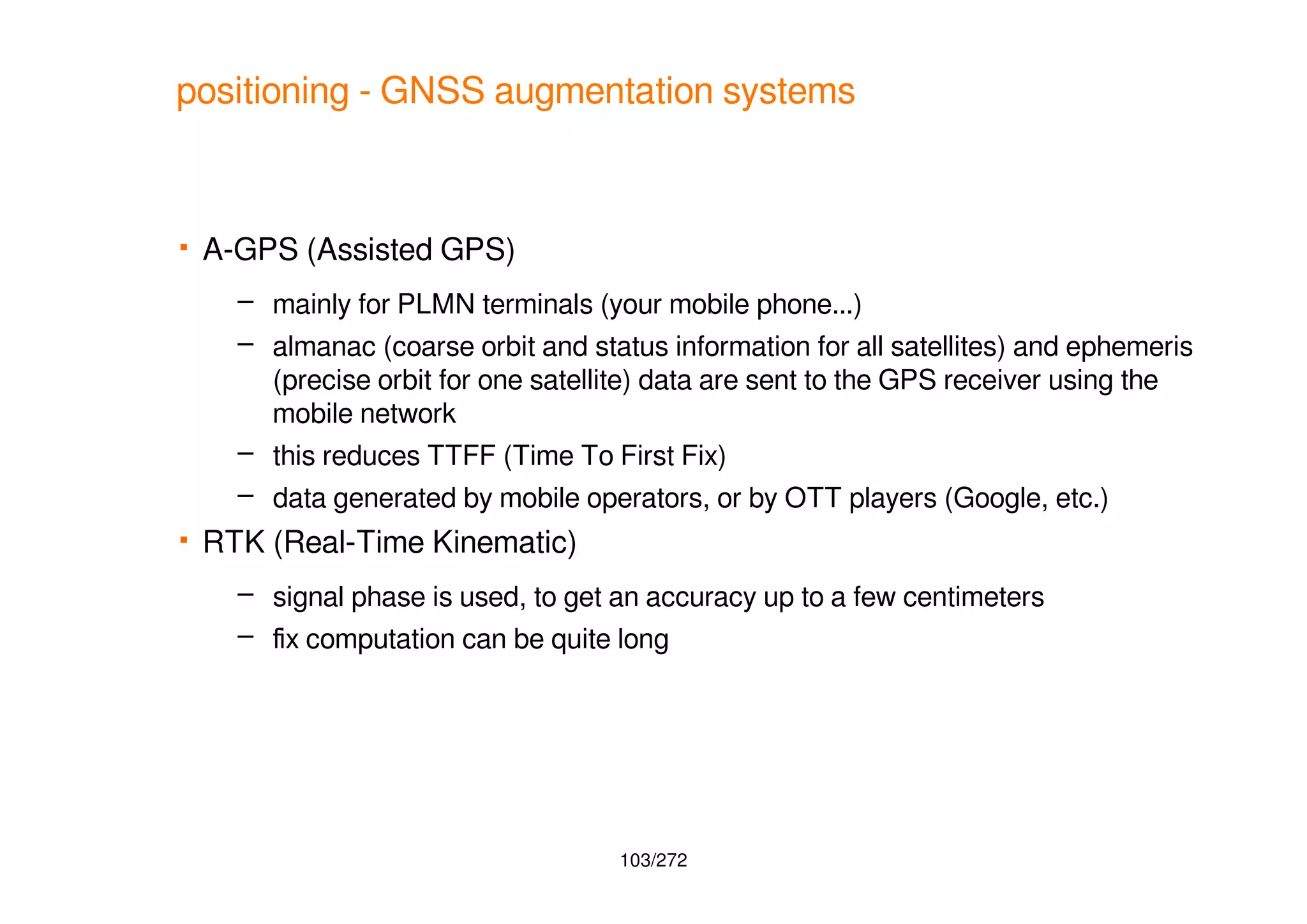

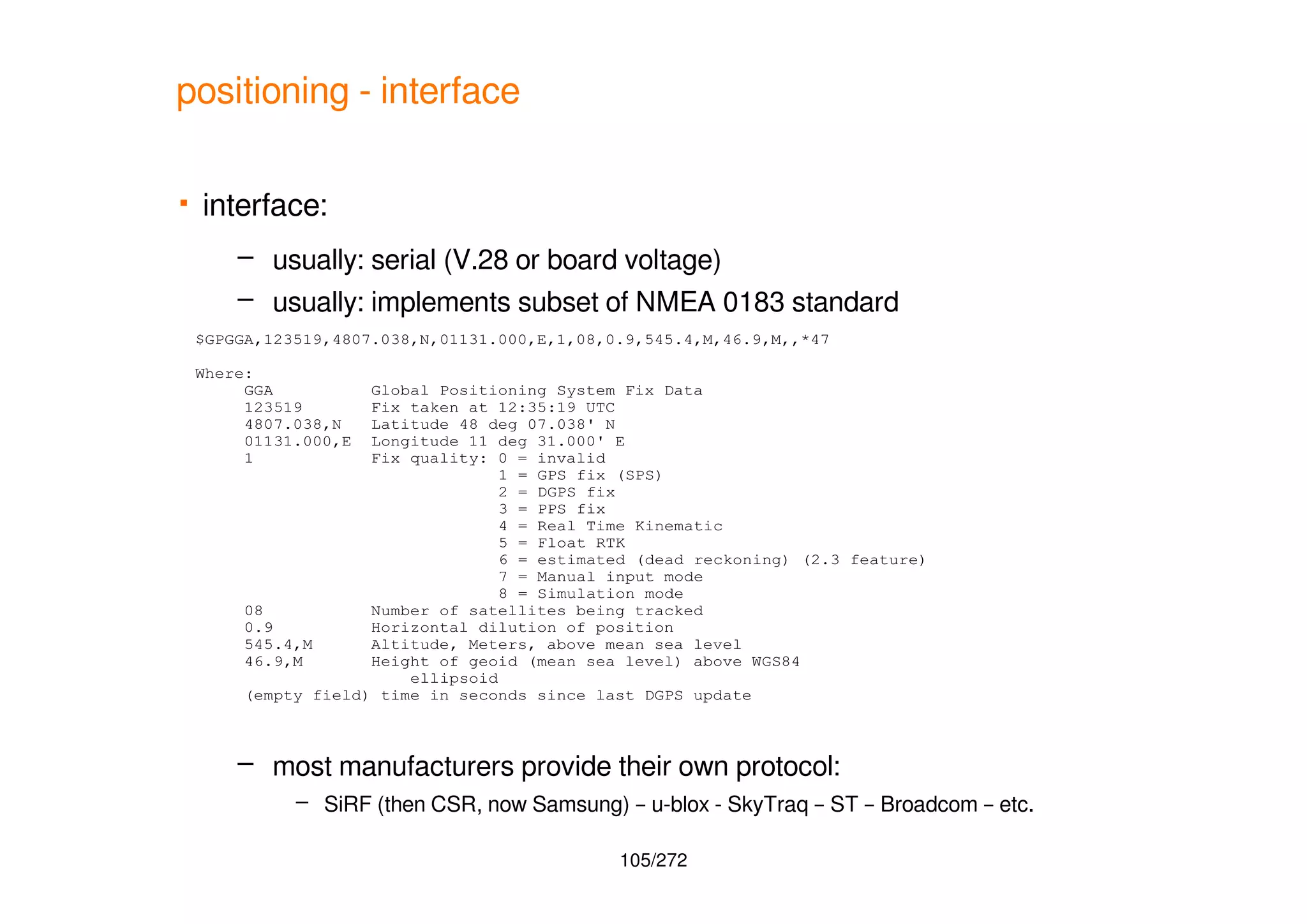
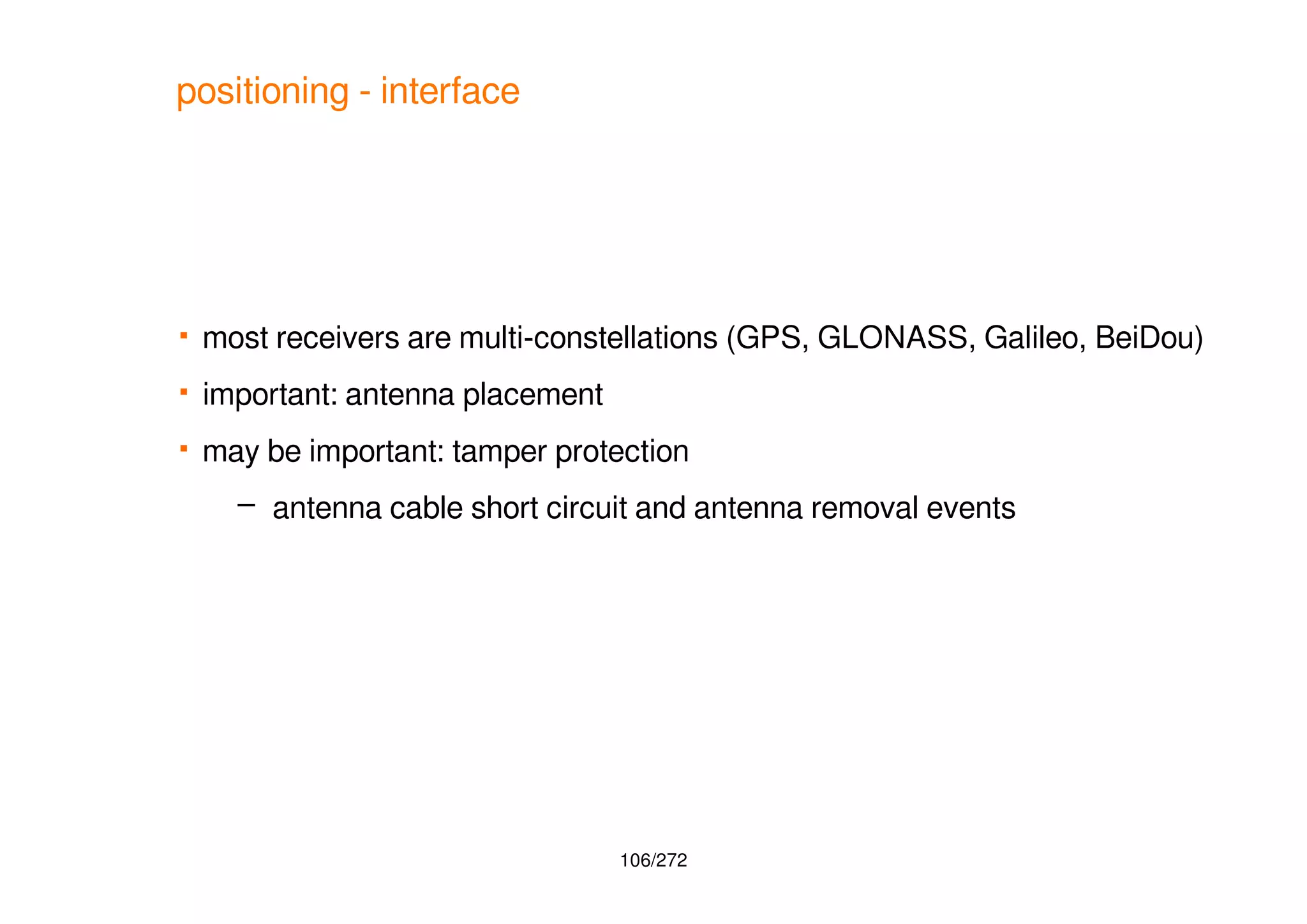
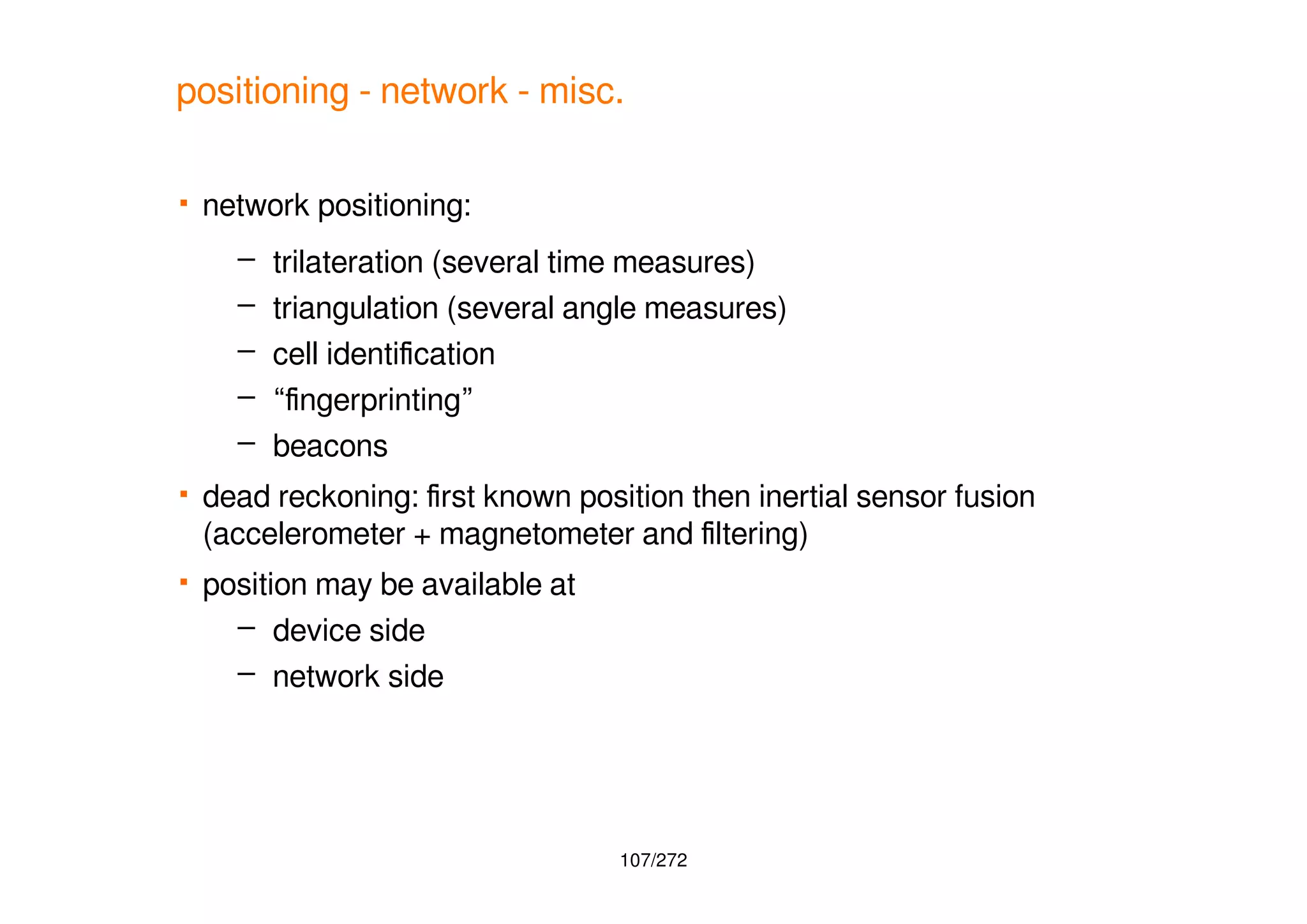
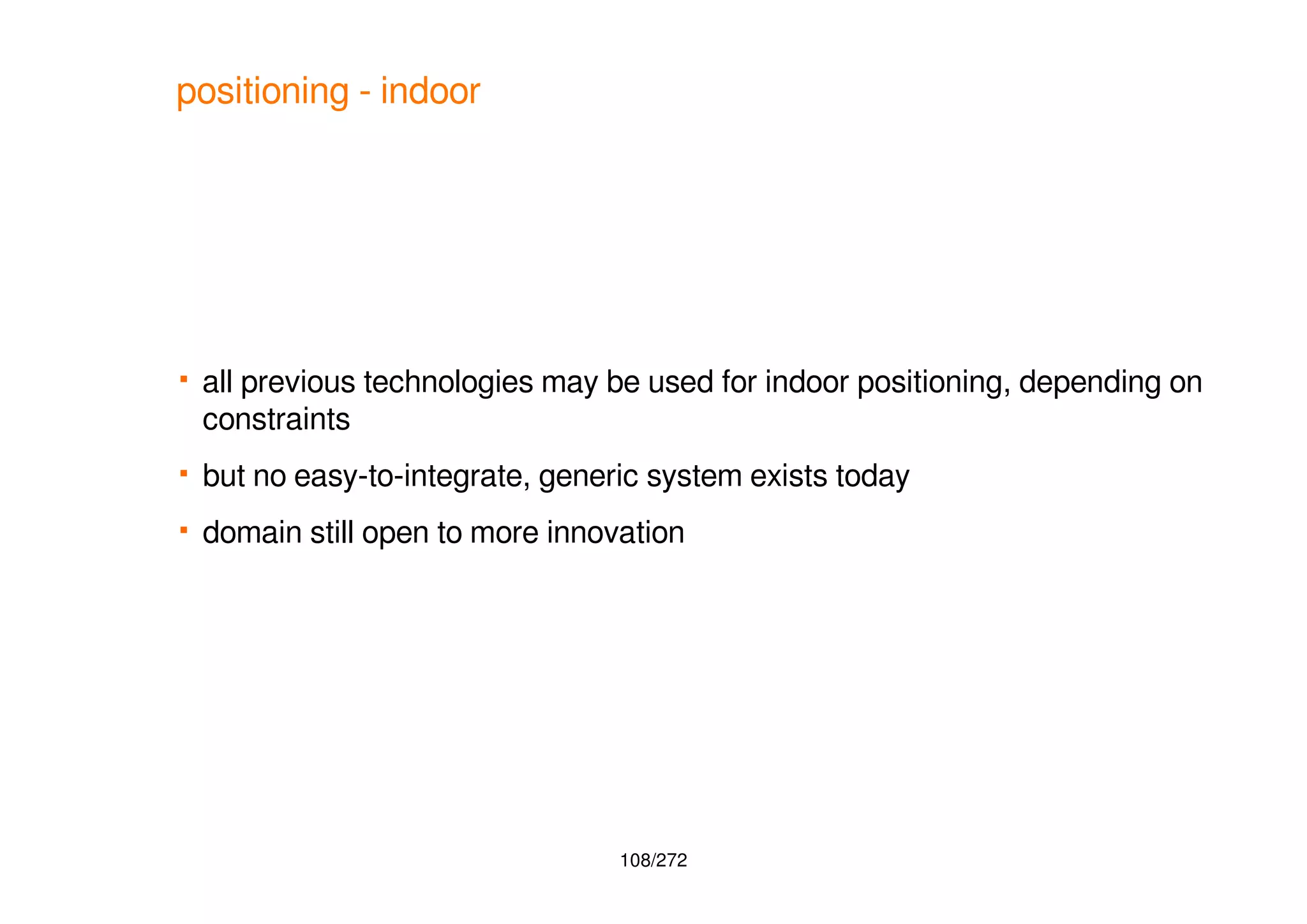
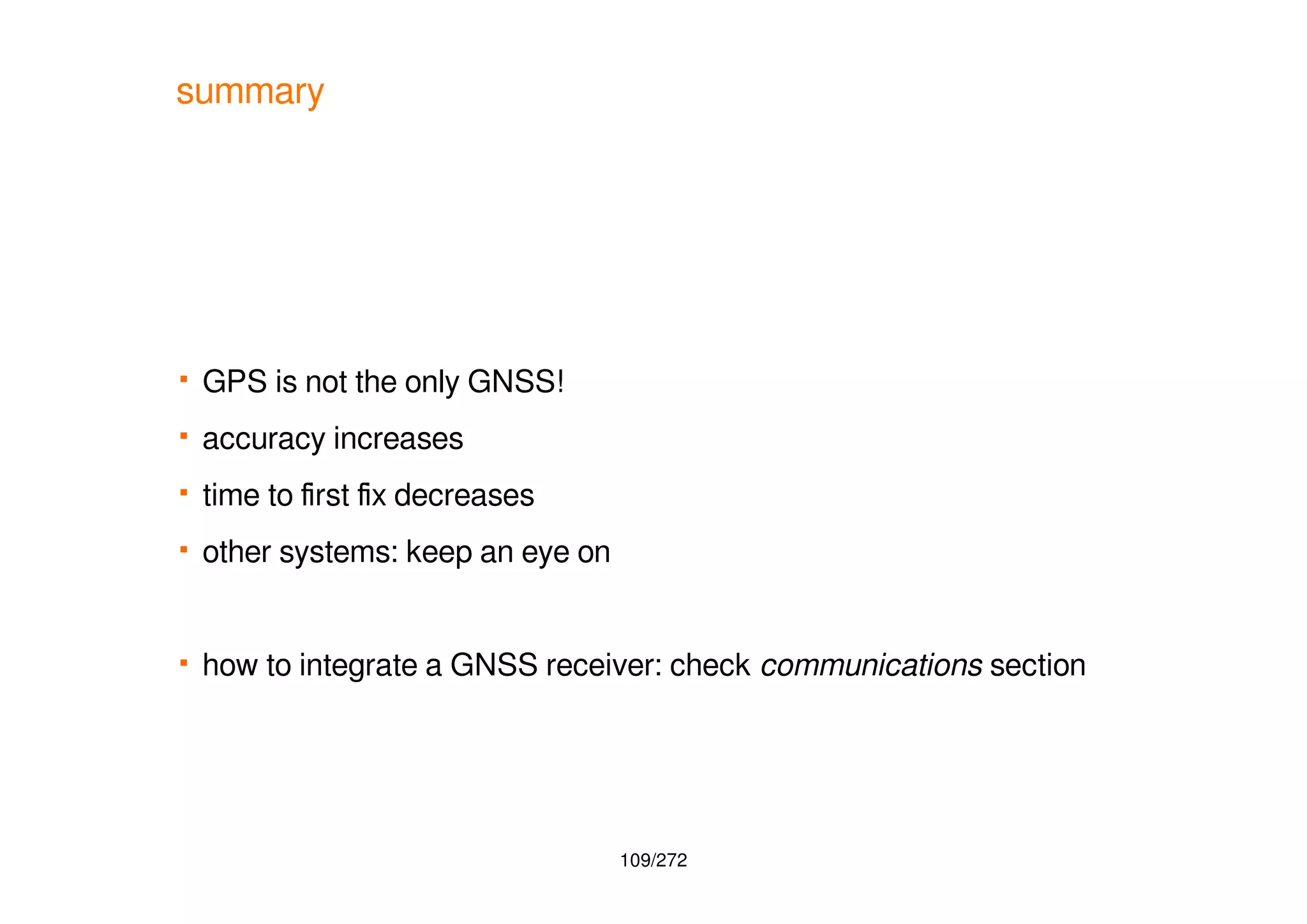
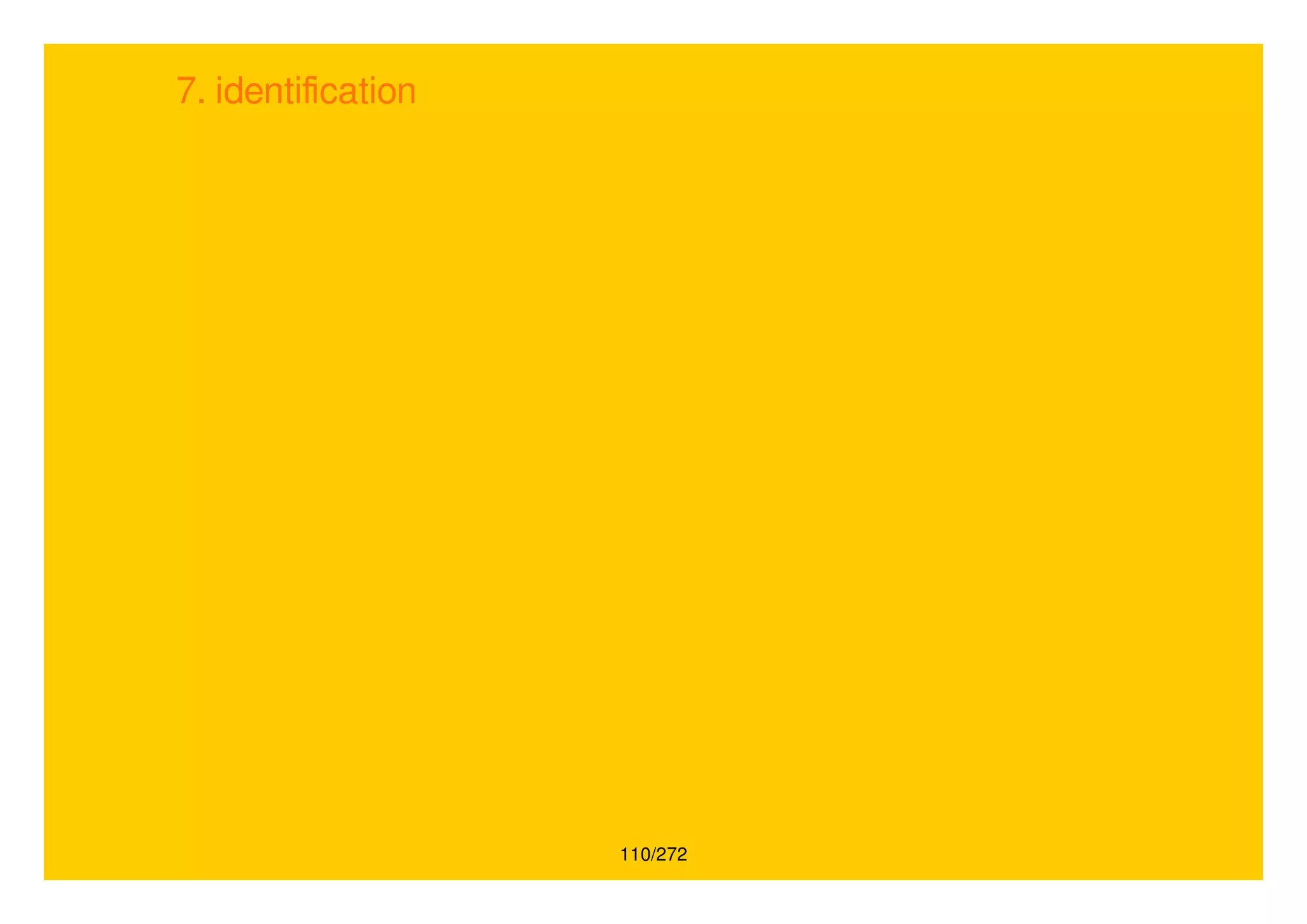

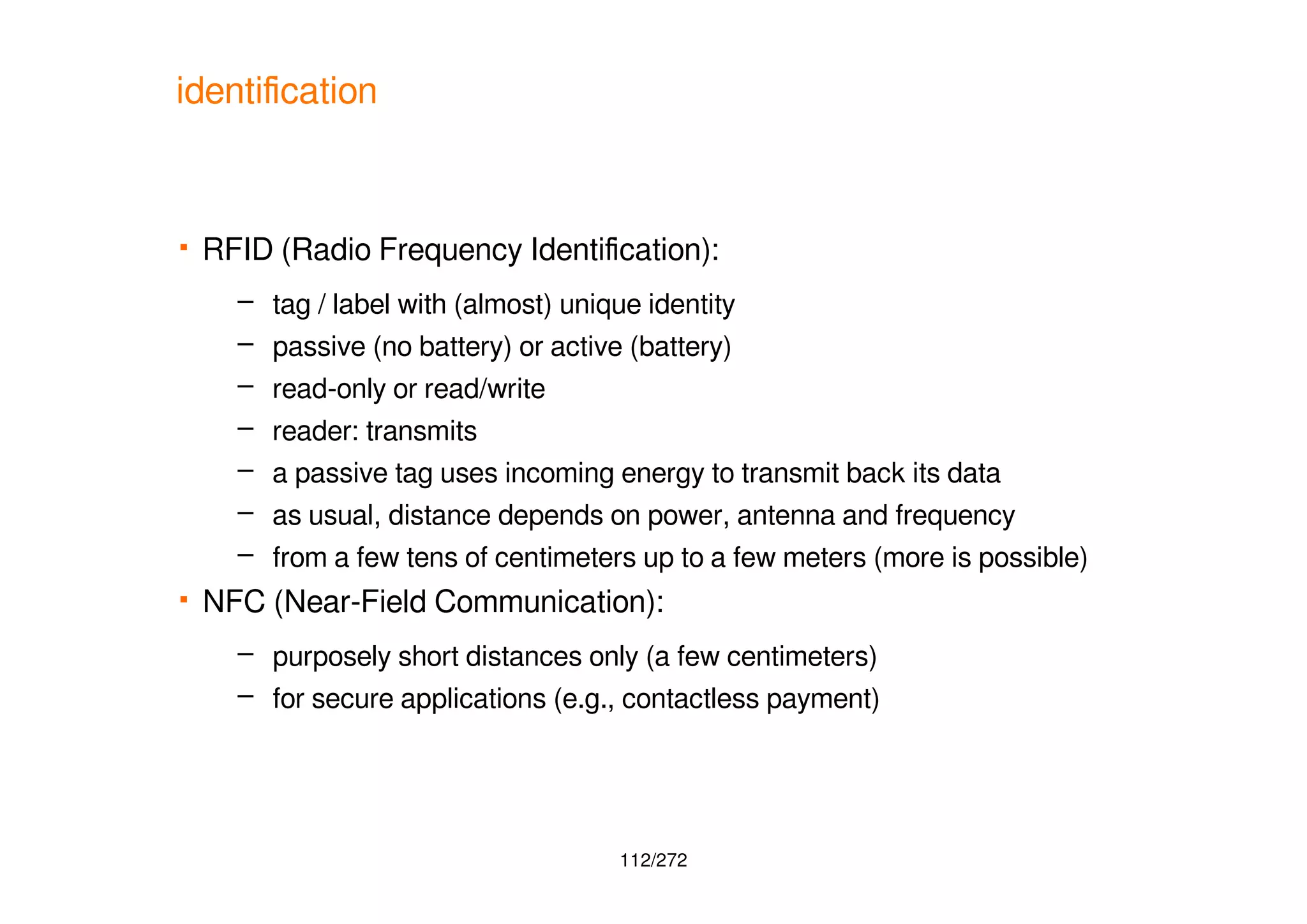
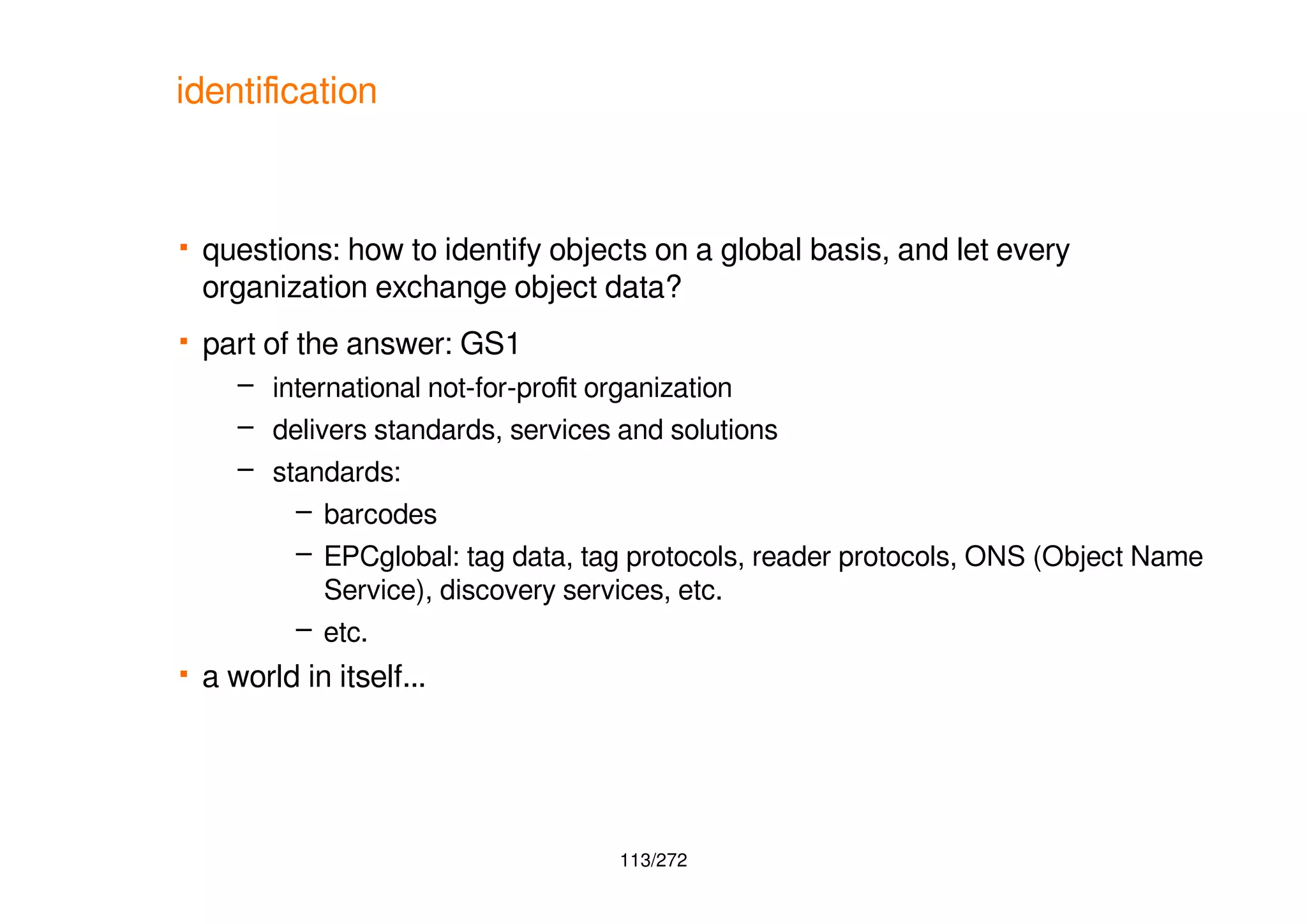
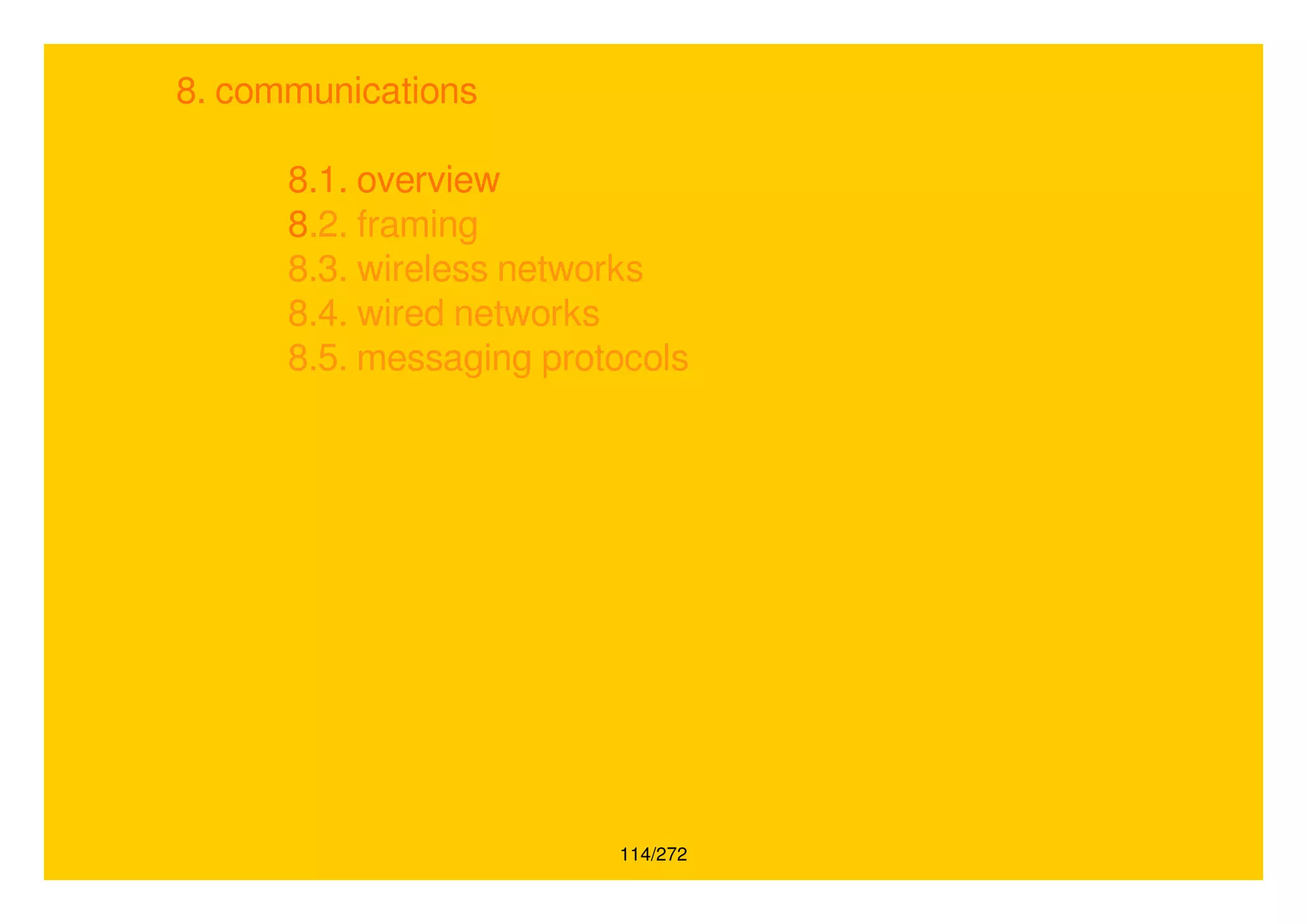
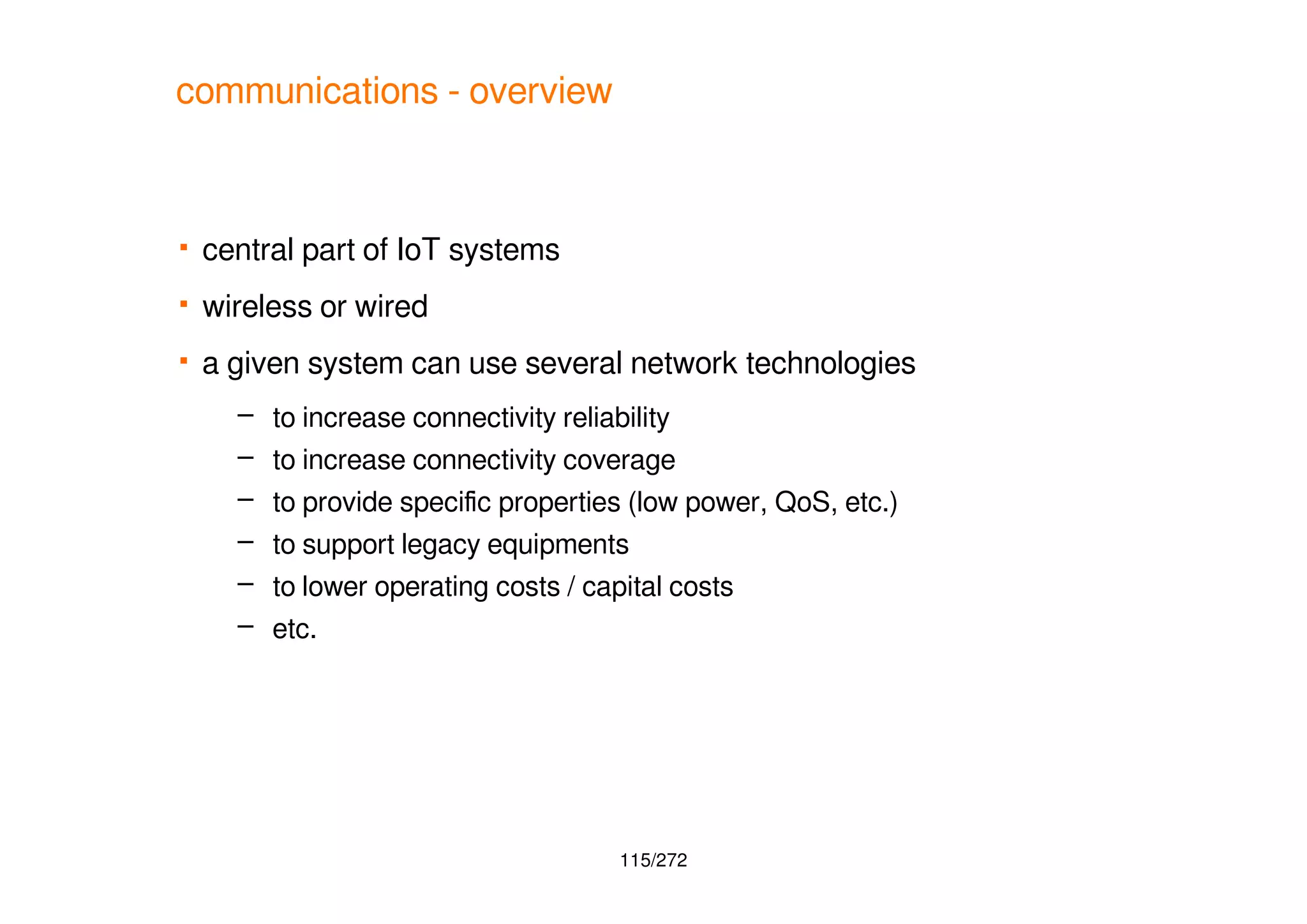
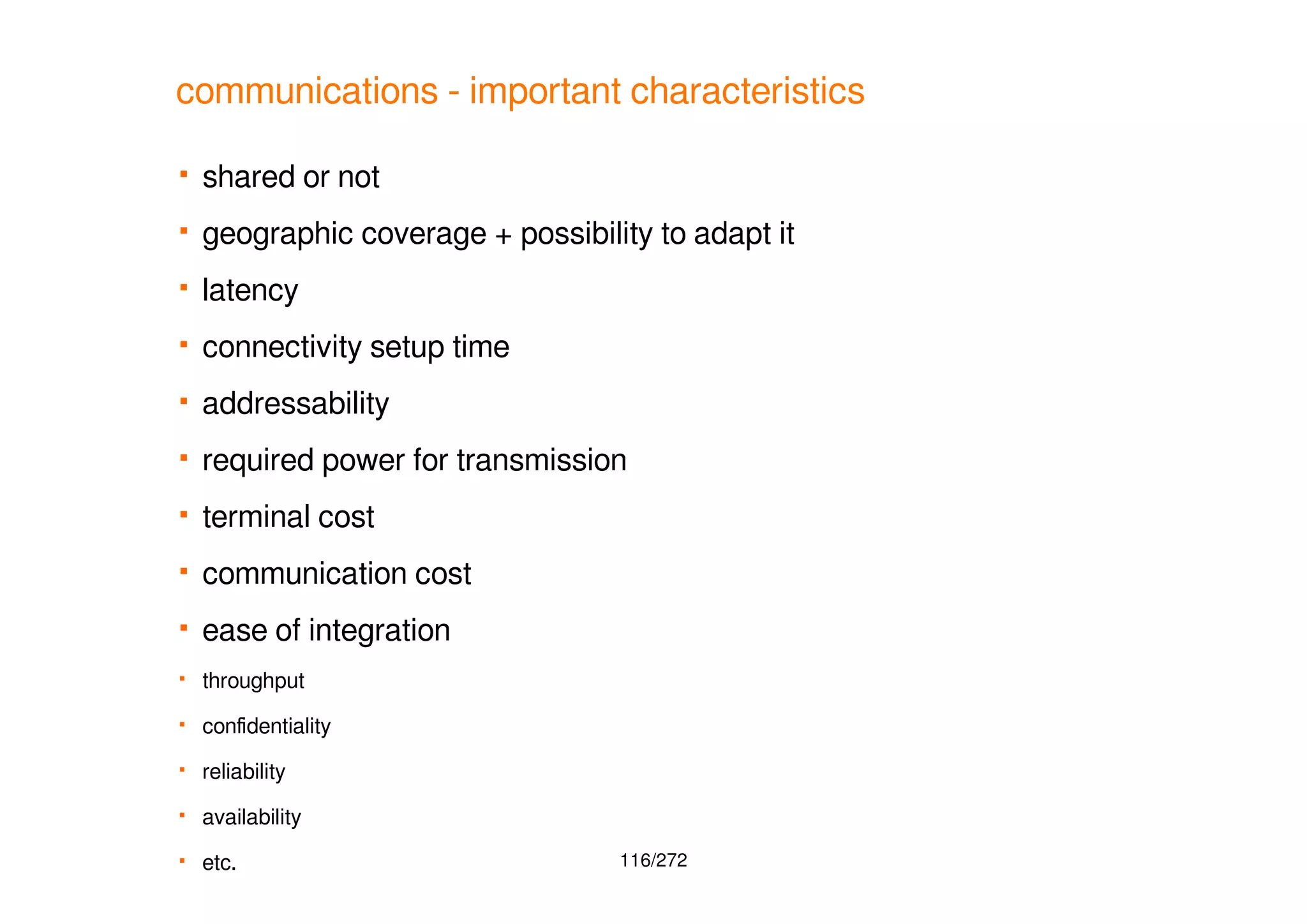
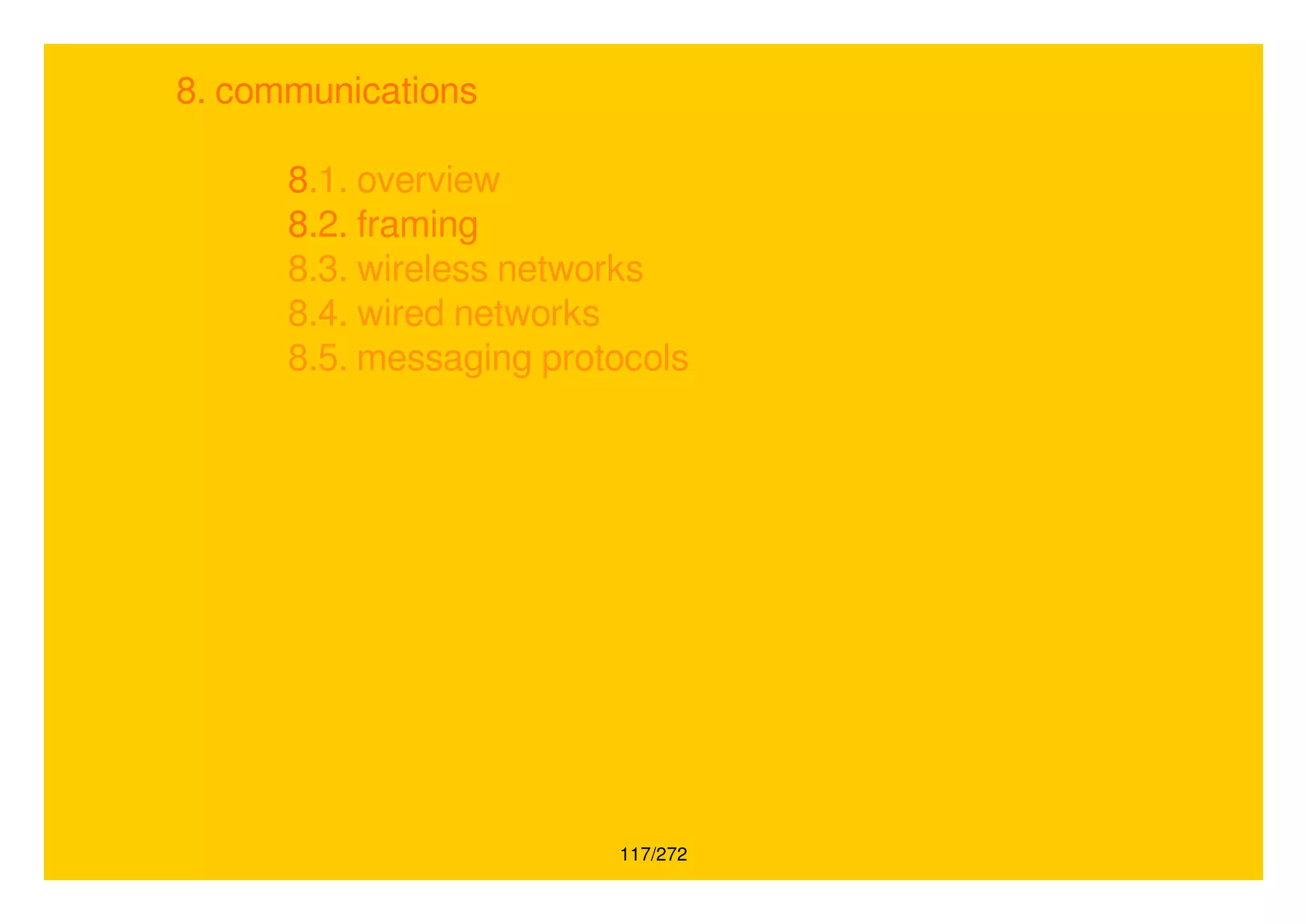
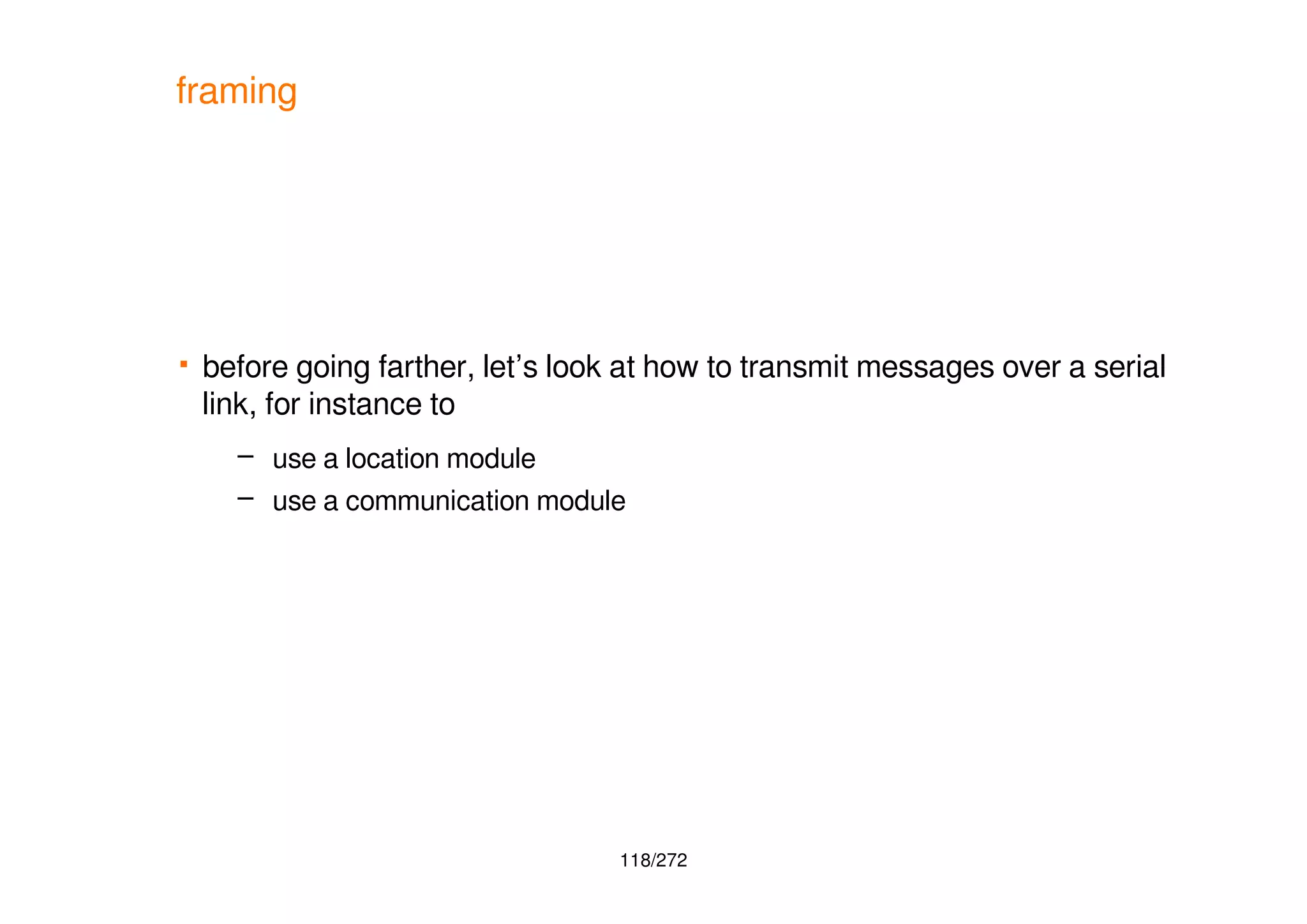
![119/272
radio set mod lora<CR><LF>
ok<CR><LF>
radio tx <data><CR><LF>
ok<CR><LF>
radio_tx_ok<CR><LF>
our demo system - remote device
confgure then request to send data
[Com01]](https://image.slidesharecdn.com/20180217-iotandconnecteddevices-180217095428/75/IoT-and-connected-devices-an-overview-119-2048.jpg)
![120/272
radio set mod lora<CR><LF>
ok<CR><LF>
radio rx <window><CR><LF>
ok<CR><LF>
radio_rx <data><CR><LF>
our demo system - central device
confgure then wait for received data
[Com01]](https://image.slidesharecdn.com/20180217-iotandconnecteddevices-180217095428/75/IoT-and-connected-devices-an-overview-120-2048.jpg)
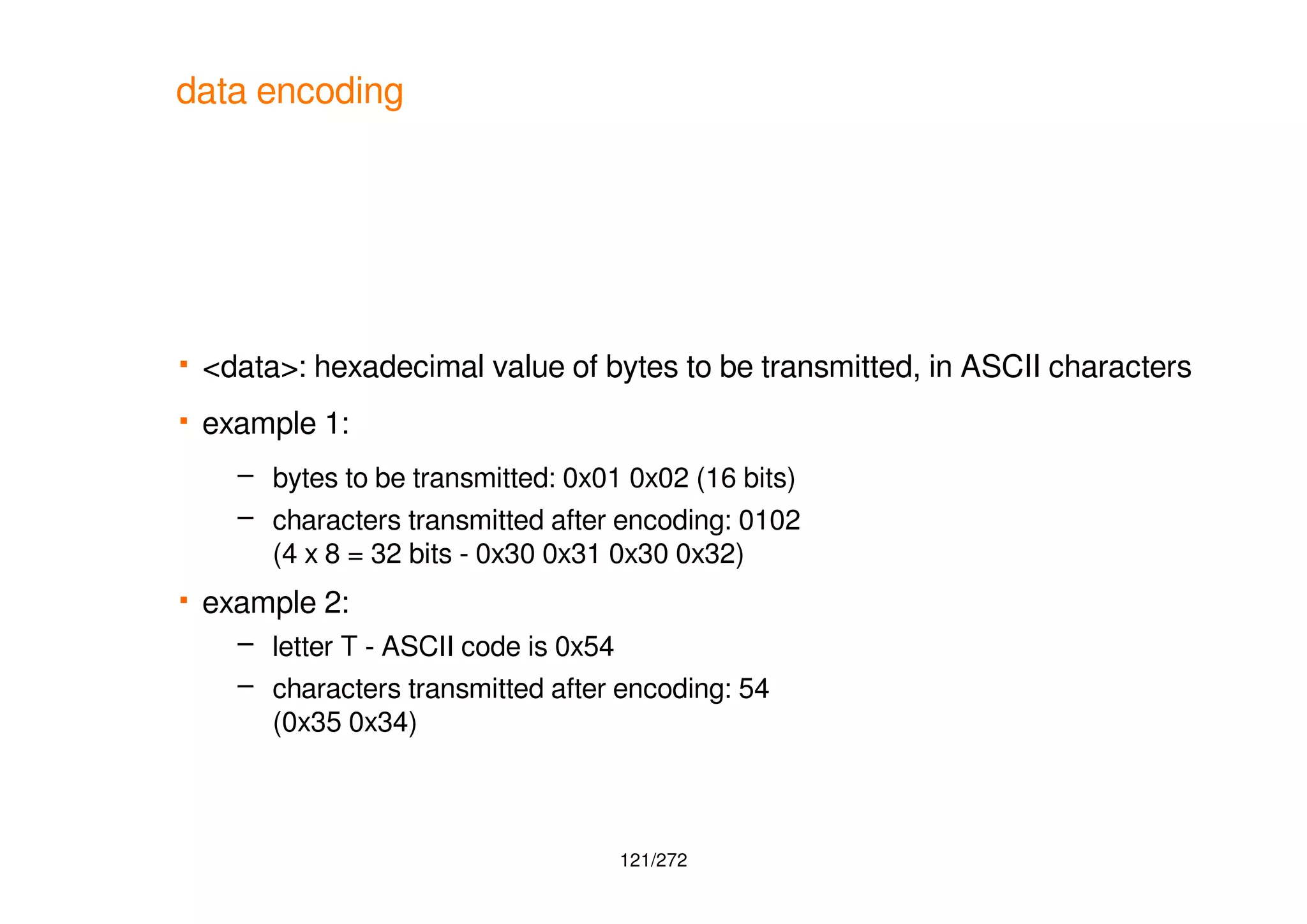
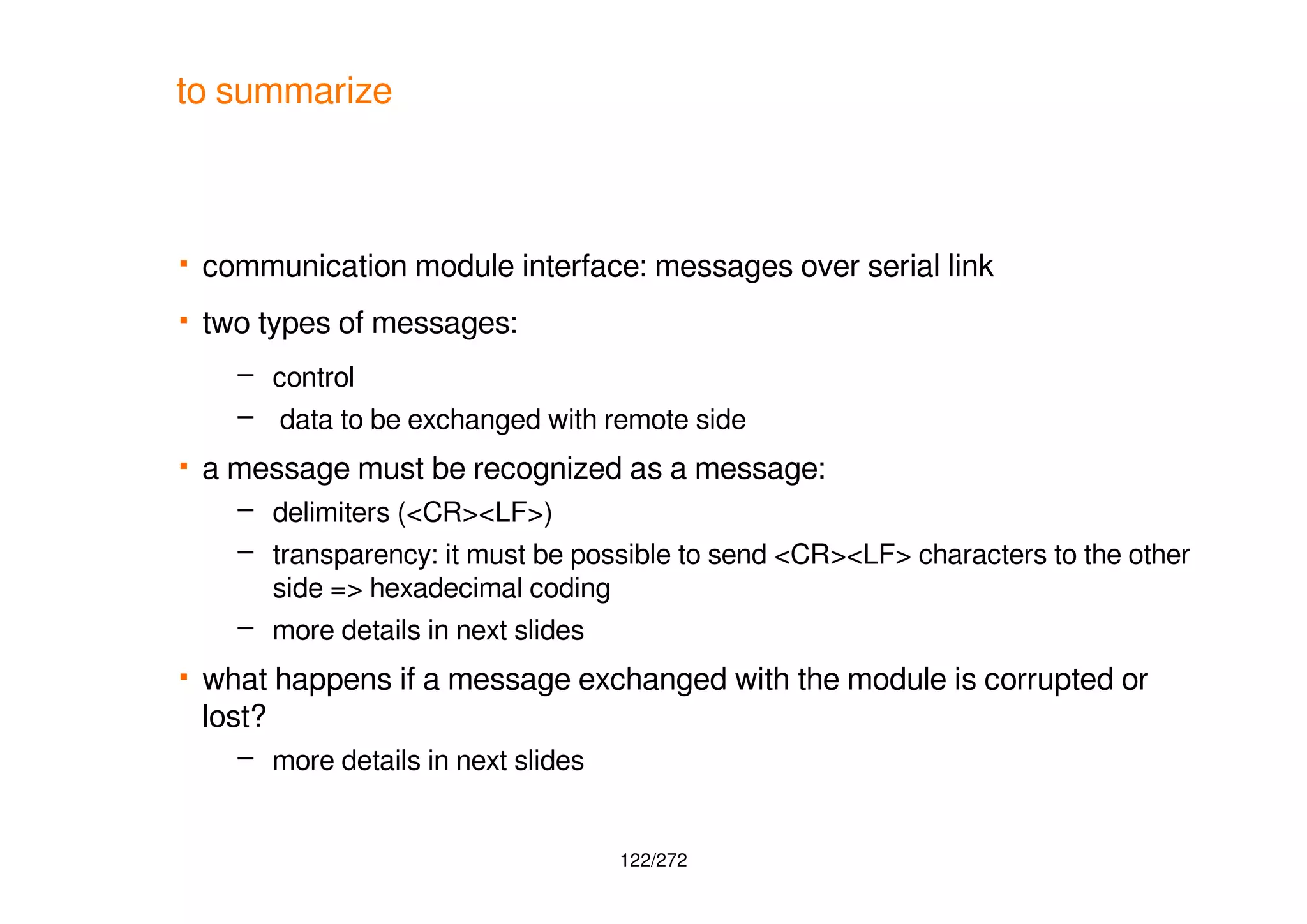
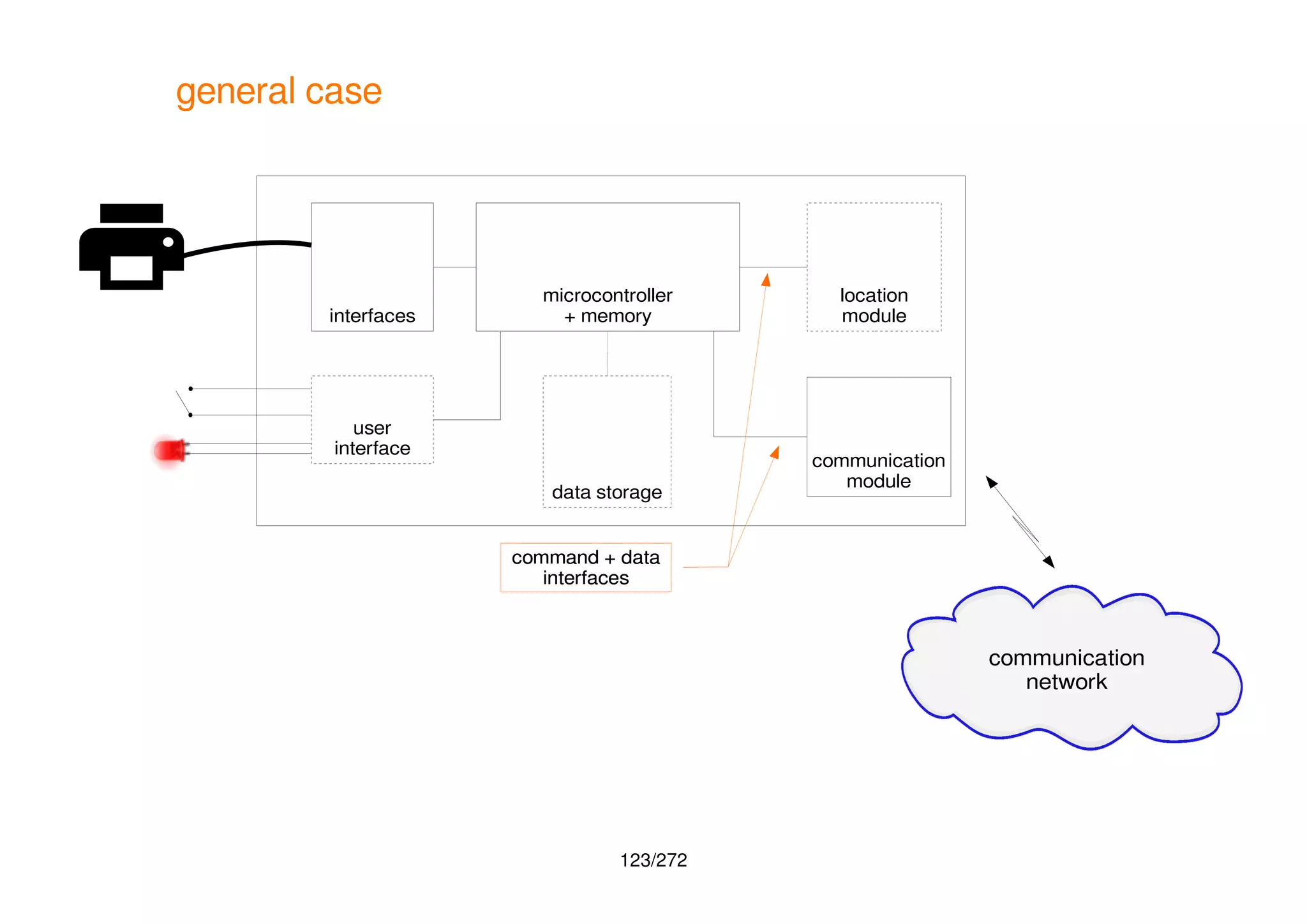
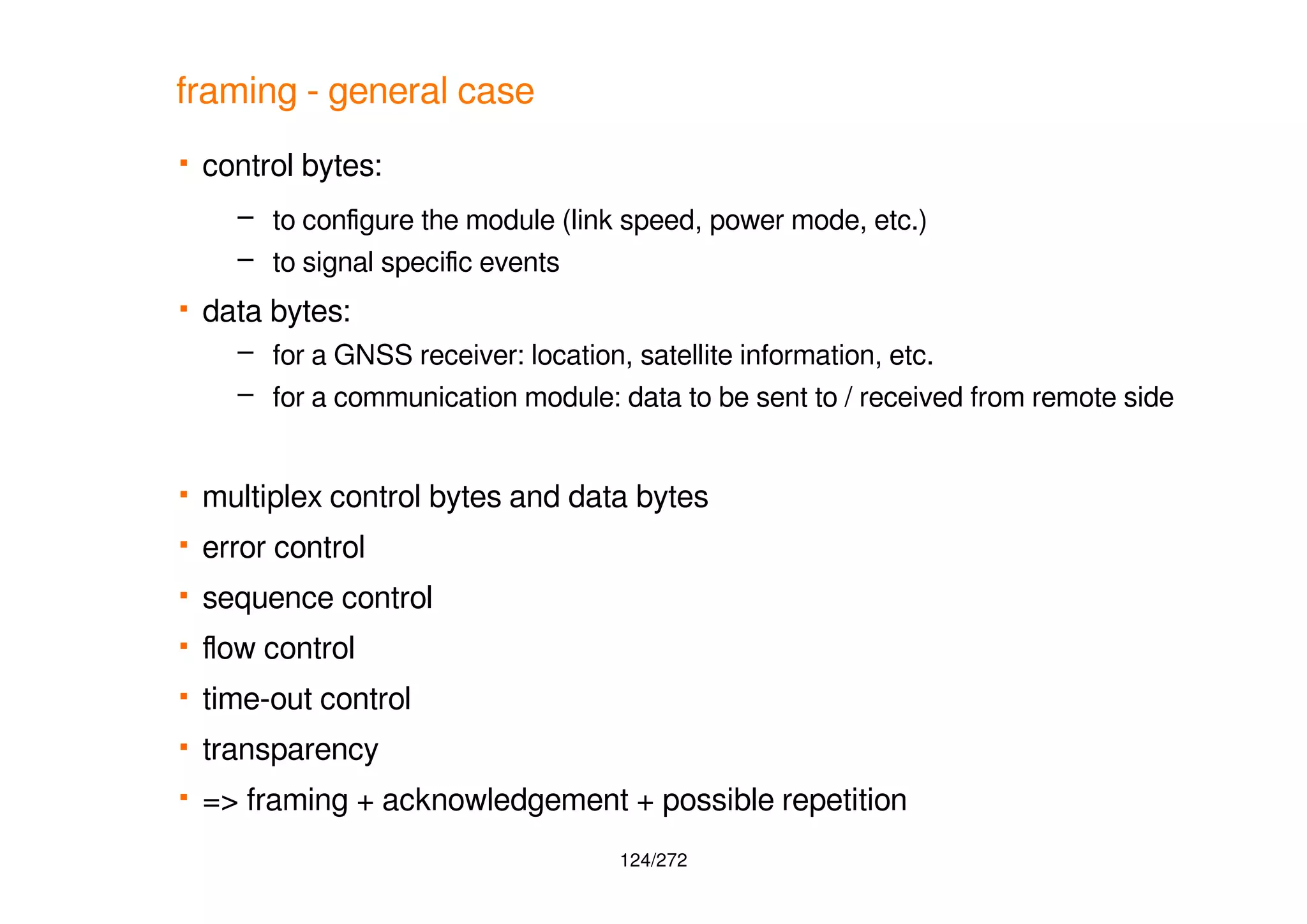

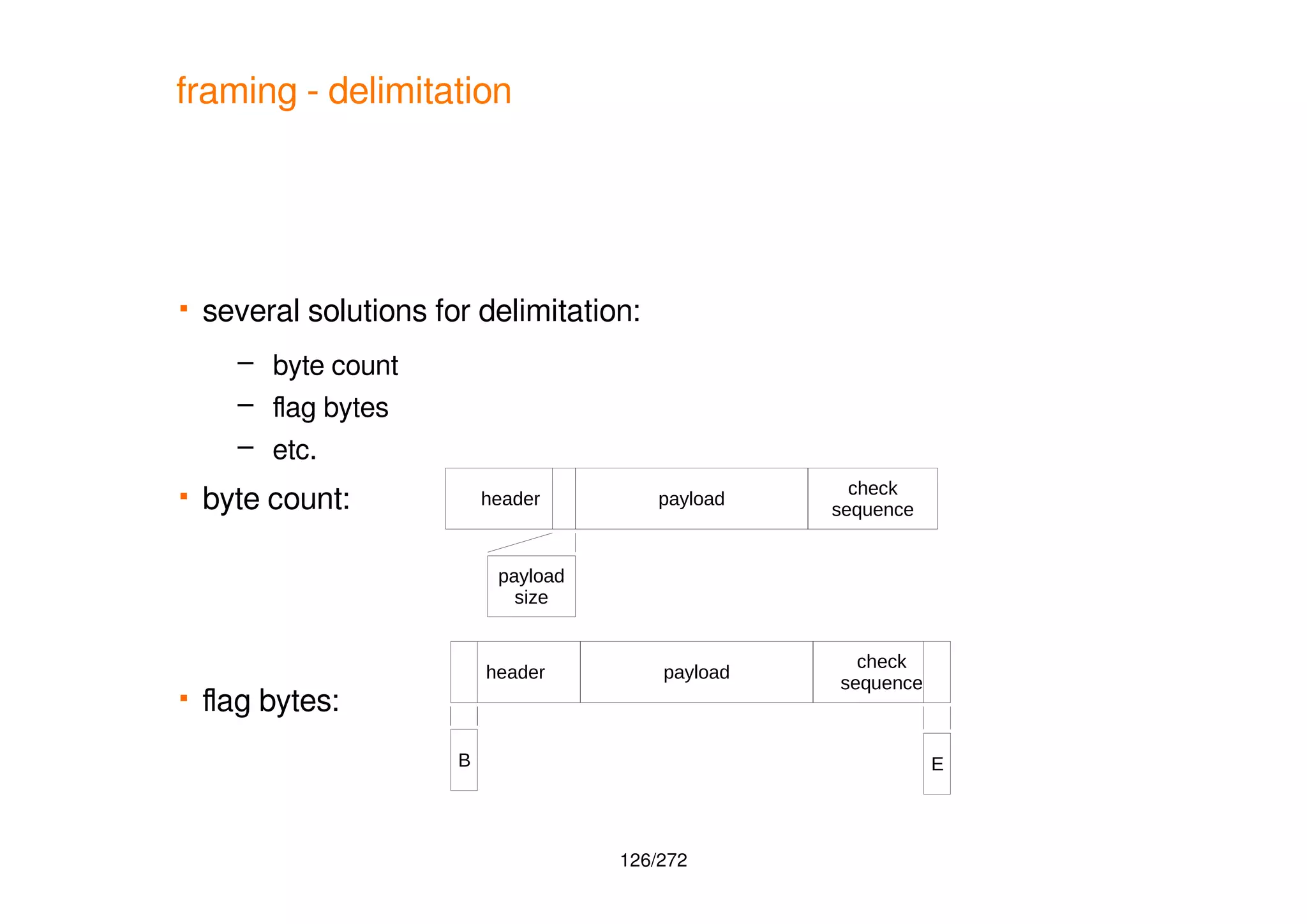
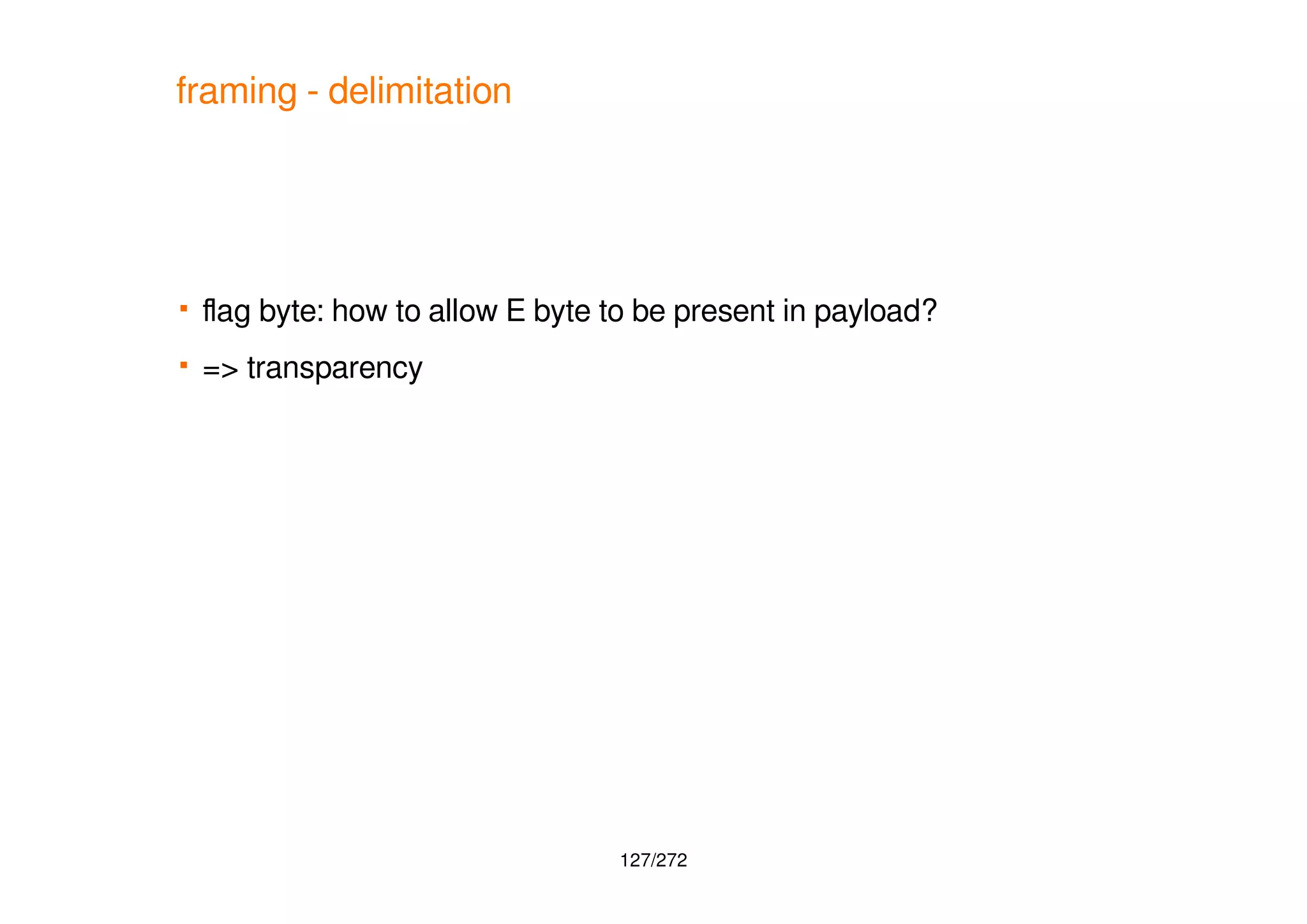
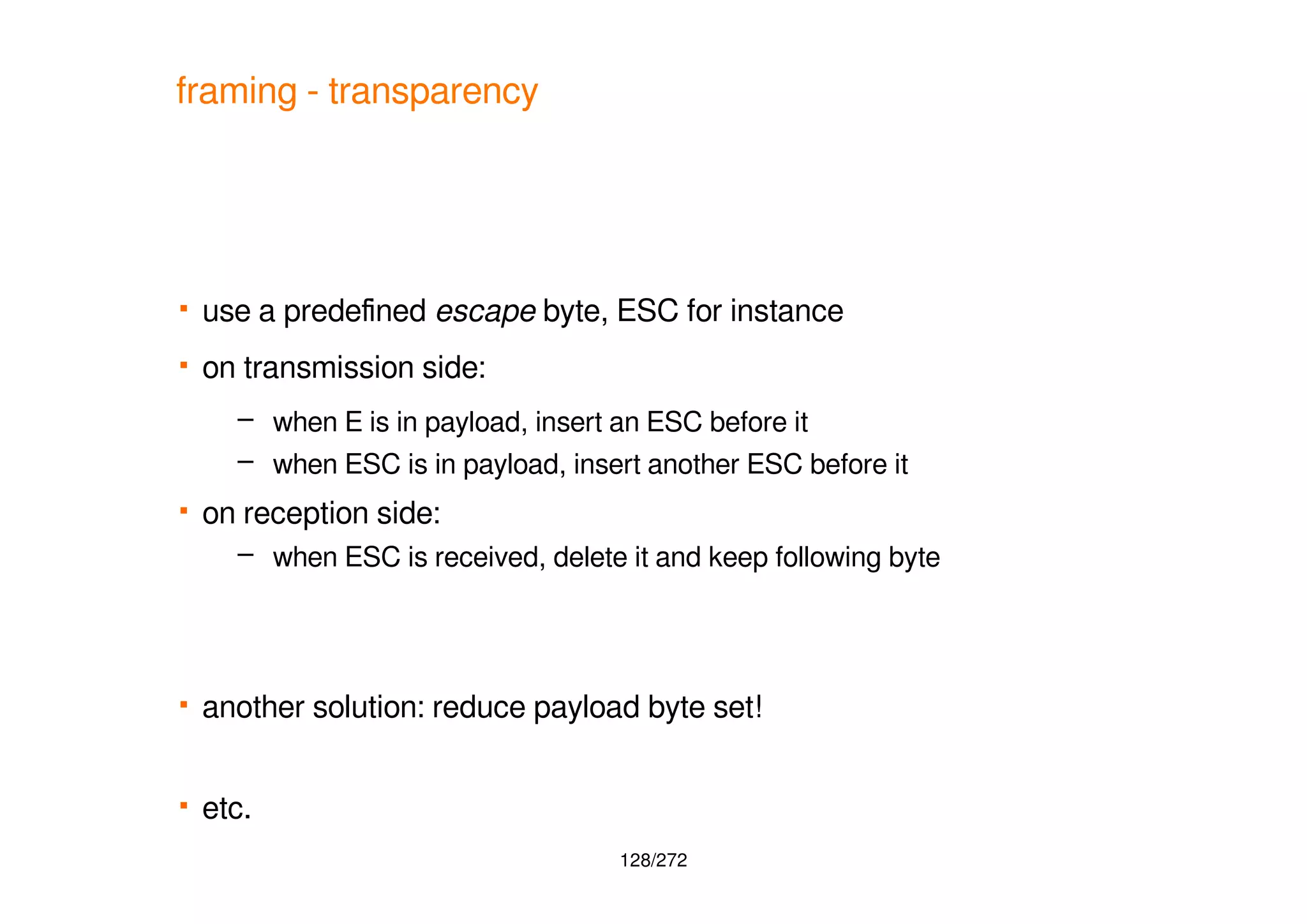
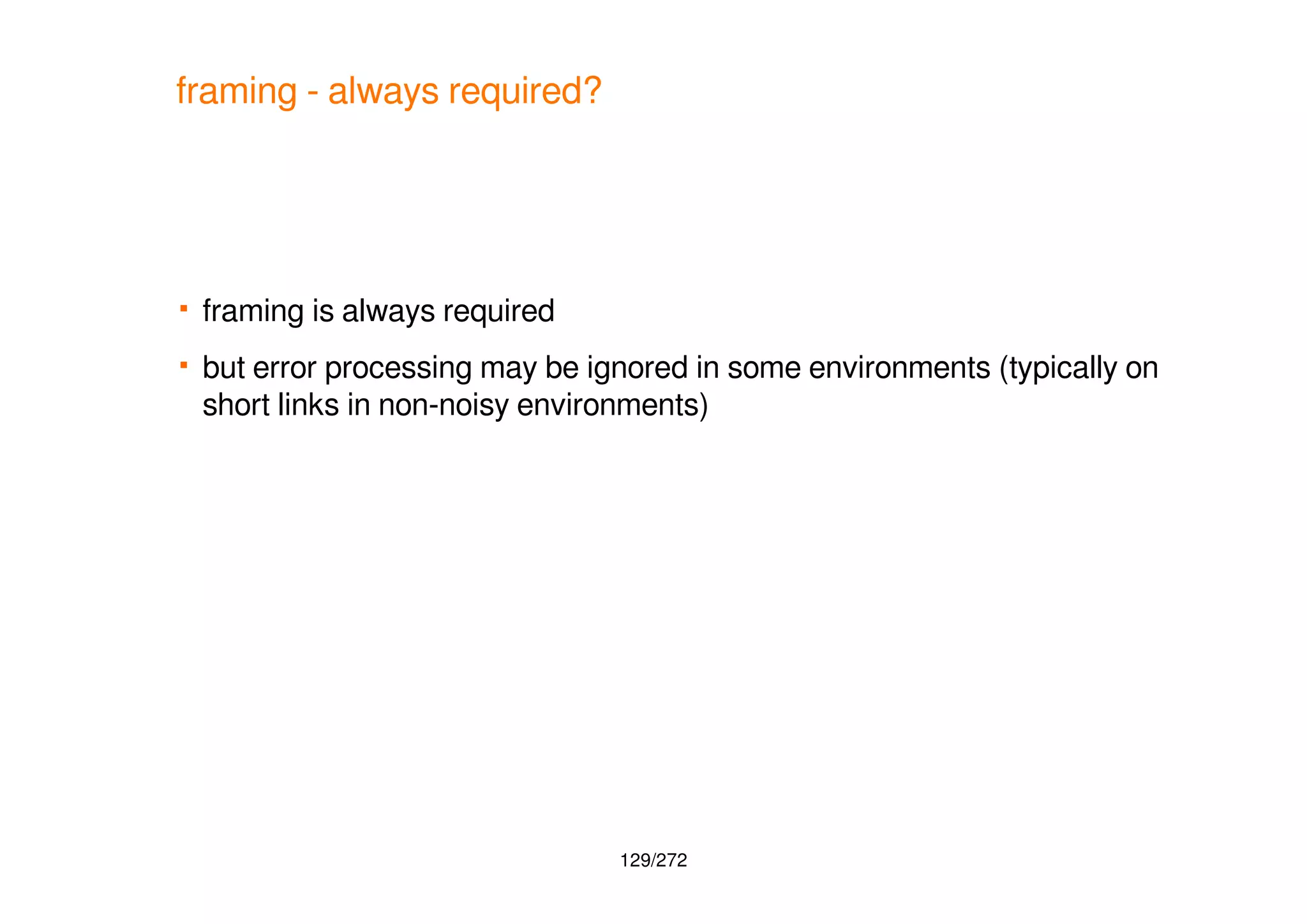
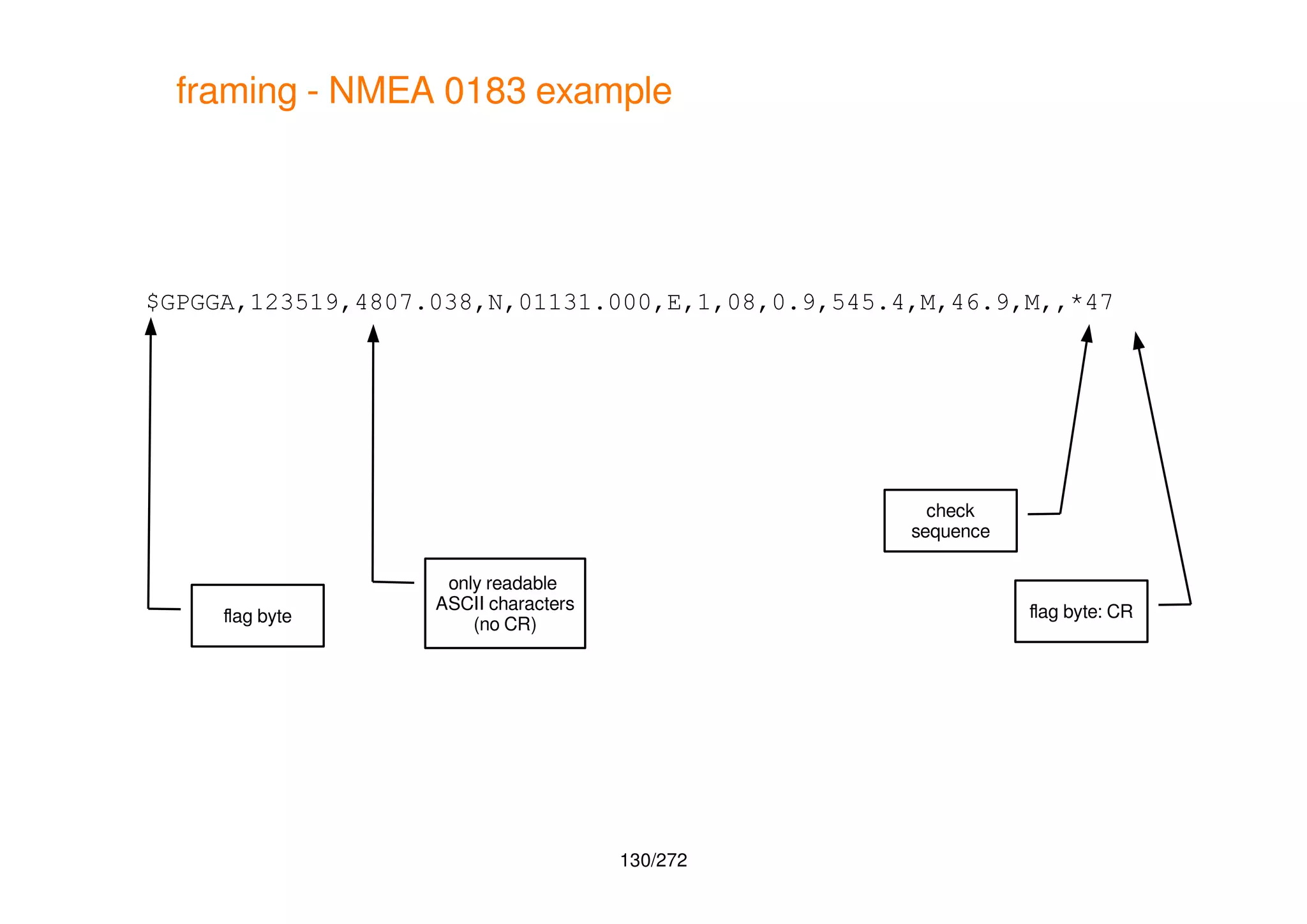
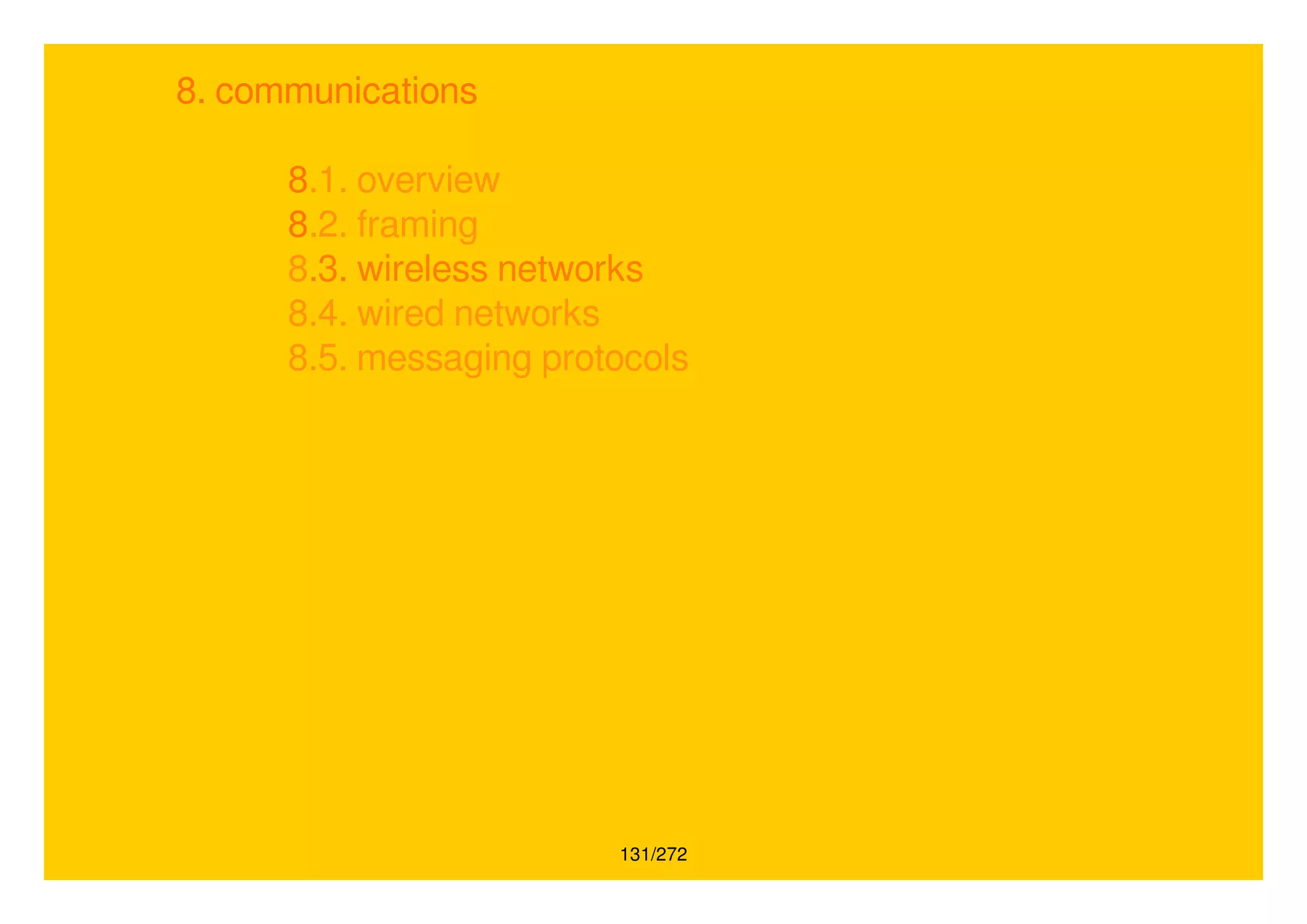
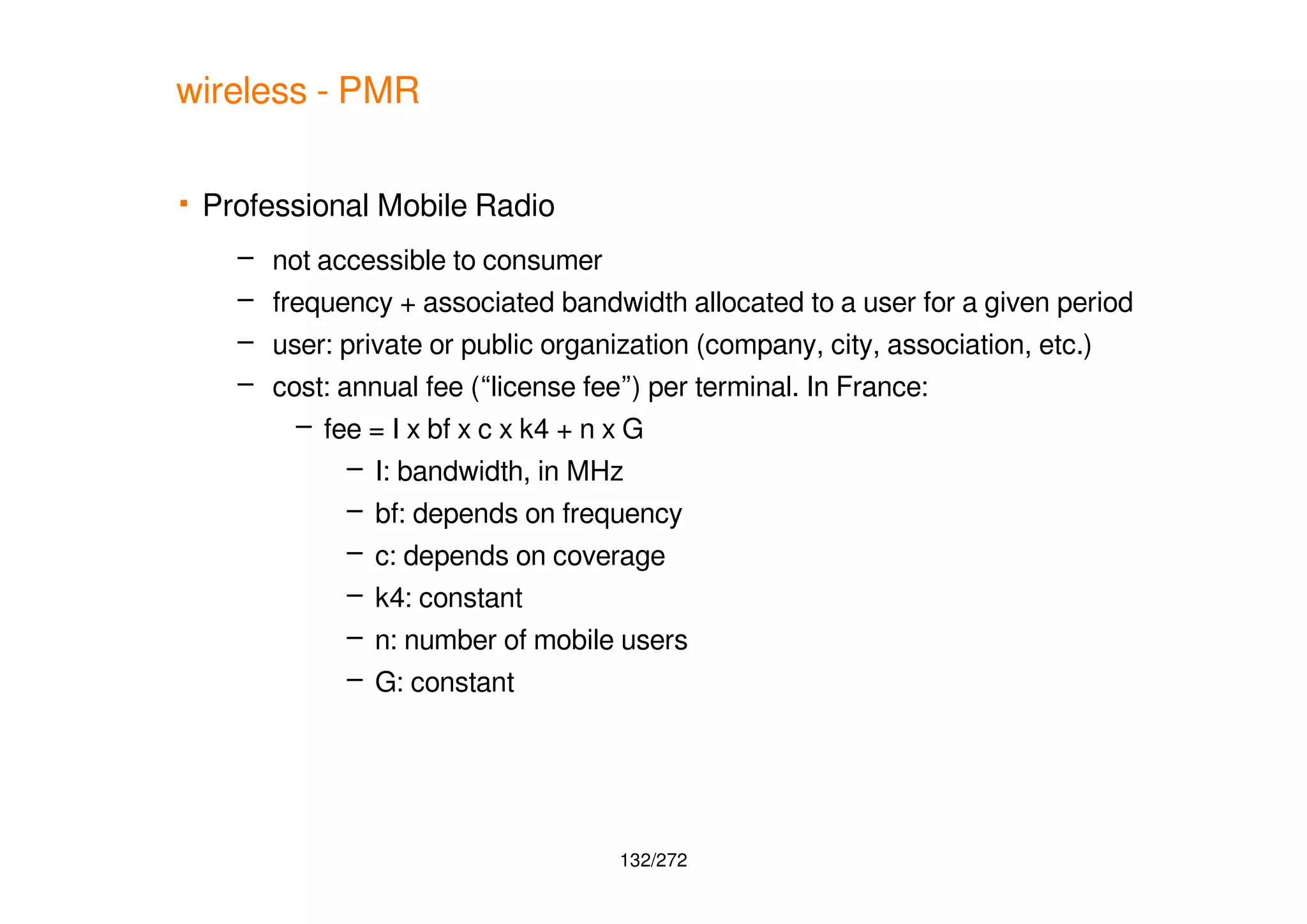
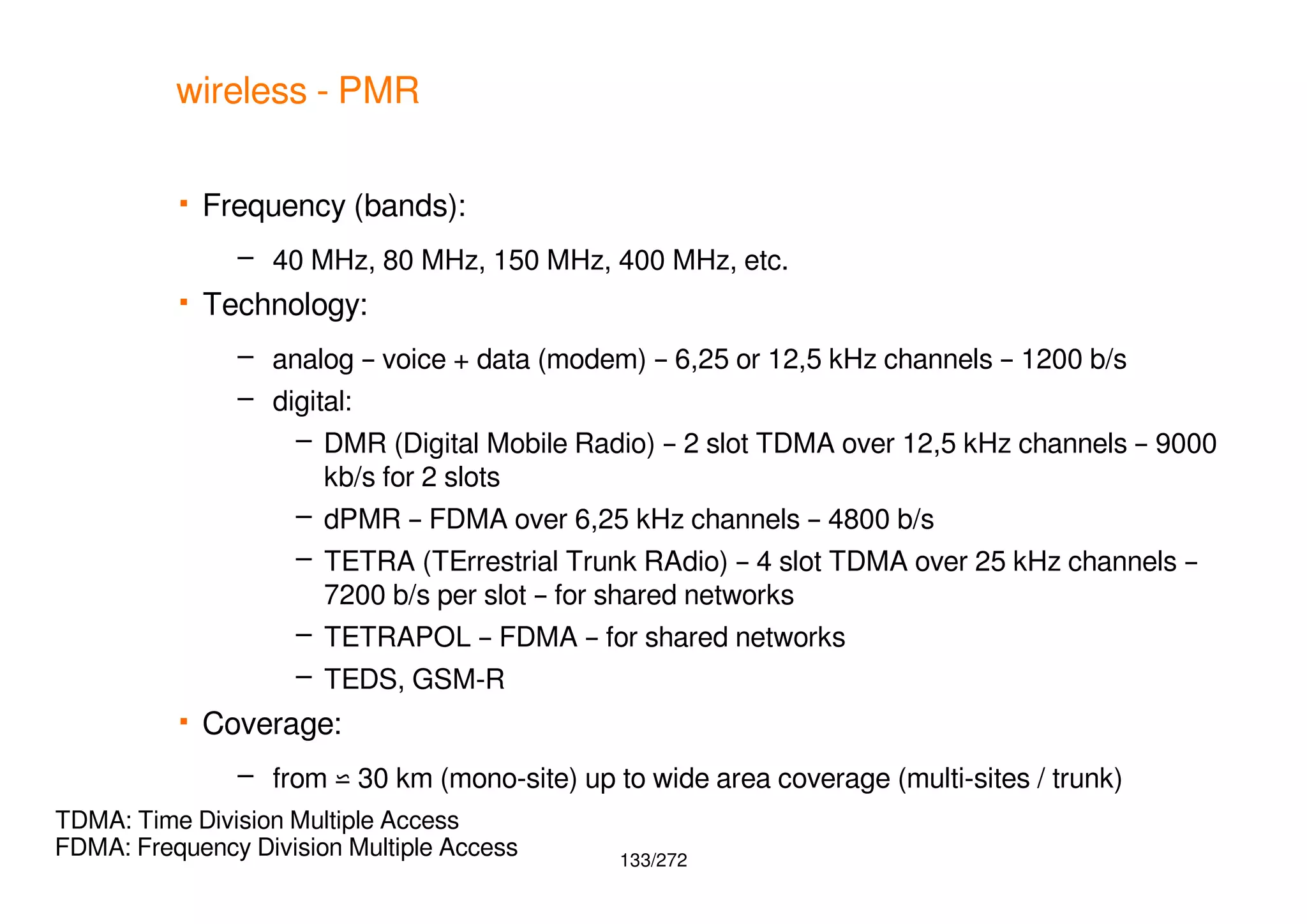
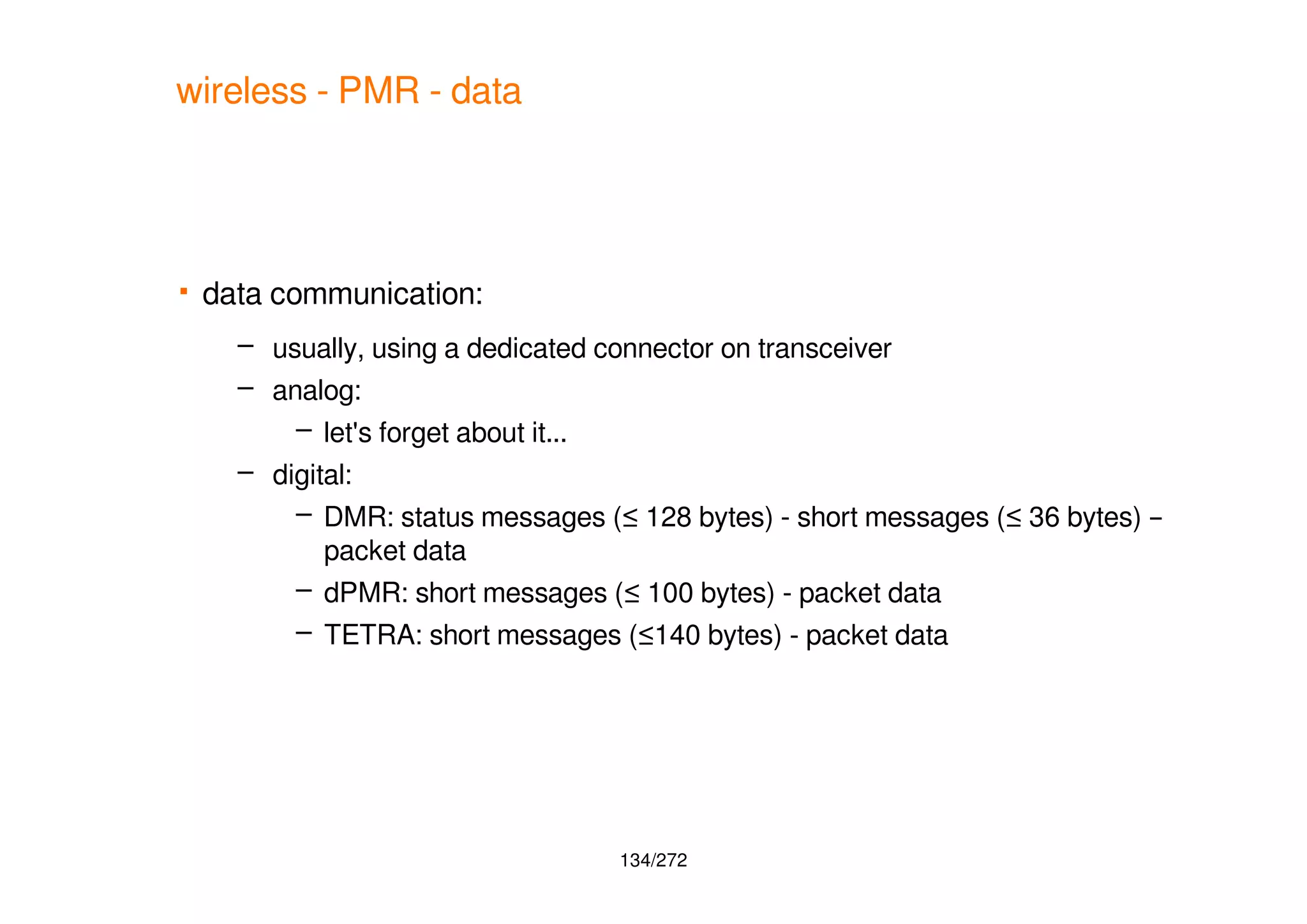
![135/272
wireless - PMR
in 2016:
– around 25.000 PMR networks in France
users:
– taxis, public transports, ambulances, airports, highways, security, industry,
constructions, etc.
– public organizations: cities, hospitals, etc.
[Com06]](https://image.slidesharecdn.com/20180217-iotandconnecteddevices-180217095428/75/IoT-and-connected-devices-an-overview-135-2048.jpg)
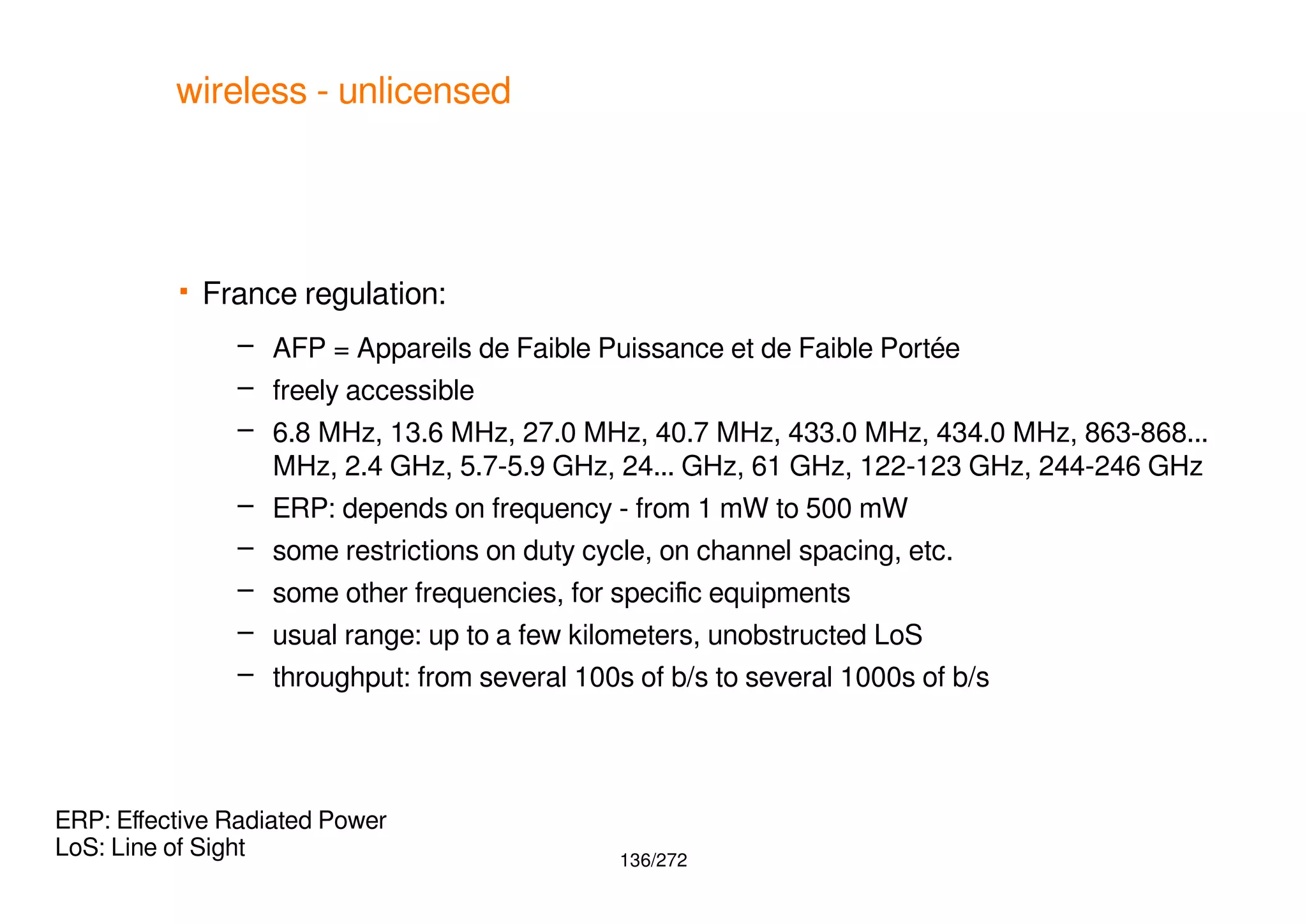

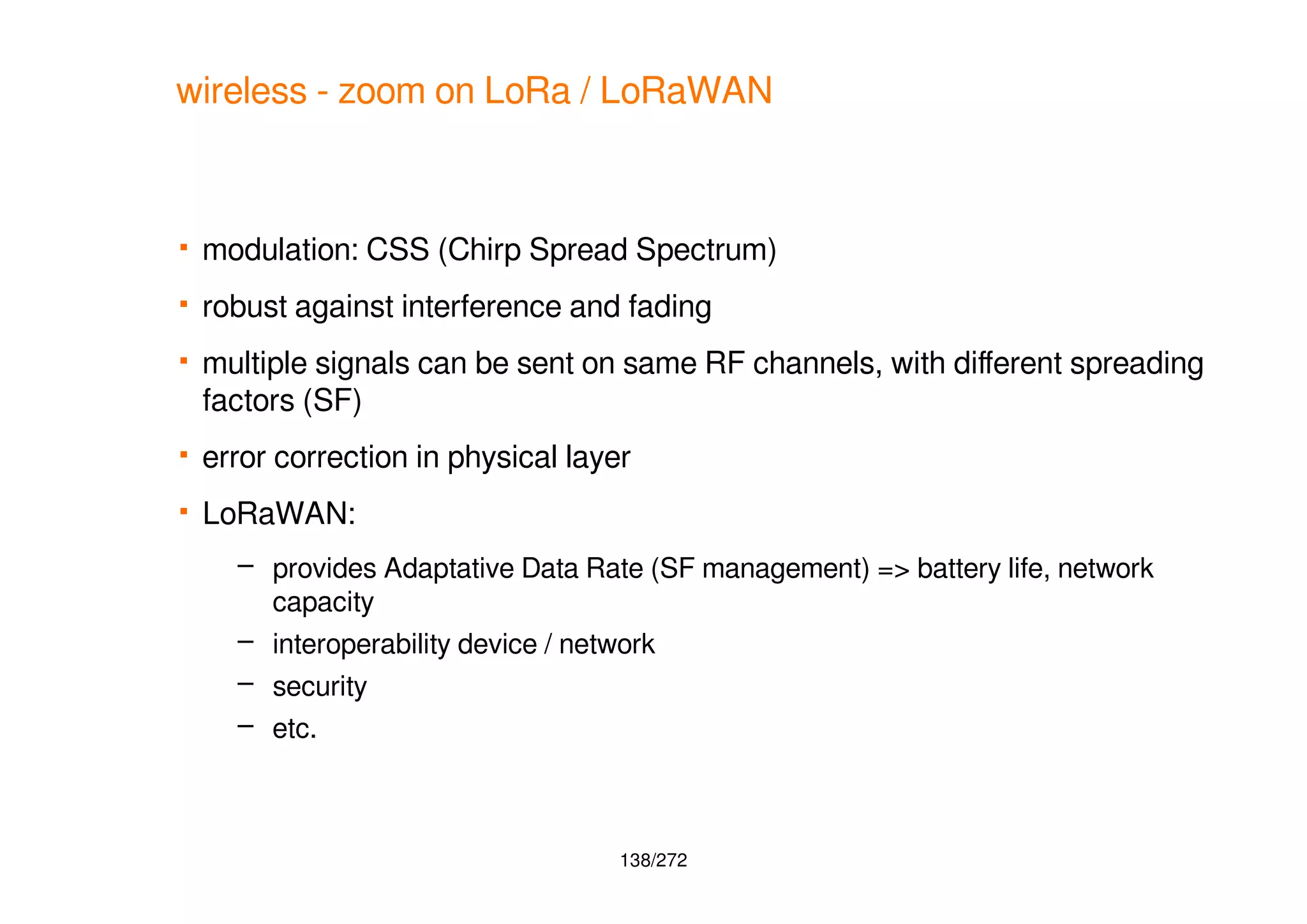
![139/272
wireless - zoom on LoRa / LoRaWAN
[Com07]](https://image.slidesharecdn.com/20180217-iotandconnecteddevices-180217095428/75/IoT-and-connected-devices-an-overview-139-2048.jpg)
![140/272
wireless - zoom on LoRa / LoRaWAN
[Com07]](https://image.slidesharecdn.com/20180217-iotandconnecteddevices-180217095428/75/IoT-and-connected-devices-an-overview-140-2048.jpg)
![141/272
wireless - zoom on LoRa / LoRaWAN
[Com07]](https://image.slidesharecdn.com/20180217-iotandconnecteddevices-180217095428/75/IoT-and-connected-devices-an-overview-141-2048.jpg)
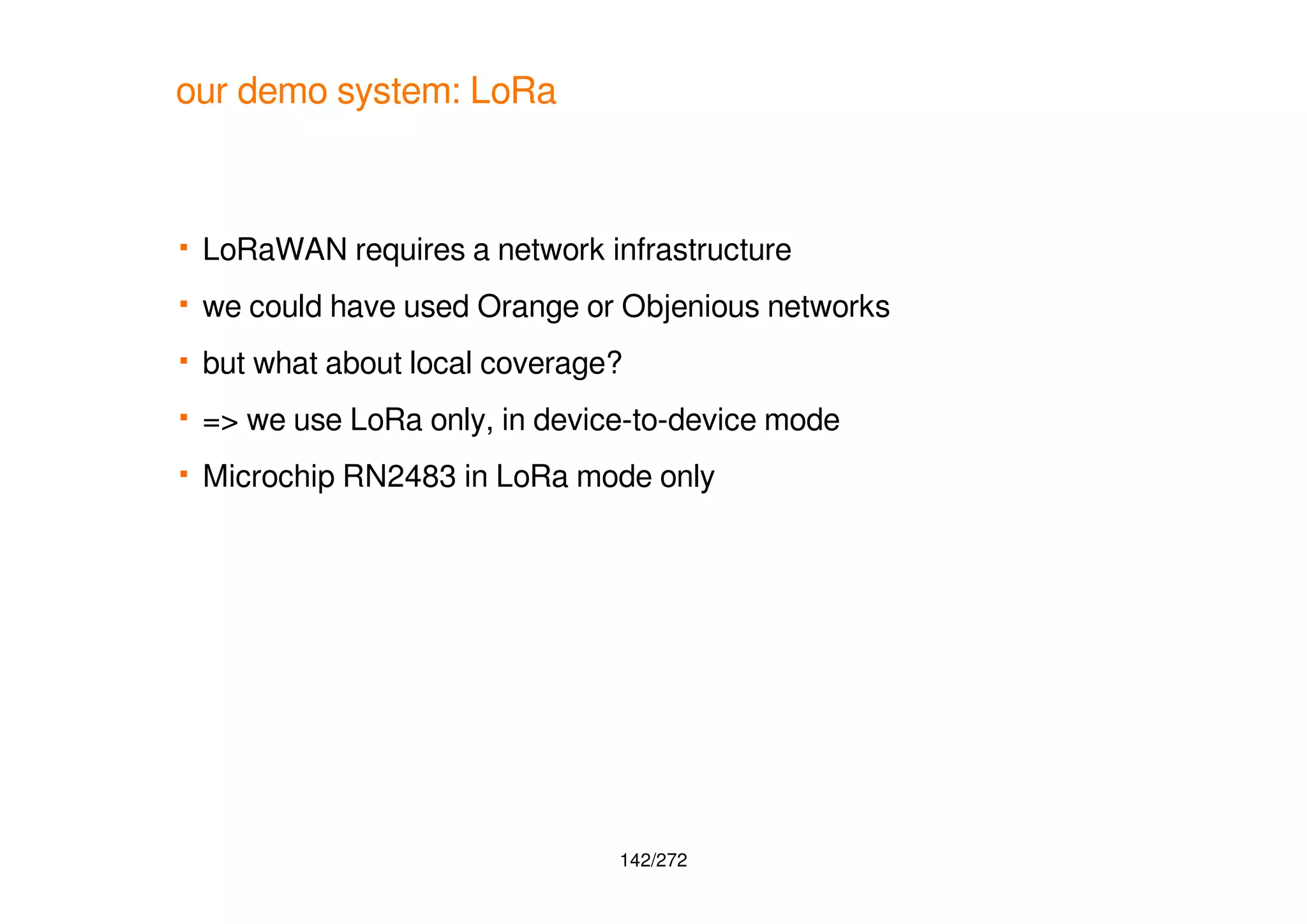
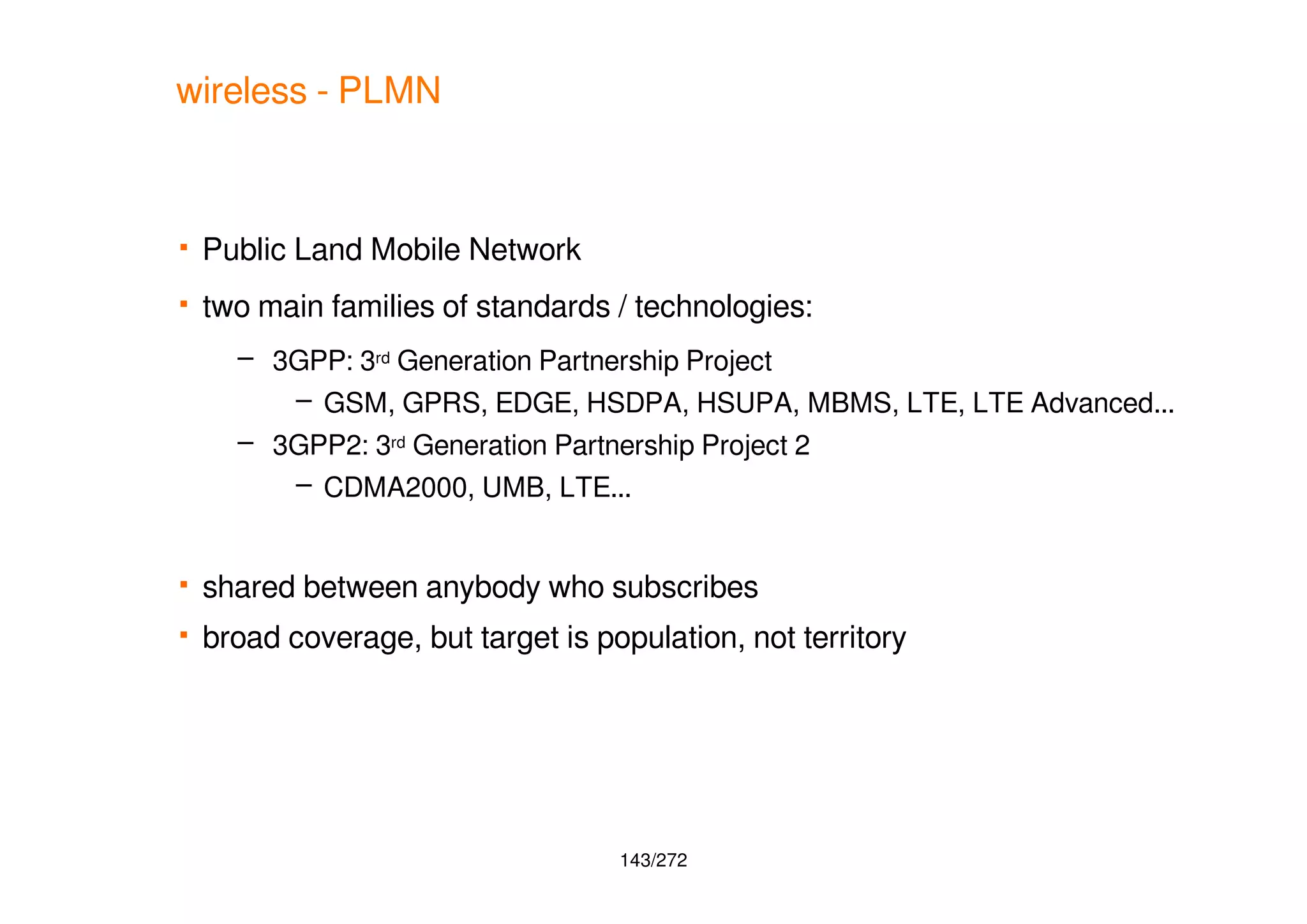
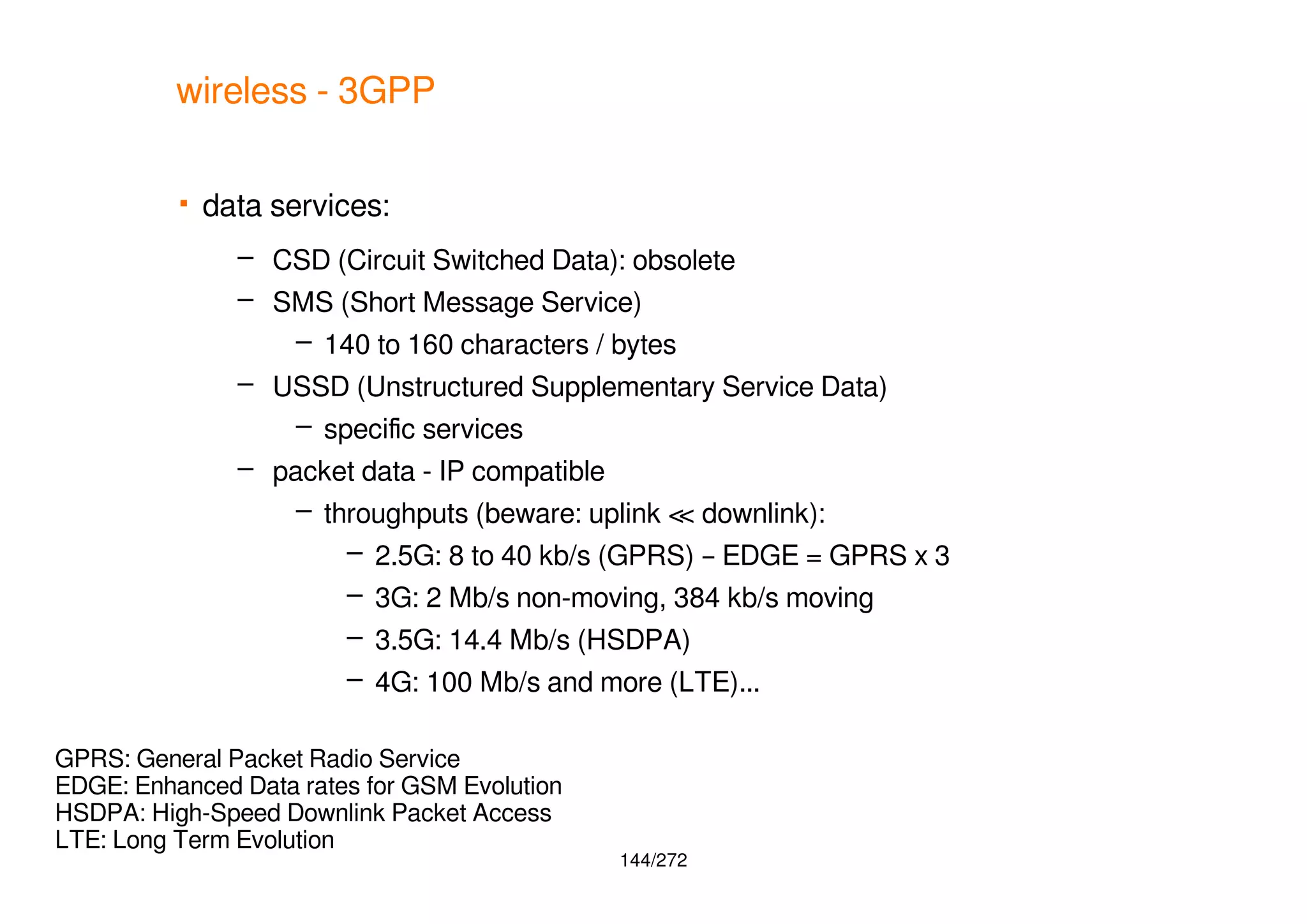
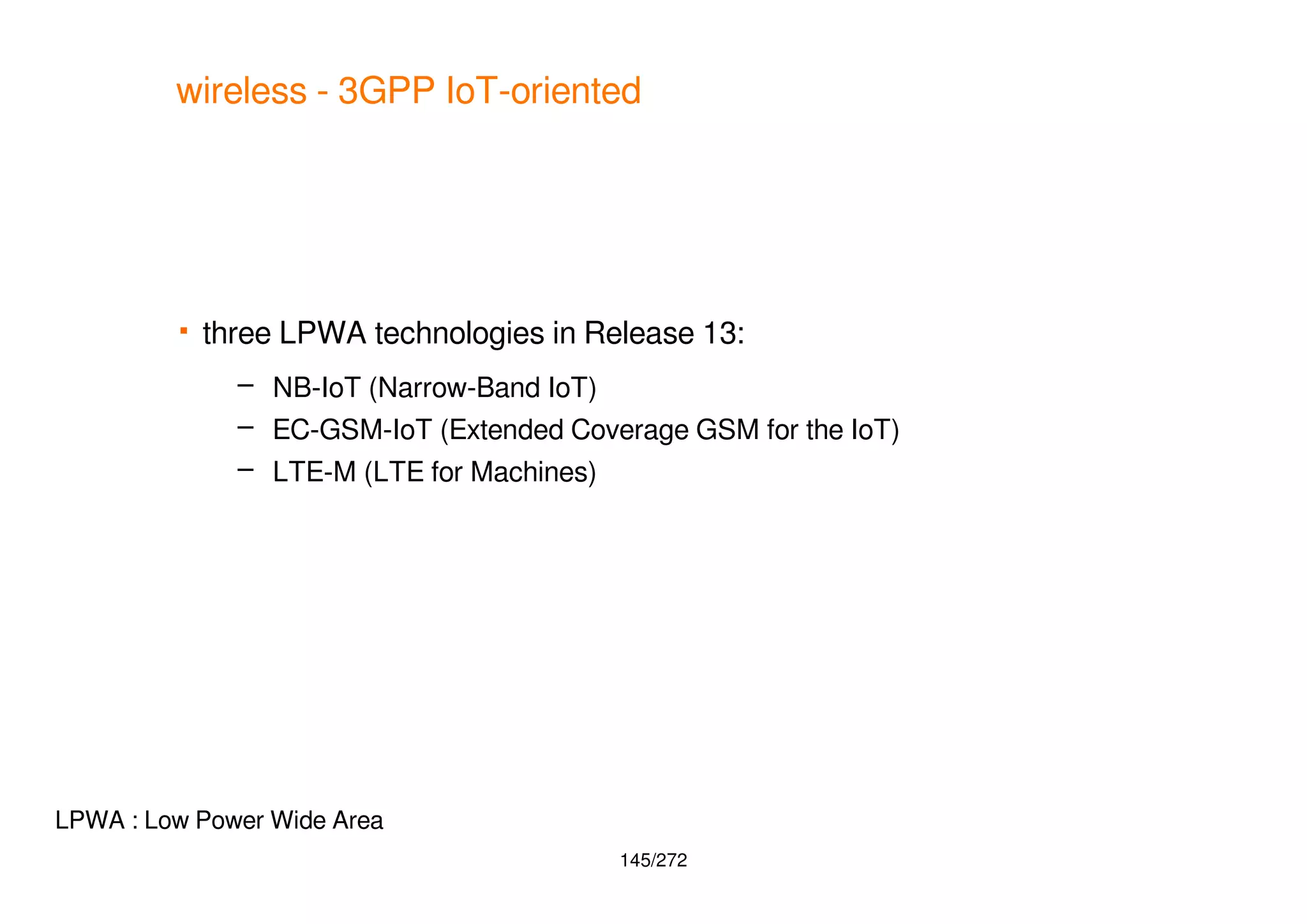
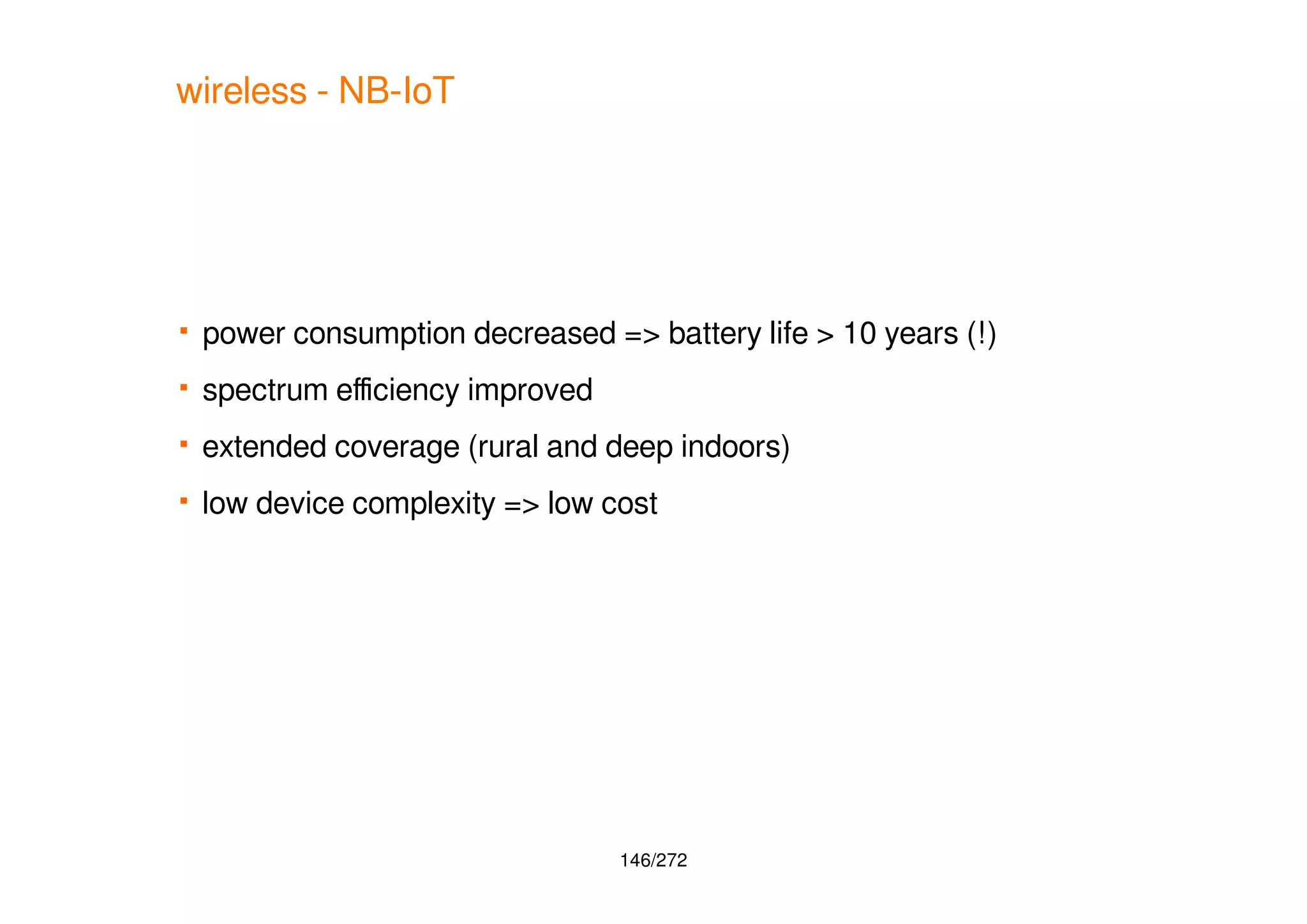
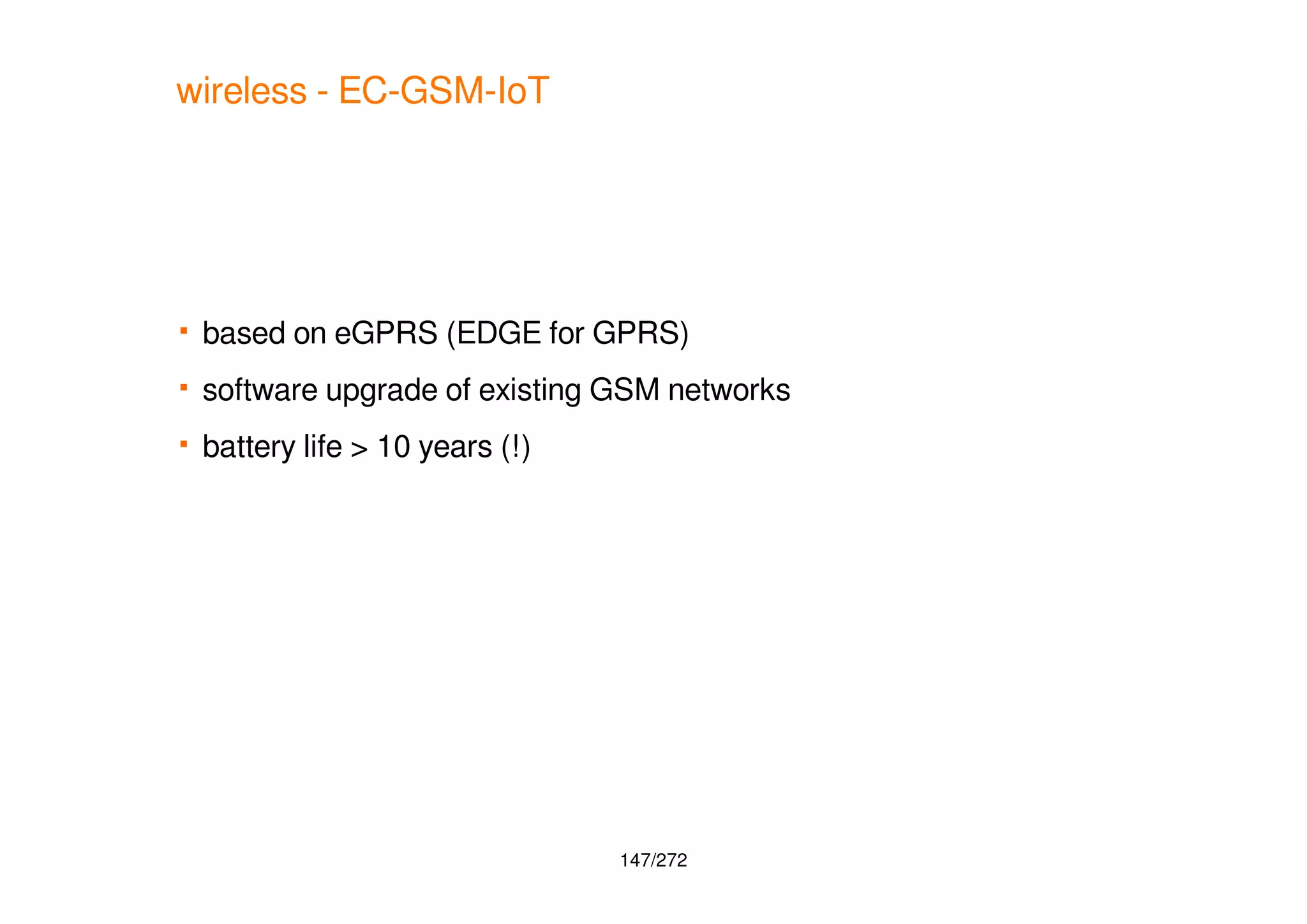
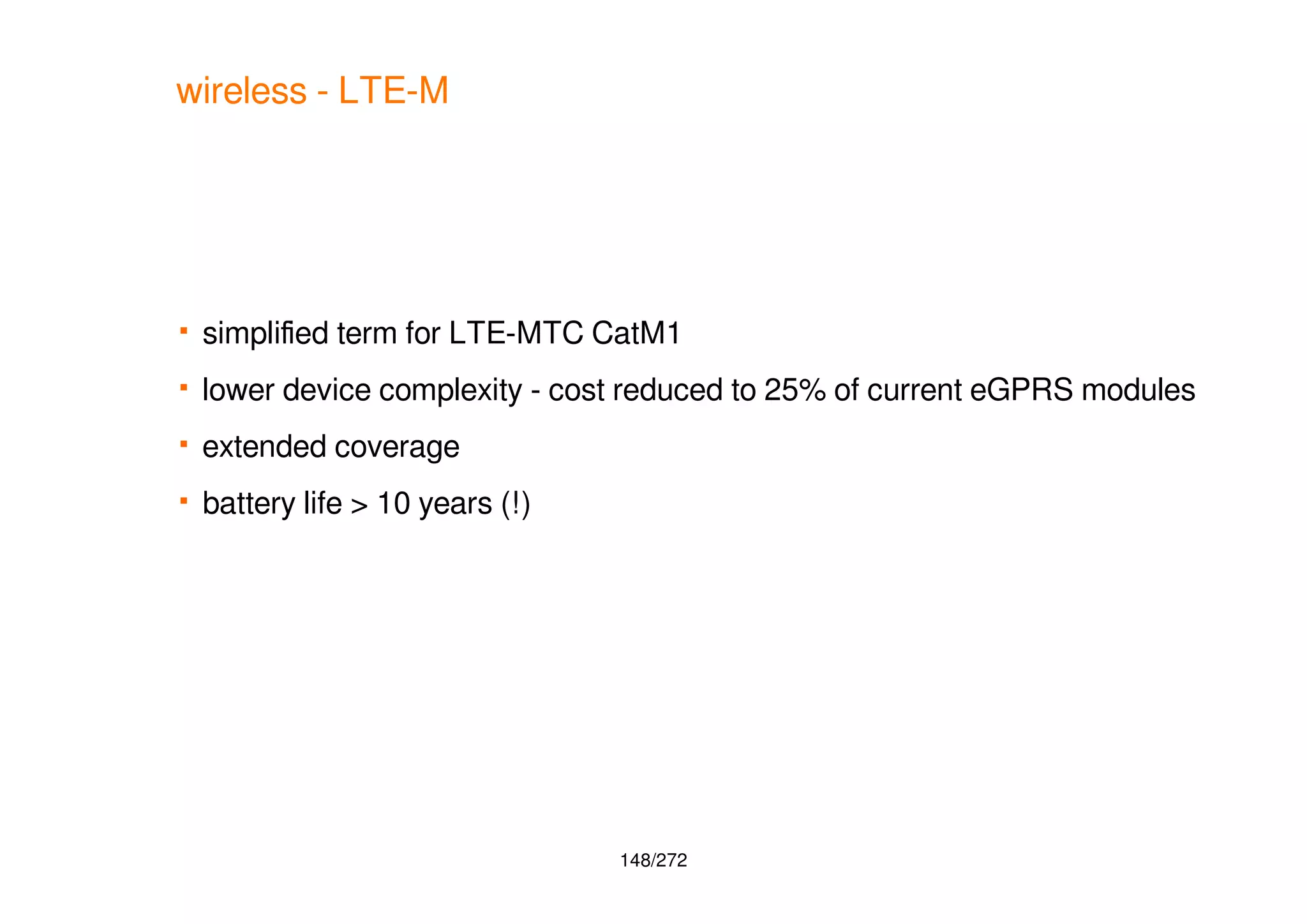
![149/272
wireless - LPWA comparison
10 year life impossible if received signal too low
data rate can be decreased => longer TX => lower battery life
[Com04]](https://image.slidesharecdn.com/20180217-iotandconnecteddevices-180217095428/75/IoT-and-connected-devices-an-overview-149-2048.jpg)
![150/272
interfacing with 3GPP module
AT commands, defned in 3GPP TS 27.007 (and TS 07.07)
commands:
[Com02]](https://image.slidesharecdn.com/20180217-iotandconnecteddevices-180217095428/75/IoT-and-connected-devices-an-overview-150-2048.jpg)
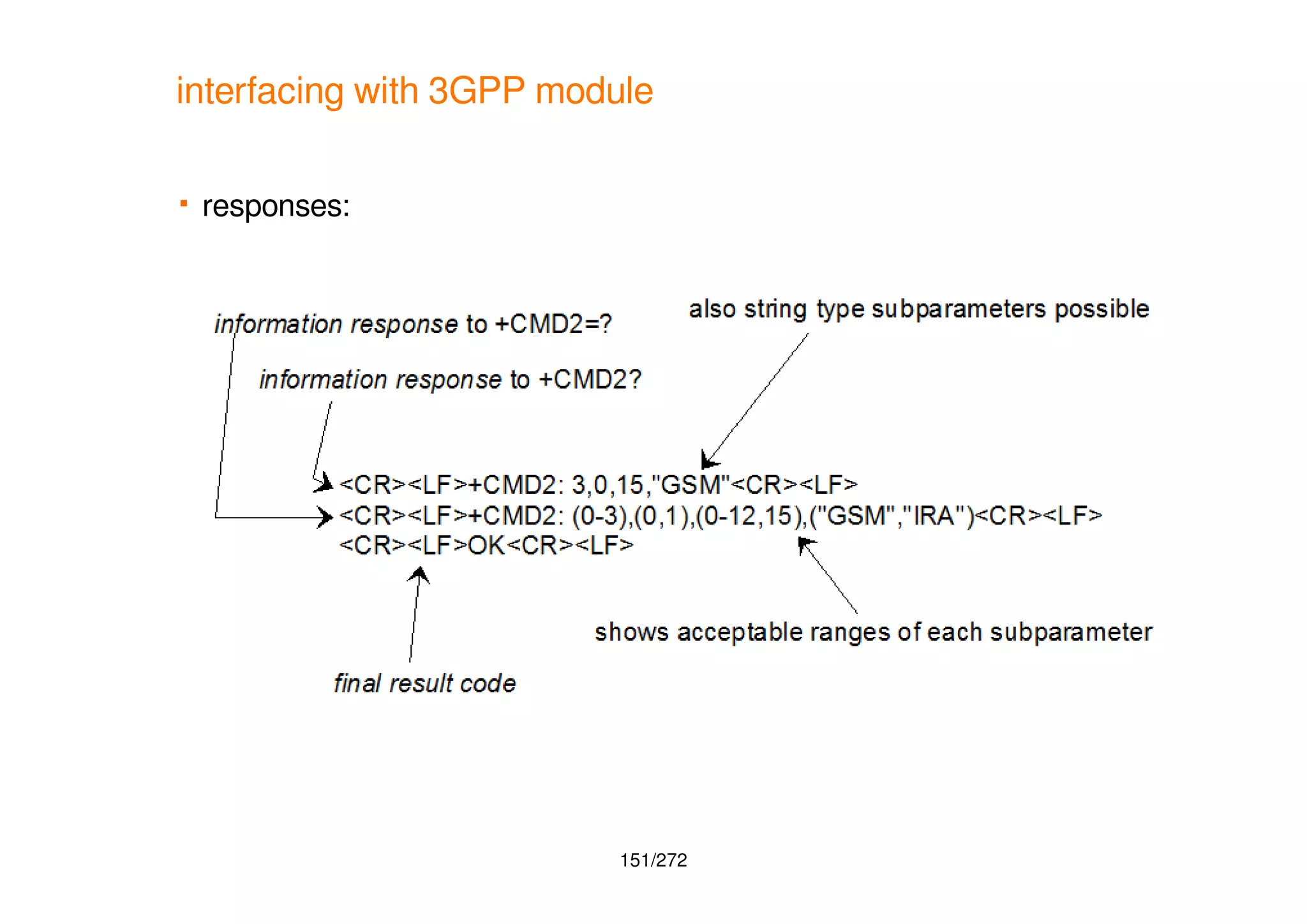
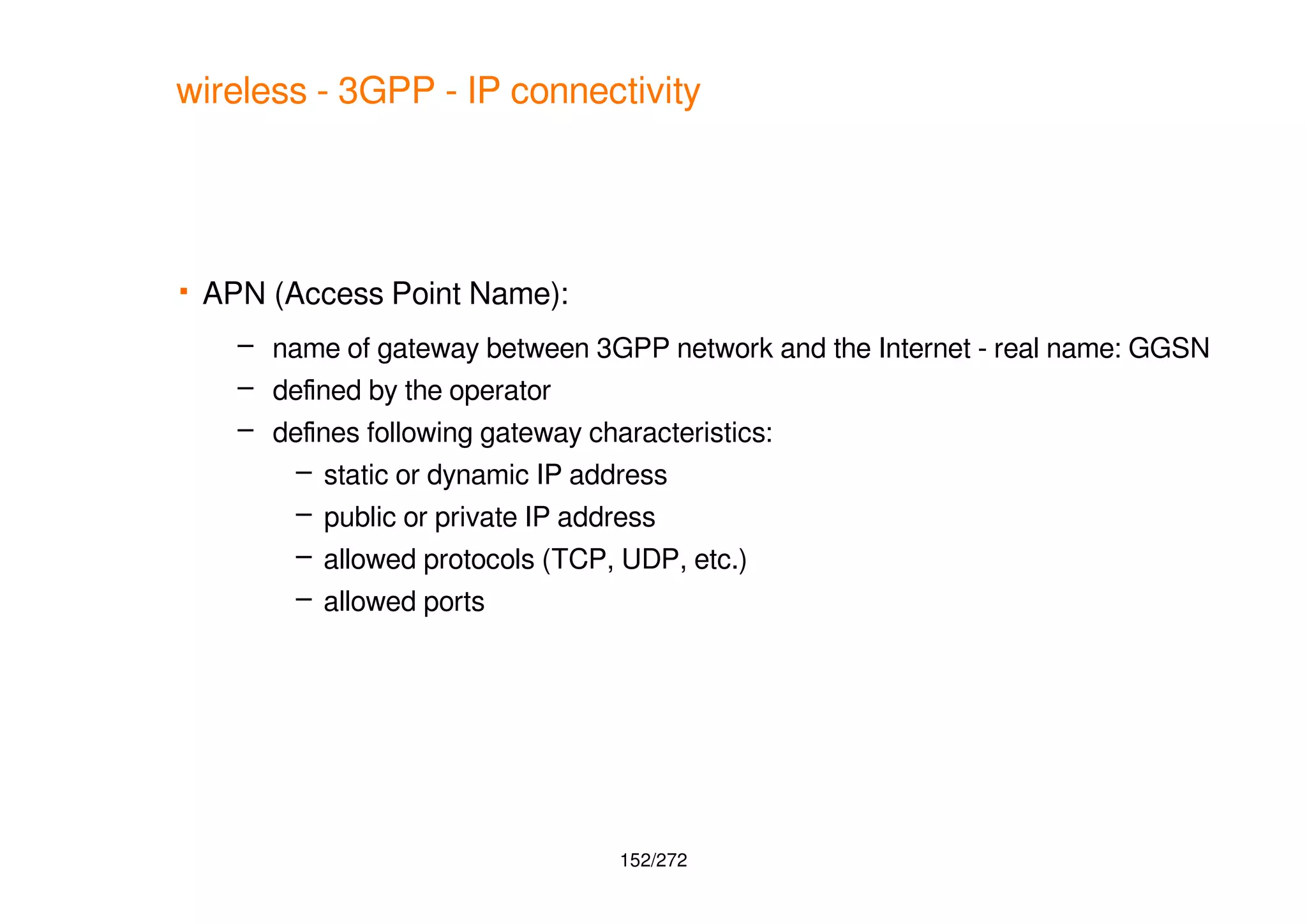
![153/272
wireless - 3GPP - IP connectivity with IP stack in µc board
mobile network
the Internet
GGSN (APN)
1 - attach
2 – defne and activate context + start comm.
=> comm. module known
to network
=> IP address assigned to
comm. module
3 – start a PPP session
=> IP address assigned to
remote device
communication
module
microcontroller
board
AT commands
GGSN: GPRS Gateway Support Node[Com03] [Com04]](https://image.slidesharecdn.com/20180217-iotandconnecteddevices-180217095428/75/IoT-and-connected-devices-an-overview-153-2048.jpg)
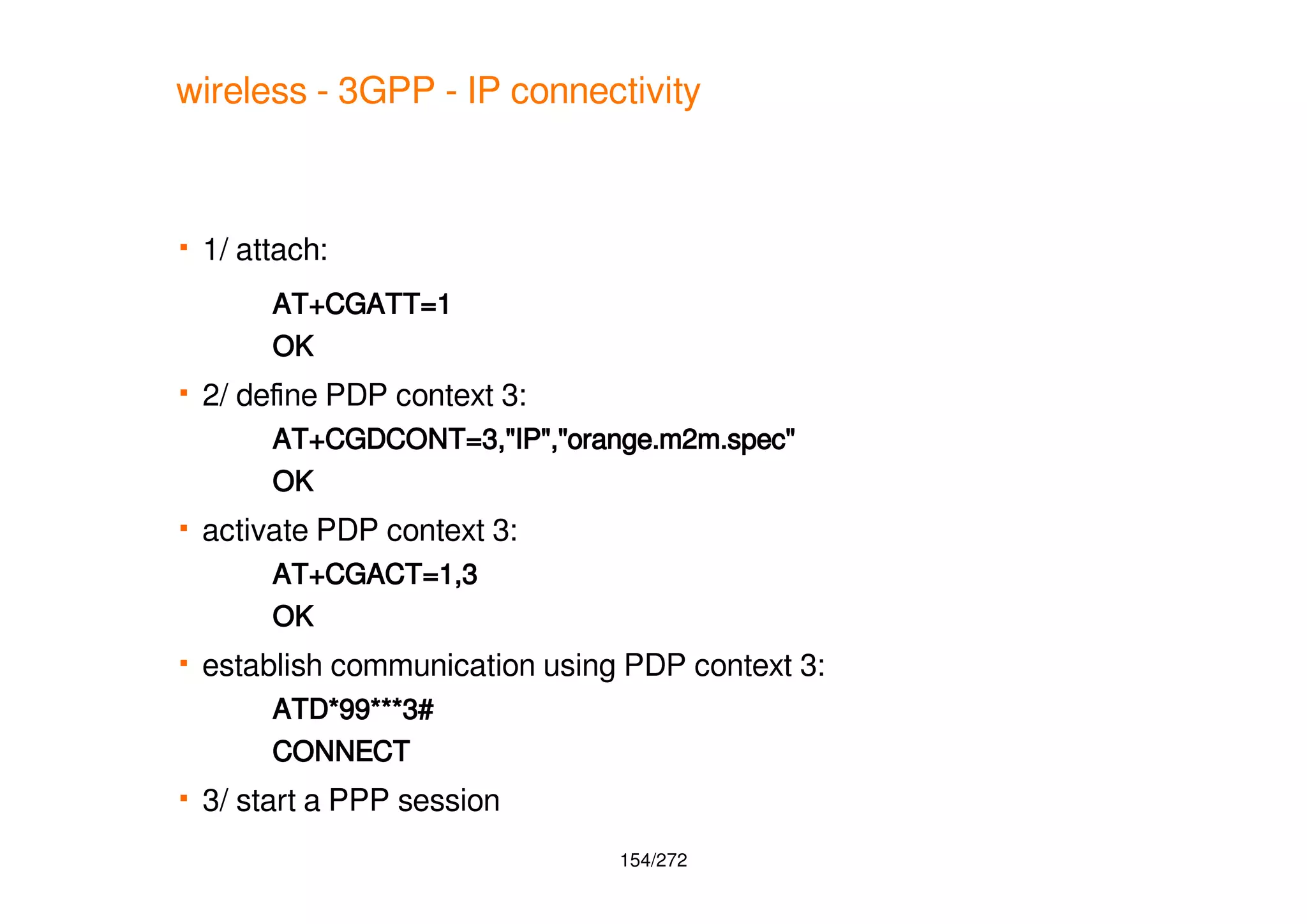

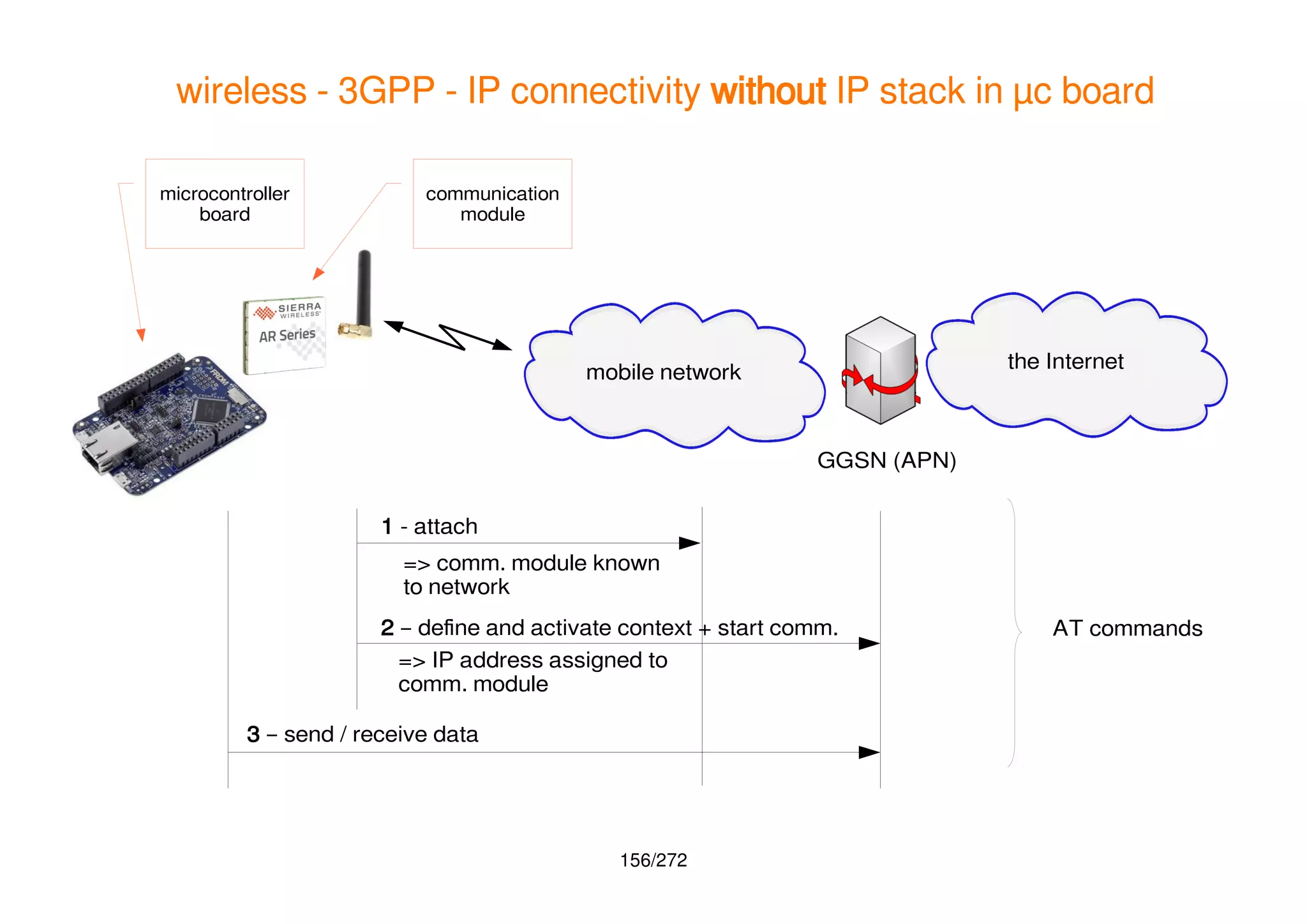

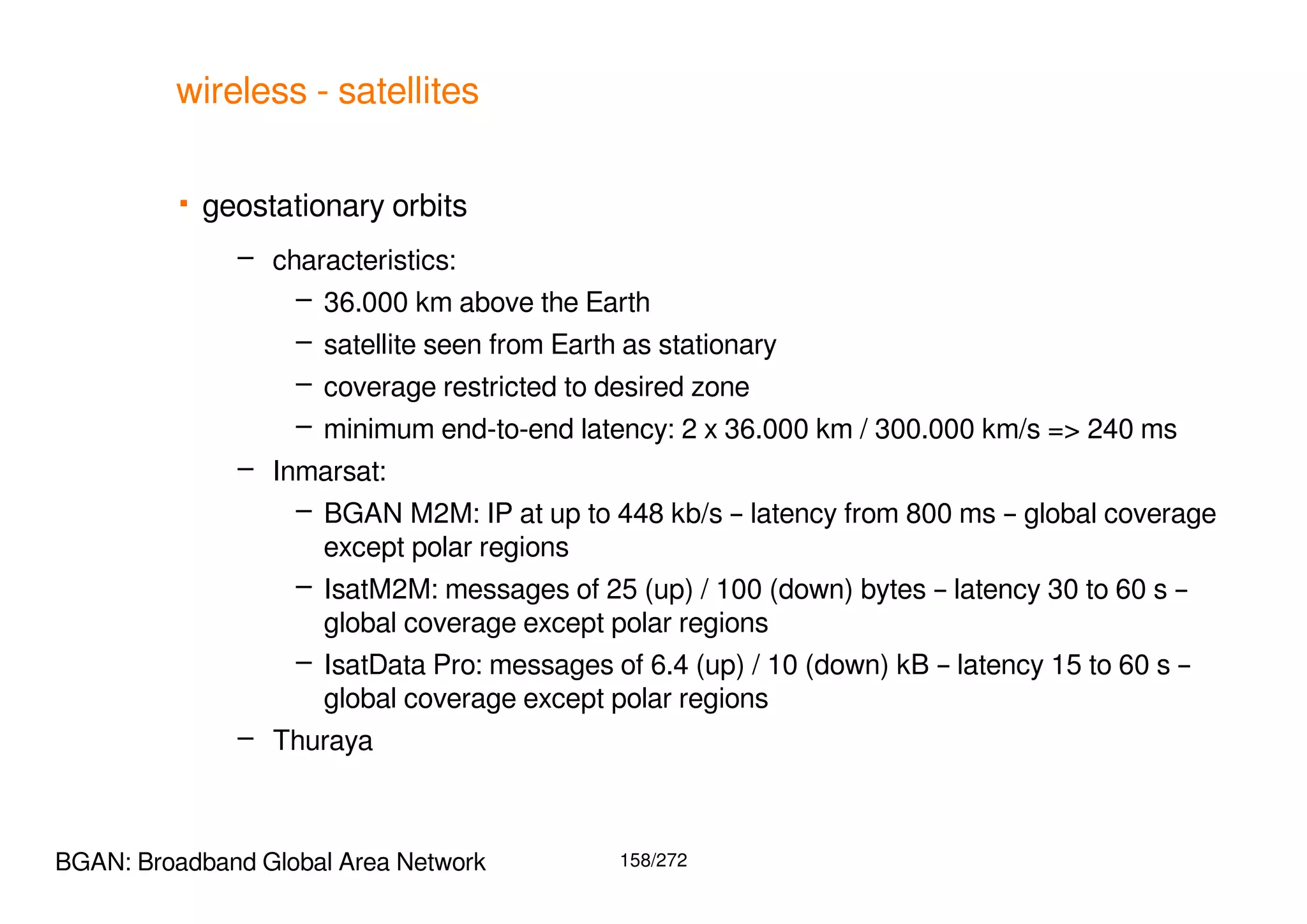
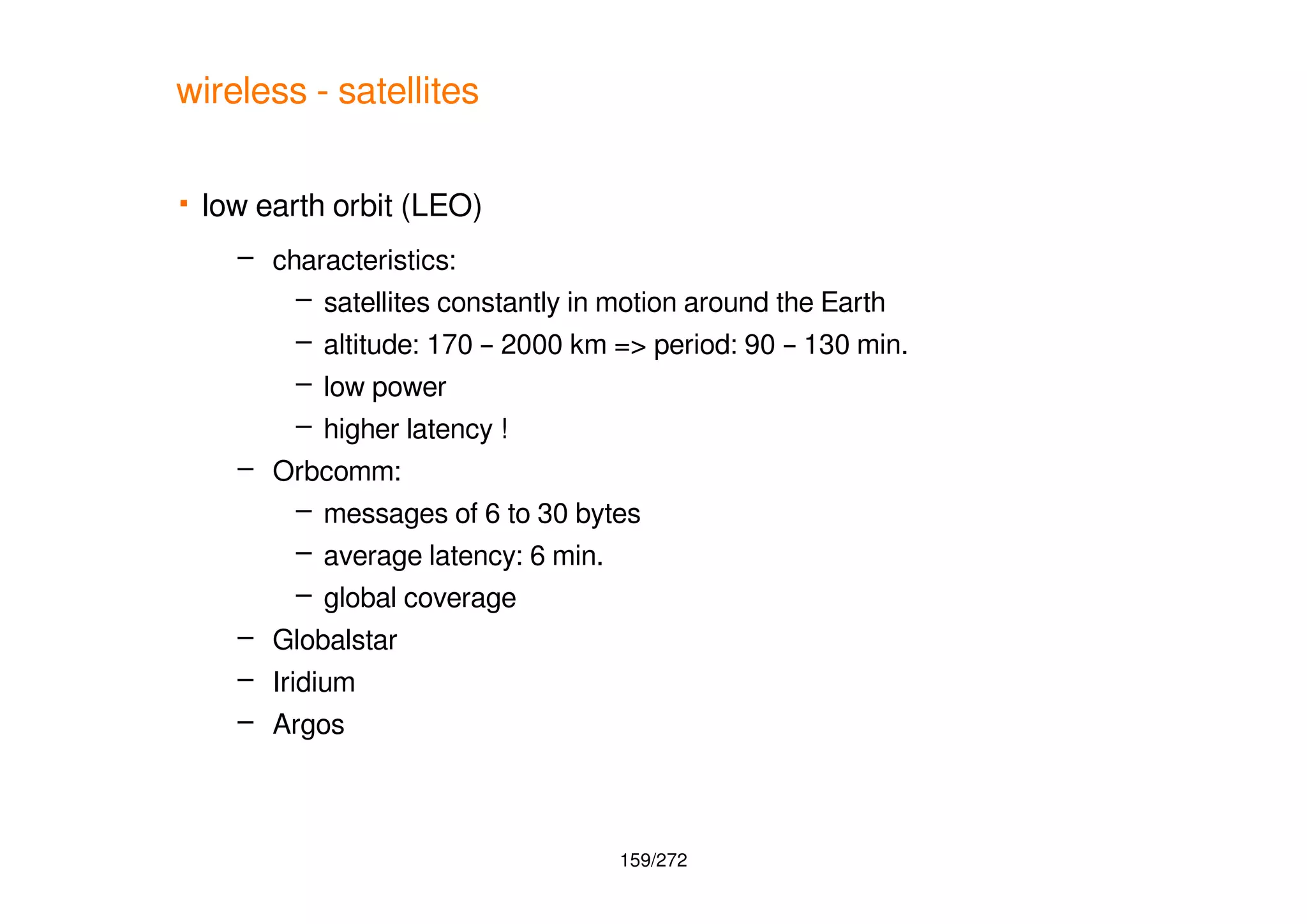
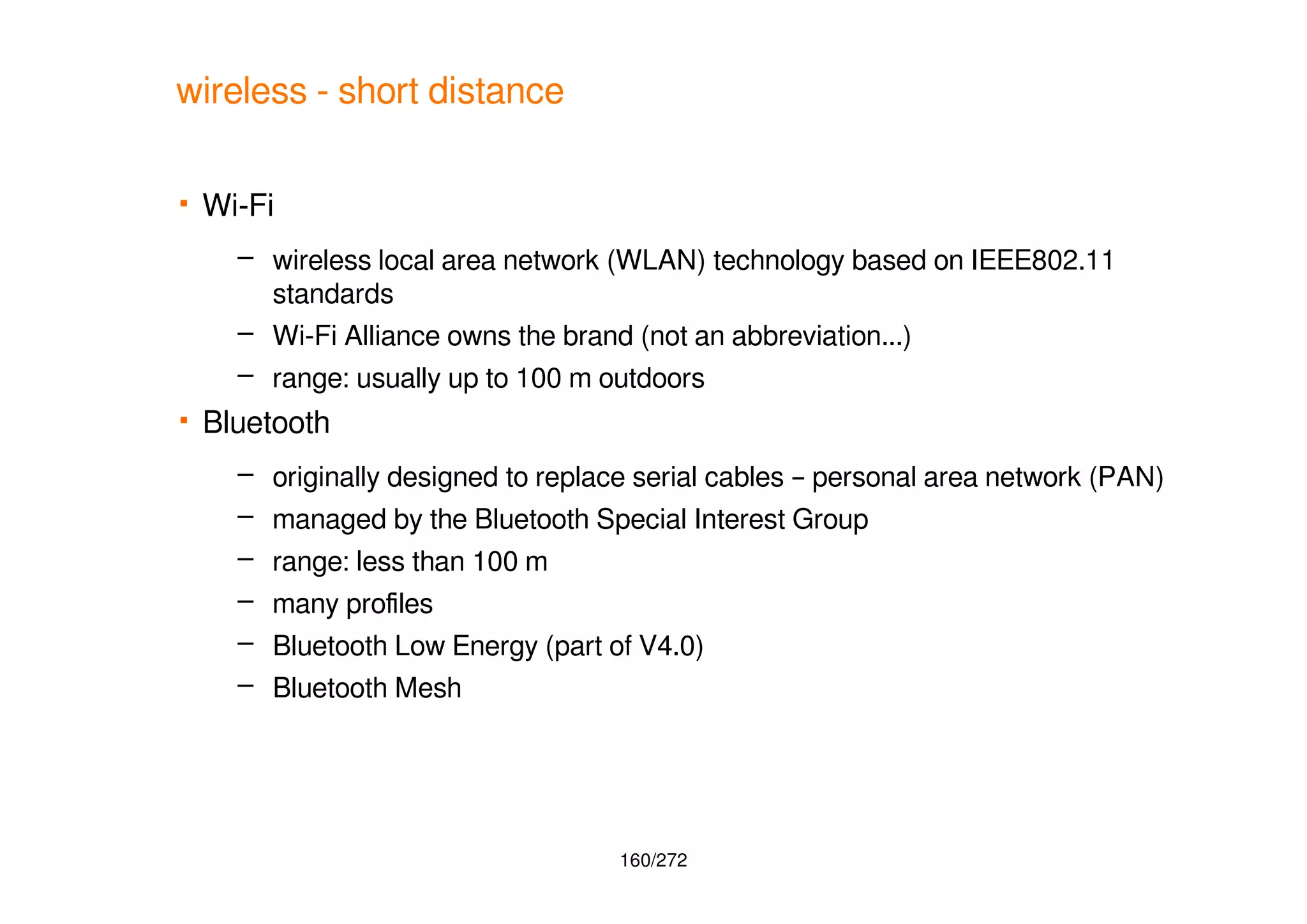
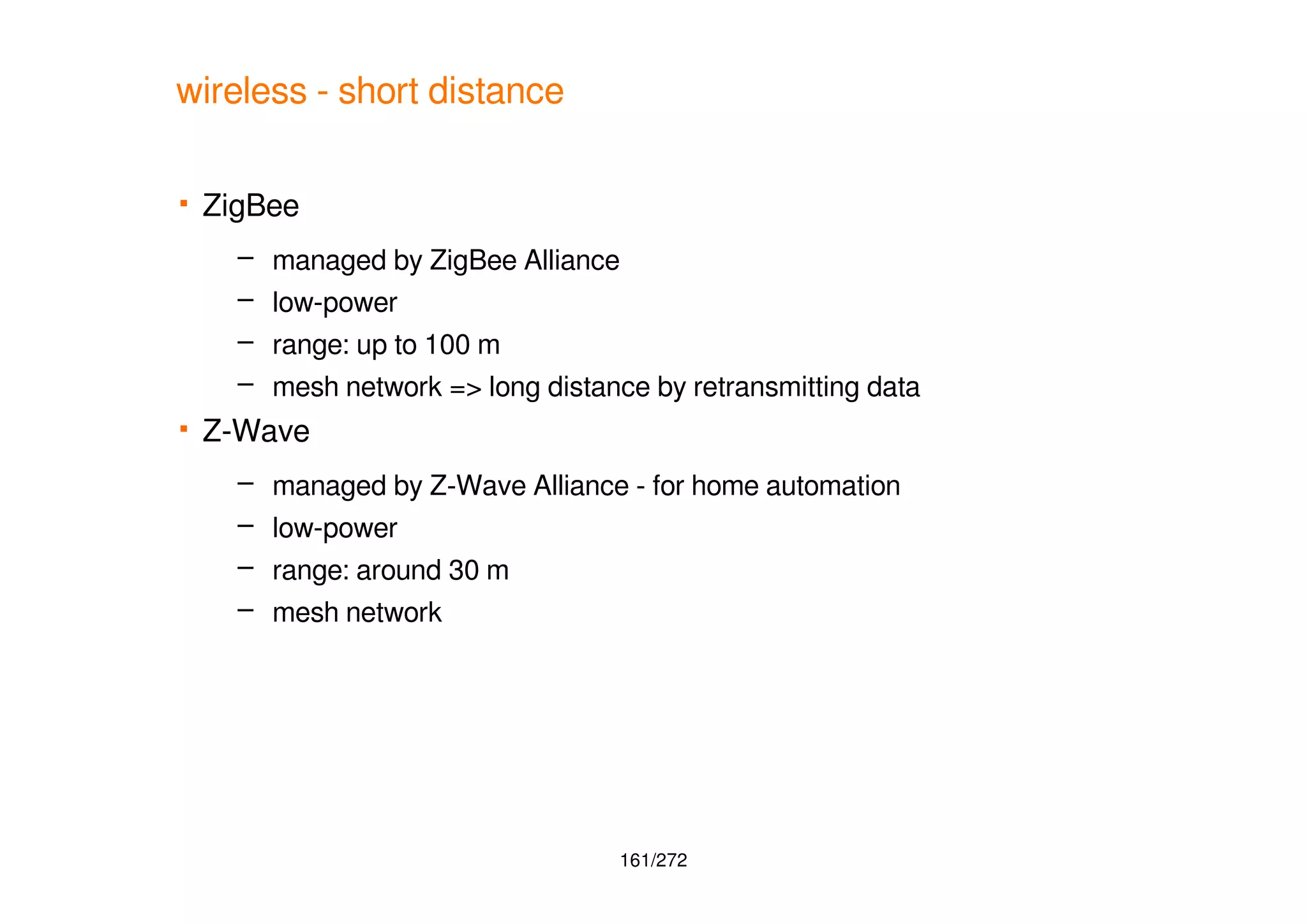
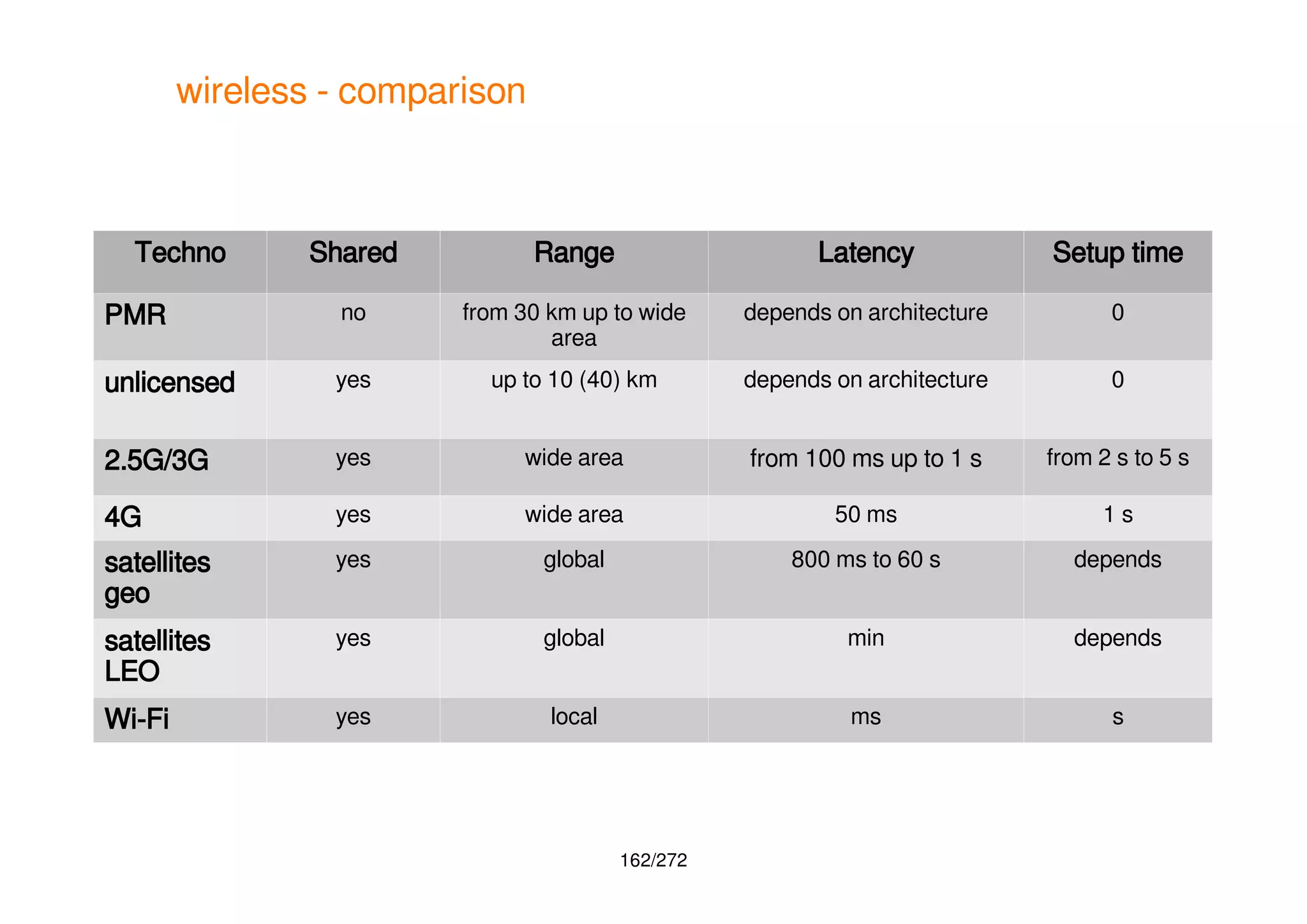
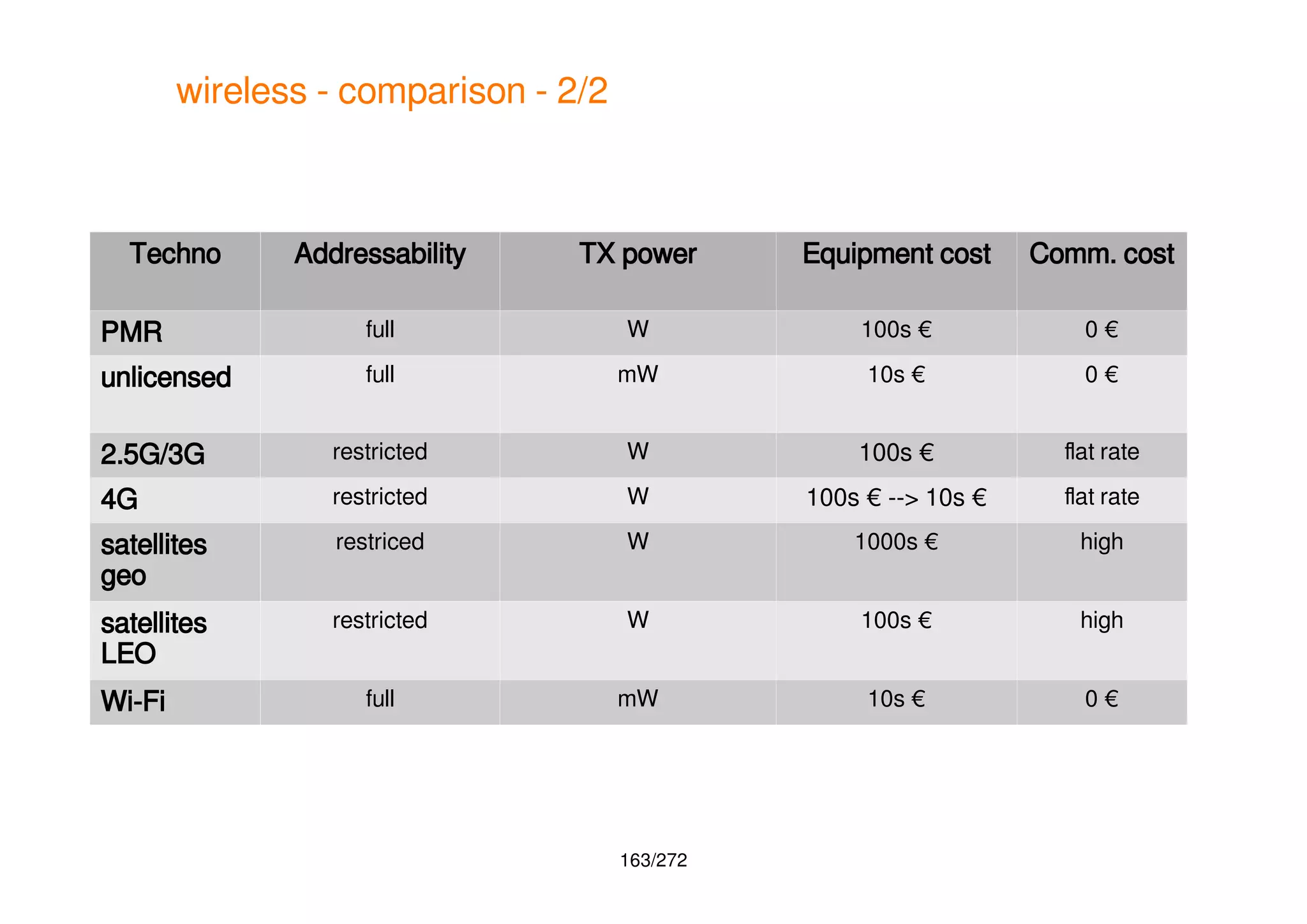
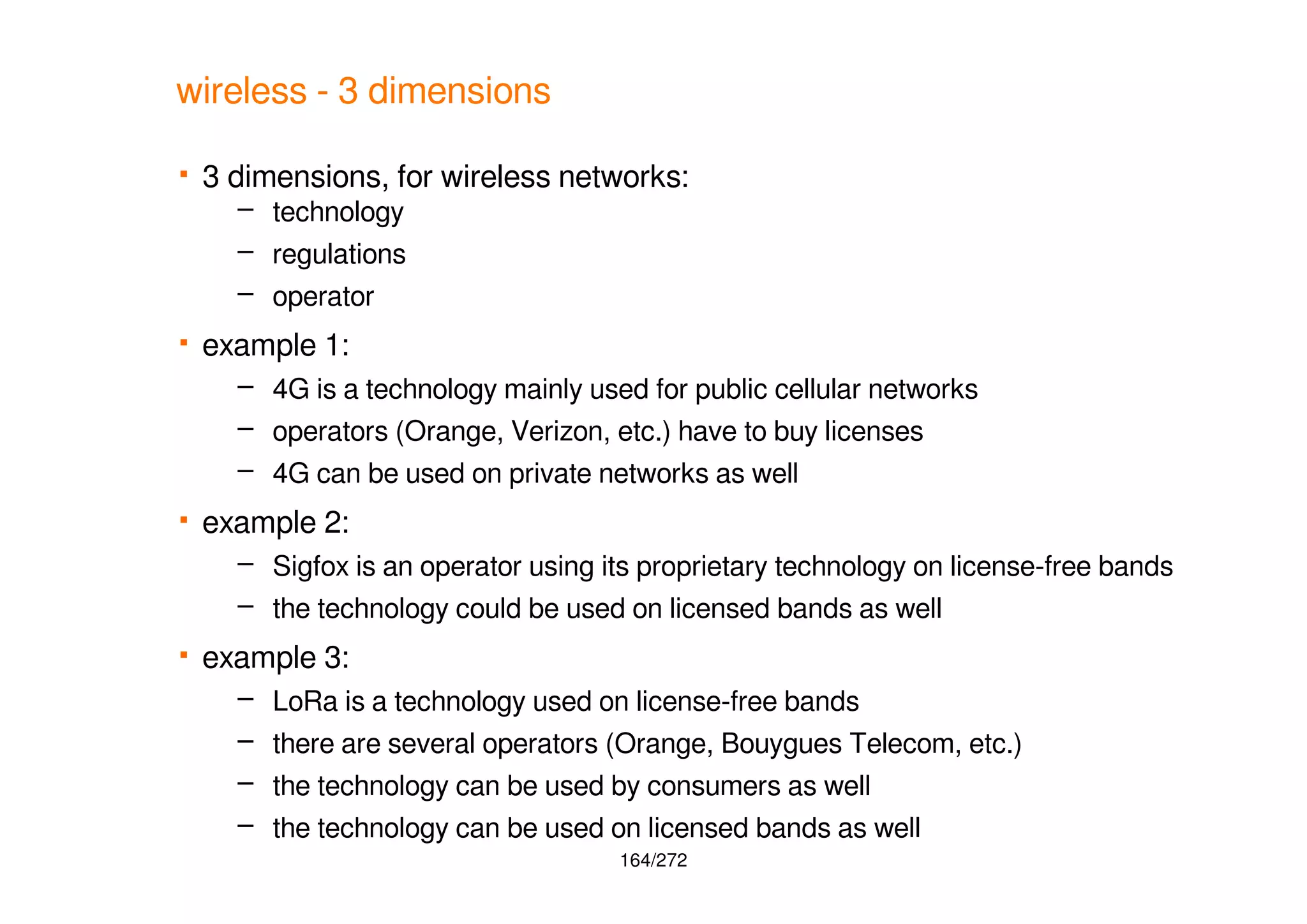
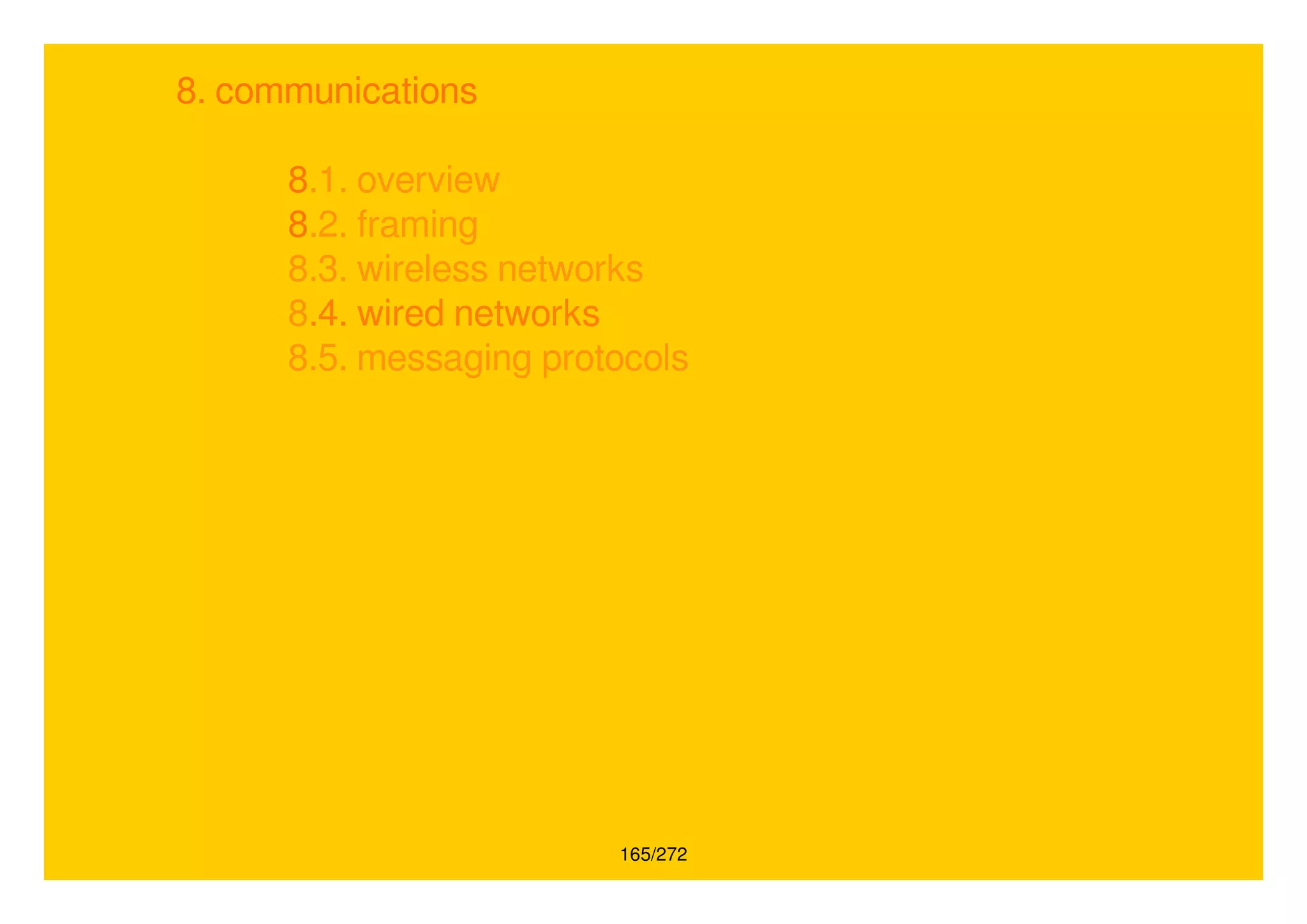
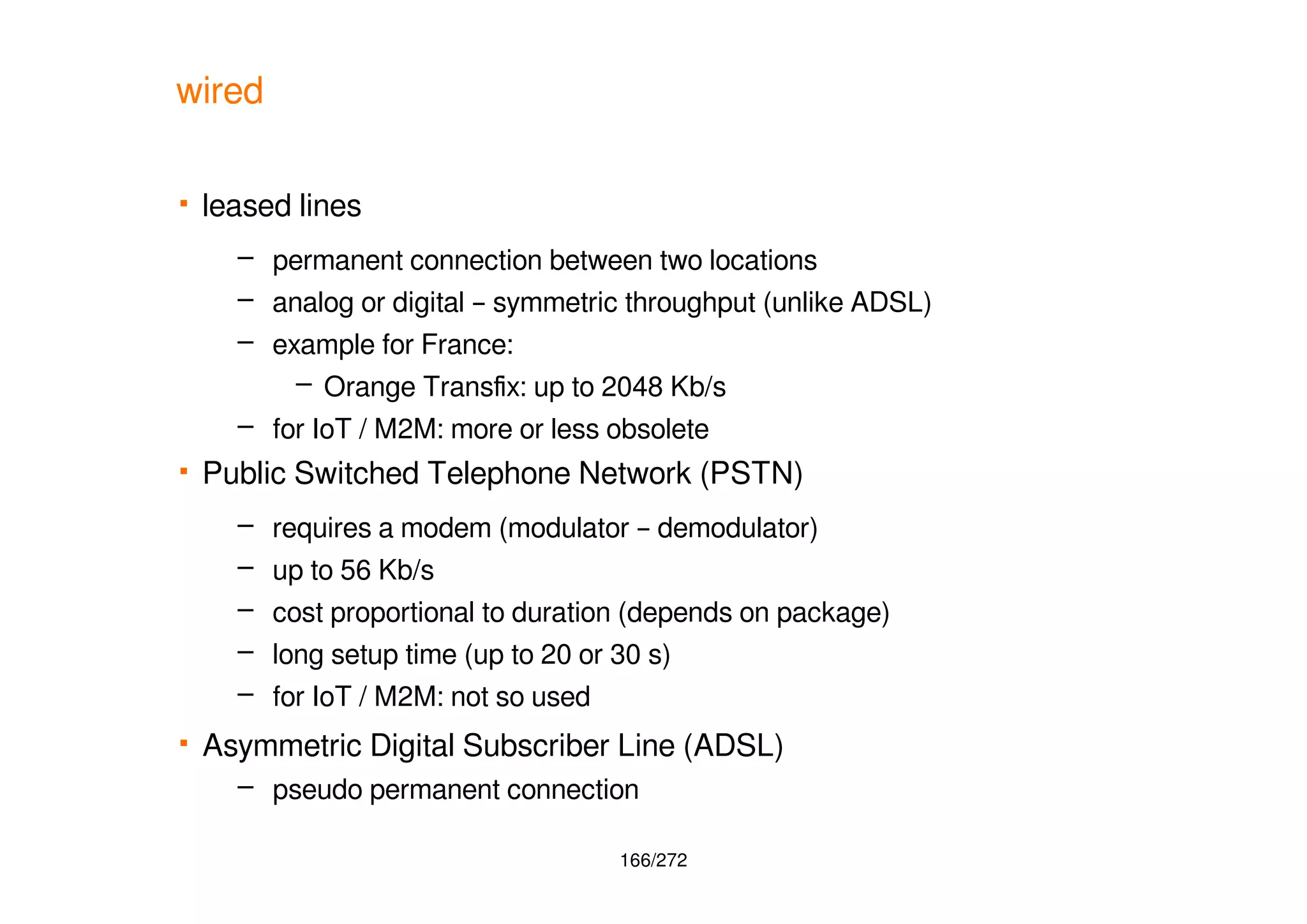

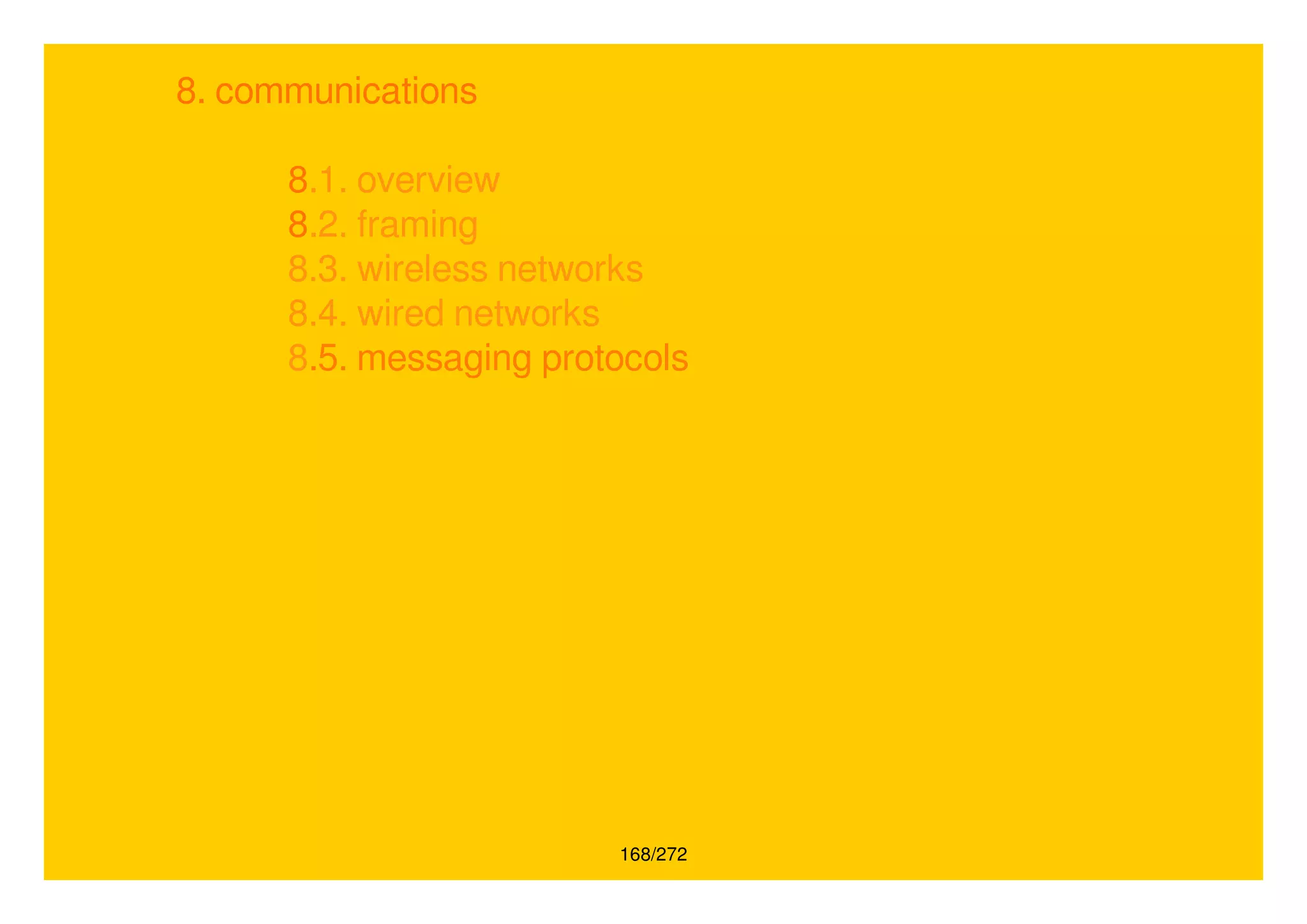

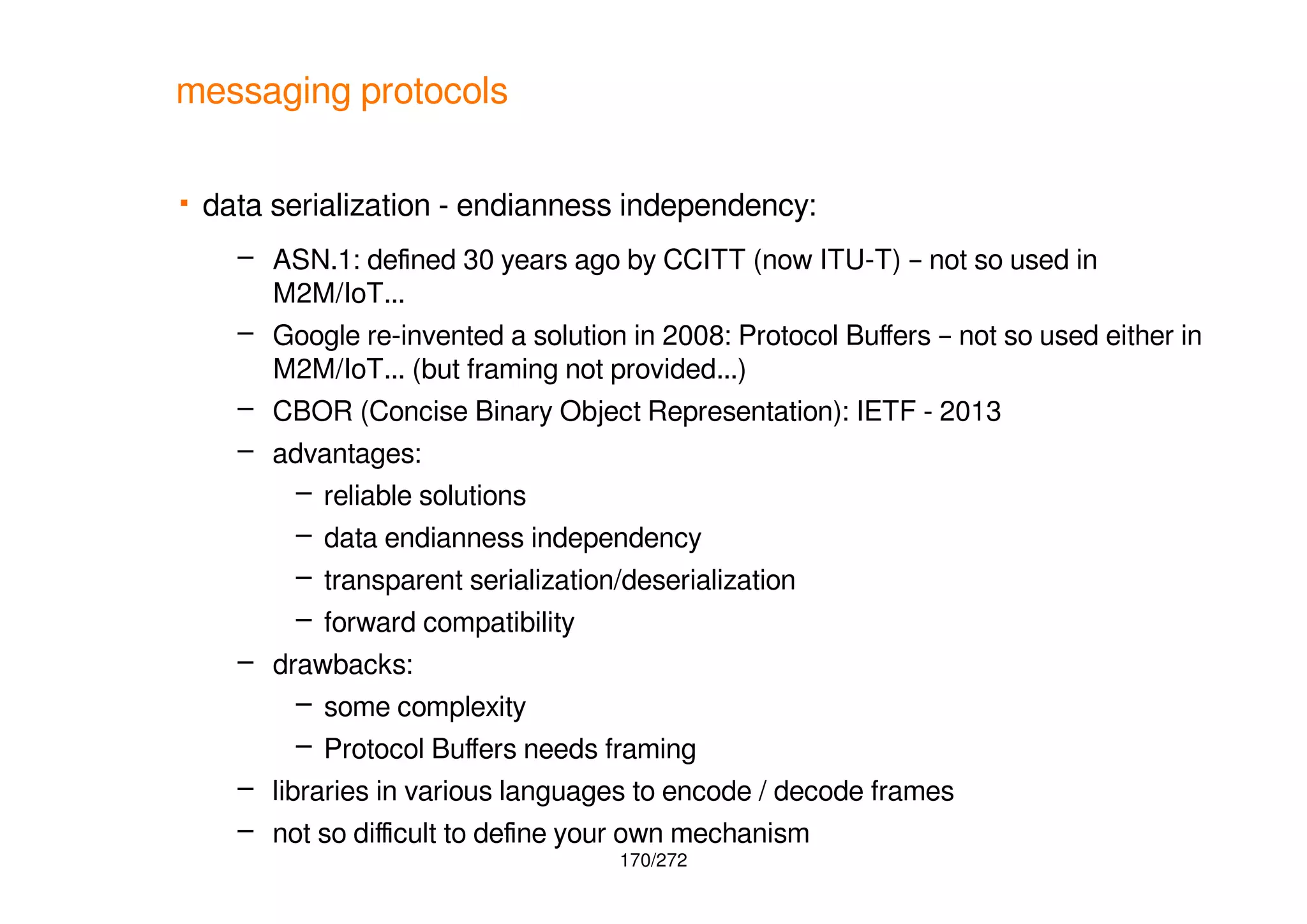
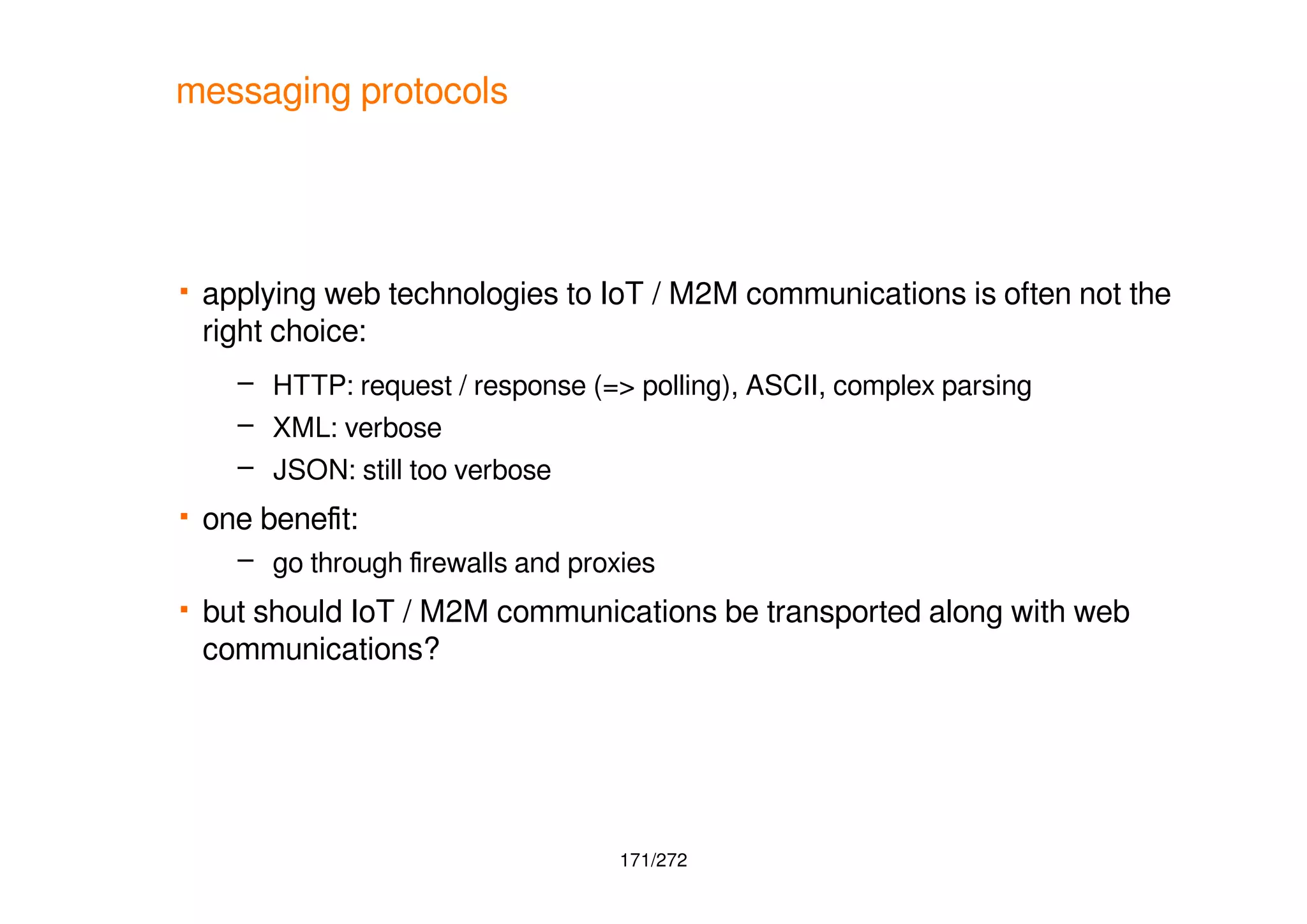

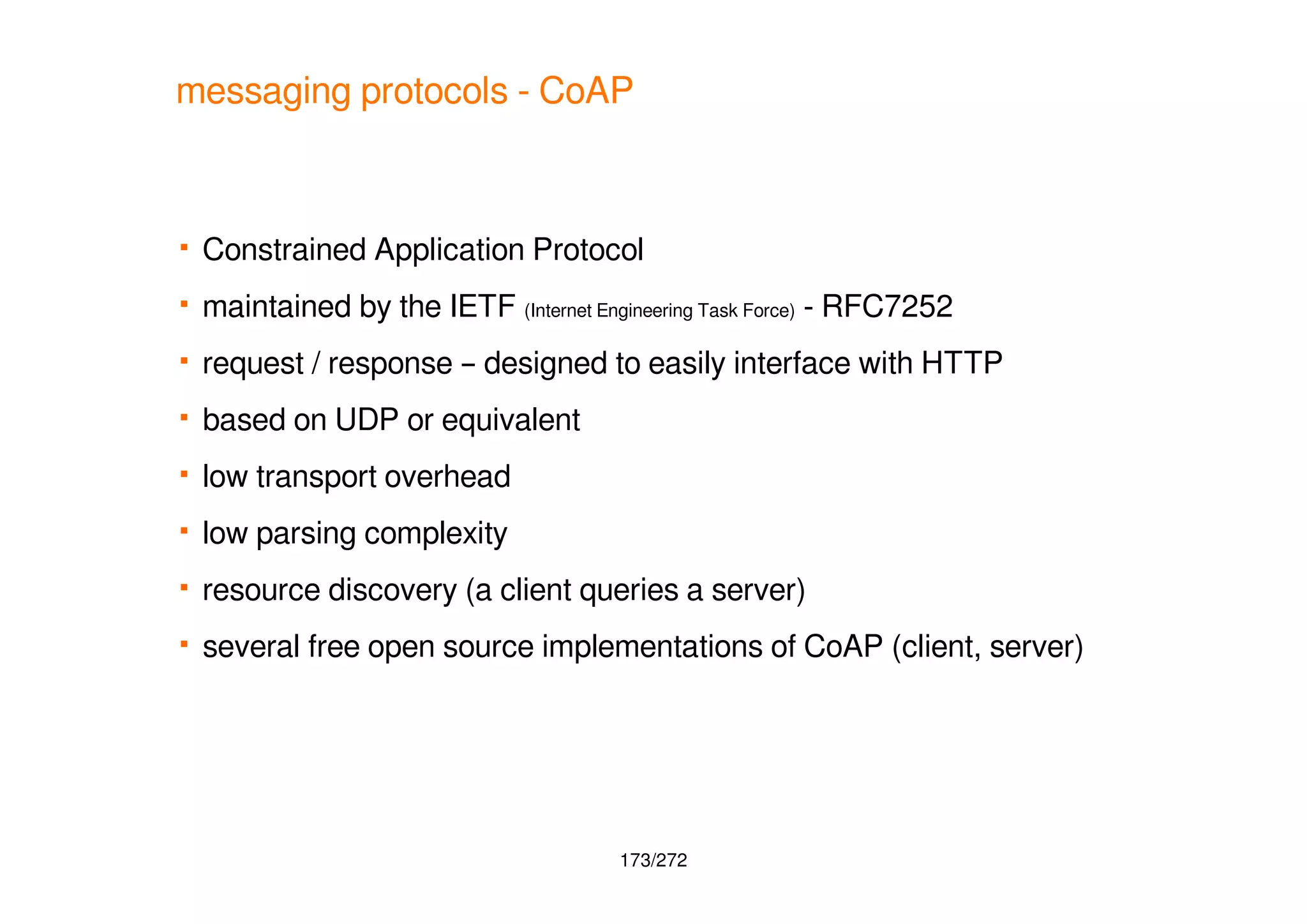

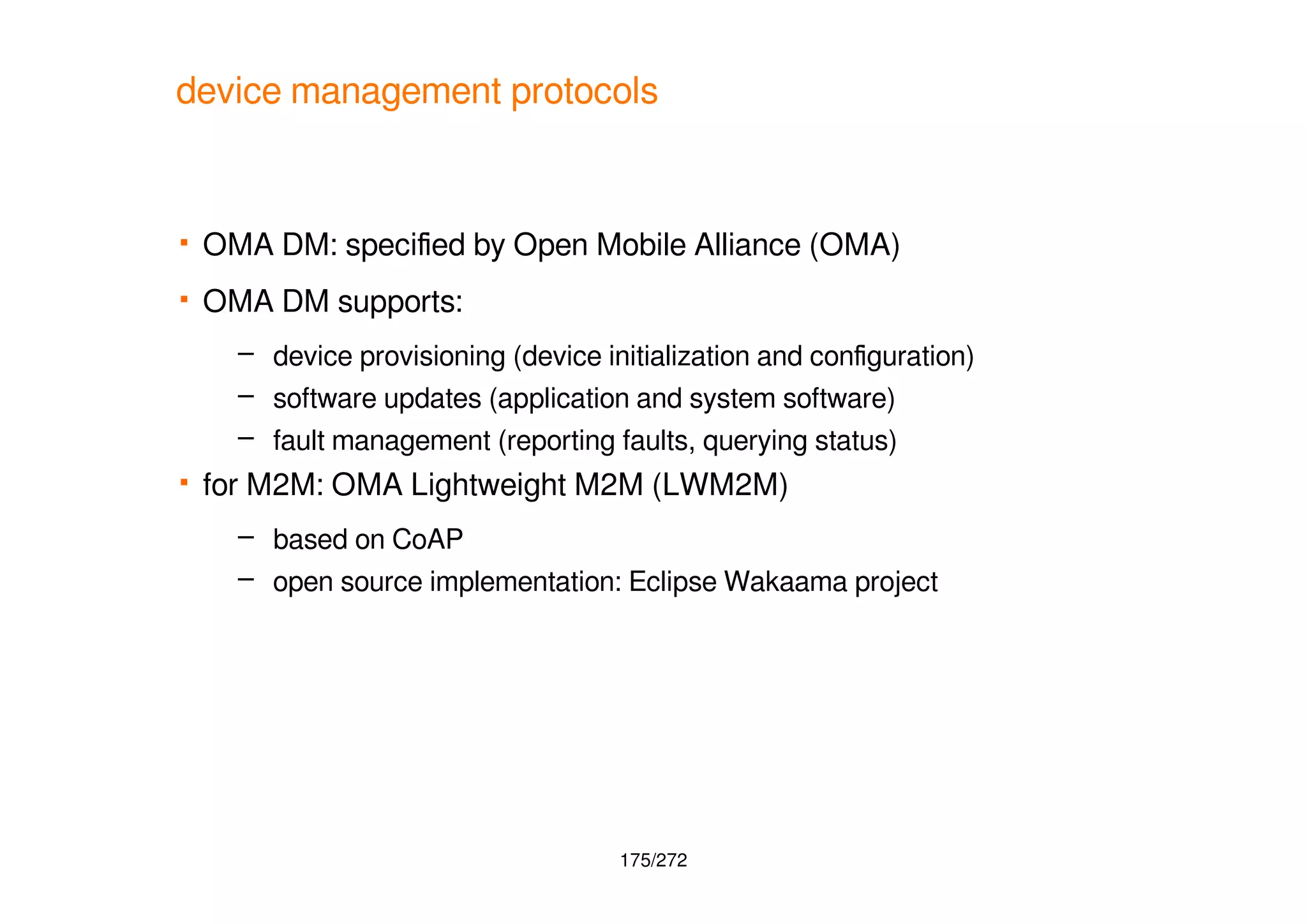
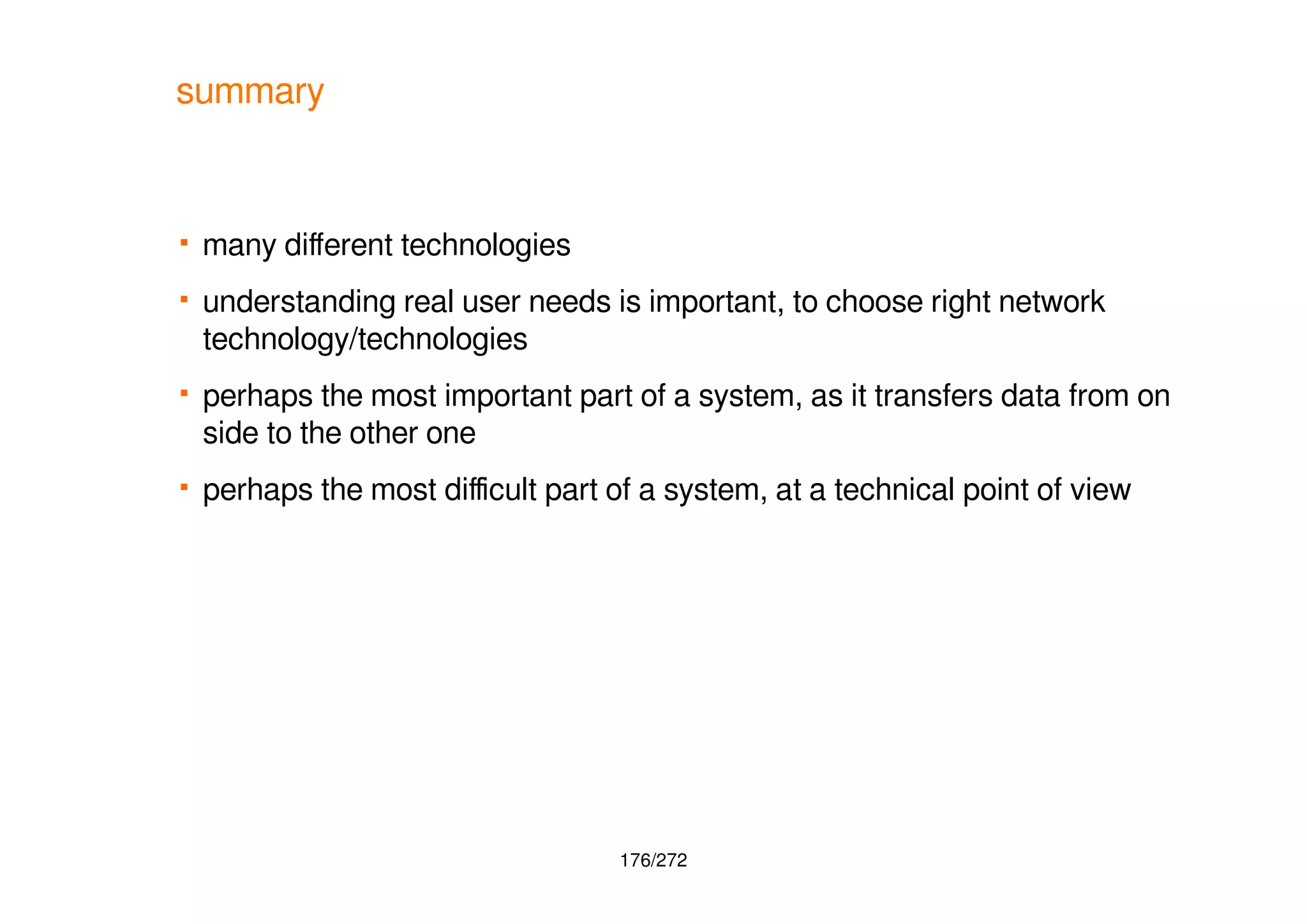
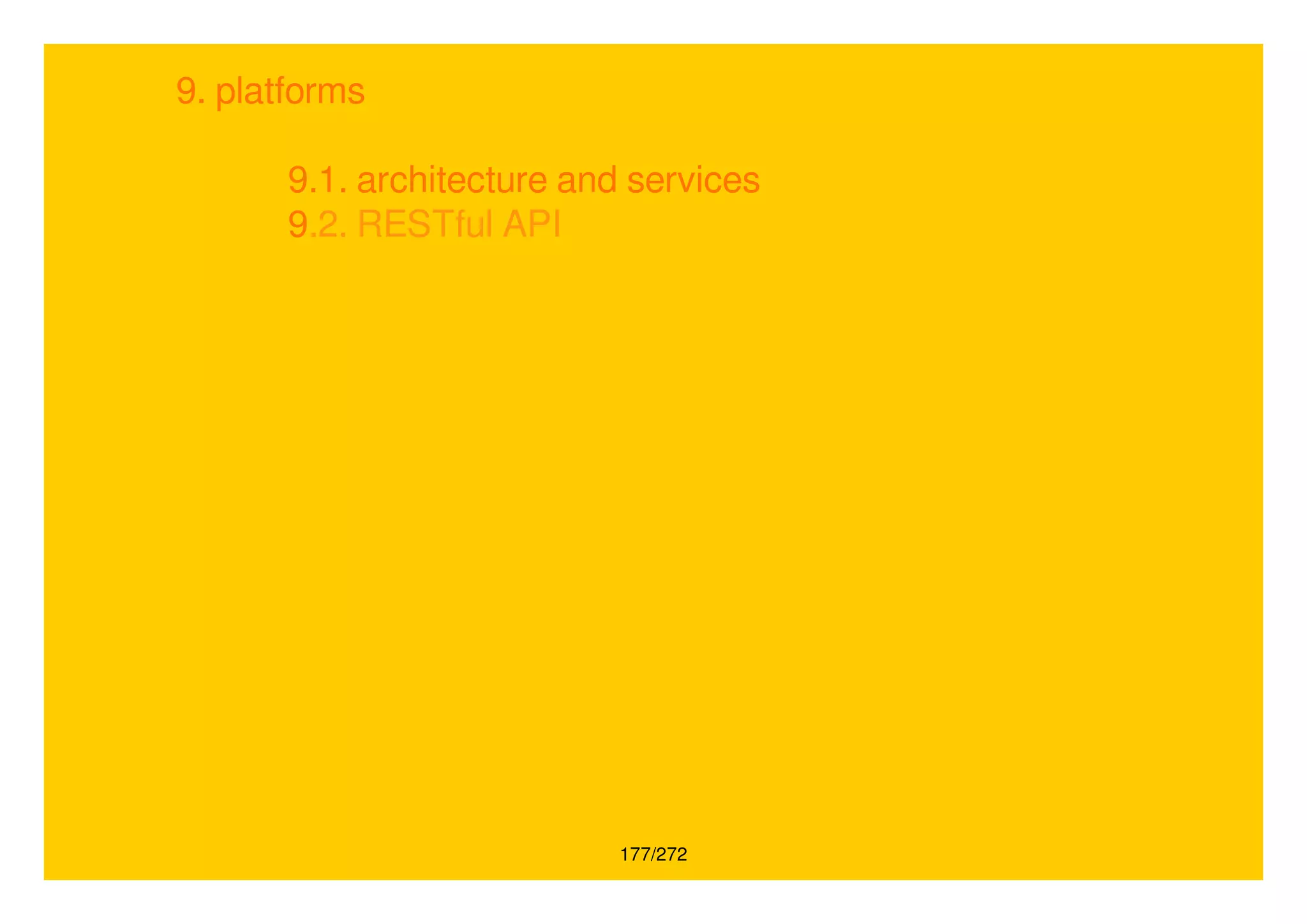
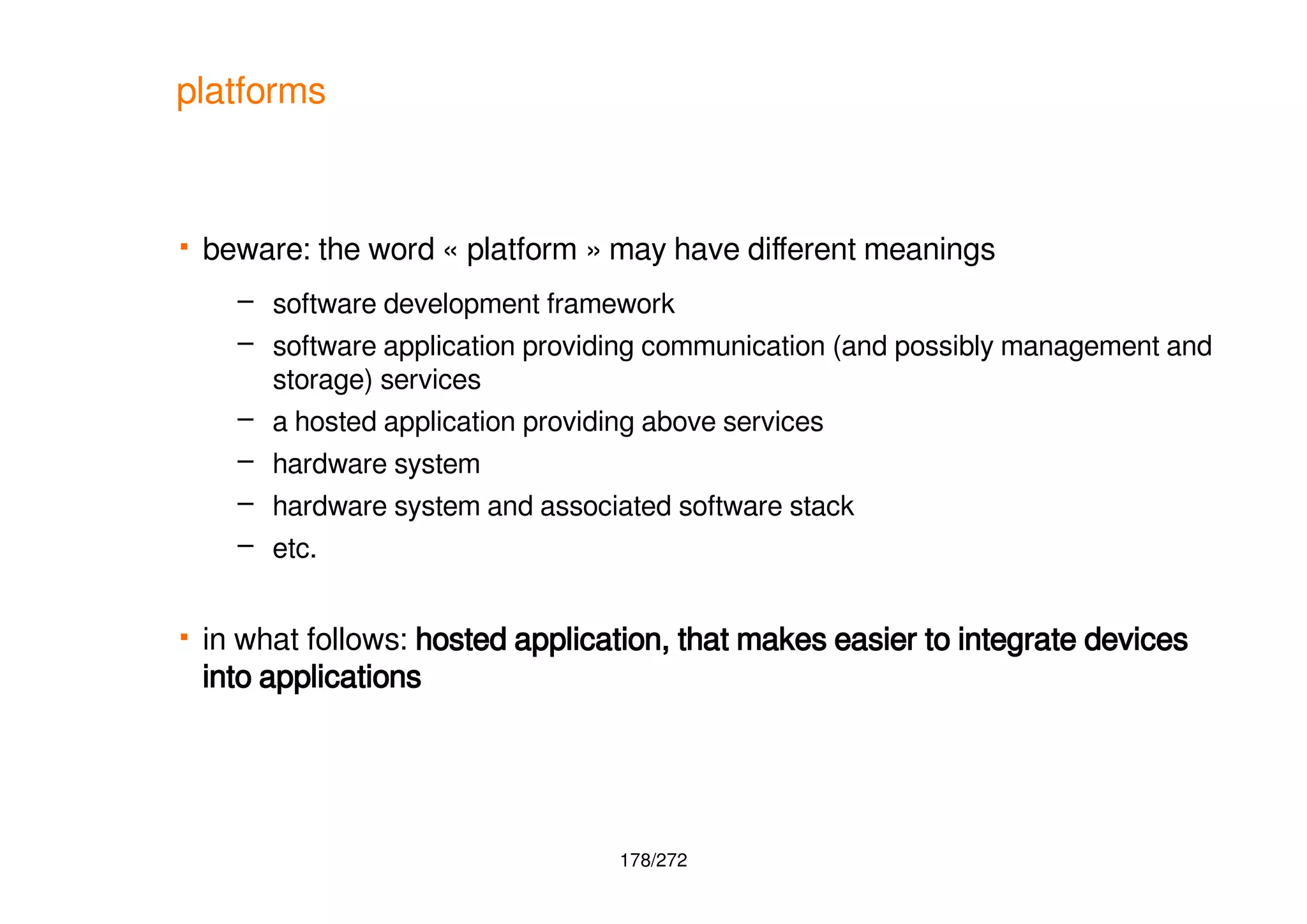
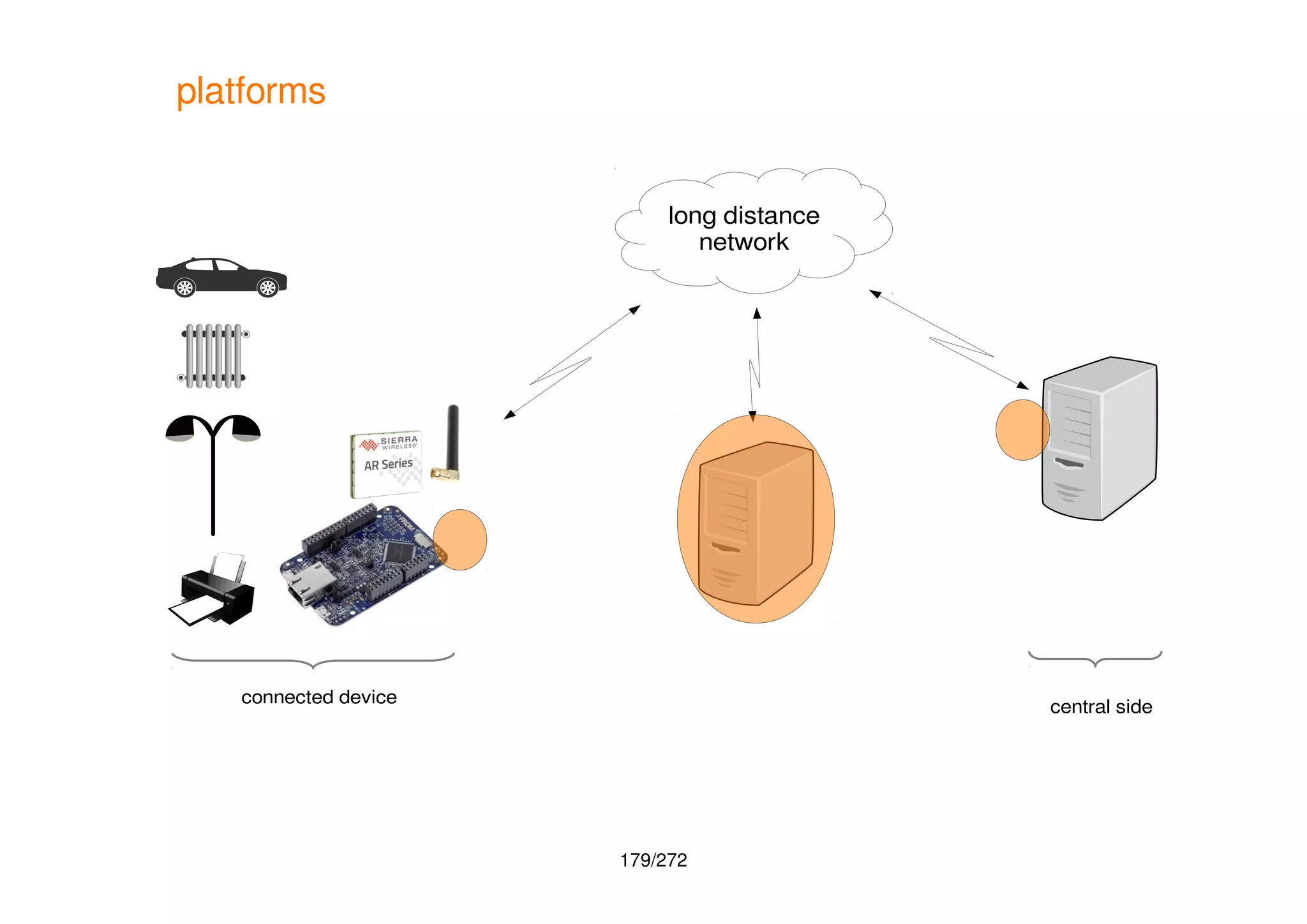


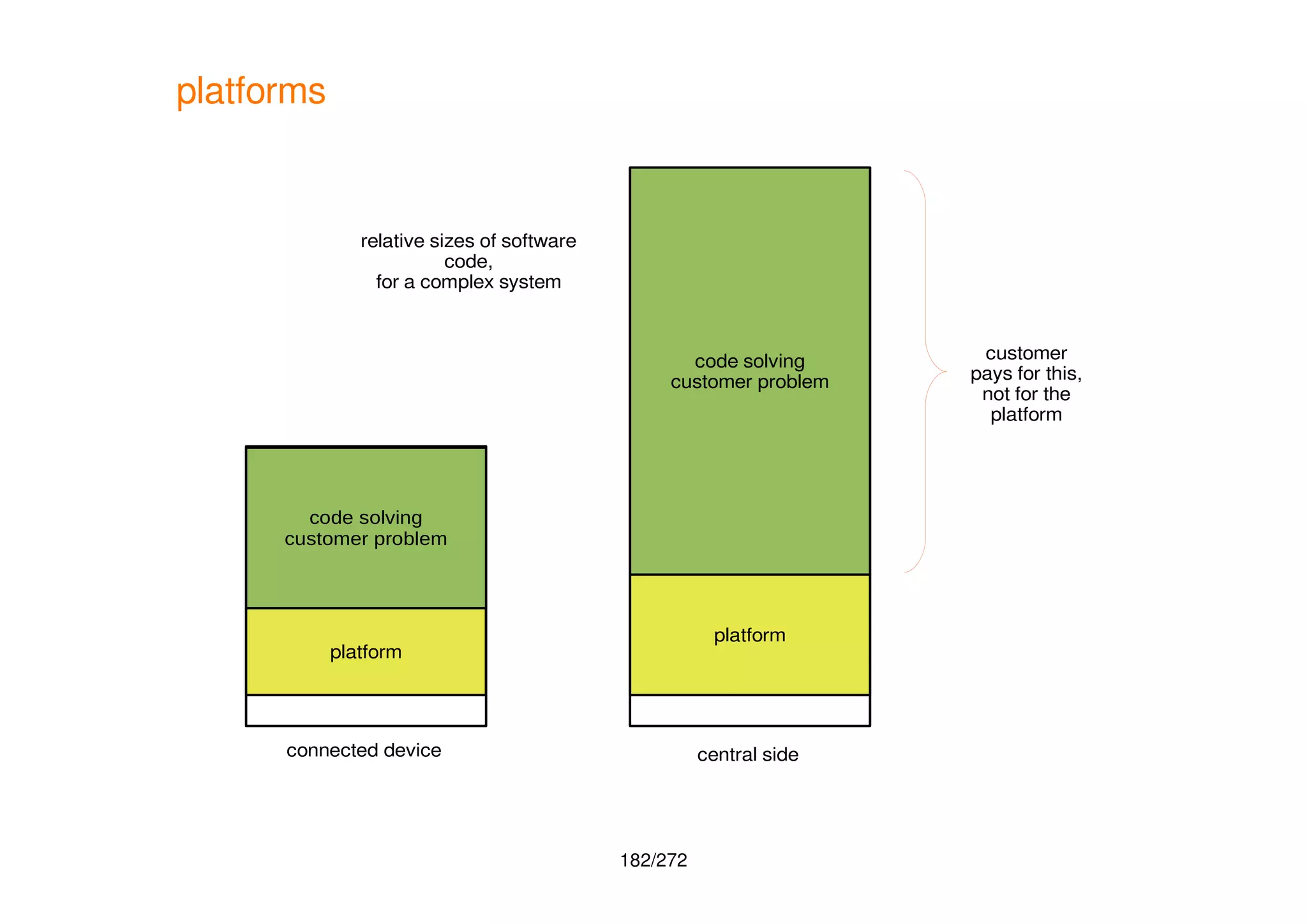

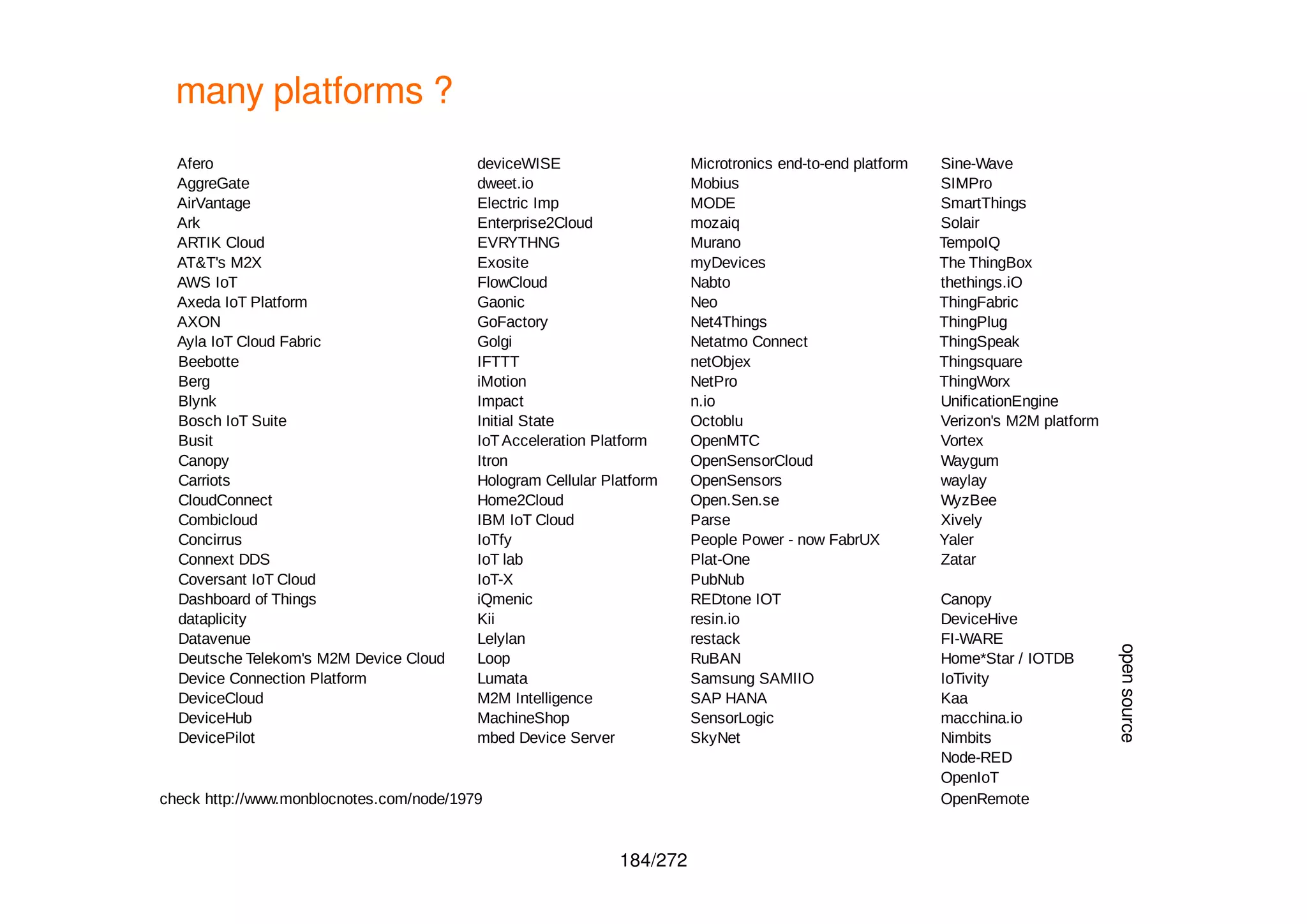
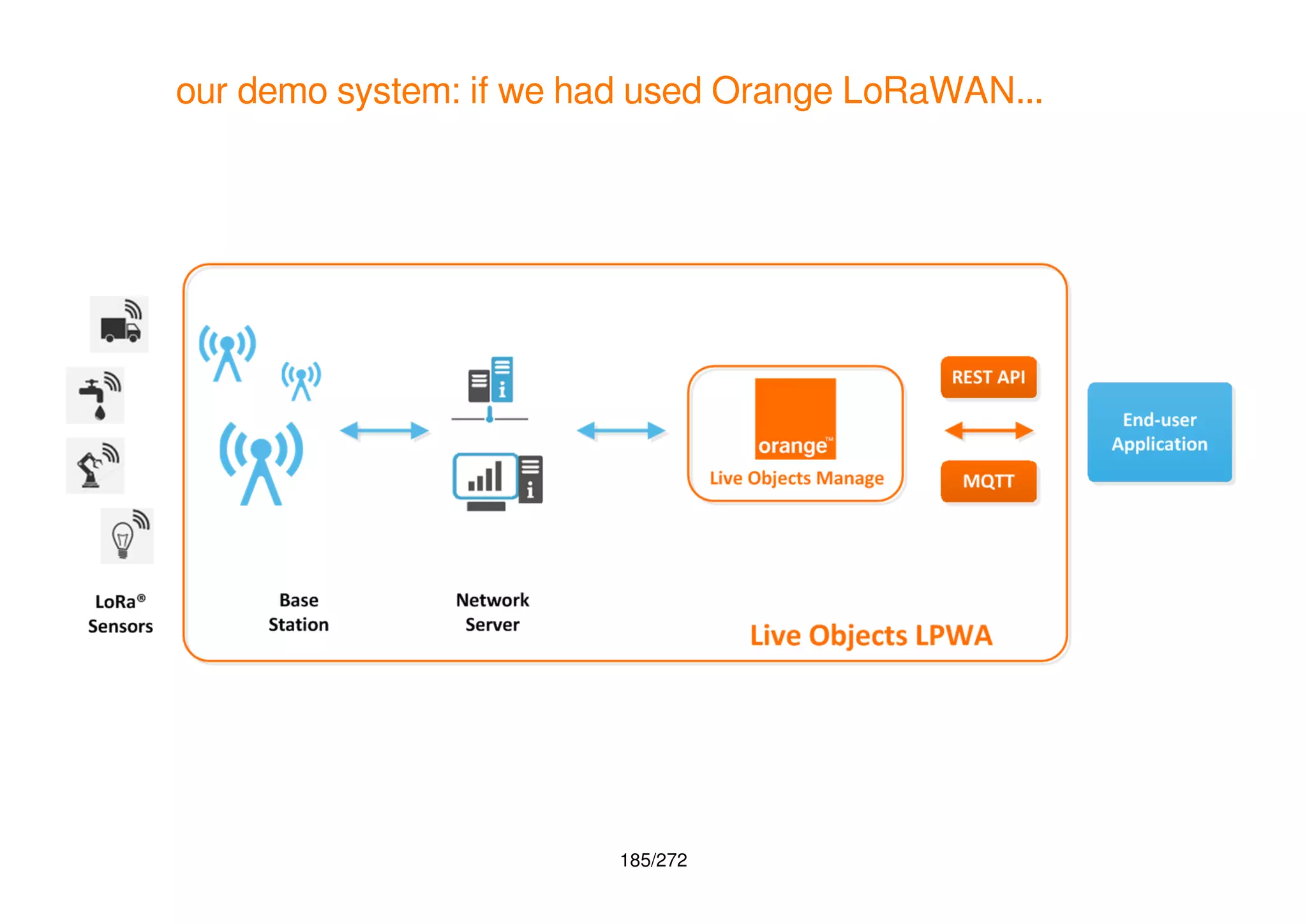
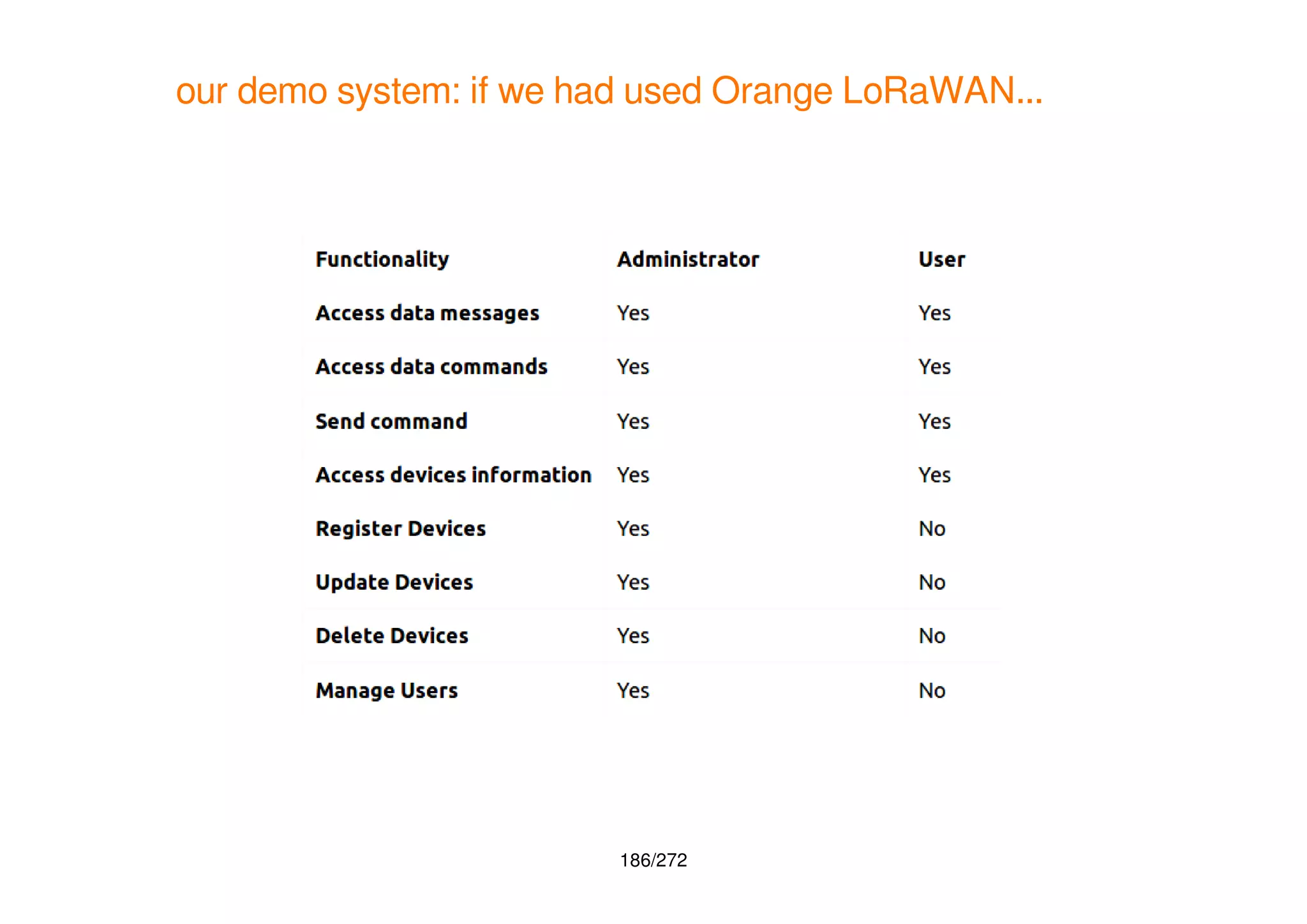
![187/272
platforms - example - Sierra Wireless
connectivity management
– SIM inventory
– usage tracking
– etc.
application enablement
– RESTful API
– data storage
– rules engine
– device protocol support
– etc.
device management
– device monitoring
– command transmission
– OTA frmware update
– confguration deployment
– etc.
[Pla02]](https://image.slidesharecdn.com/20180217-iotandconnecteddevices-180217095428/75/IoT-and-connected-devices-an-overview-187-2048.jpg)
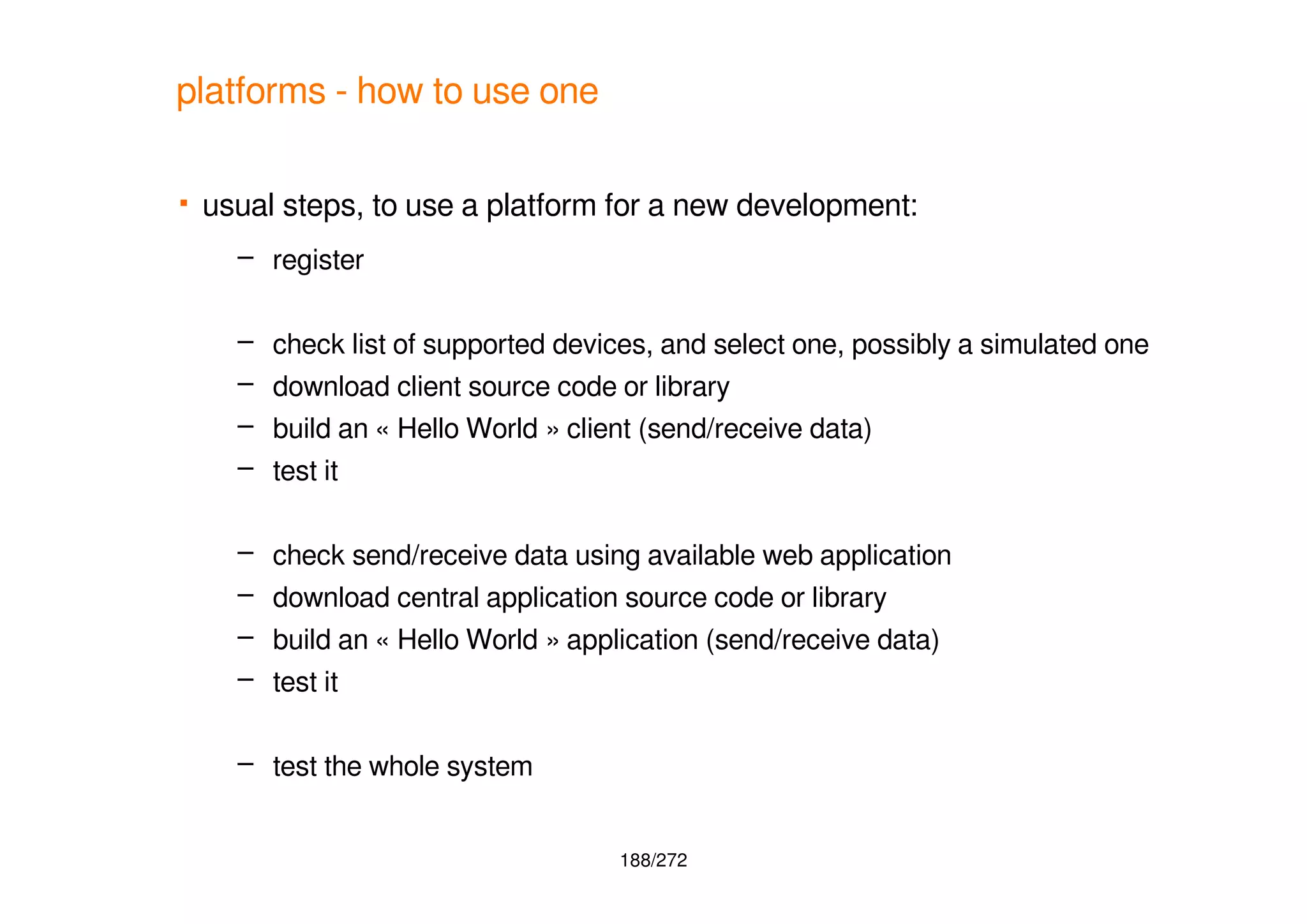
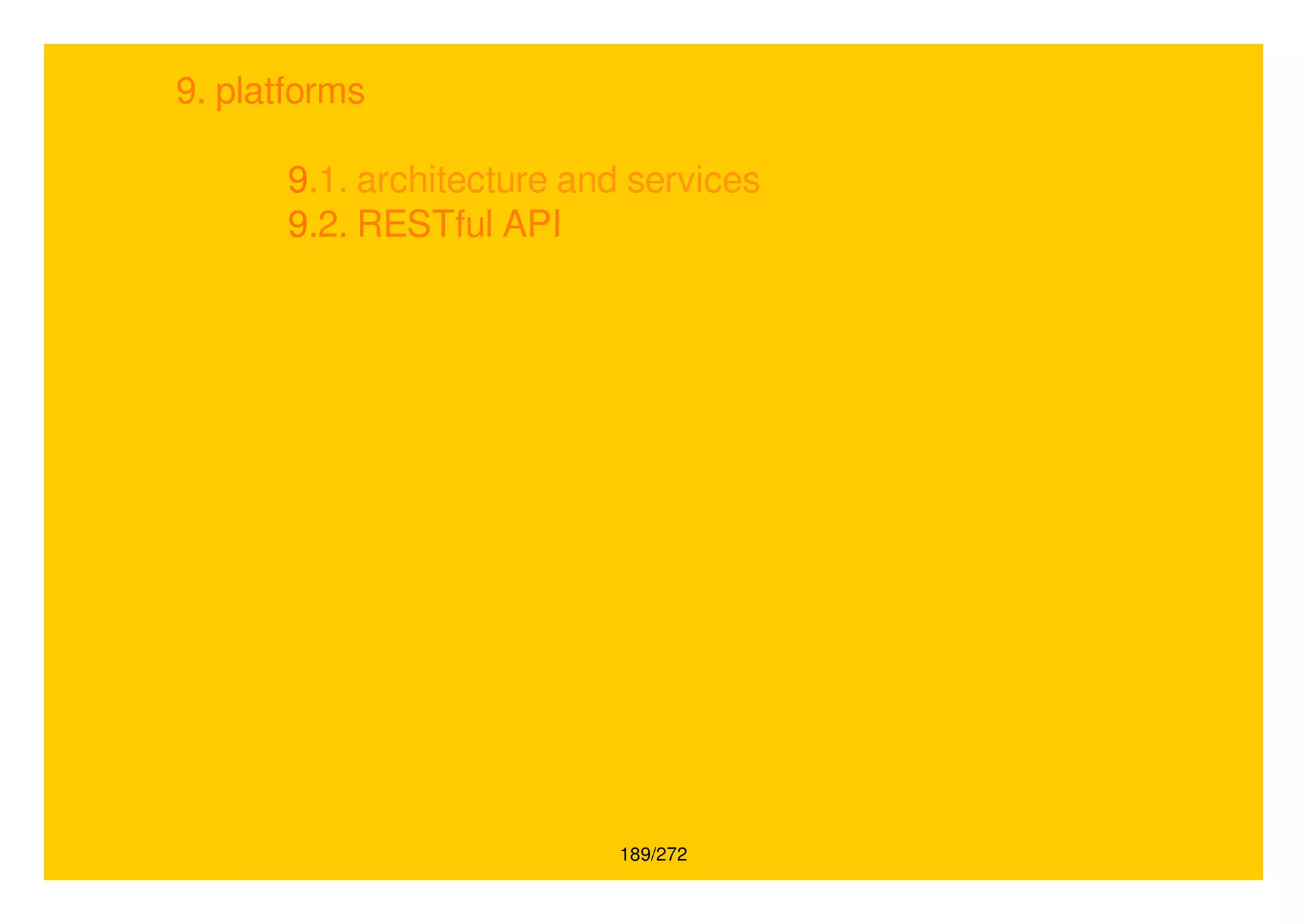
![190/272
overview
REST: representational state transfer
invented in 2000 - an architecture, not a protocol
– client-server
– stateless
– cacheable
– layered system
– uniform interface
– [code on demand]
for web services: RESTful APIs
– base URL
– HTTP method (GET, HEAD, PUT, POST, DELETE, TRACE, CONNECT)
– data elements - JSON](https://image.slidesharecdn.com/20180217-iotandconnecteddevices-180217095428/75/IoT-and-connected-devices-an-overview-190-2048.jpg)
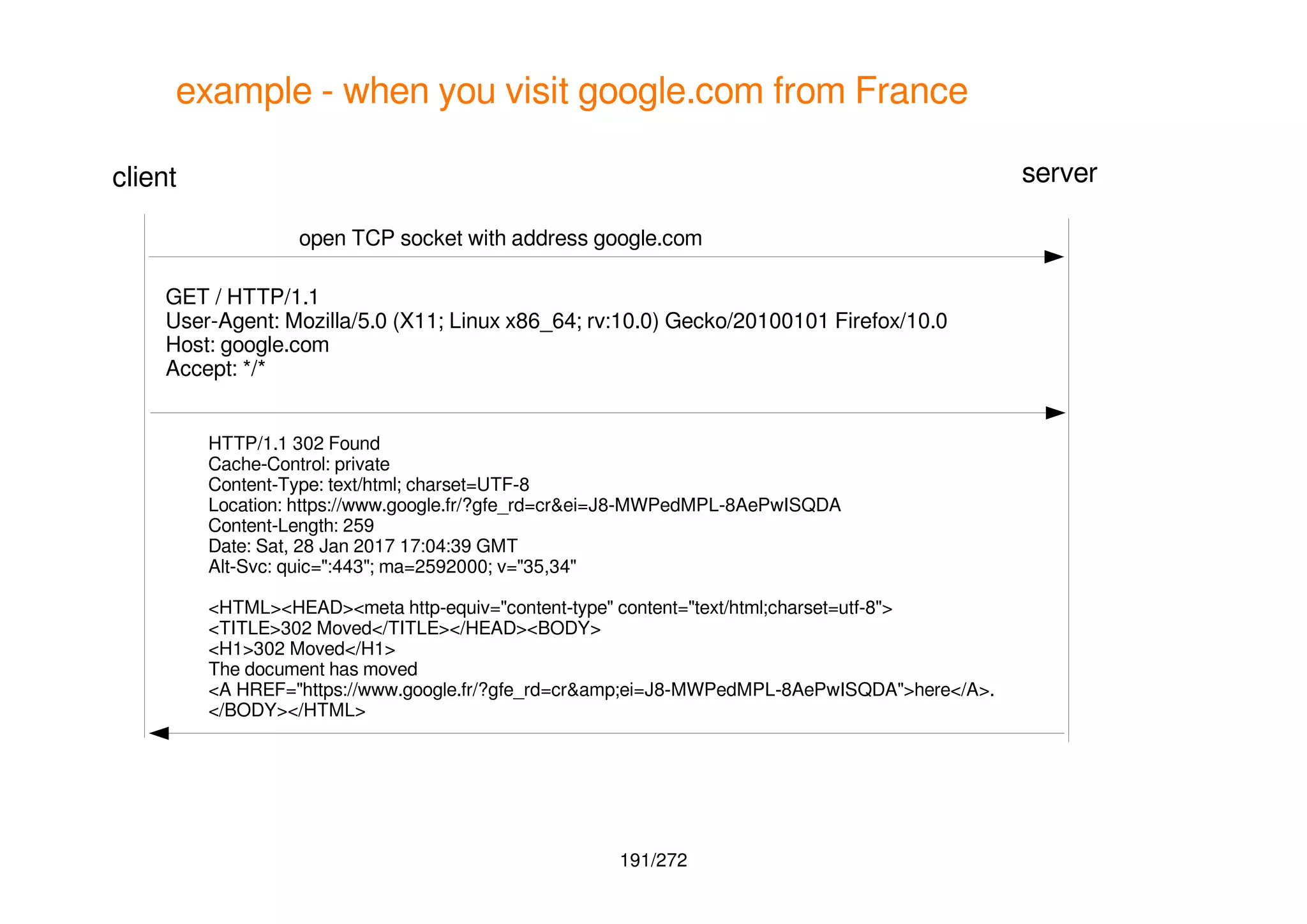
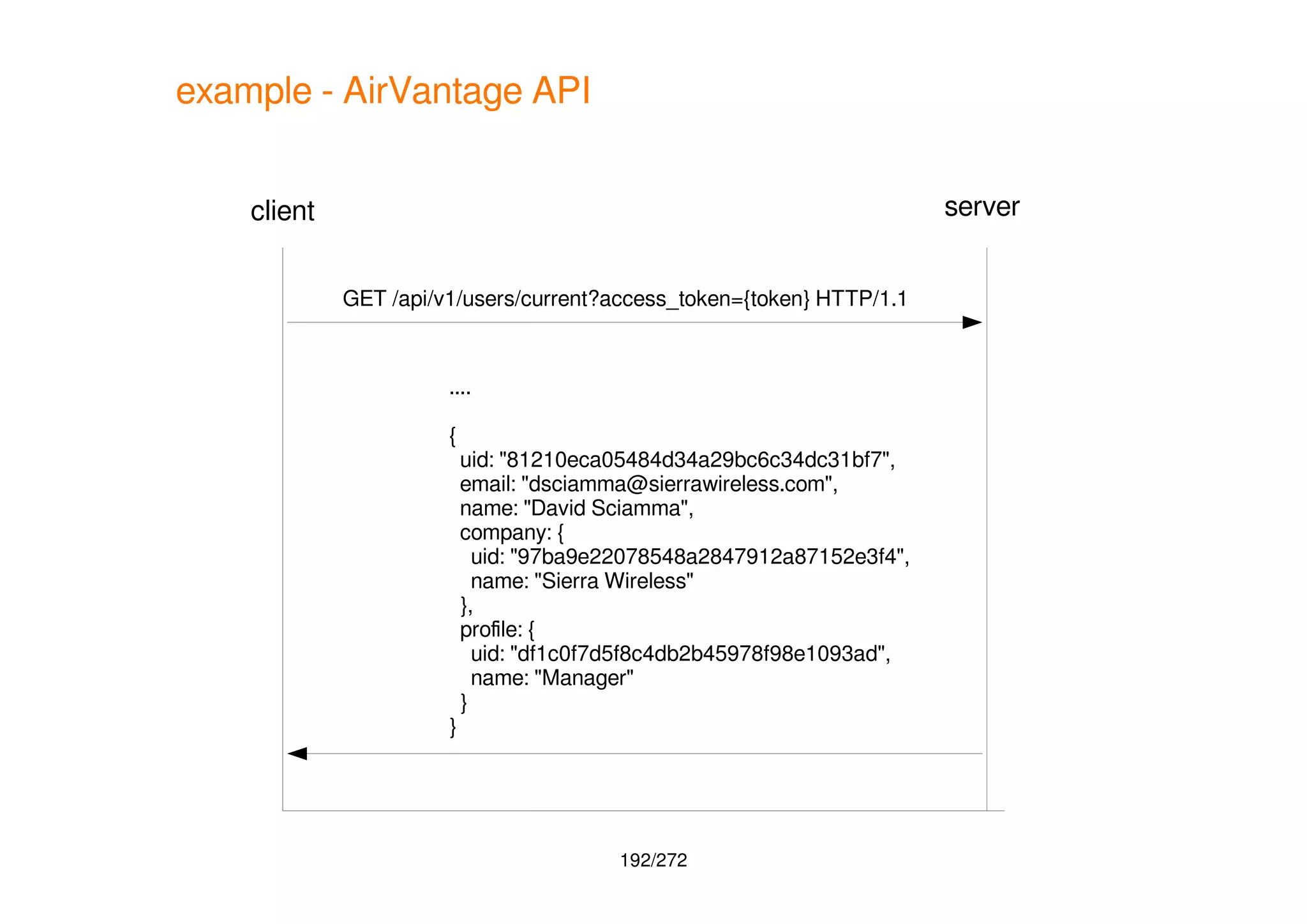
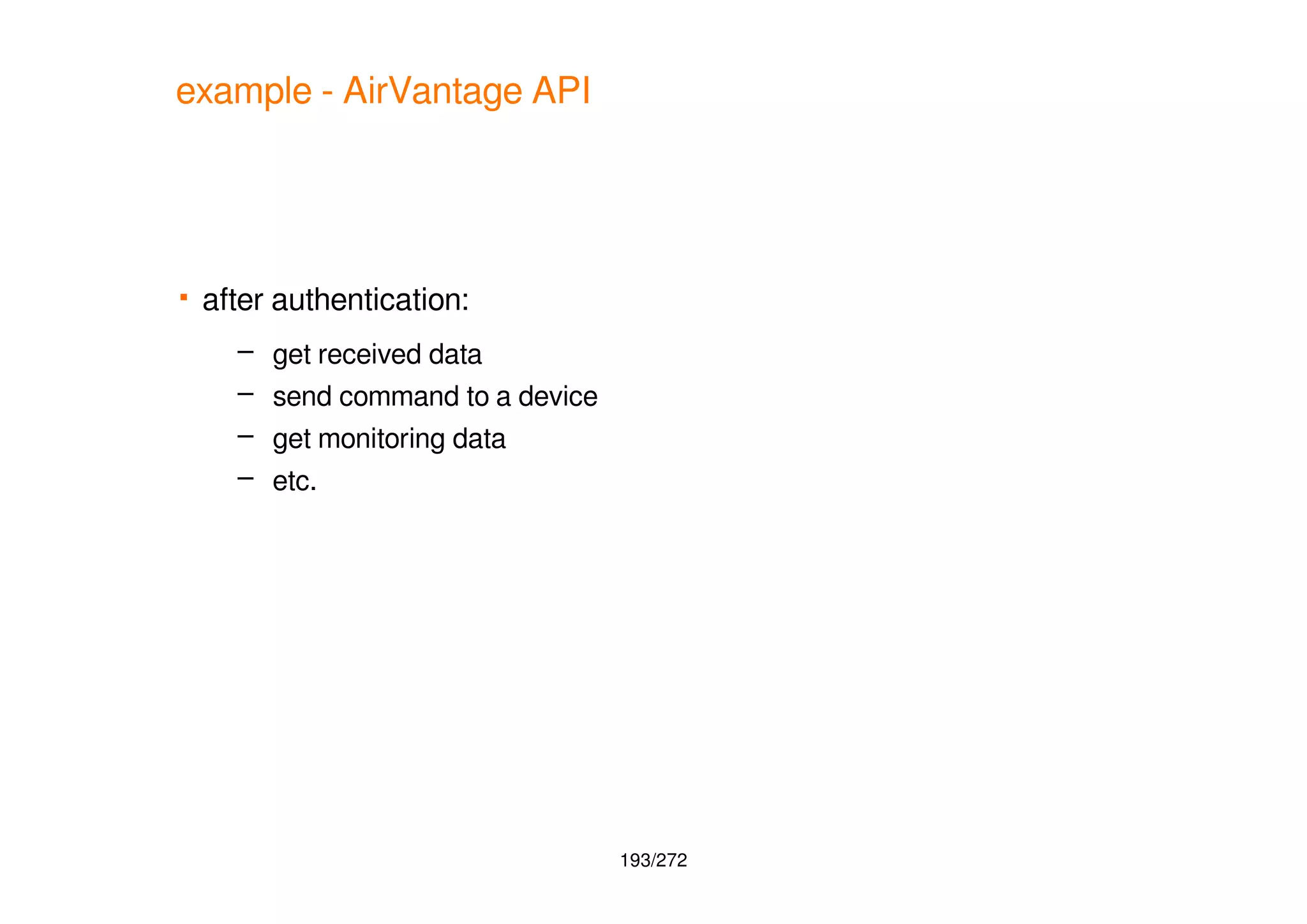

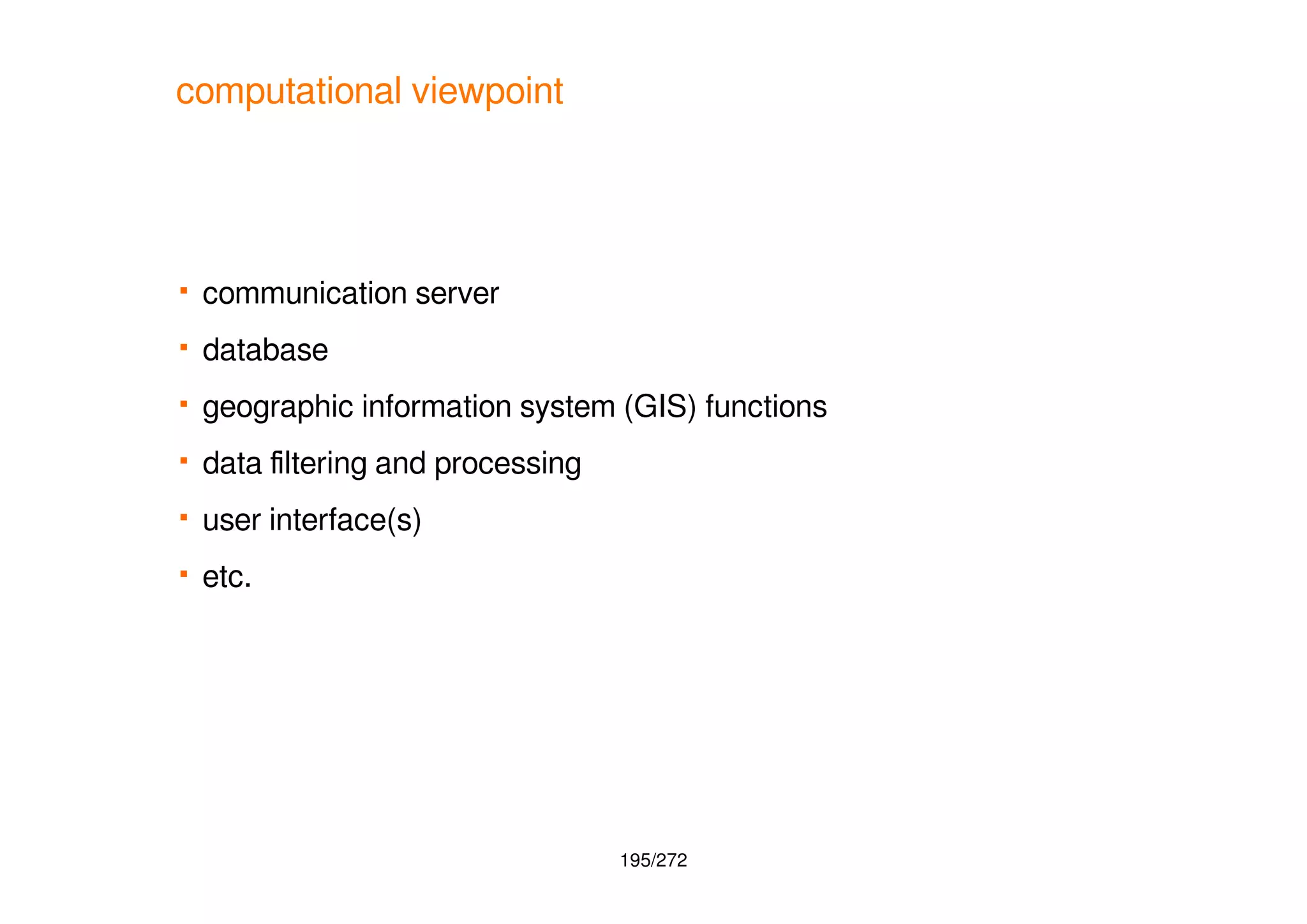
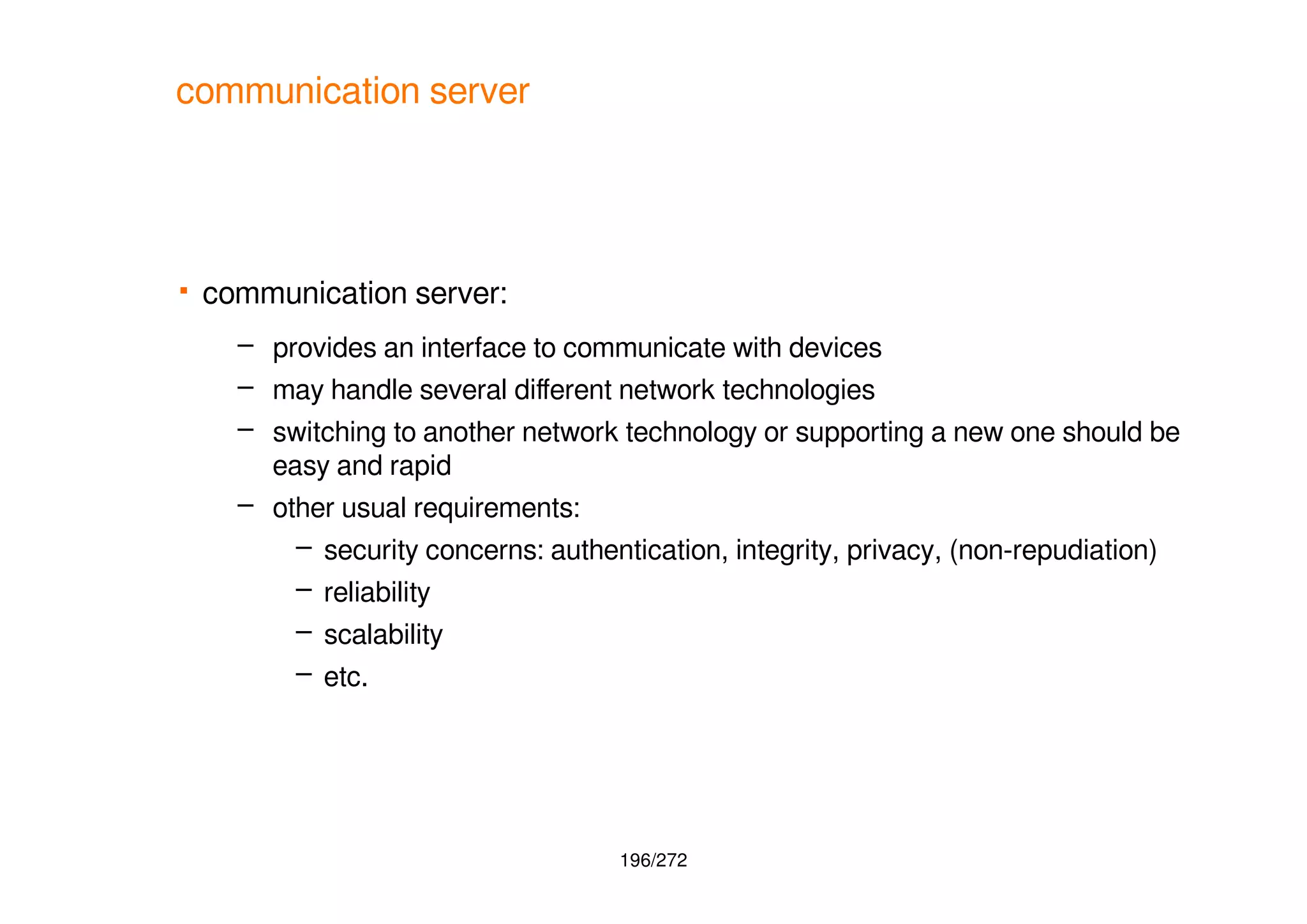
![197/272
communication server
example:
– for PMR or unlicensed radio
antennas
transceivers
+ modems
communication
server
[Cen01]](https://image.slidesharecdn.com/20180217-iotandconnecteddevices-180217095428/75/IoT-and-connected-devices-an-overview-197-2048.jpg)
![198/272
our demo system
JavaFX application implementing all functions:
– GUI
– communication server
– application layer
source lines of code (SLOC): around 1700
[Cen01]](https://image.slidesharecdn.com/20180217-iotandconnecteddevices-180217095428/75/IoT-and-connected-devices-an-overview-198-2048.jpg)
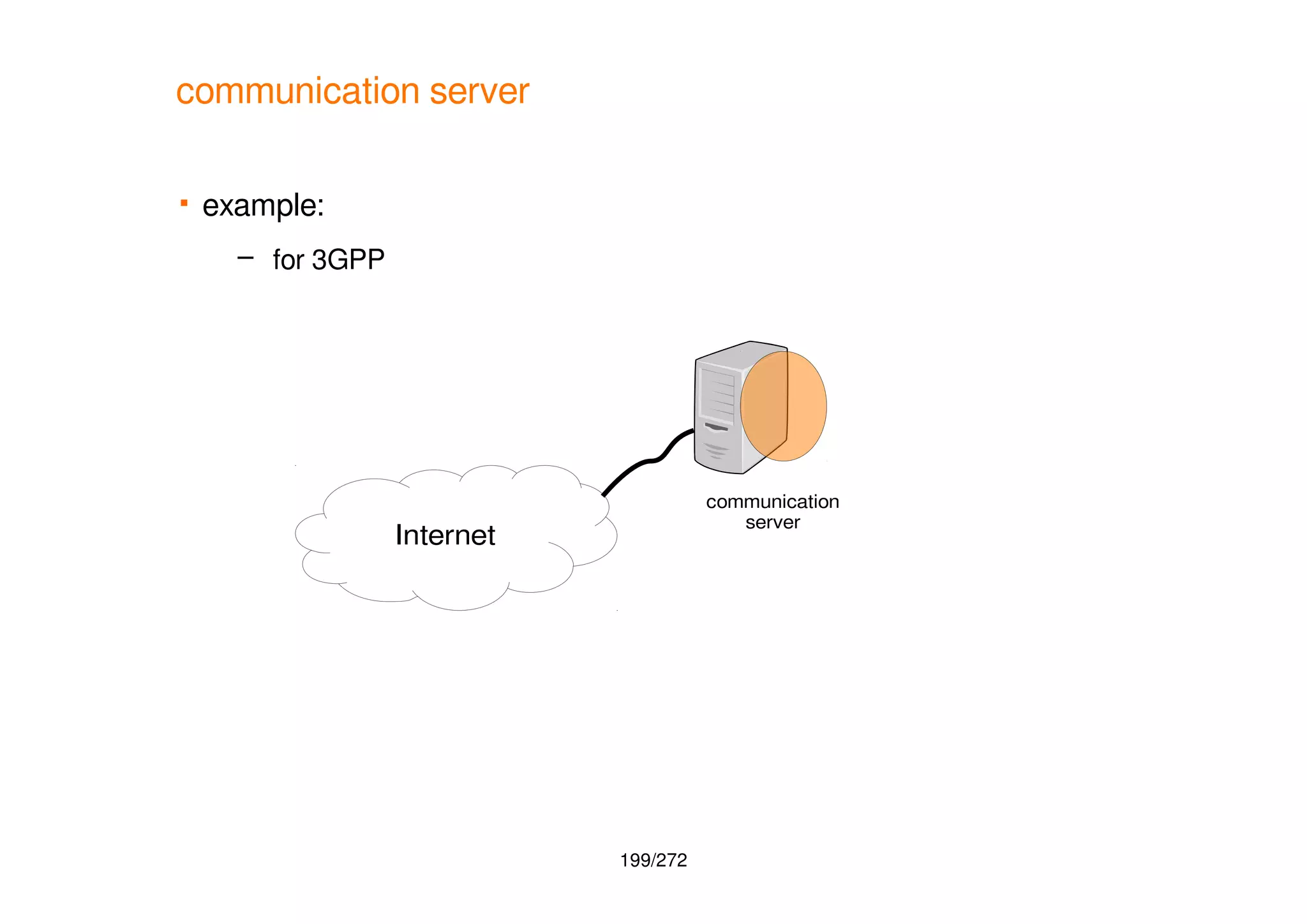

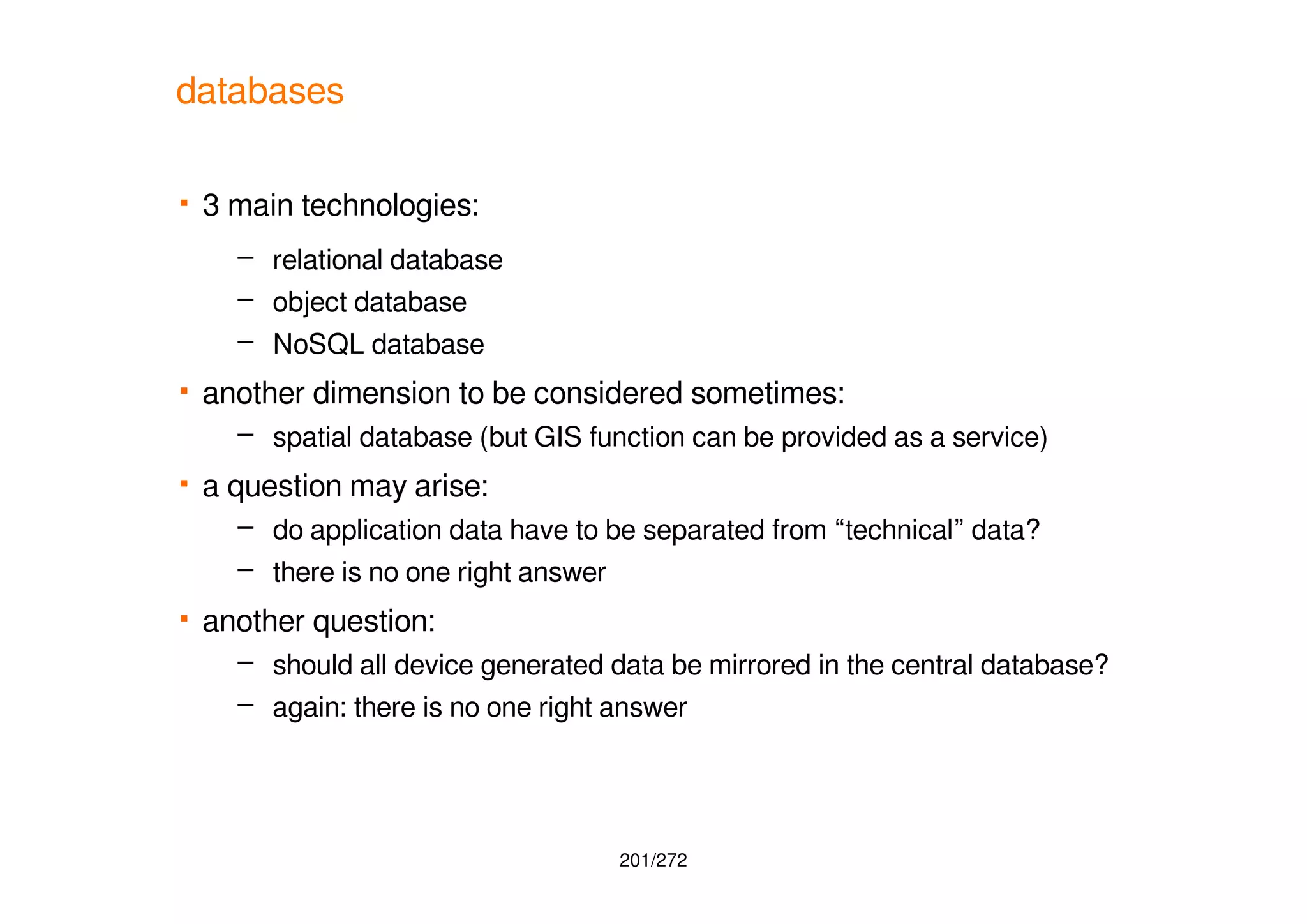
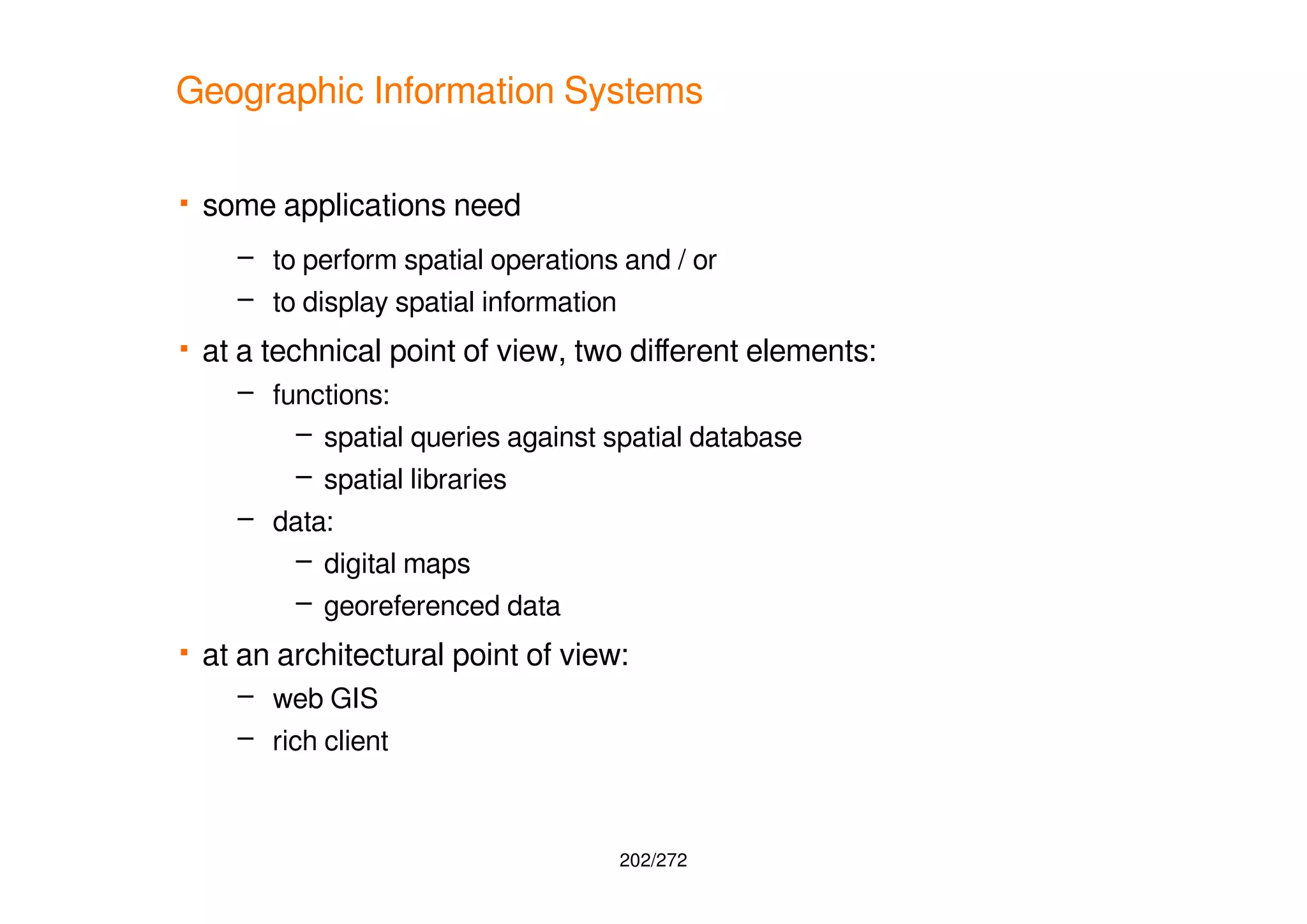
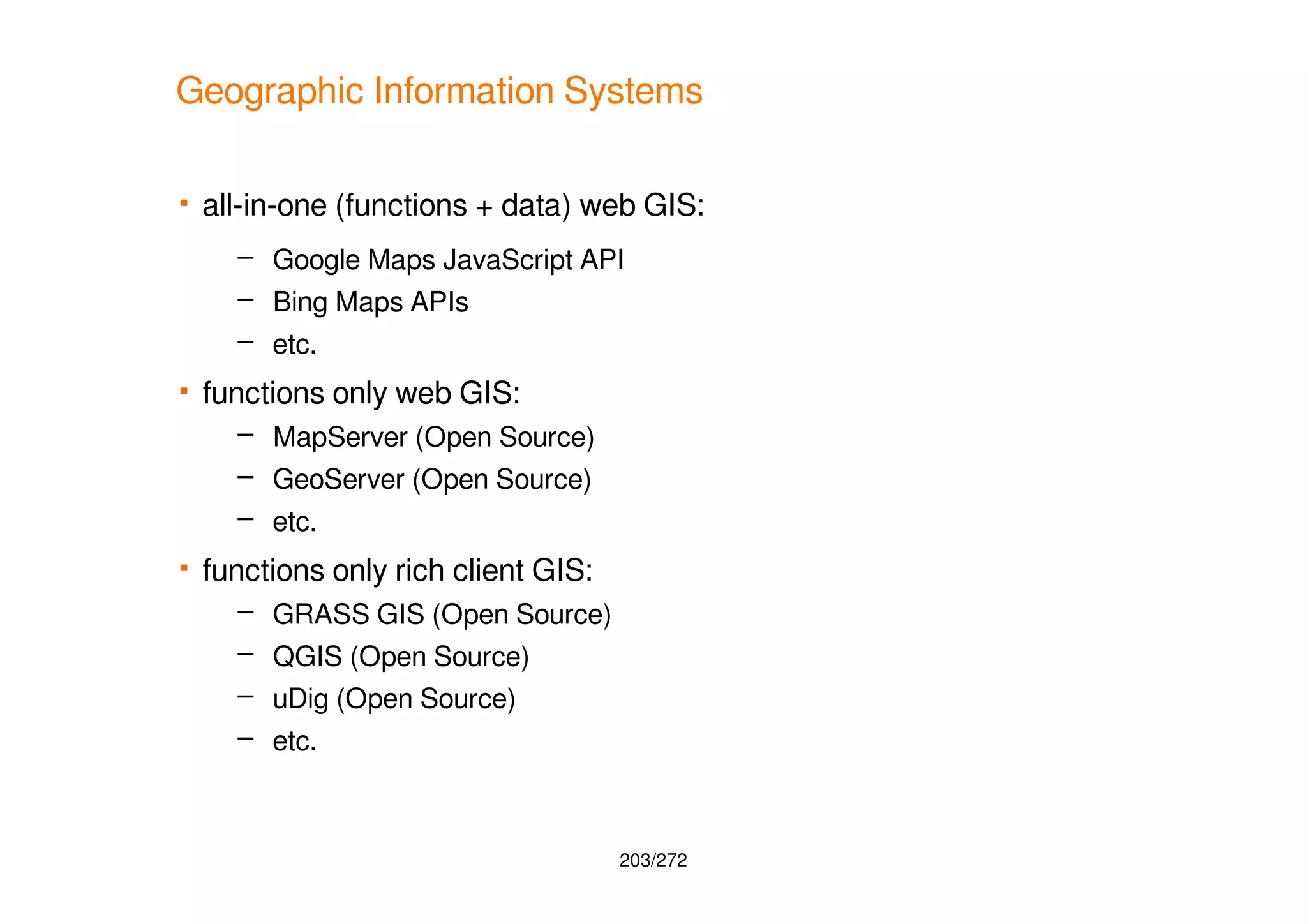

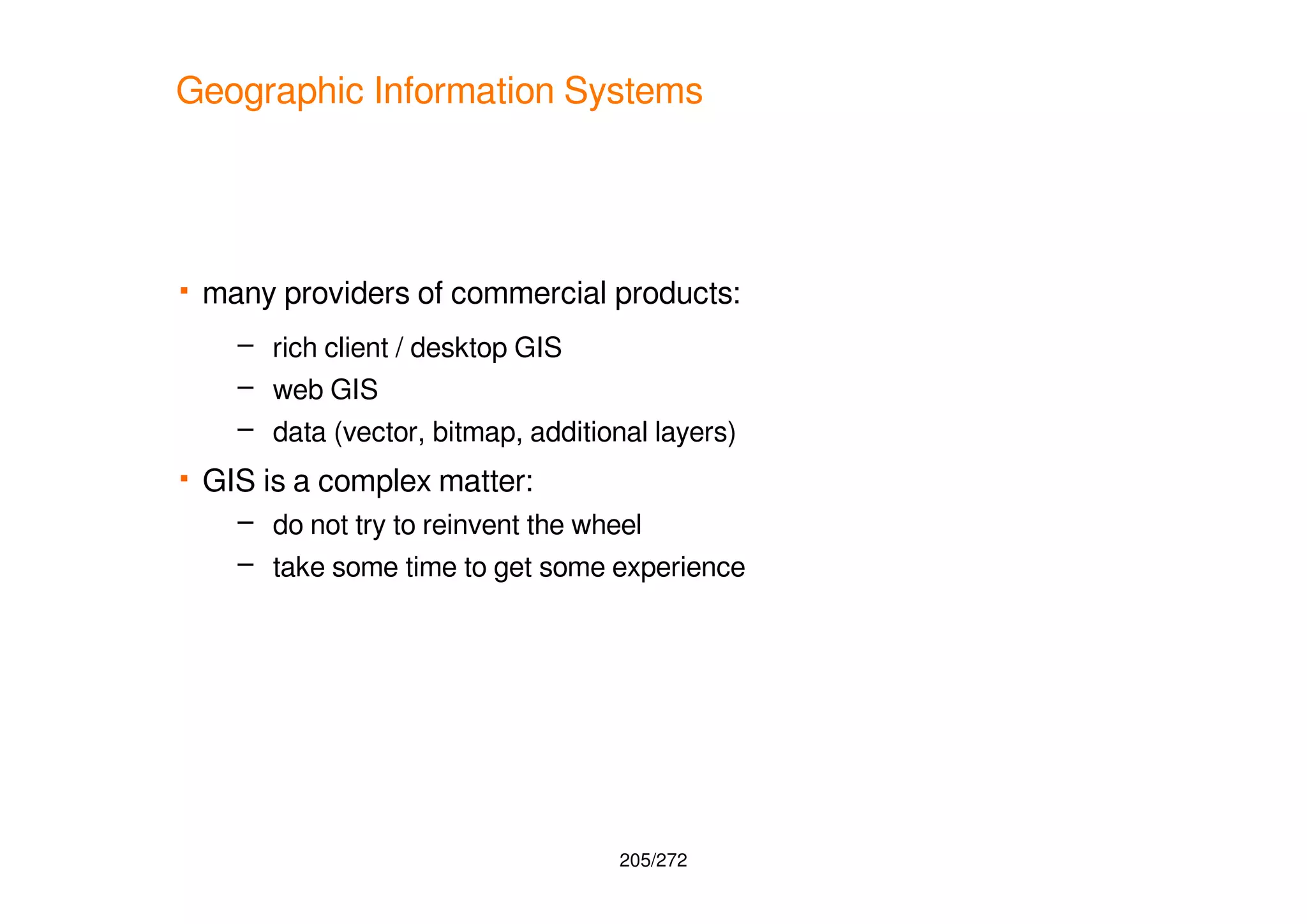
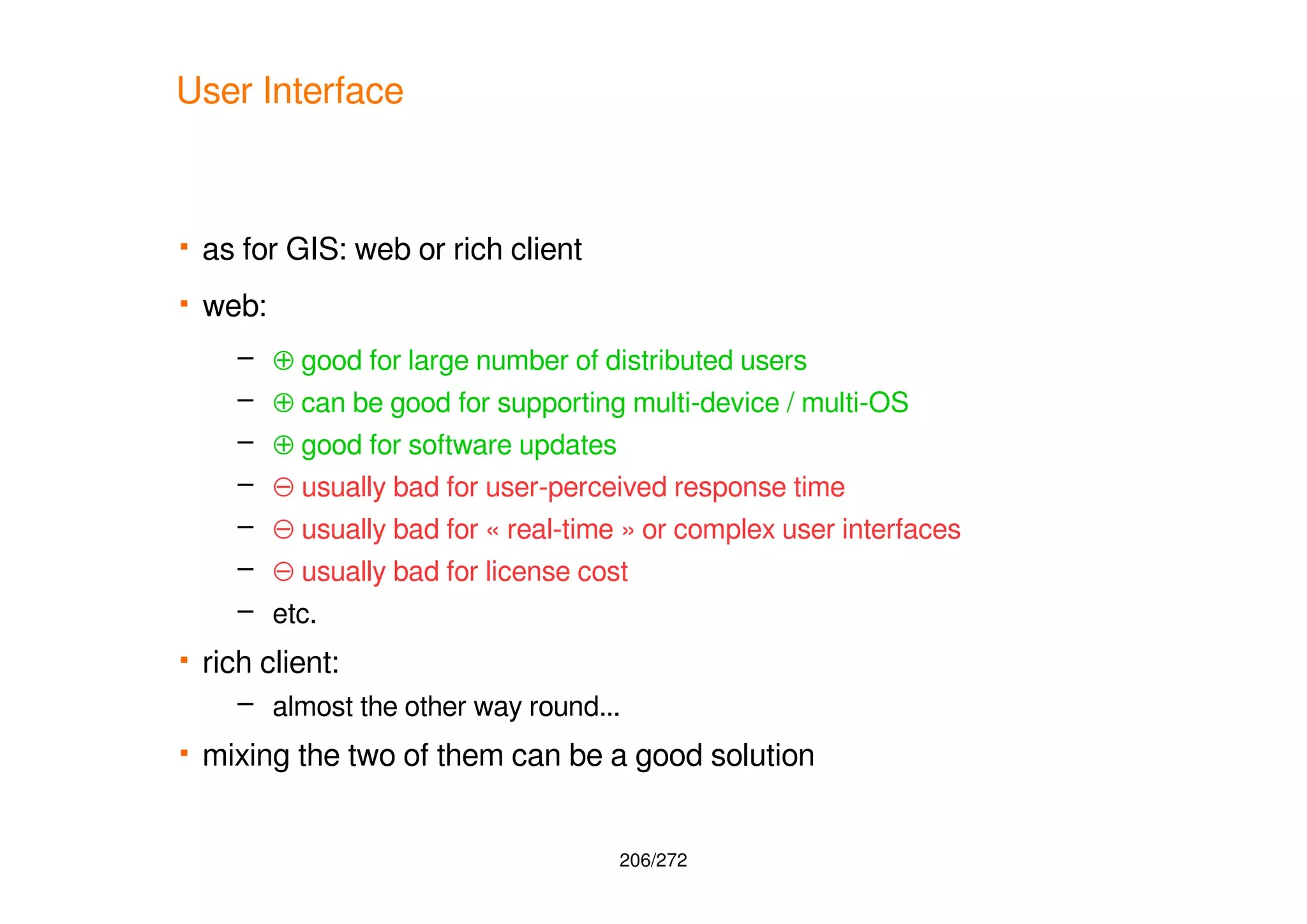
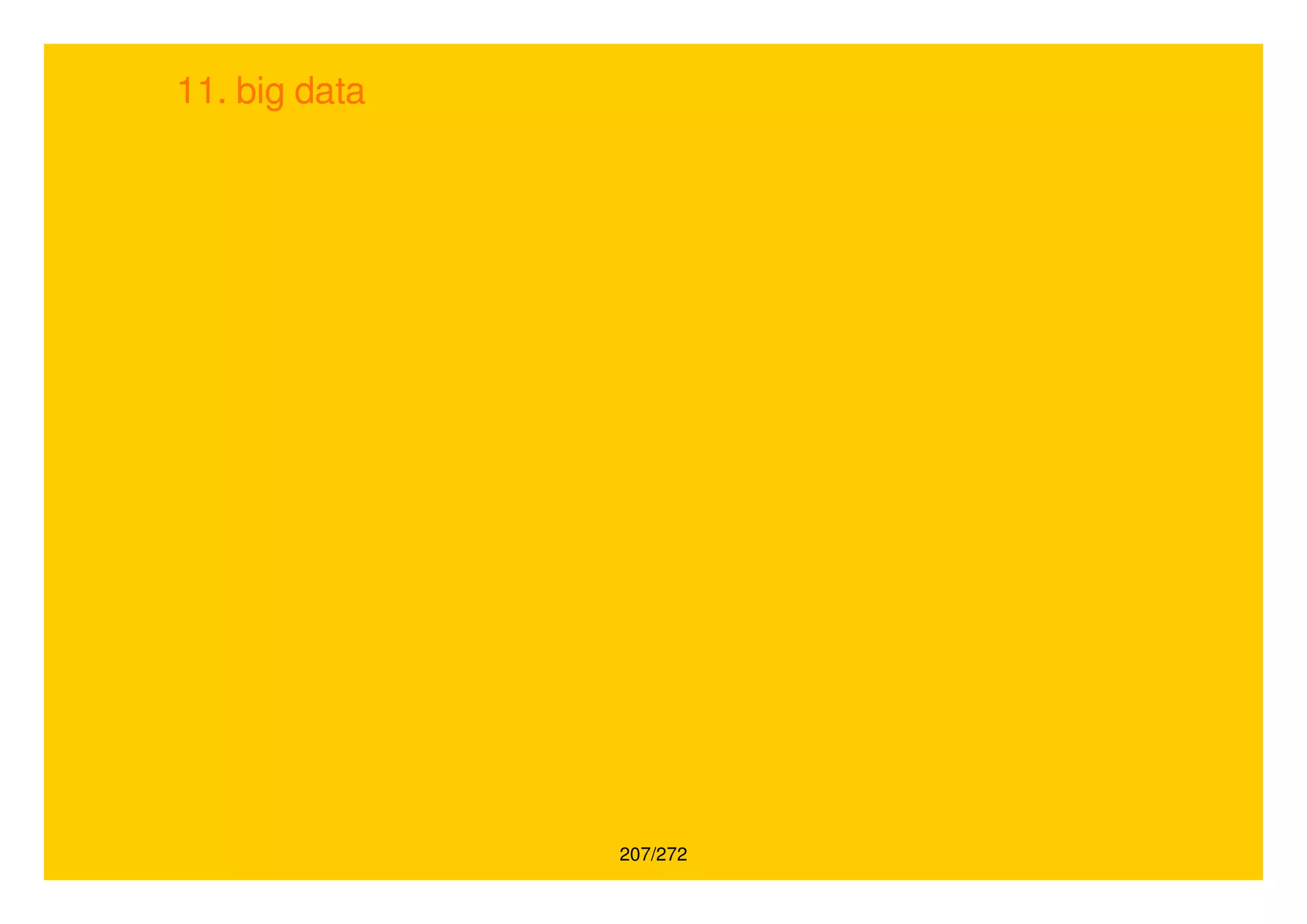
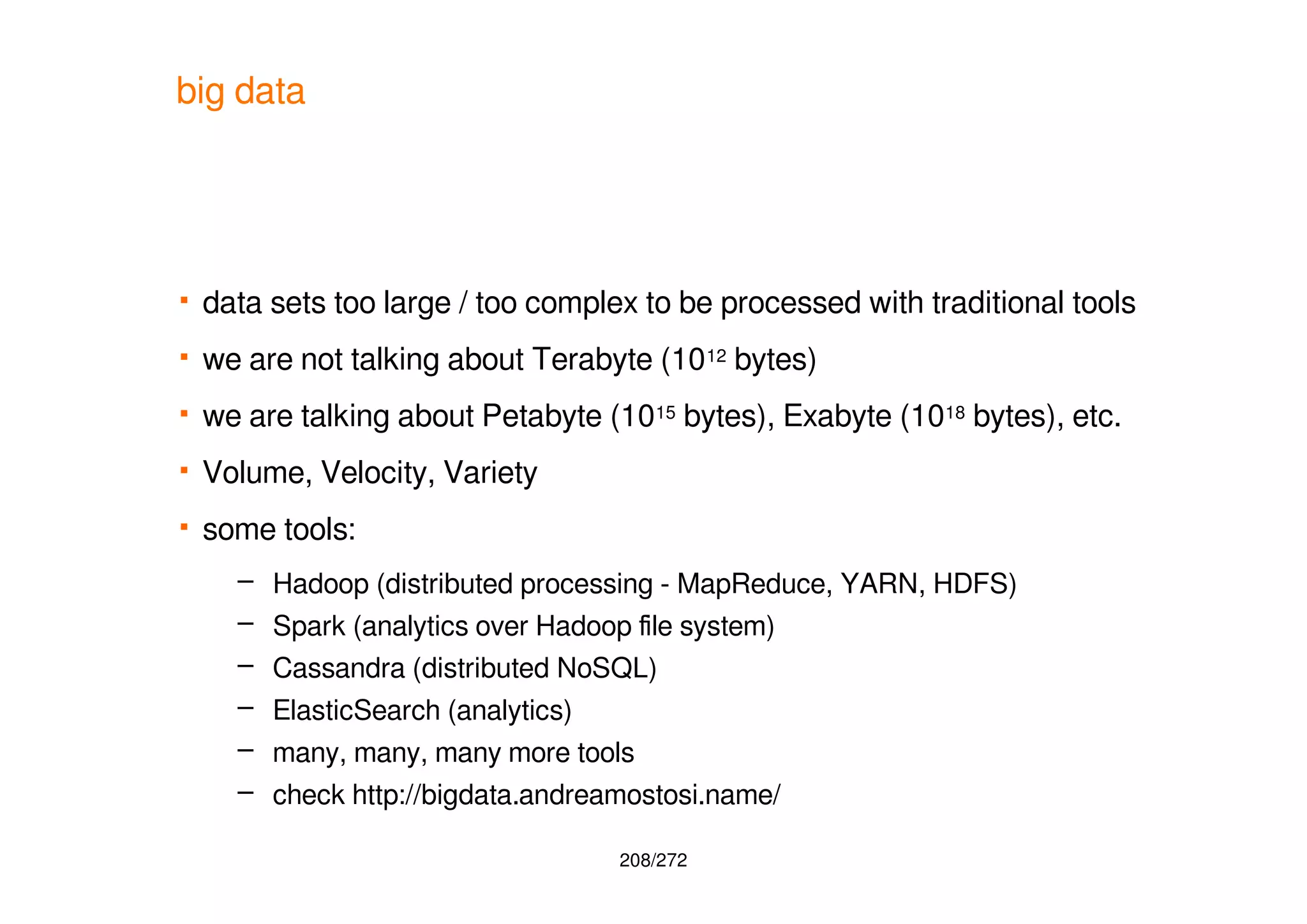
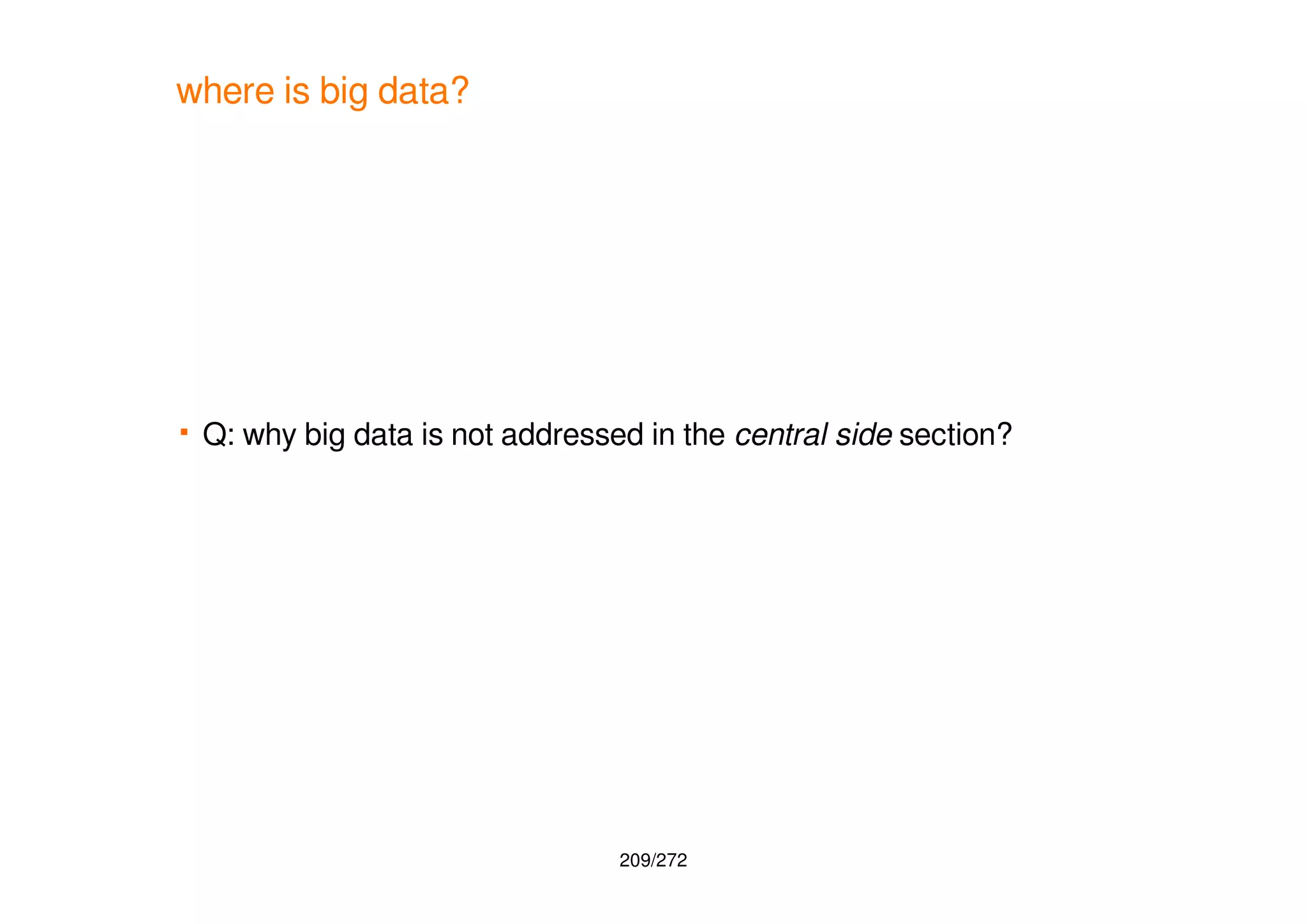



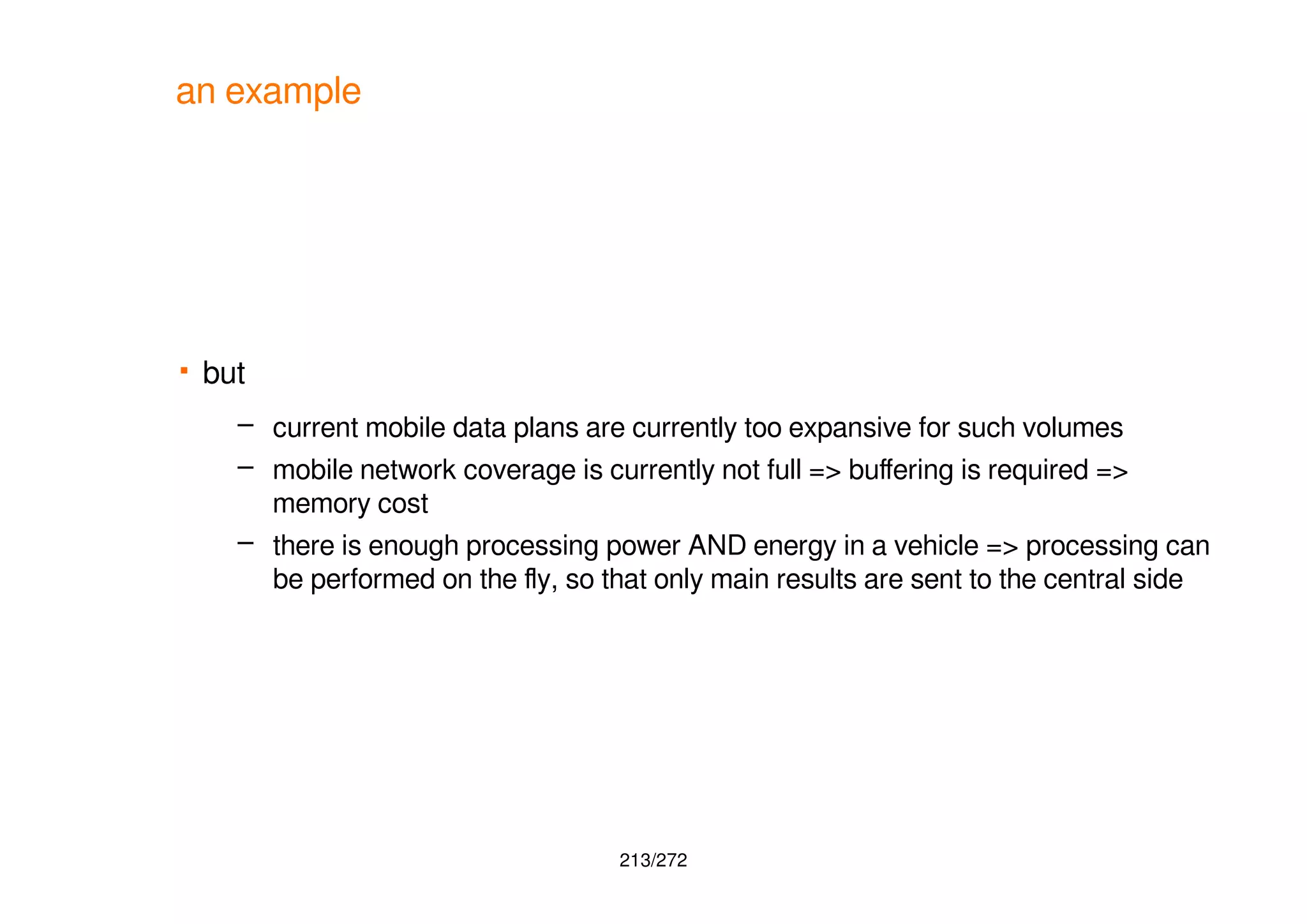
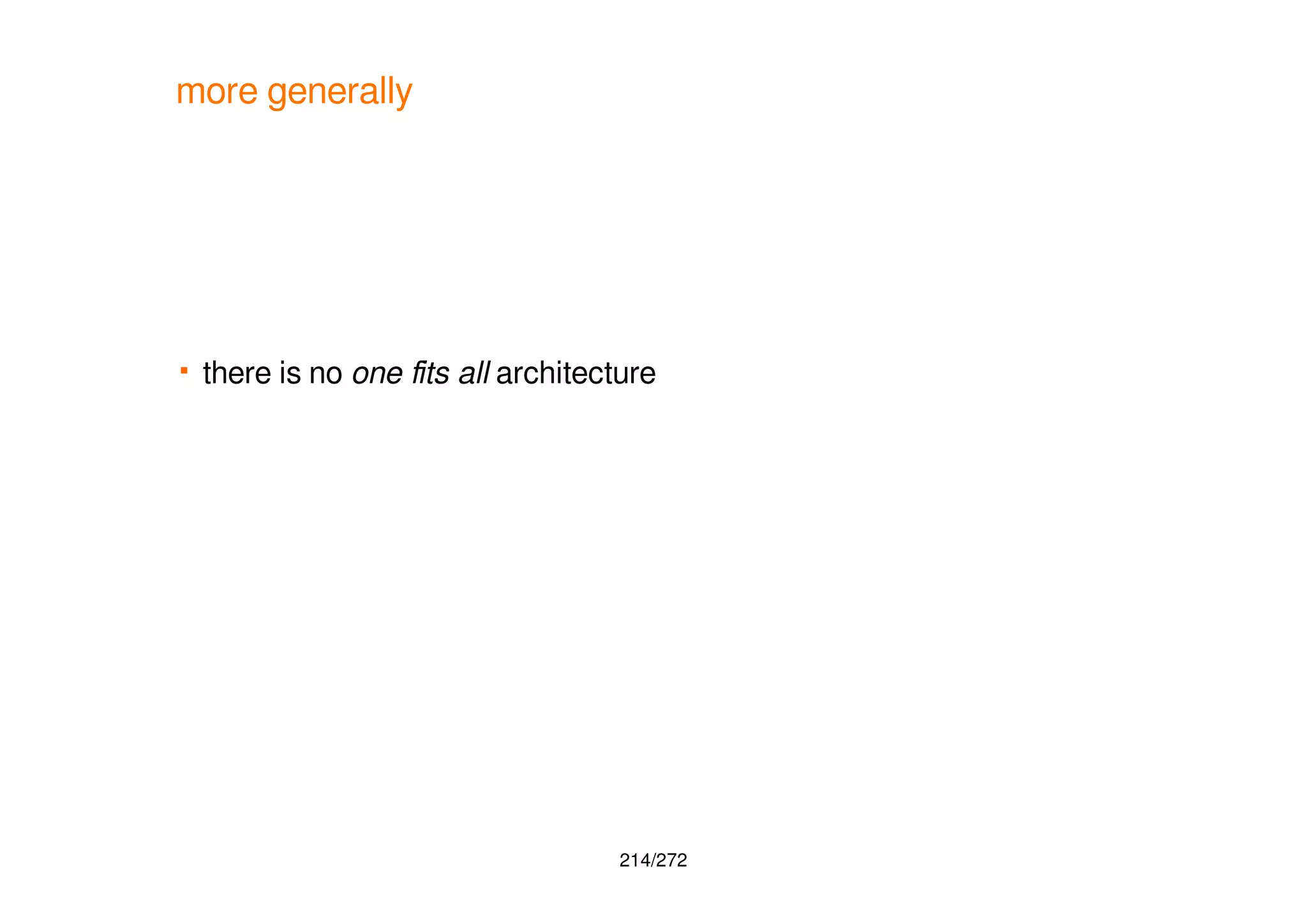
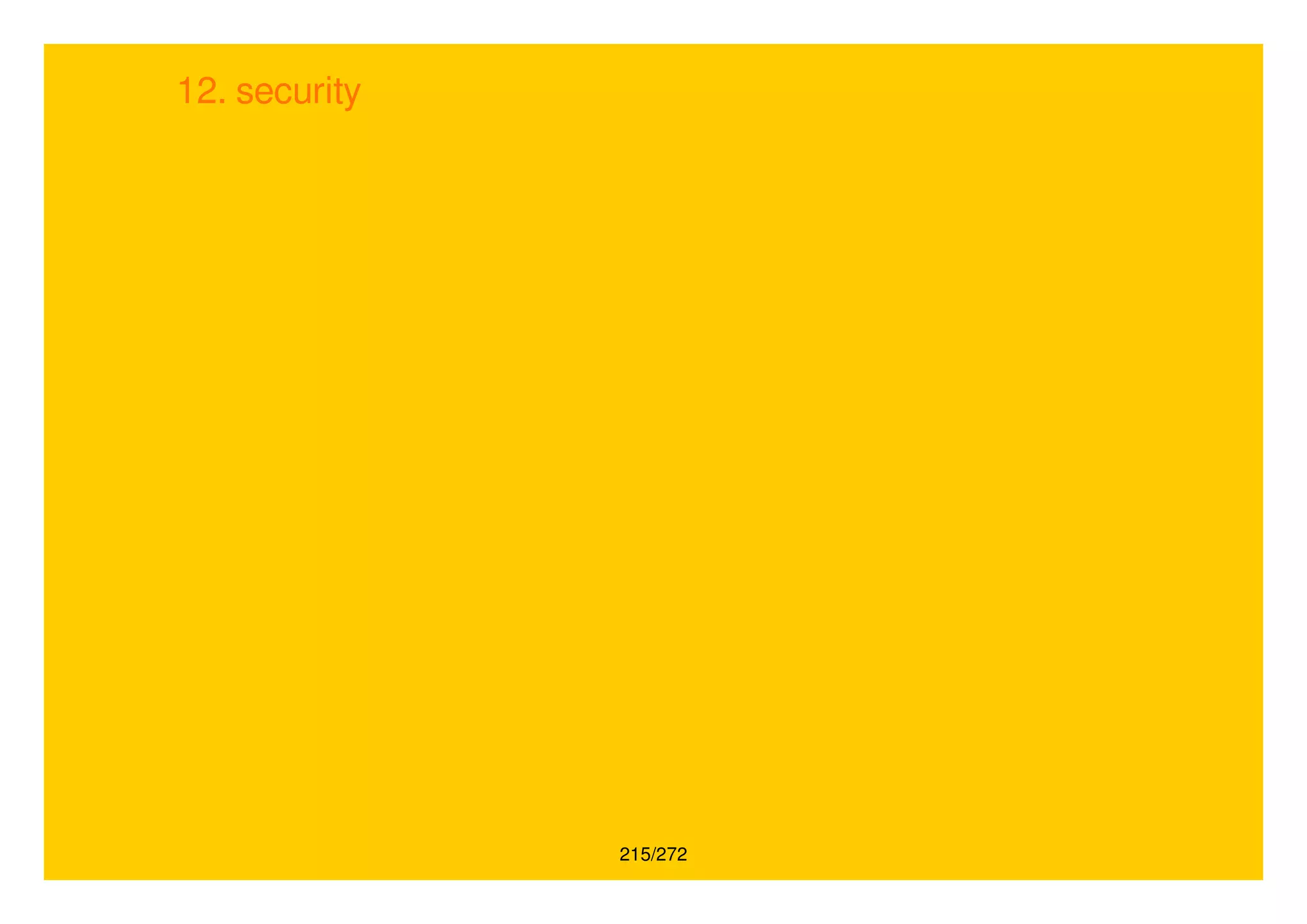

![217/272
checklist
business processes:
– who is in charge?
– how to address security?
device hardware and physical security:
– secure boot process
– no active debug interface
– physical protection against tampering
– etc.
device application:
– signed software
– signed remote software updates
– unused ports are disabled
– good practice coding standard
– well defne source code management
– safe failures
– etc.
[Sec01]](https://image.slidesharecdn.com/20180217-iotandconnecteddevices-180217095428/75/IoT-and-connected-devices-an-overview-217-2048.jpg)
![218/272
checklist
device operating system:
– most current patches
– plan for remote update
– non-essential services are remoed
– etc.
device wired and wireless interfaces:
– unauthorized connections are prevented
– IP packets forwarding between interfaces is disabled
– unused ports are closed
– if existing, default connection password is unique to each device
– connections are secured (TLS...)
– etc.
[Sec01]](https://image.slidesharecdn.com/20180217-iotandconnecteddevices-180217095428/75/IoT-and-connected-devices-an-overview-218-2048.jpg)
![219/272
checklist
authentication and authorization:
– code and data are binded to a specifc devie hardware
– a password can’t be null or blank
– protection against repeated login attempts
– stored passwords are encrypted
– etc.
encryption and key management for hardware:
– true random number generator
– tamper proof location for sensitive data
– etc.
web user interface:
– strong user authentication
– automatic session timeout
– input validation
– etc.
[Sec01]](https://image.slidesharecdn.com/20180217-iotandconnecteddevices-180217095428/75/IoT-and-connected-devices-an-overview-219-2048.jpg)
![220/272
checklist
mobile application:
– minimum required amount of personal information is stored
– personal user data is encrypted
– stored passwords are encrypted
– etc.
privacy:
– only authorised personnel have access to personal data of users
– personal data is anonymized
– data retention policy
– product owner is informed about data collection
– etc.
cloud and network elements:
– latest security patches
– webserver identifcation switched of
– etc.
[Sec01]](https://image.slidesharecdn.com/20180217-iotandconnecteddevices-180217095428/75/IoT-and-connected-devices-an-overview-220-2048.jpg)
![221/272
checklist
secure supply chain and production:
– test and calibration software erased before dispatch
– duplicate serial numbers are detected
– securely controlled area may be required
– etc.
[Sec01]](https://image.slidesharecdn.com/20180217-iotandconnecteddevices-180217095428/75/IoT-and-connected-devices-an-overview-221-2048.jpg)
![222/272
summary
security is a world by itself
it applies to all subcomponents
a broad view is required
rely on real experience
[Sec01]](https://image.slidesharecdn.com/20180217-iotandconnecteddevices-180217095428/75/IoT-and-connected-devices-an-overview-222-2048.jpg)
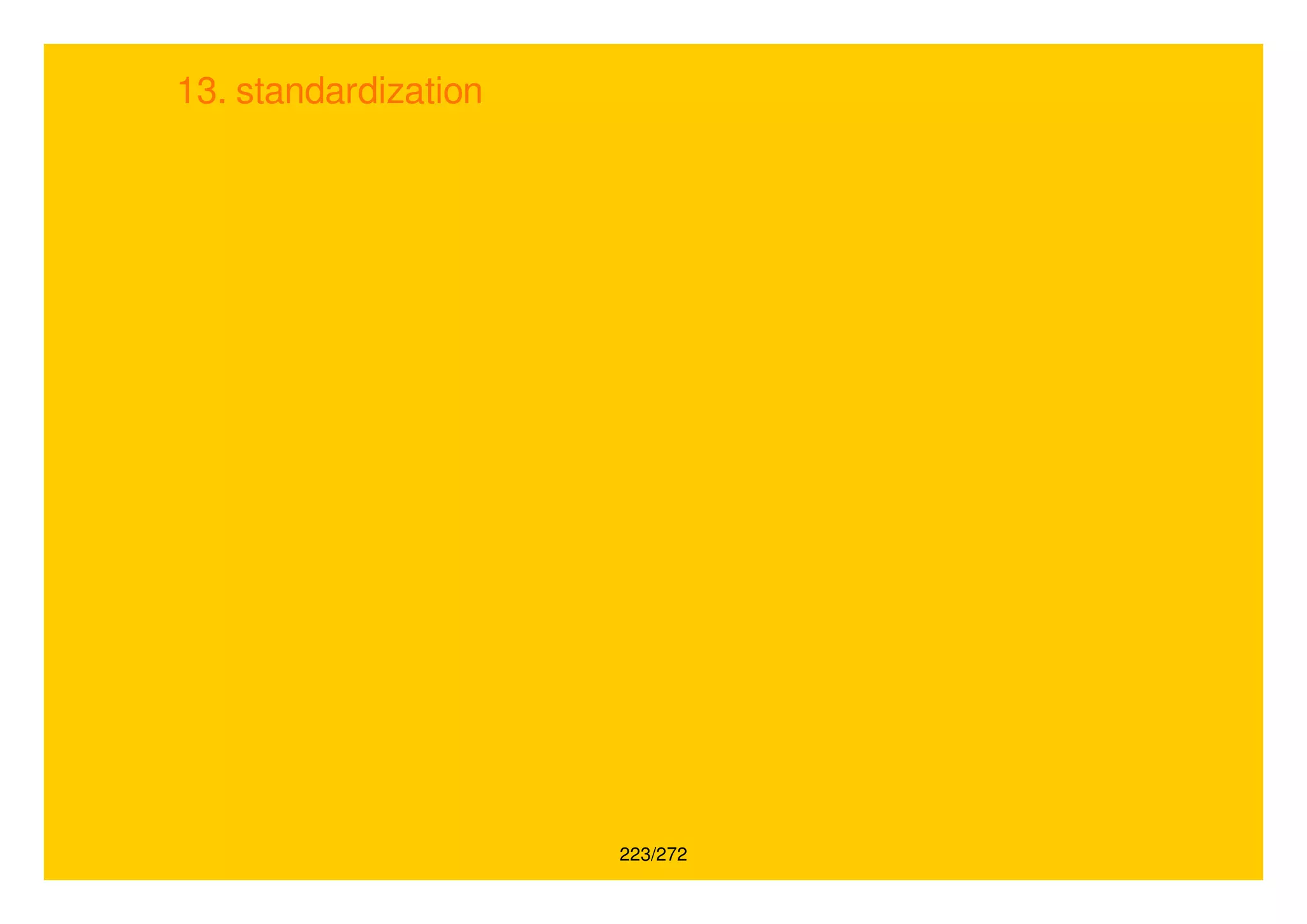
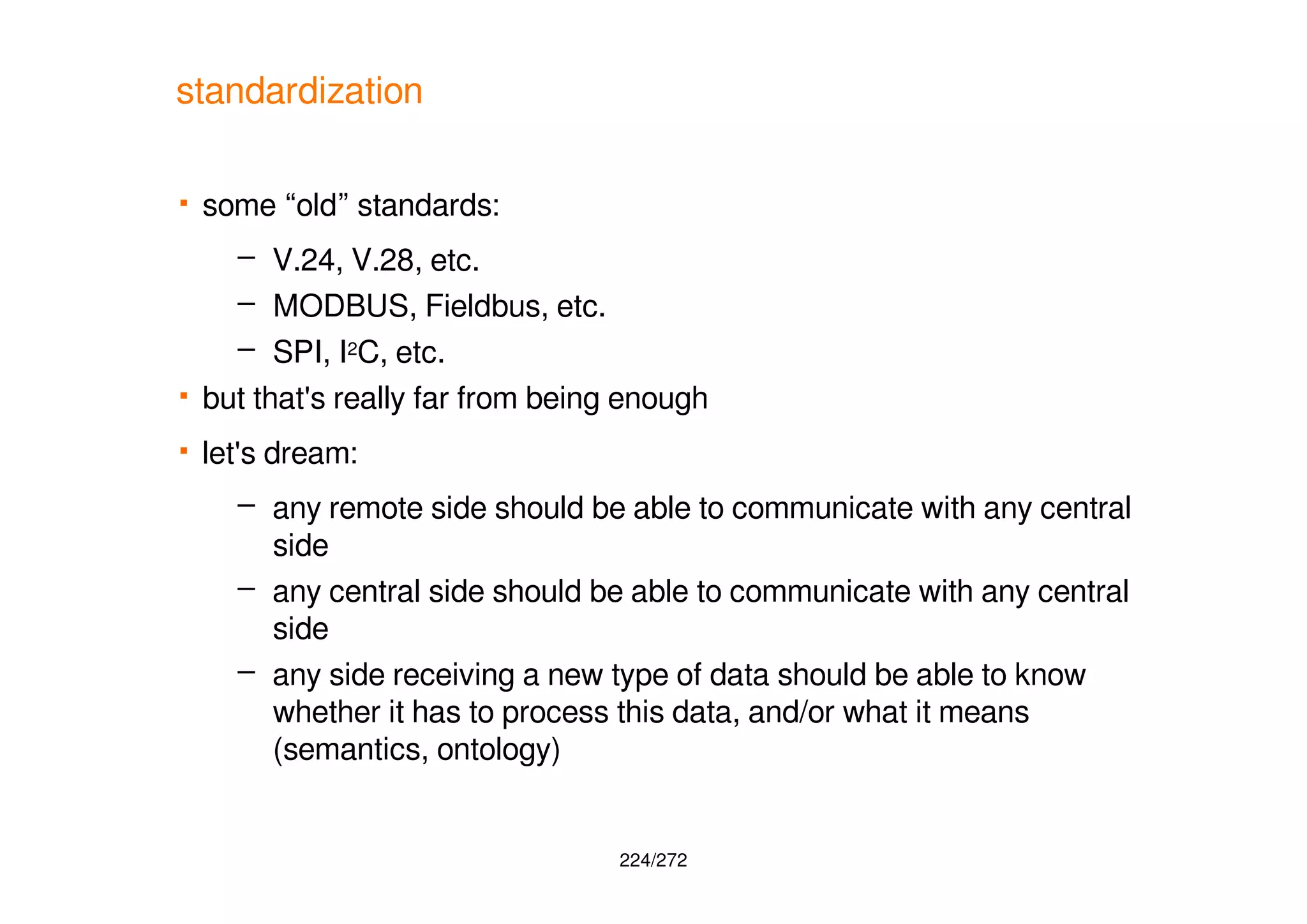
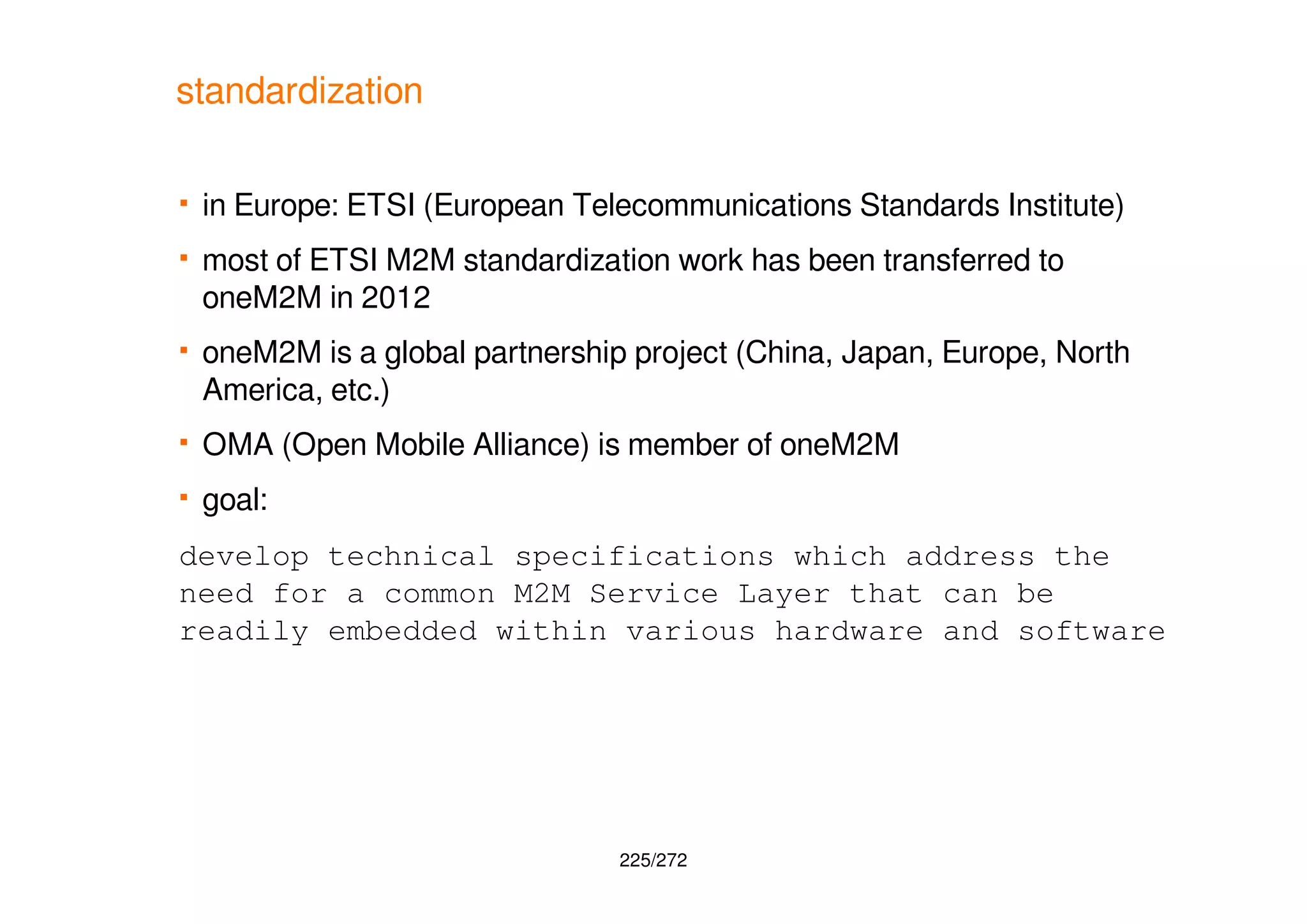
![226/272
standardization
AE: Application Entity - CSE: Common Services Entity - NSE: Network Services Entity
[Sta01]]](https://image.slidesharecdn.com/20180217-iotandconnecteddevices-180217095428/75/IoT-and-connected-devices-an-overview-226-2048.jpg)
![227/272
ITU-T - technical overview
[Sta02]]](https://image.slidesharecdn.com/20180217-iotandconnecteddevices-180217095428/75/IoT-and-connected-devices-an-overview-227-2048.jpg)
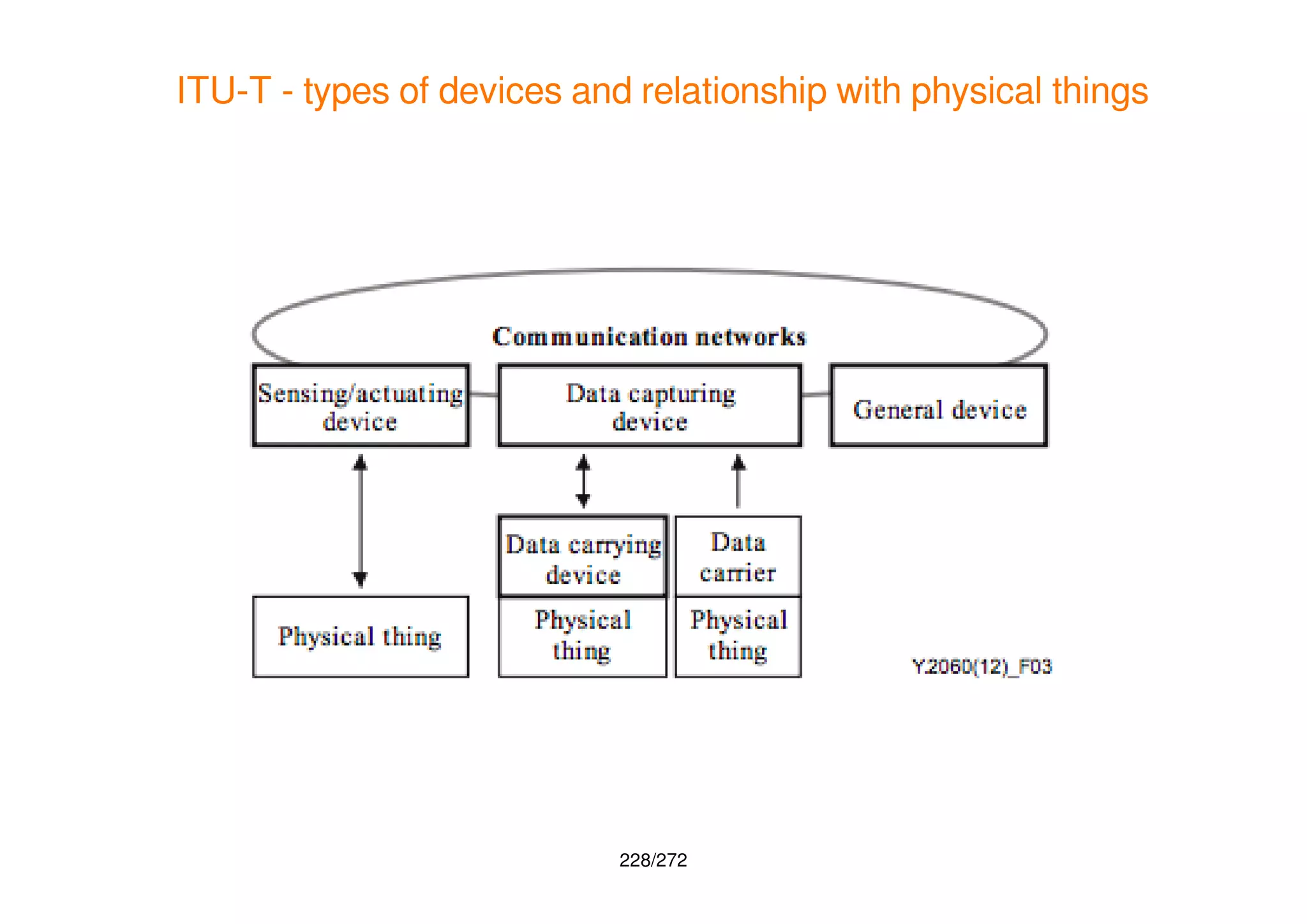

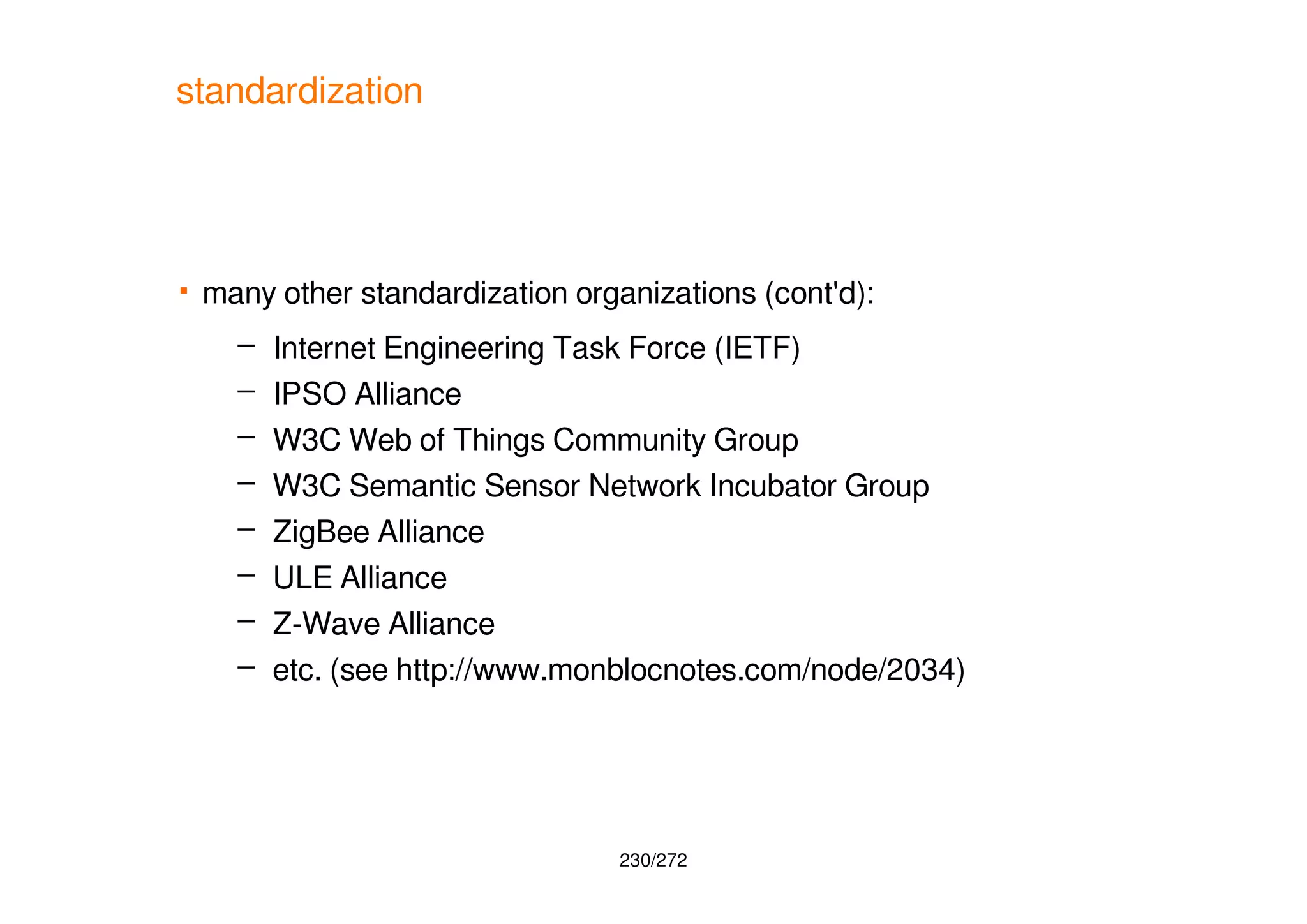
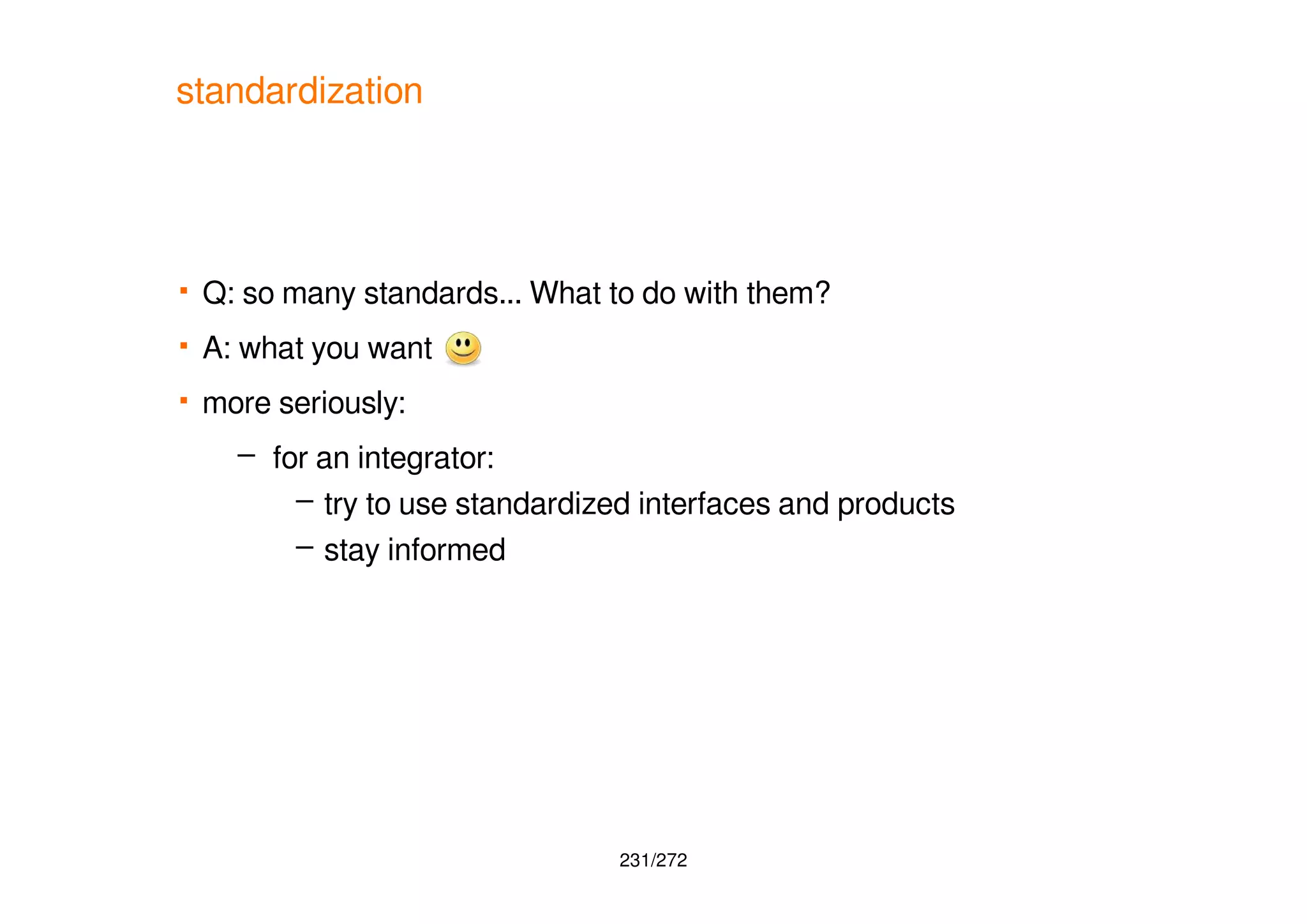
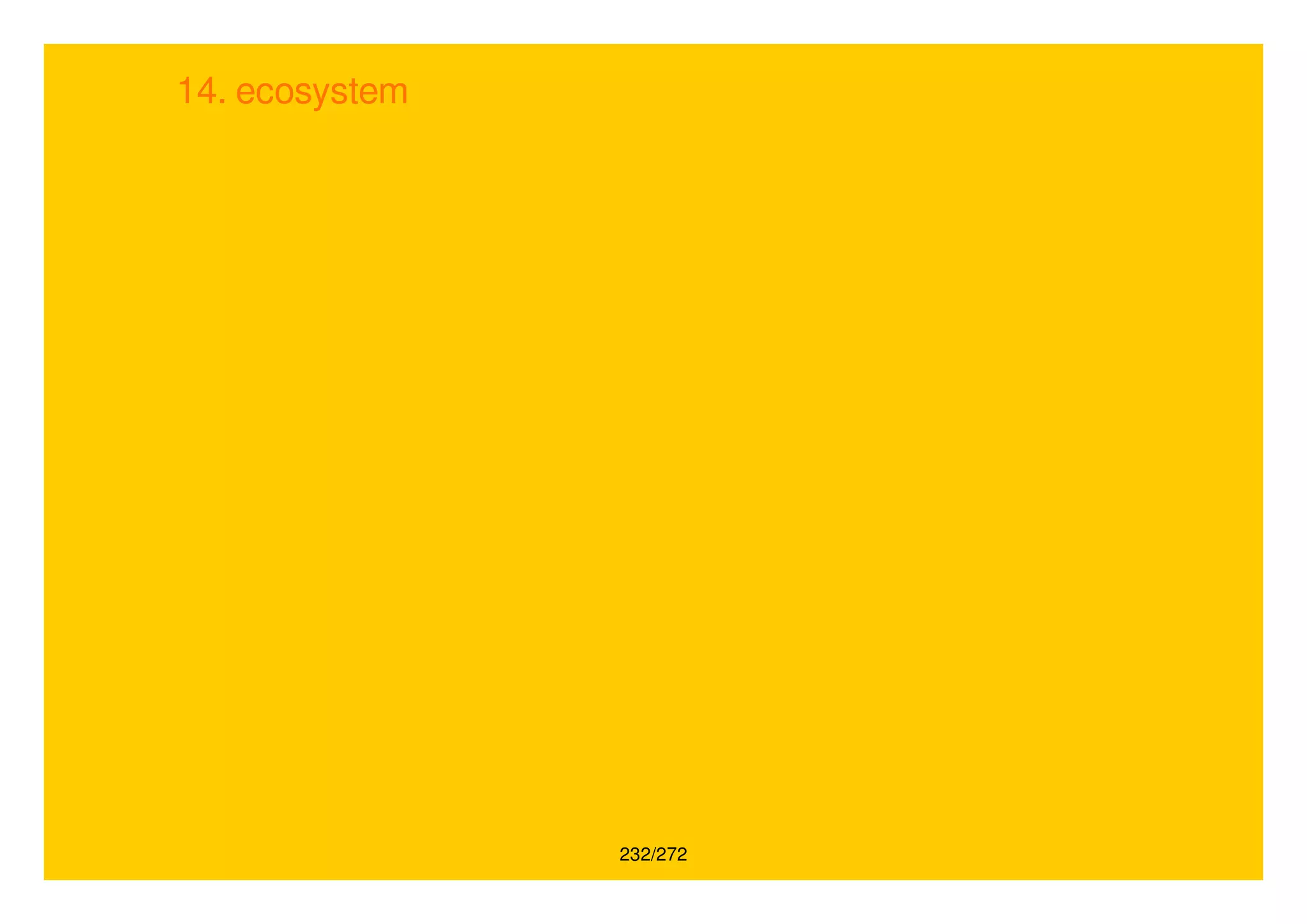
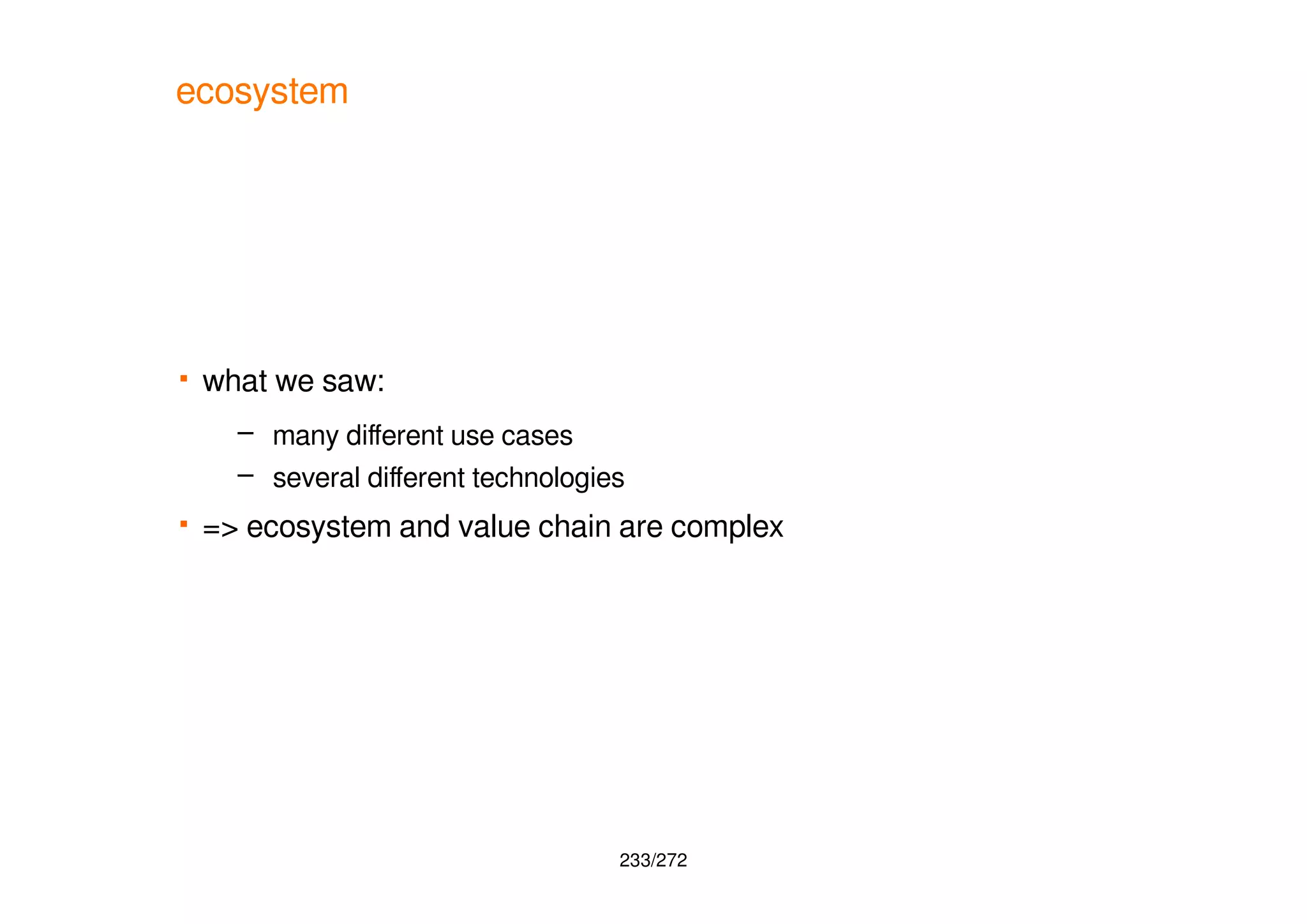
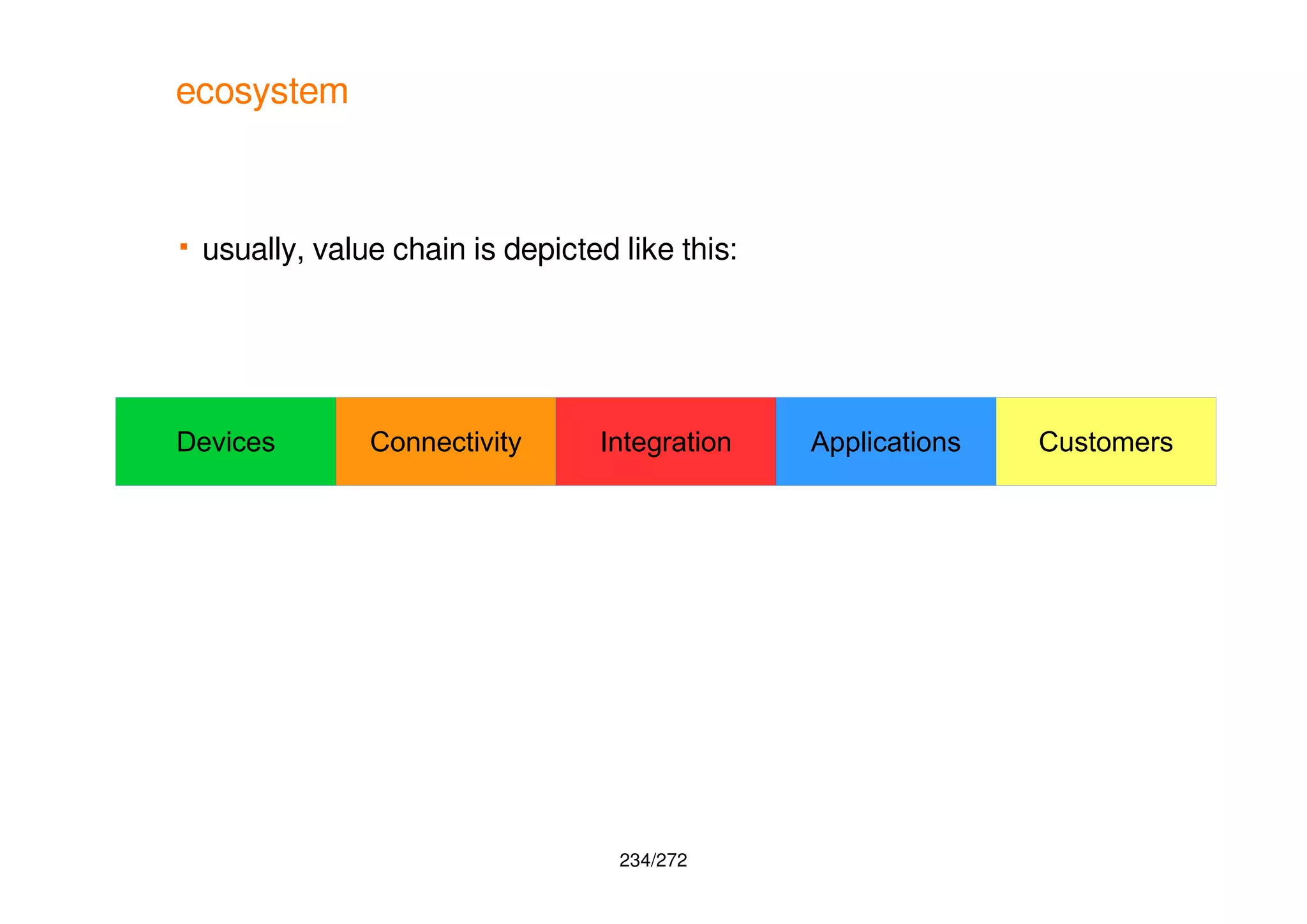
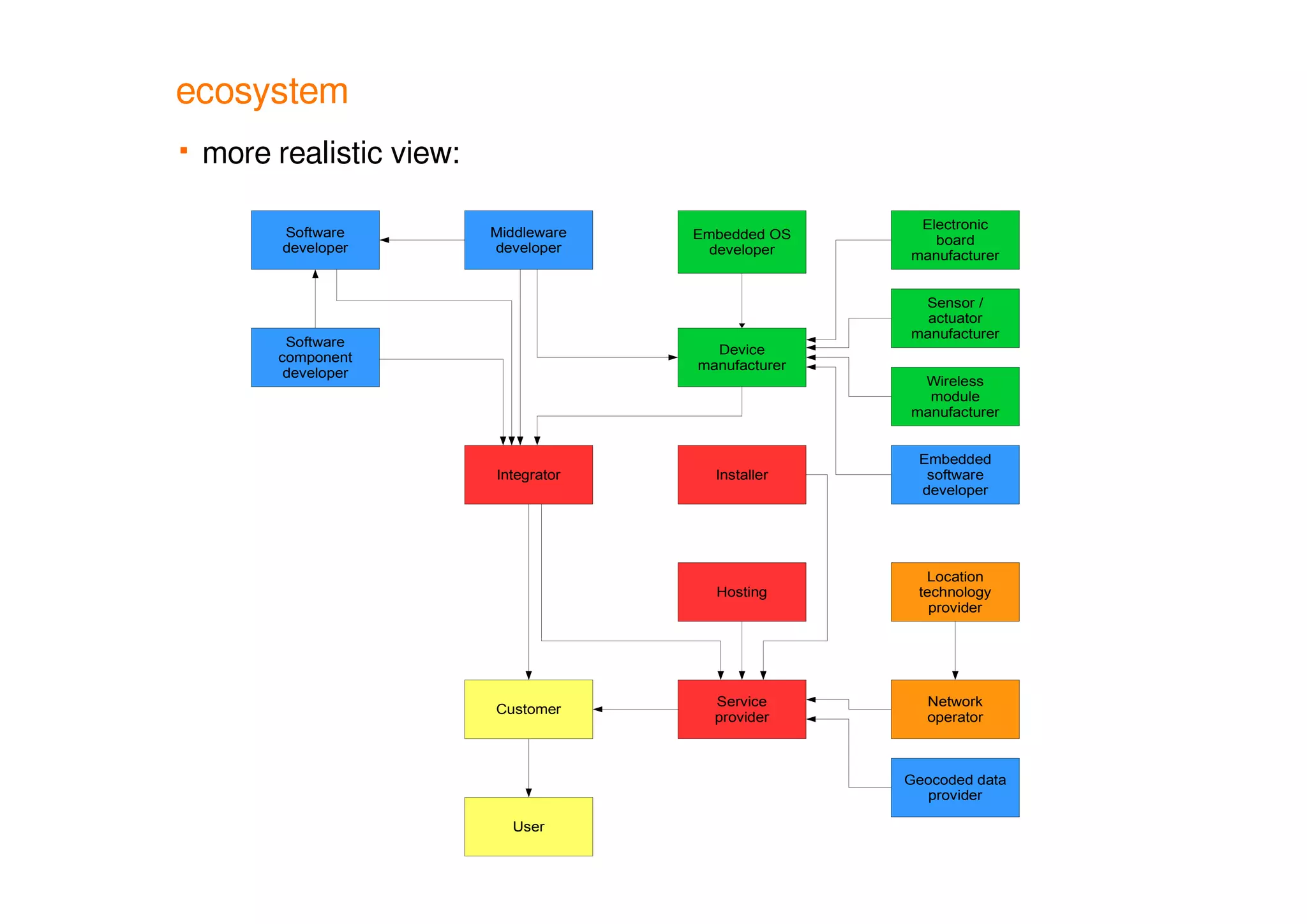
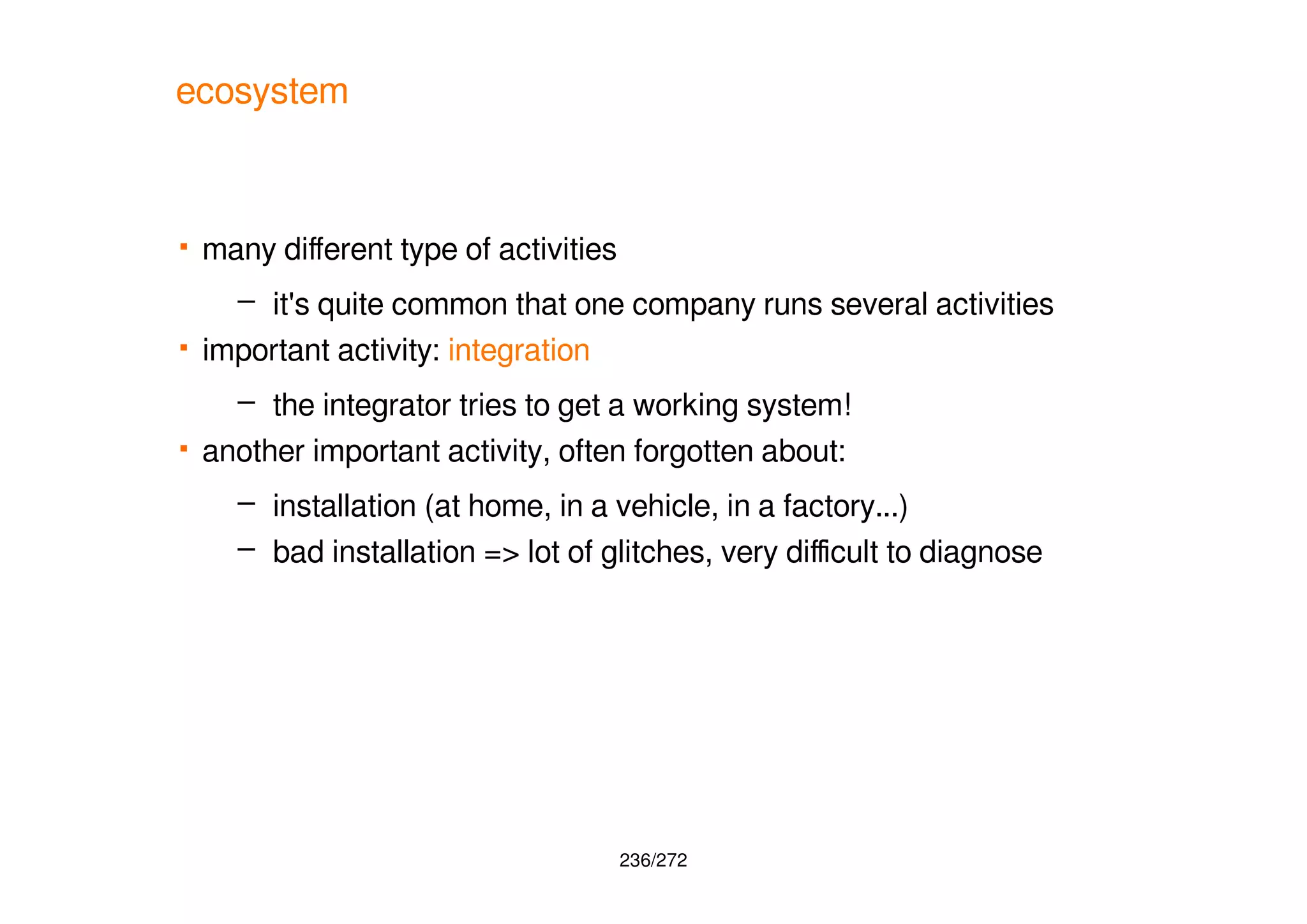
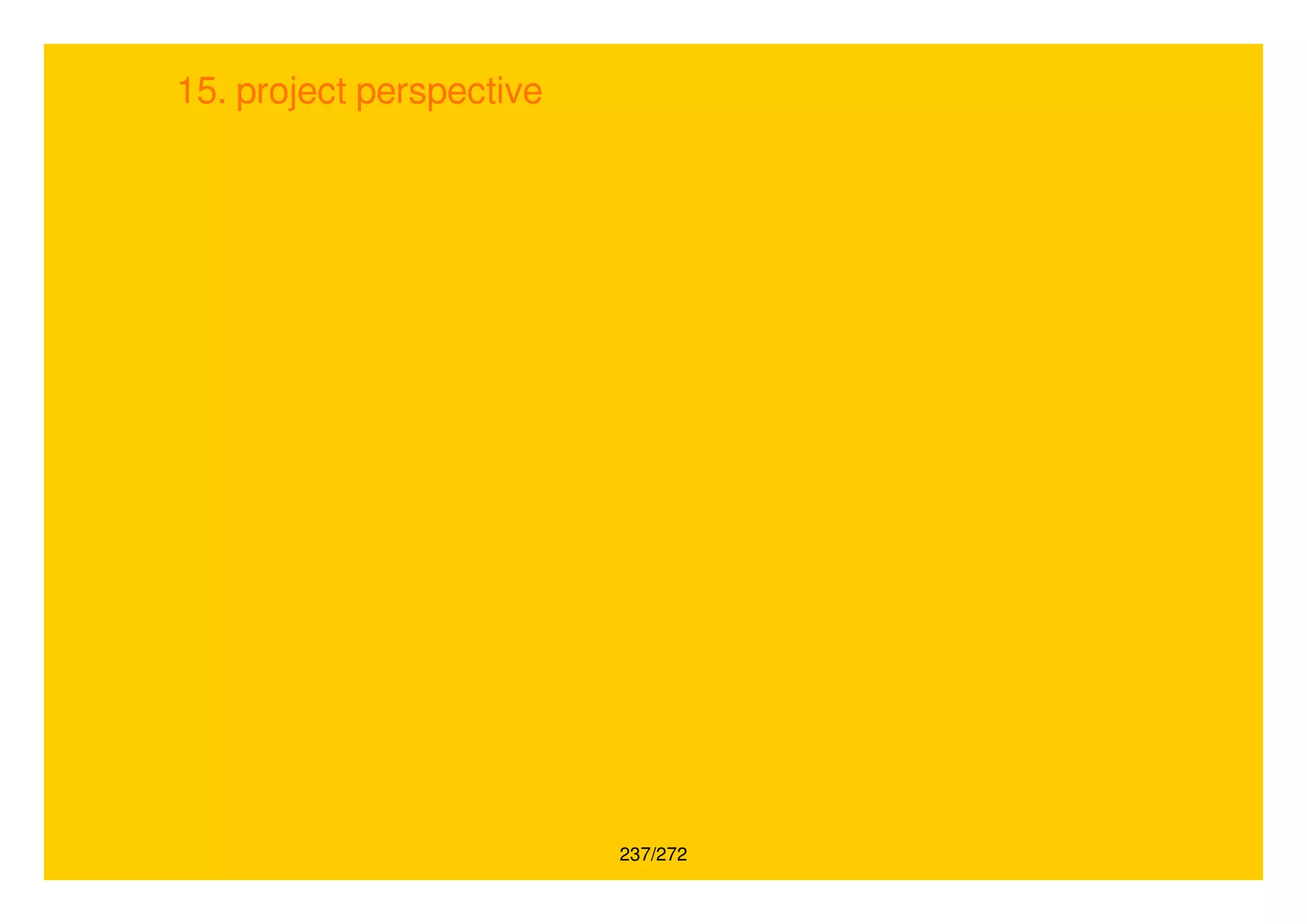

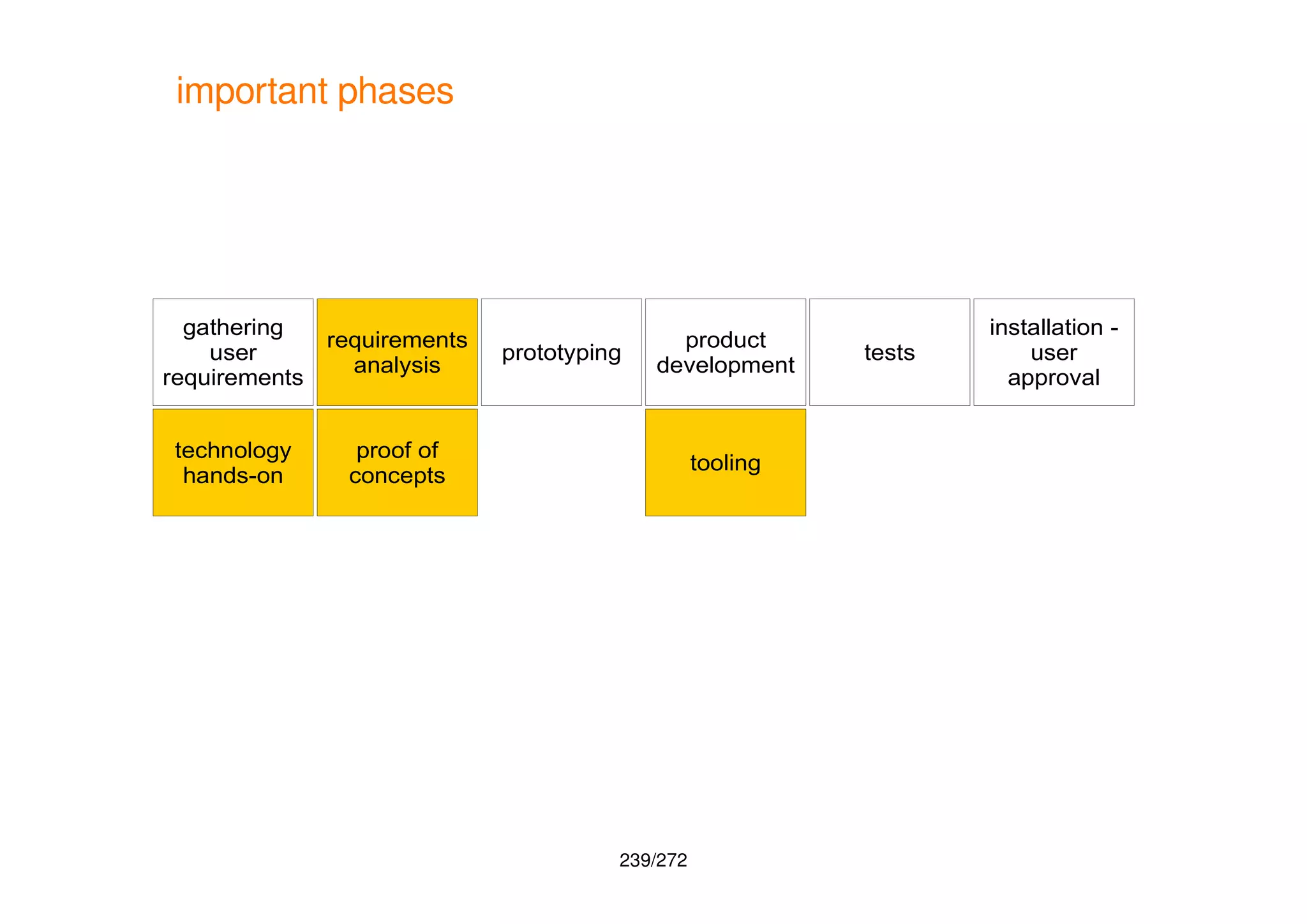
![240/272
agility
We are uncovering better ways of developing software by doing it and
helping others do it. Through this work we have come to value:
Individuals and interactions over processes and tools
Working software over comprehensive documentation
Customer collaboration over contract negotiation
Responding to change over following a plan
That is, while there is value in the items on the right, we value the items on
the left more.
[Pro08]](https://image.slidesharecdn.com/20180217-iotandconnecteddevices-180217095428/75/IoT-and-connected-devices-an-overview-240-2048.jpg)
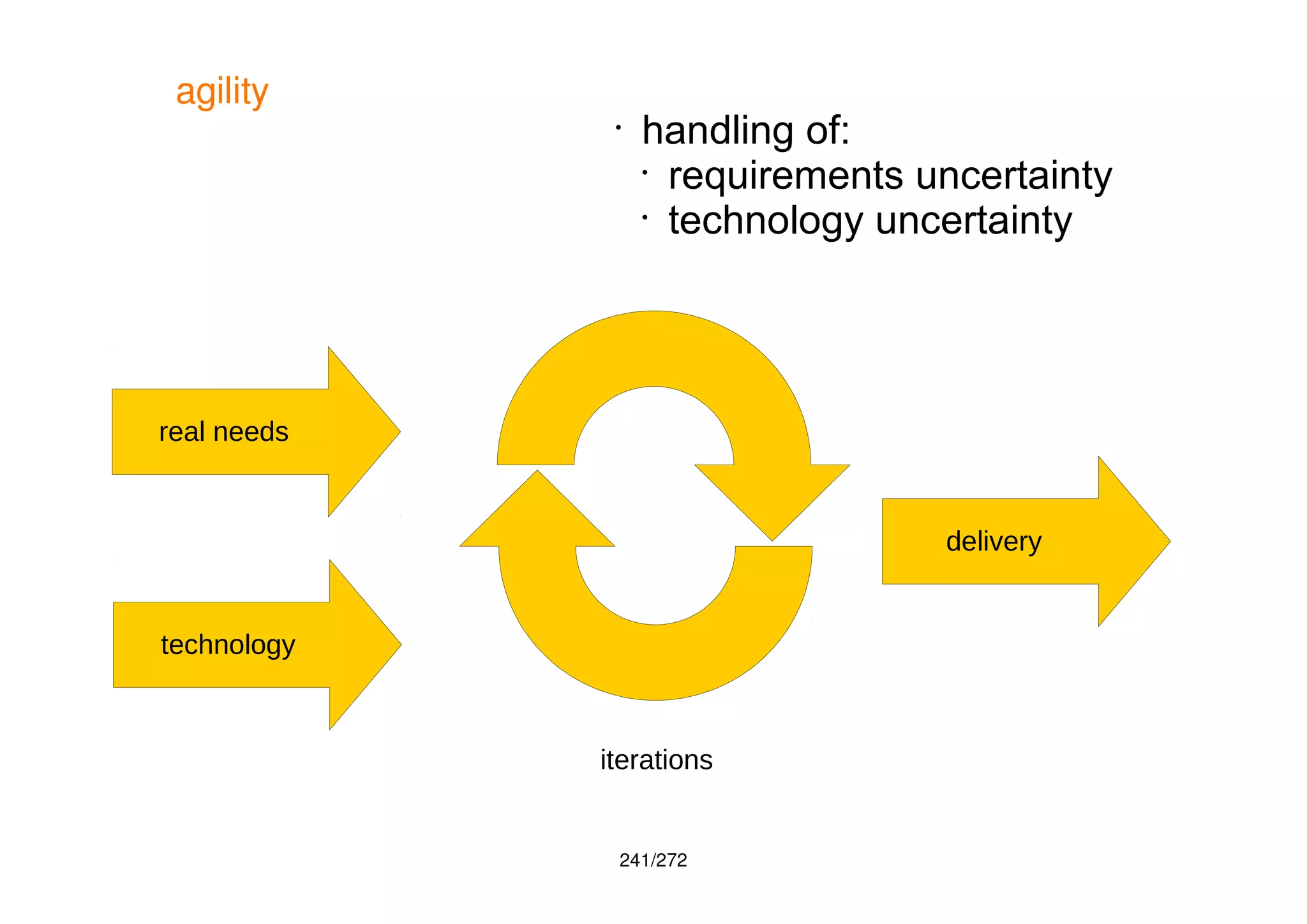
![242/272
agility
beware: electronics project lifecycle is not software project lifecycle
=> prototypes
=> feld user test
=> OTA update
=> expandable hardware
=> more powerful hardware
[Pro08]](https://image.slidesharecdn.com/20180217-iotandconnecteddevices-180217095428/75/IoT-and-connected-devices-an-overview-242-2048.jpg)
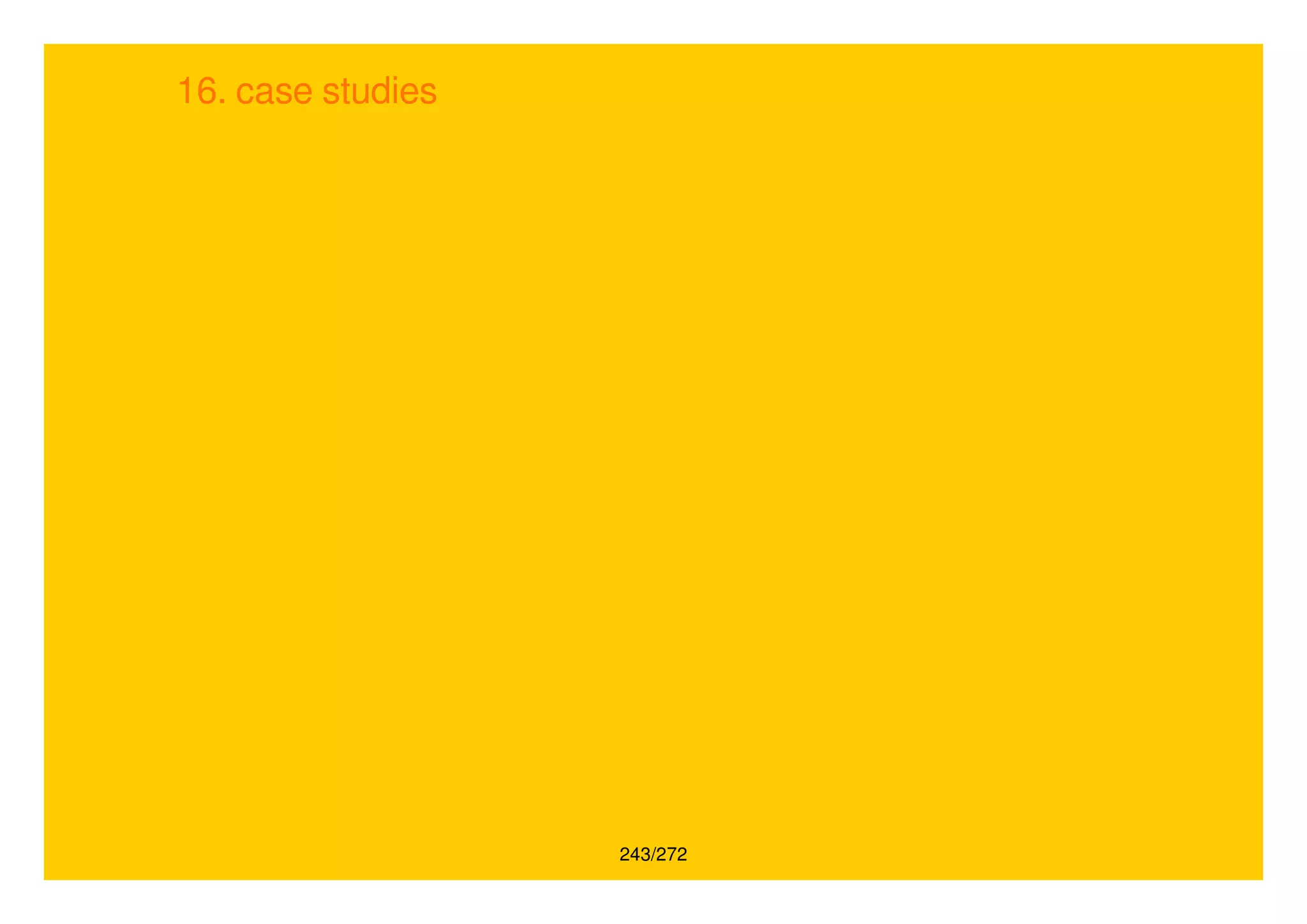
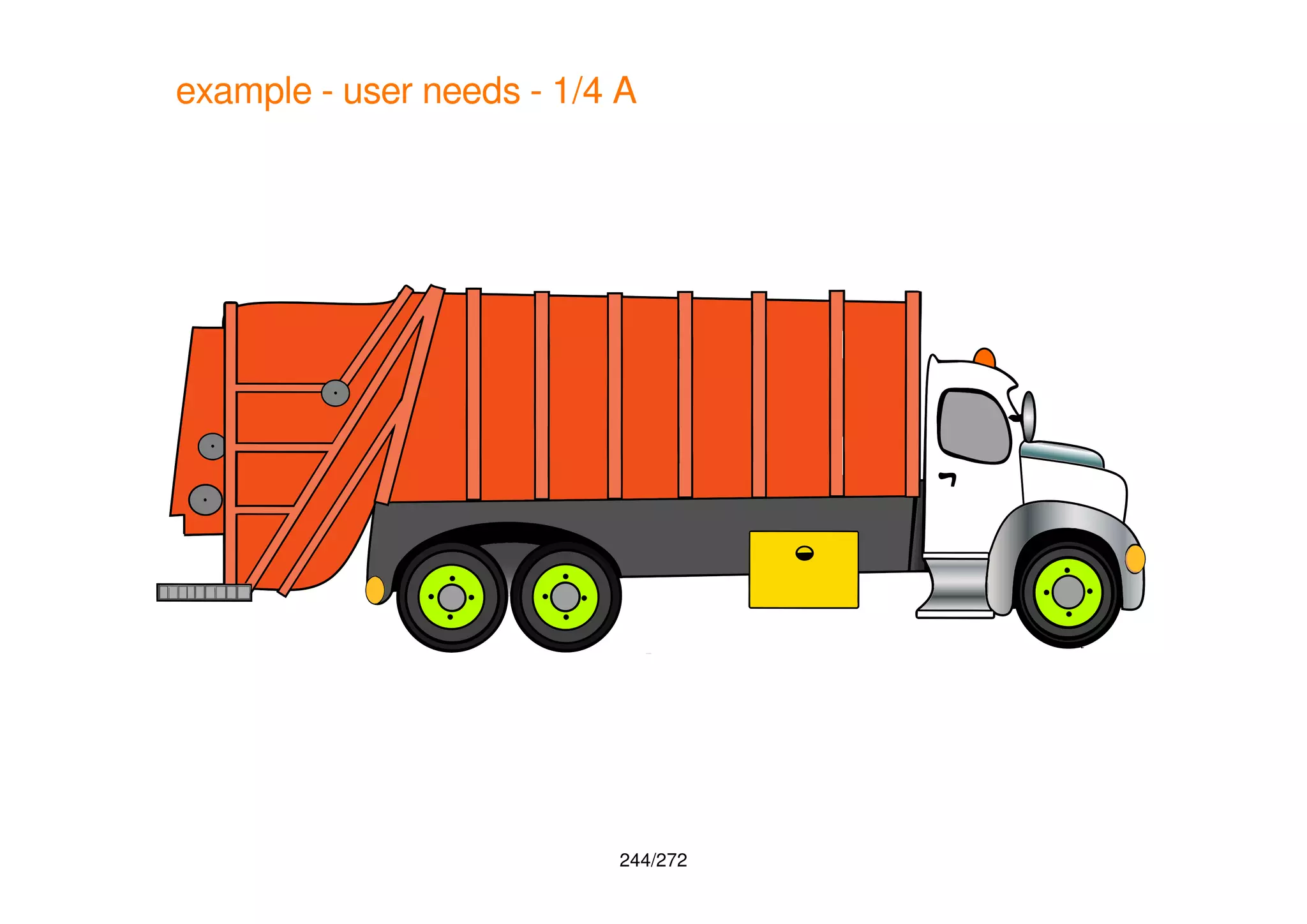
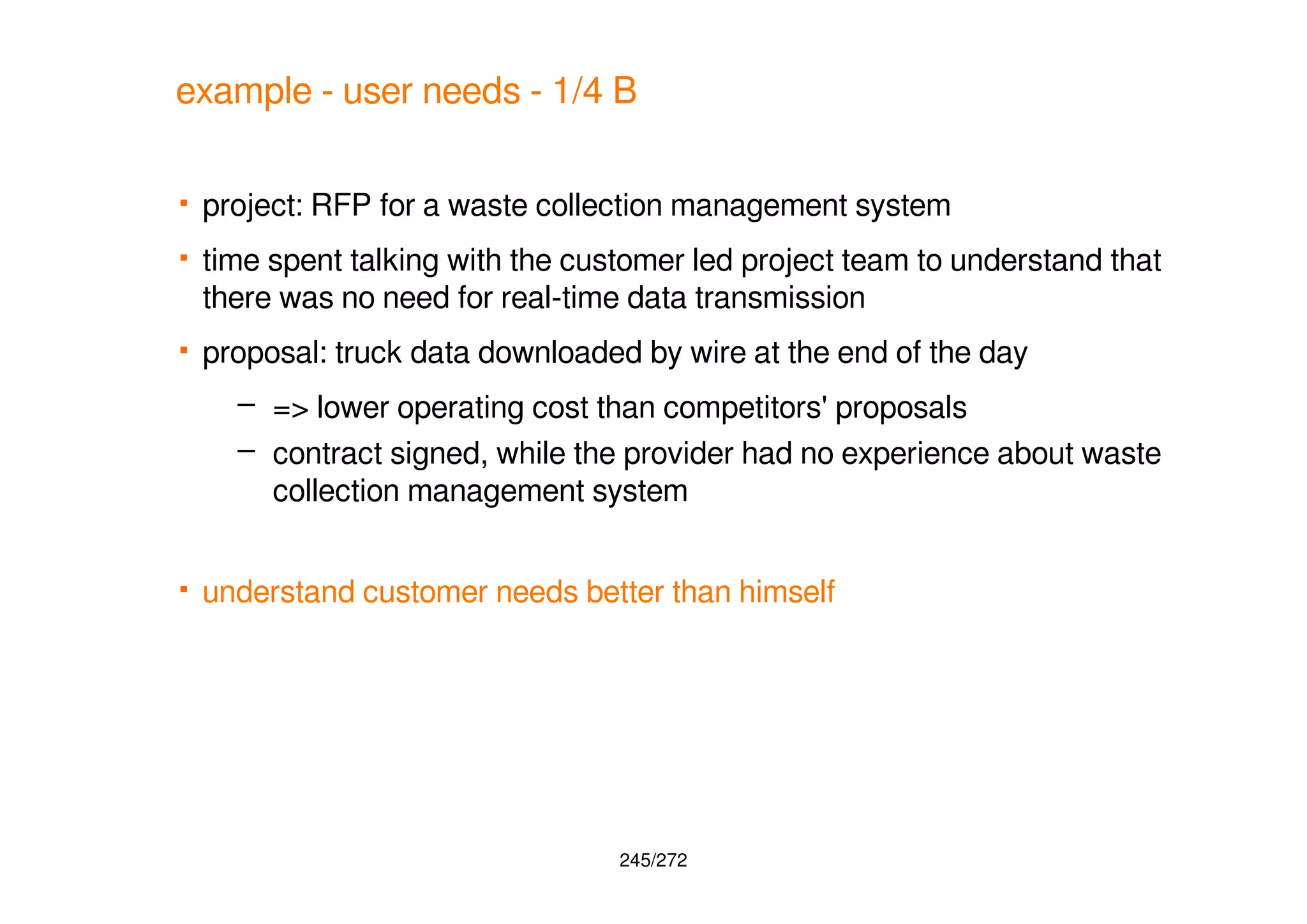
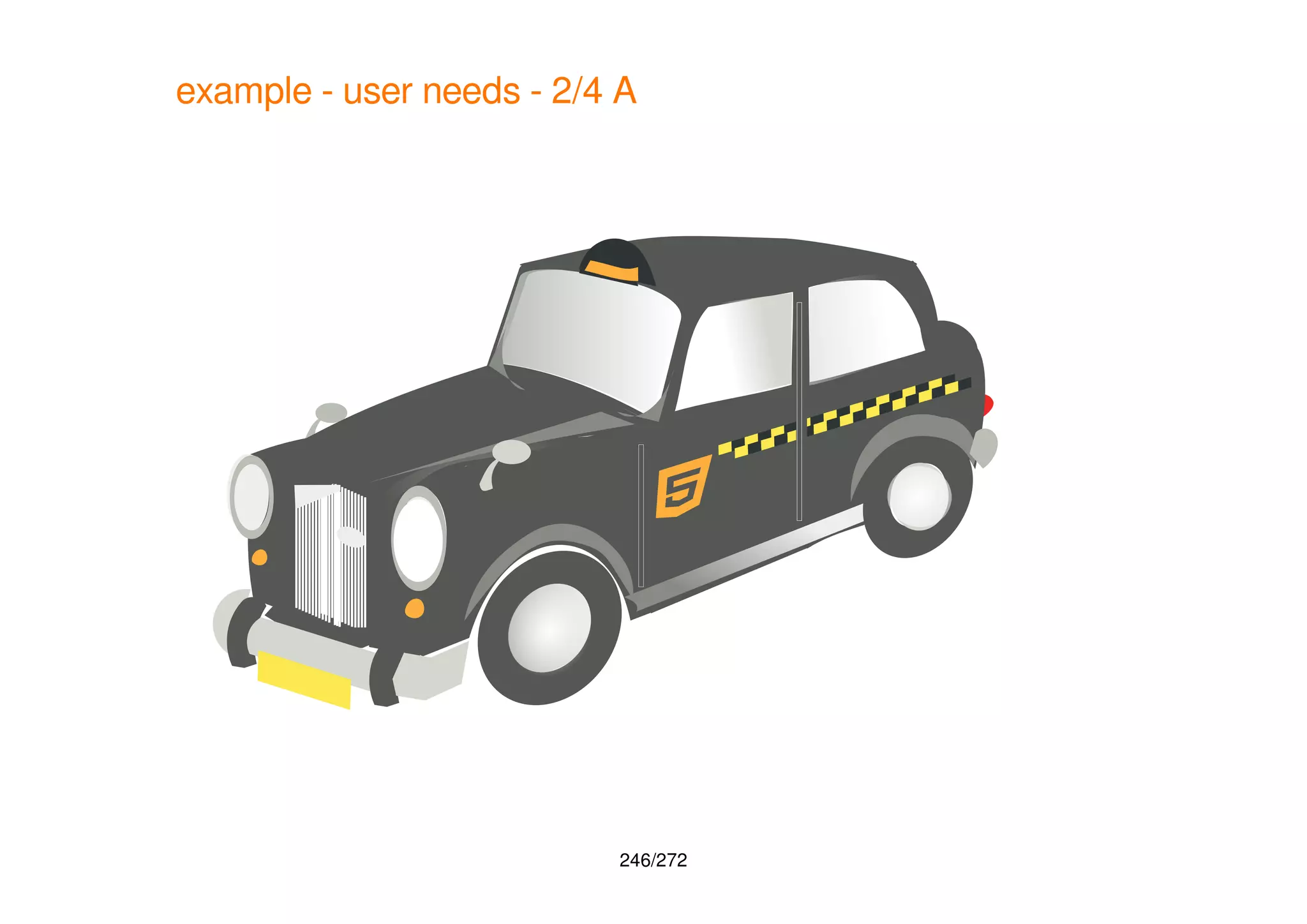
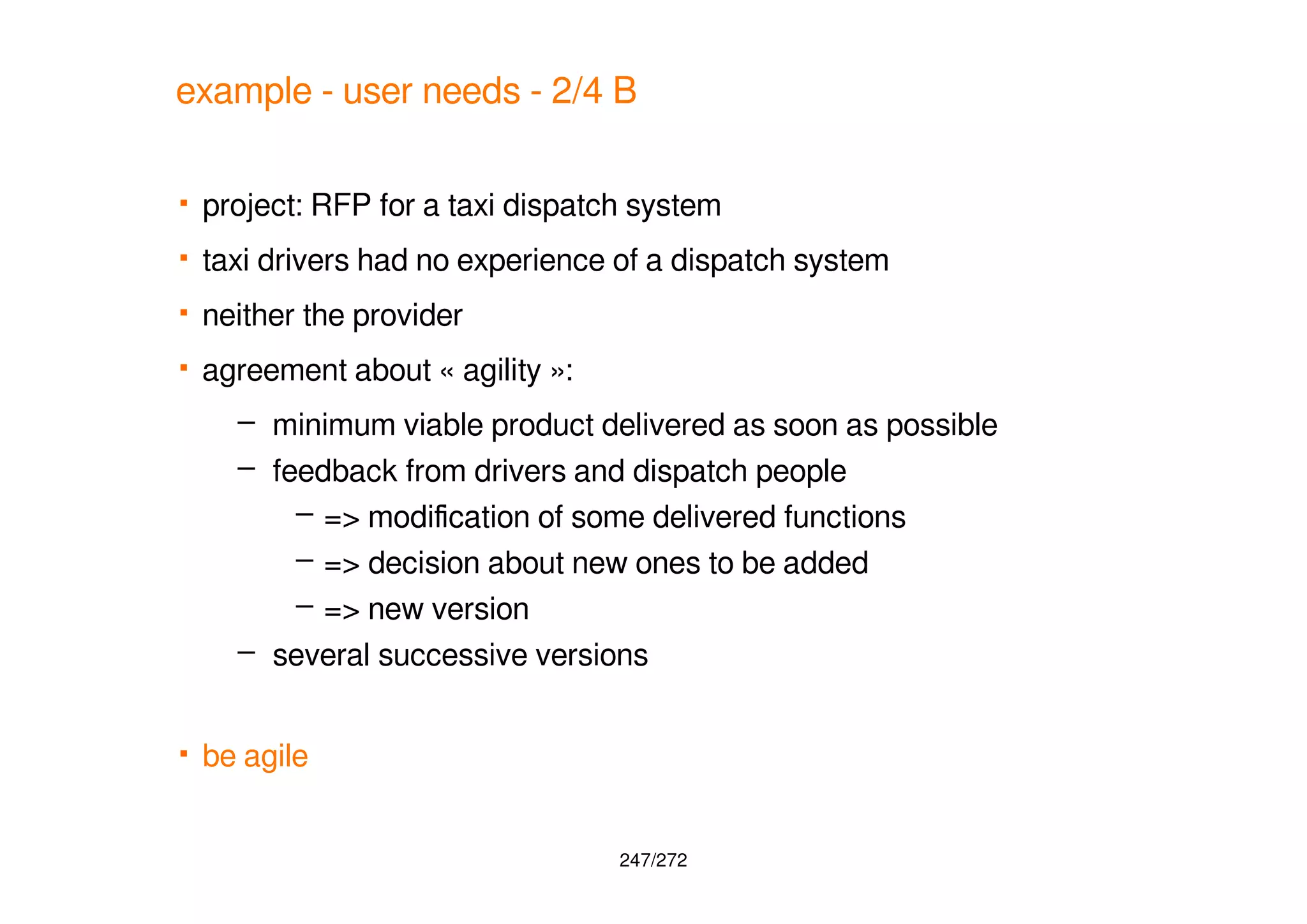
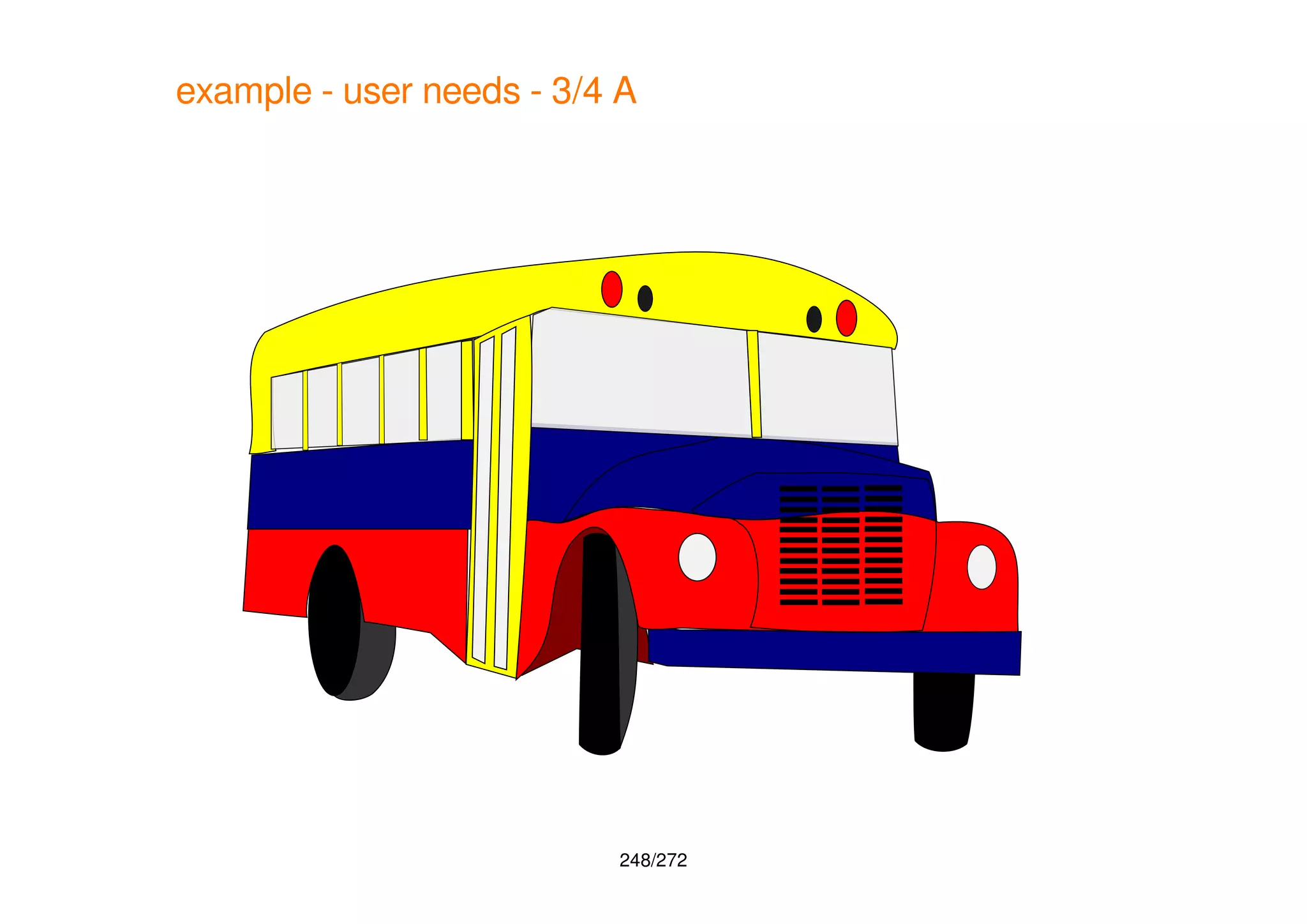
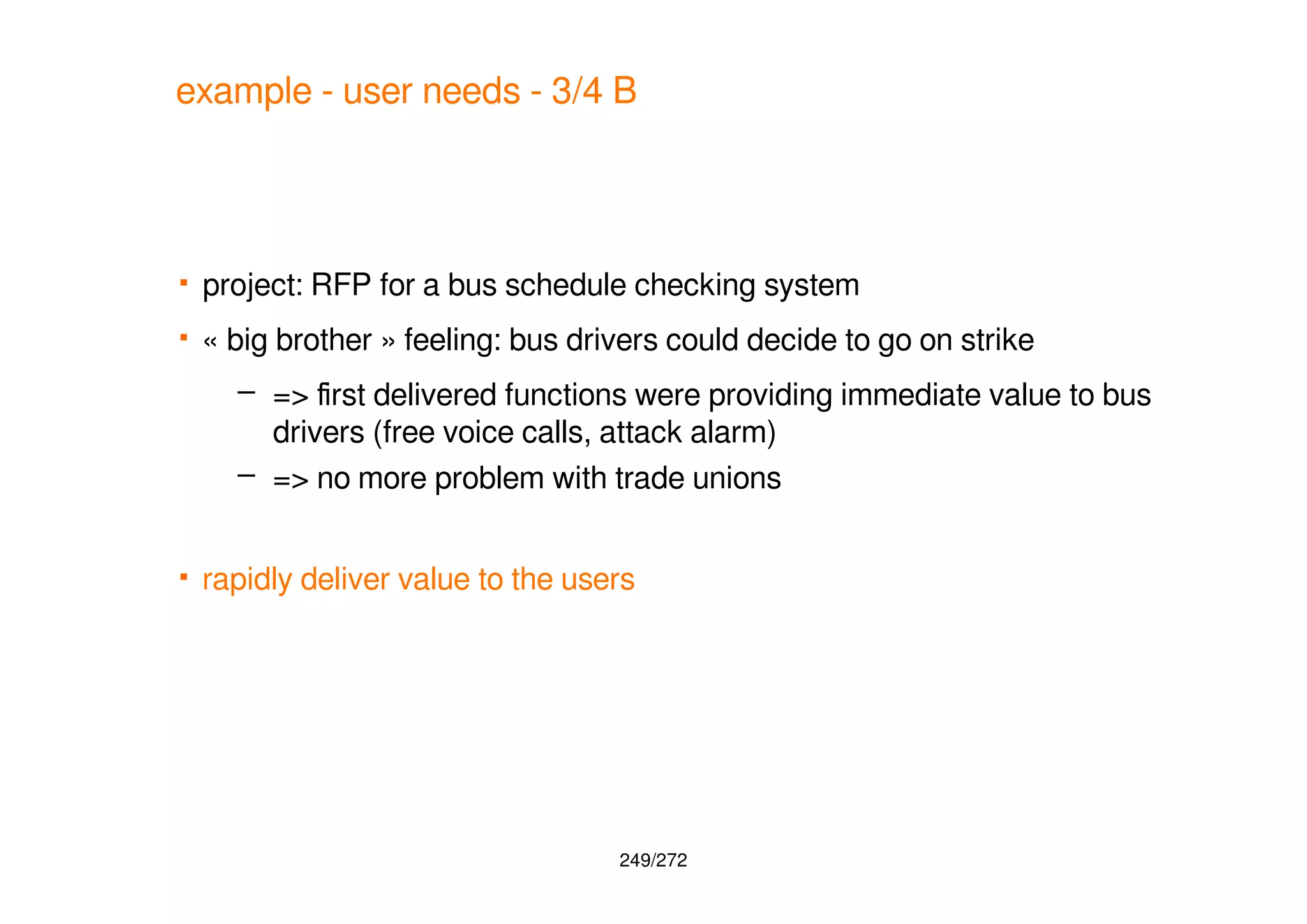
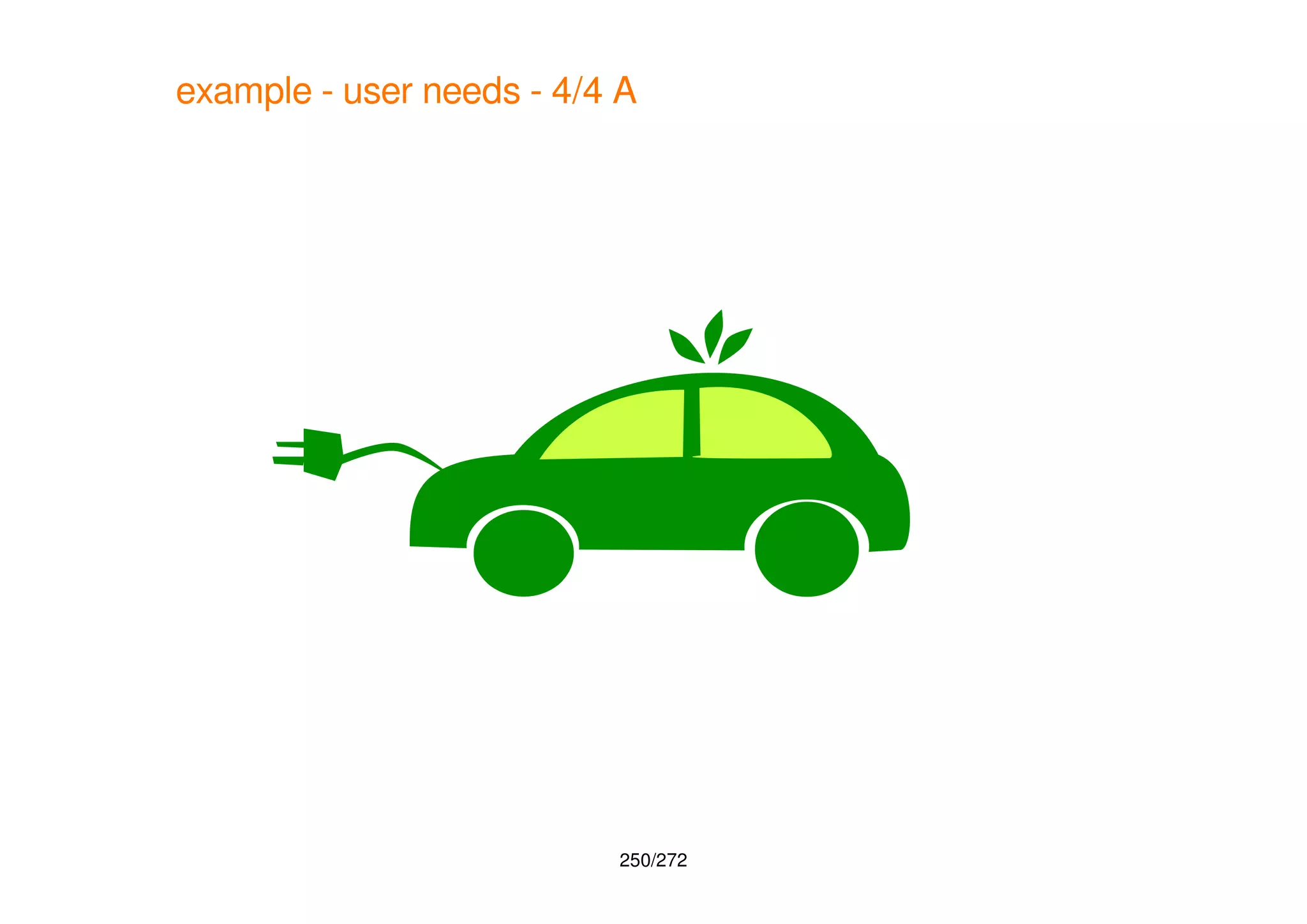
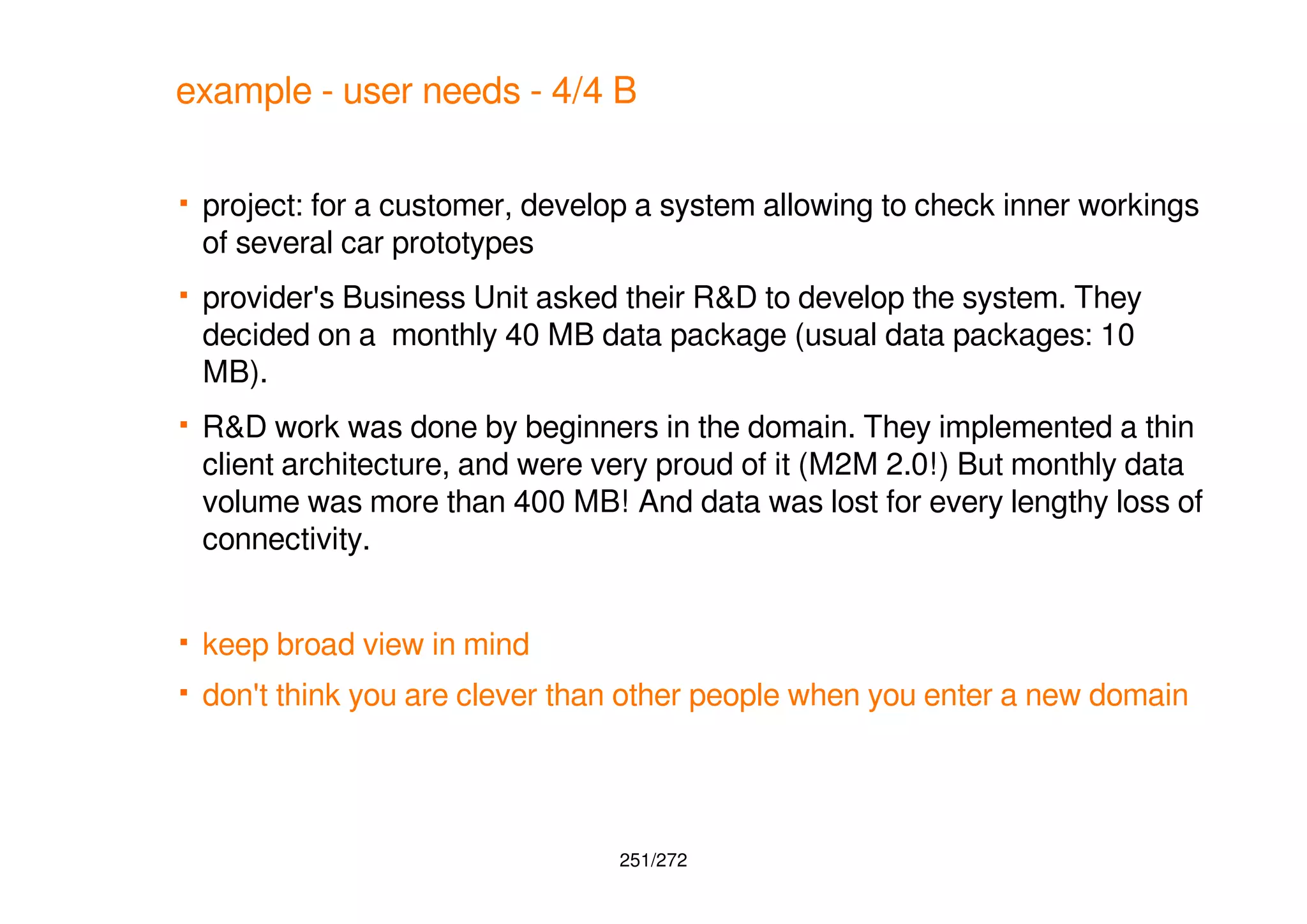
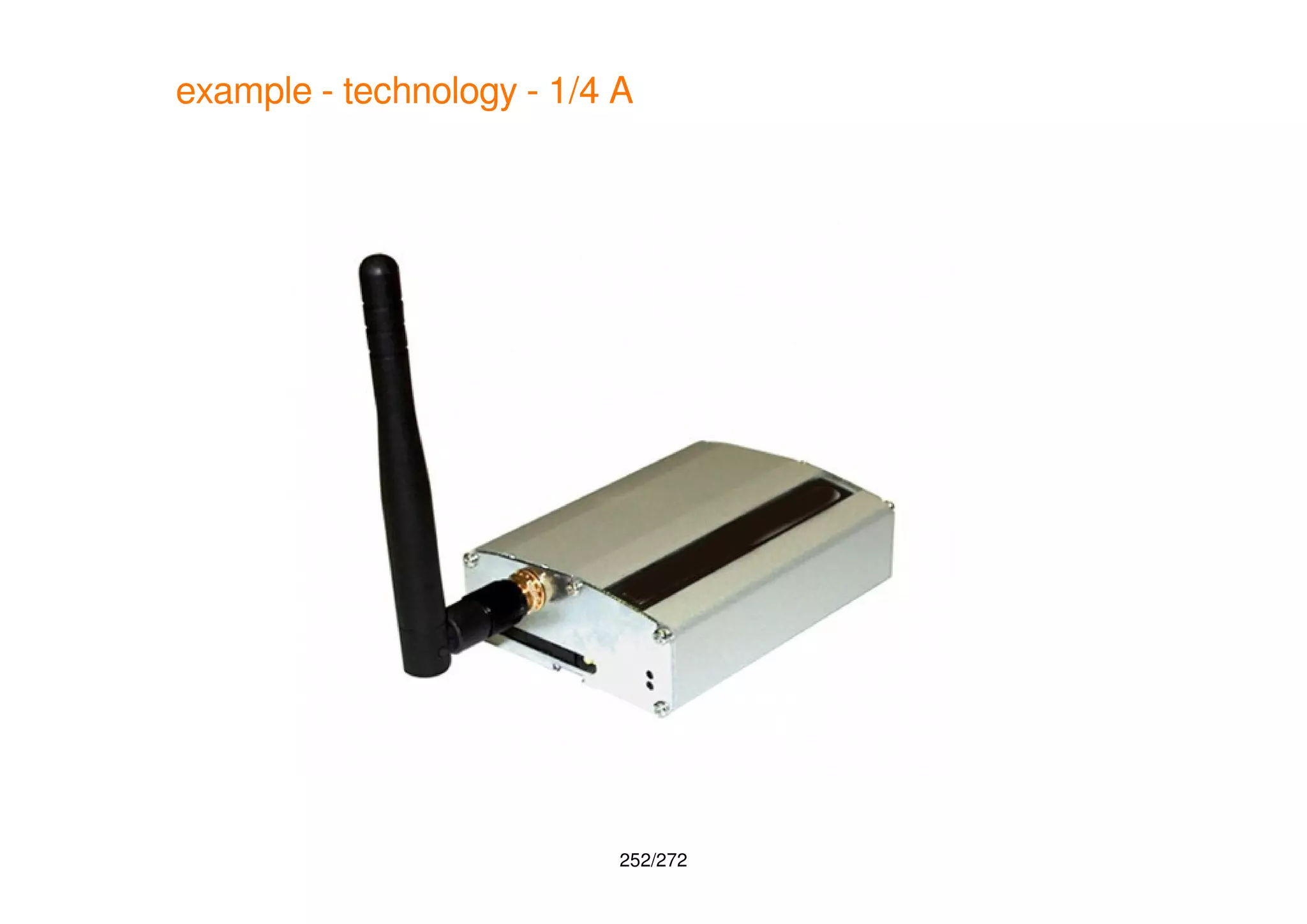
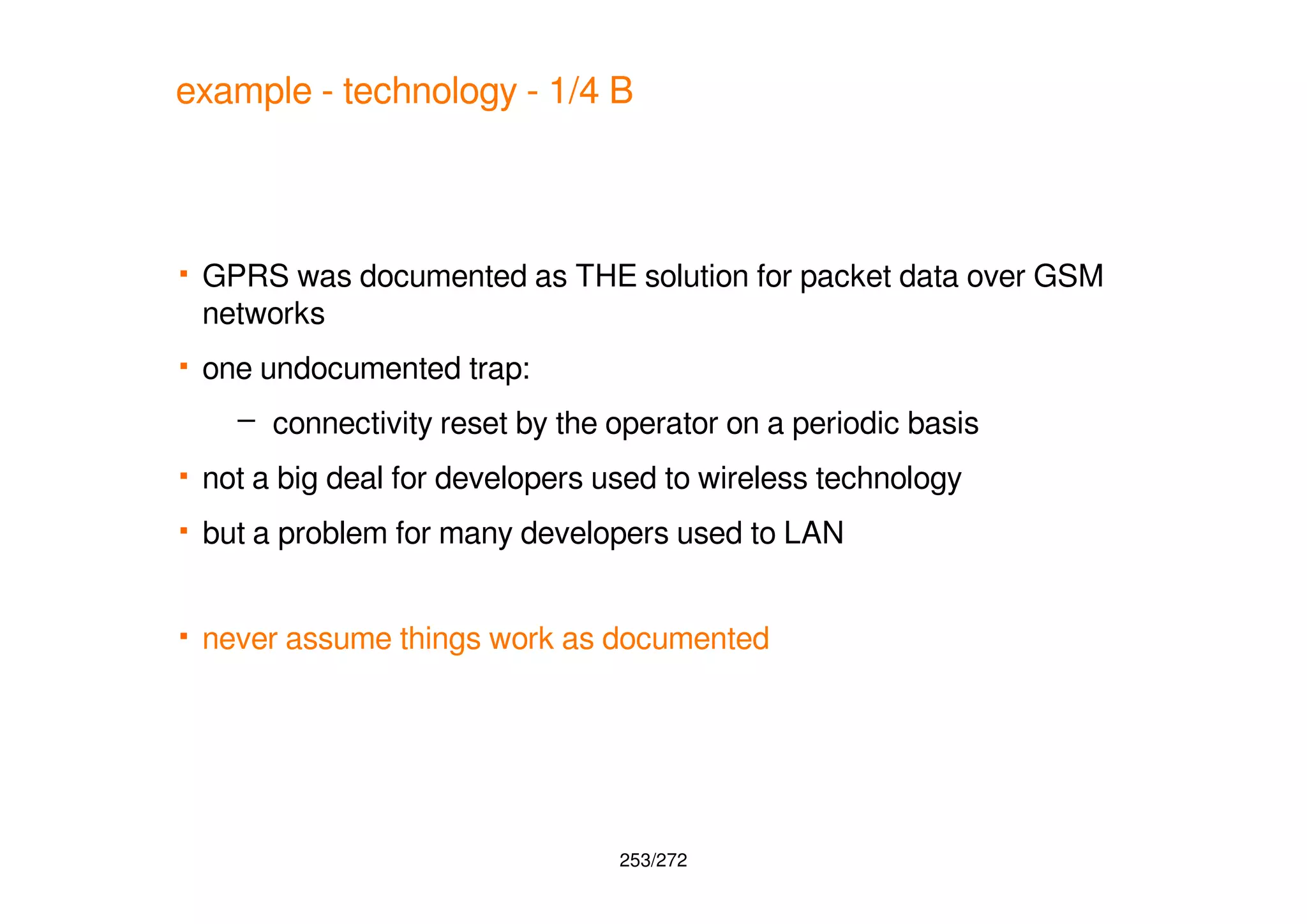
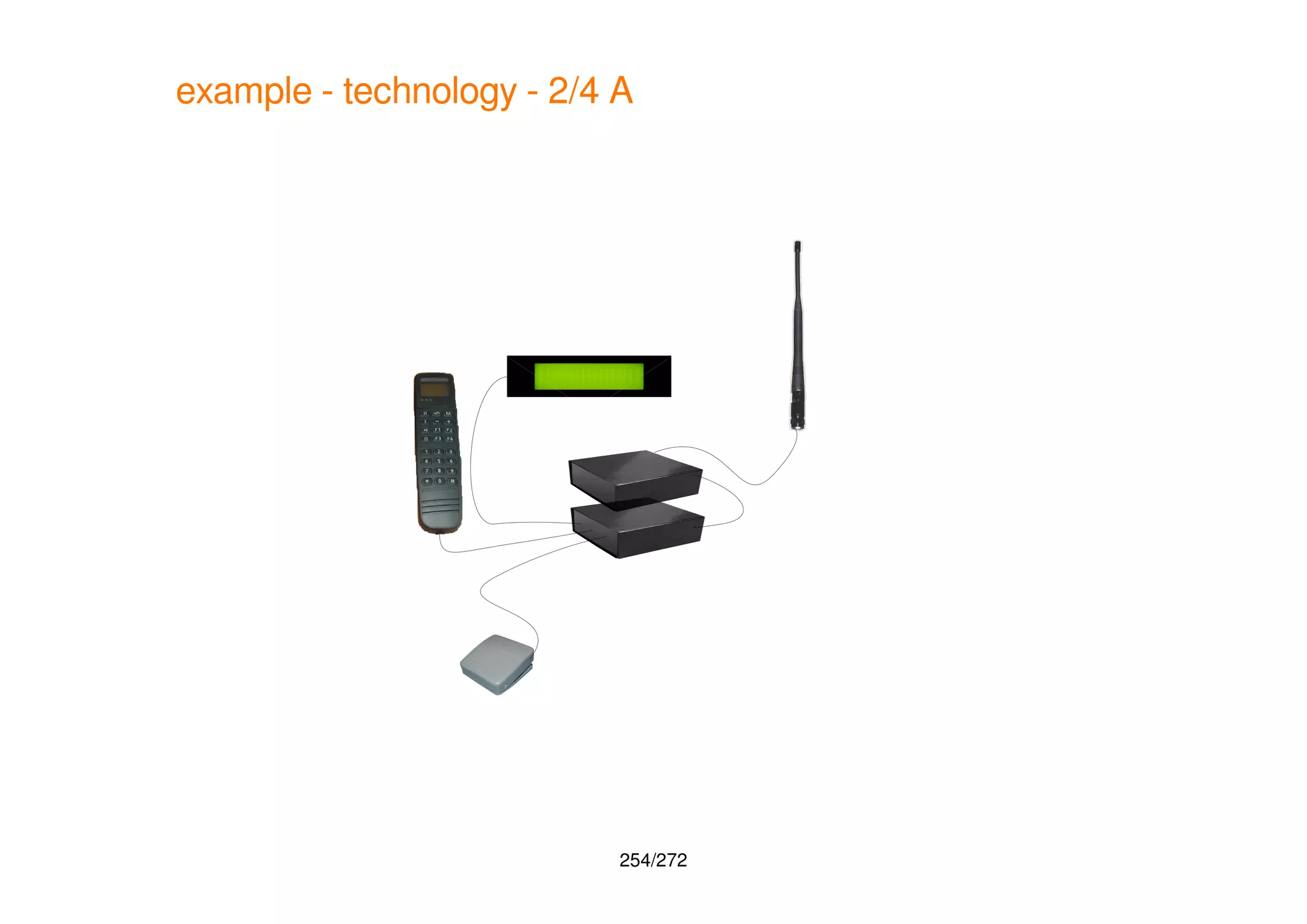
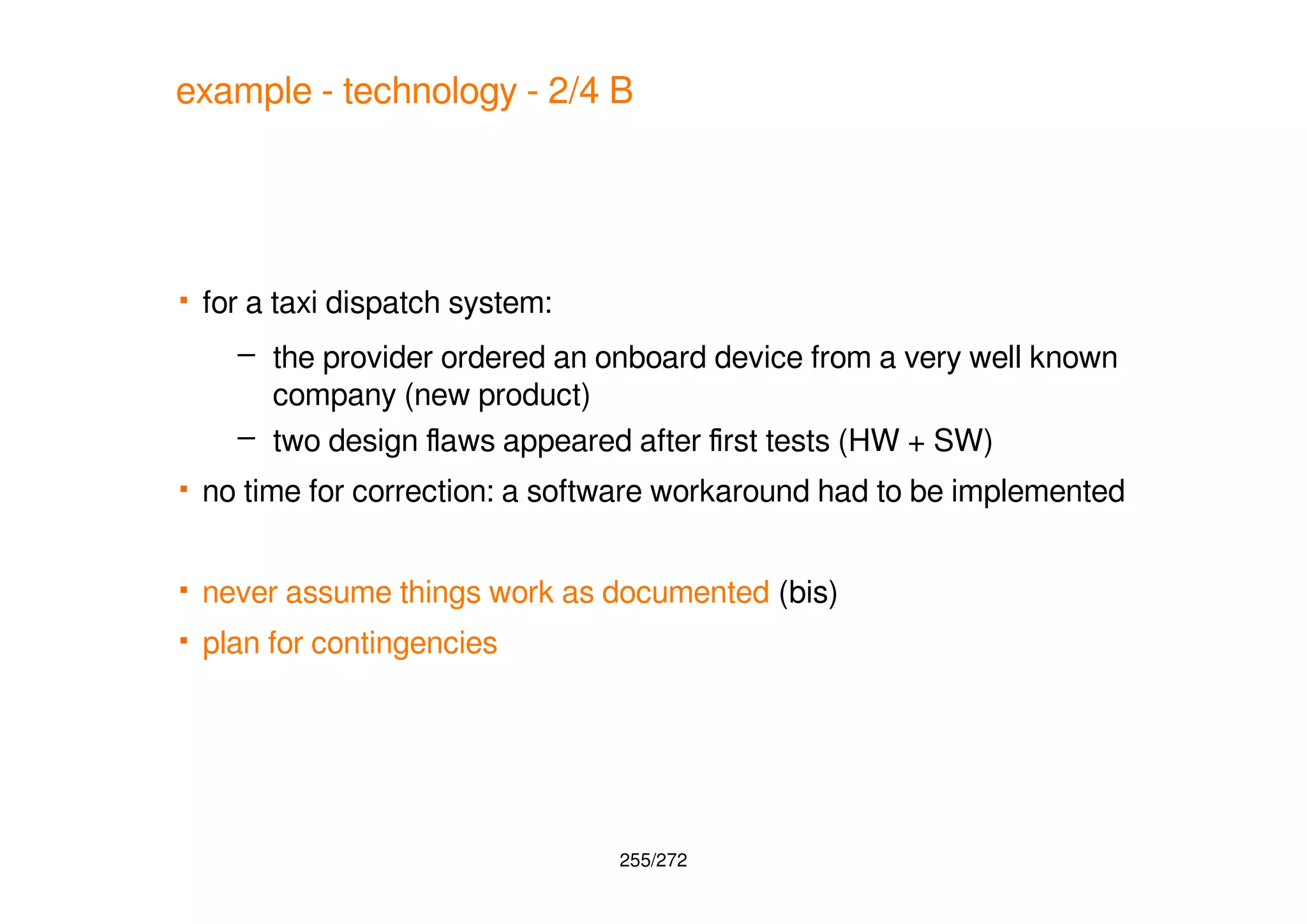
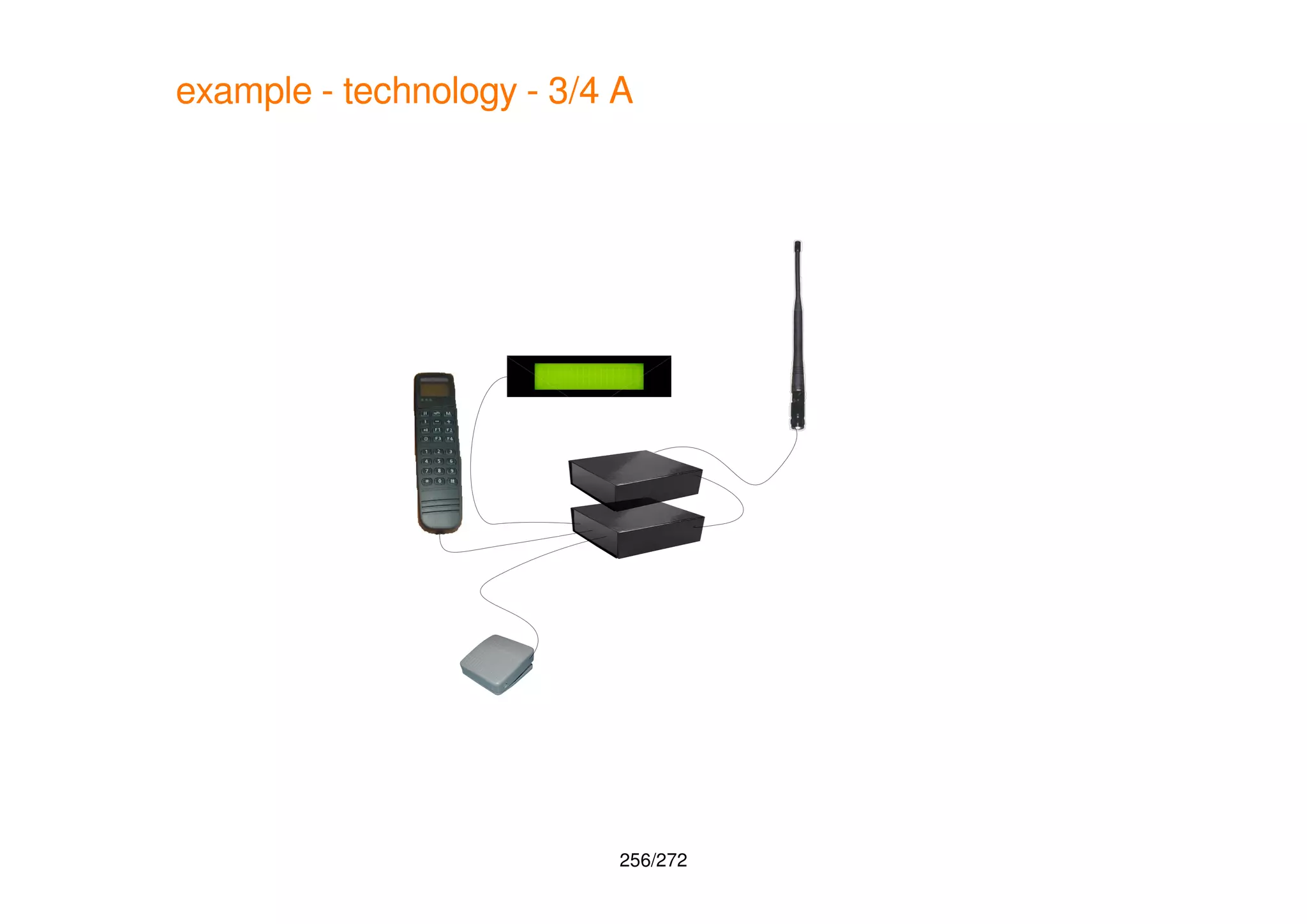
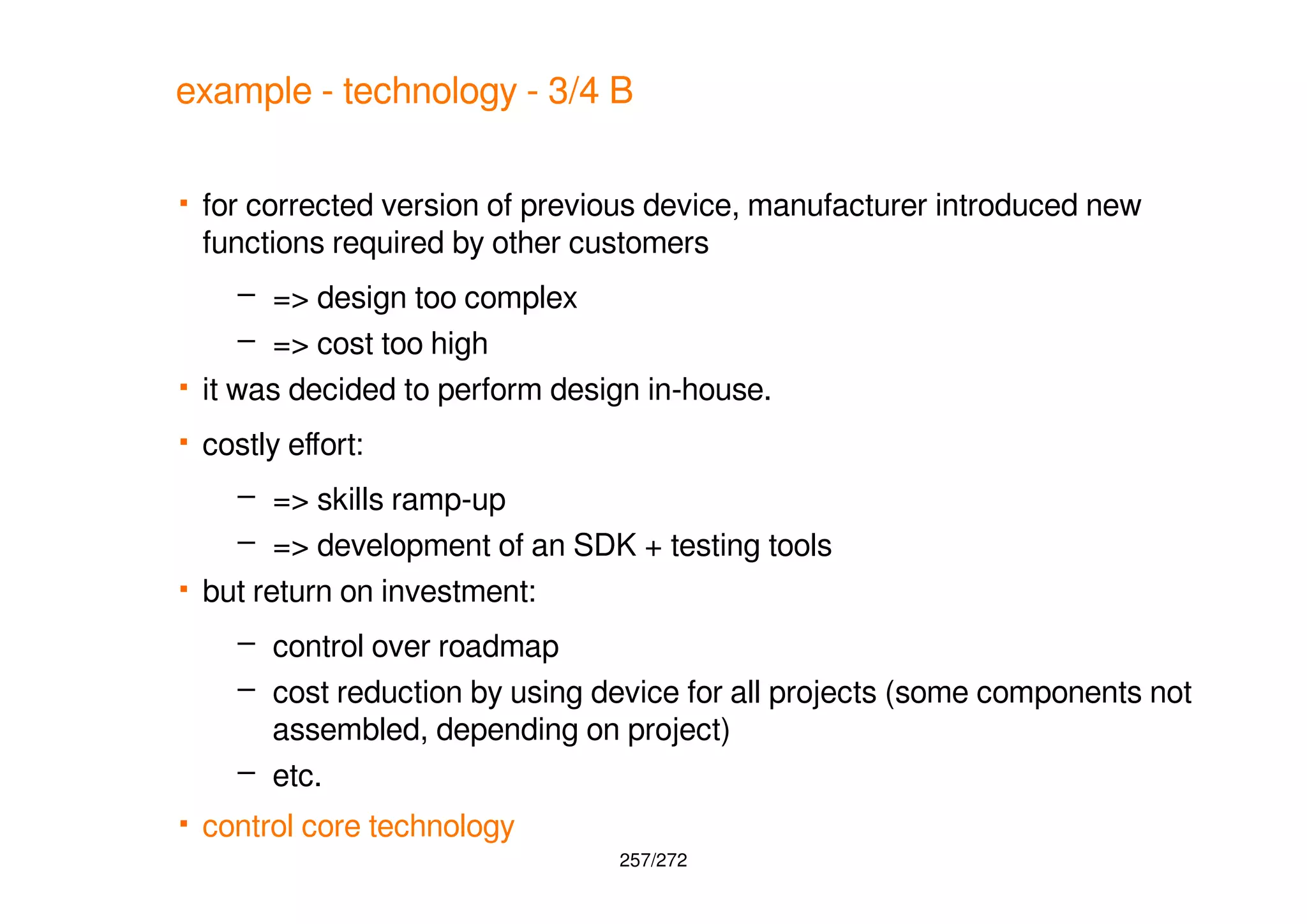

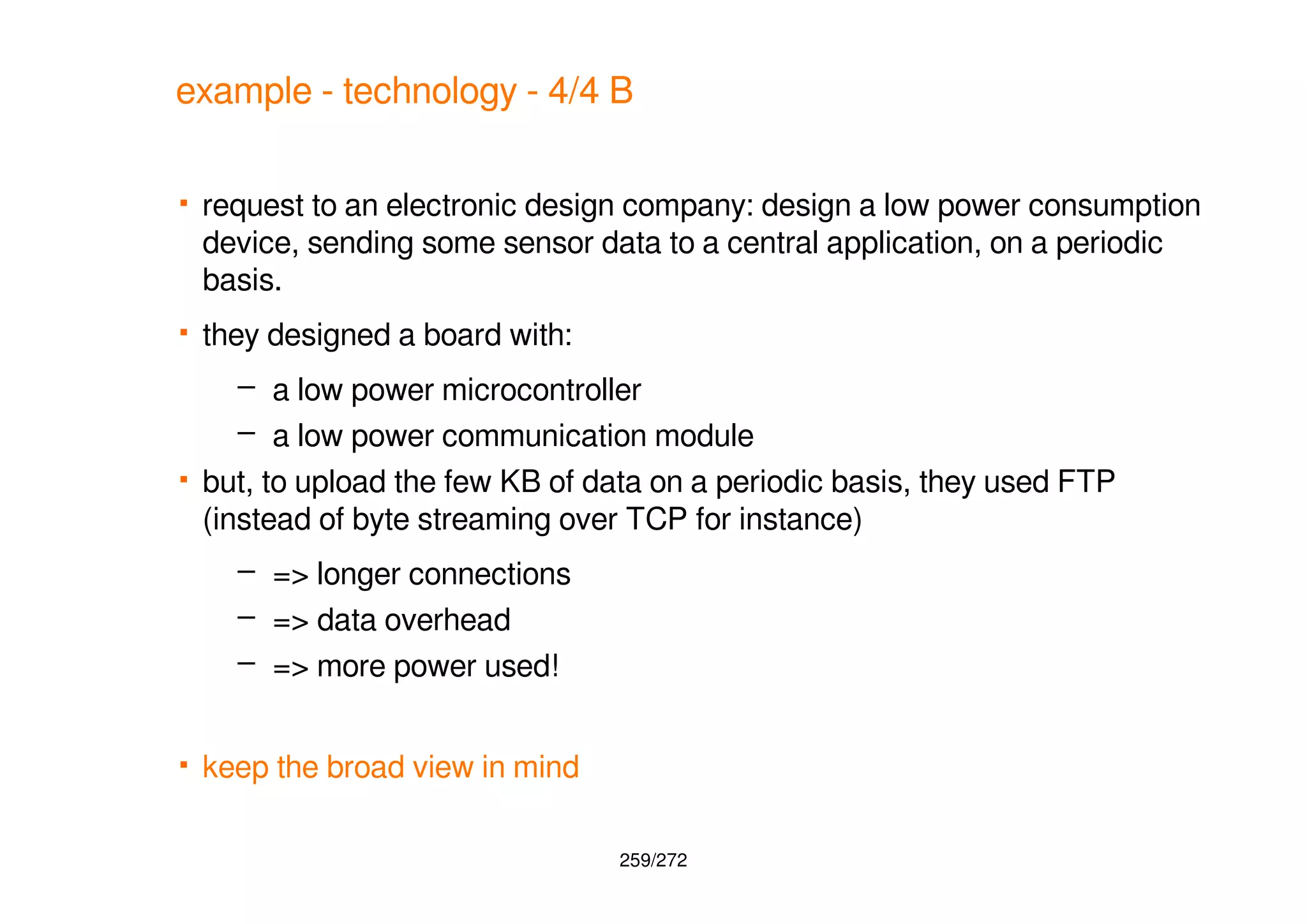
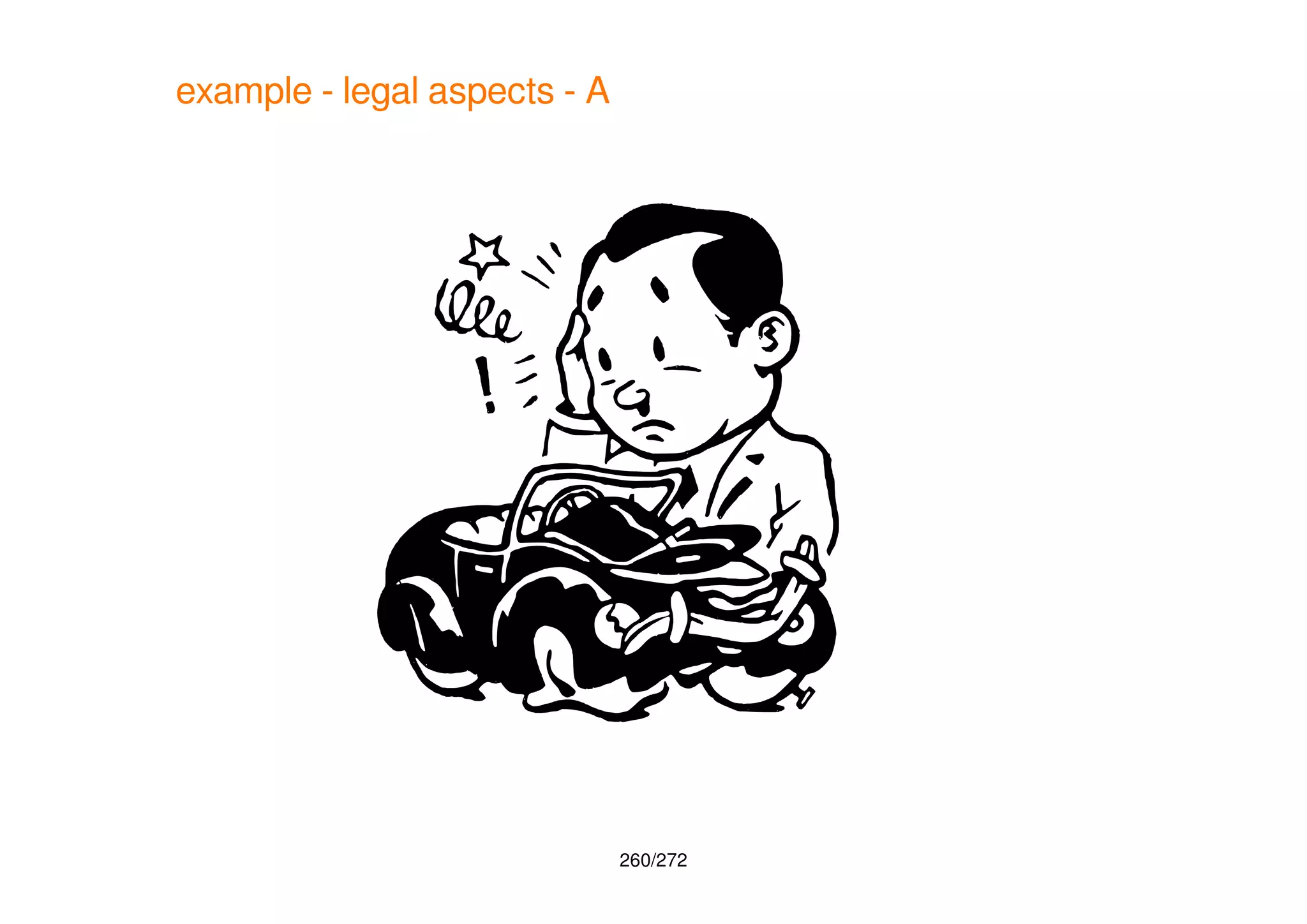
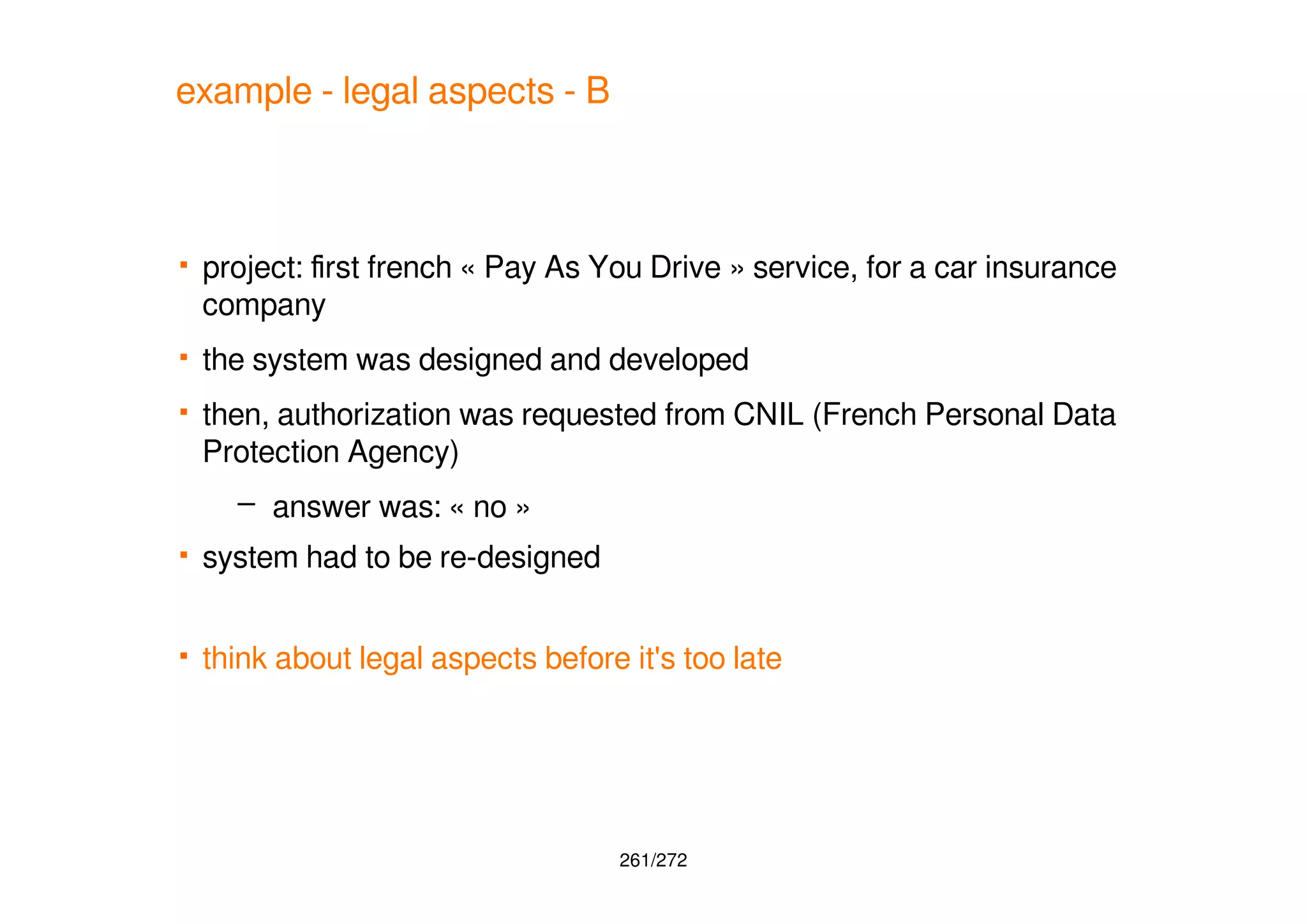
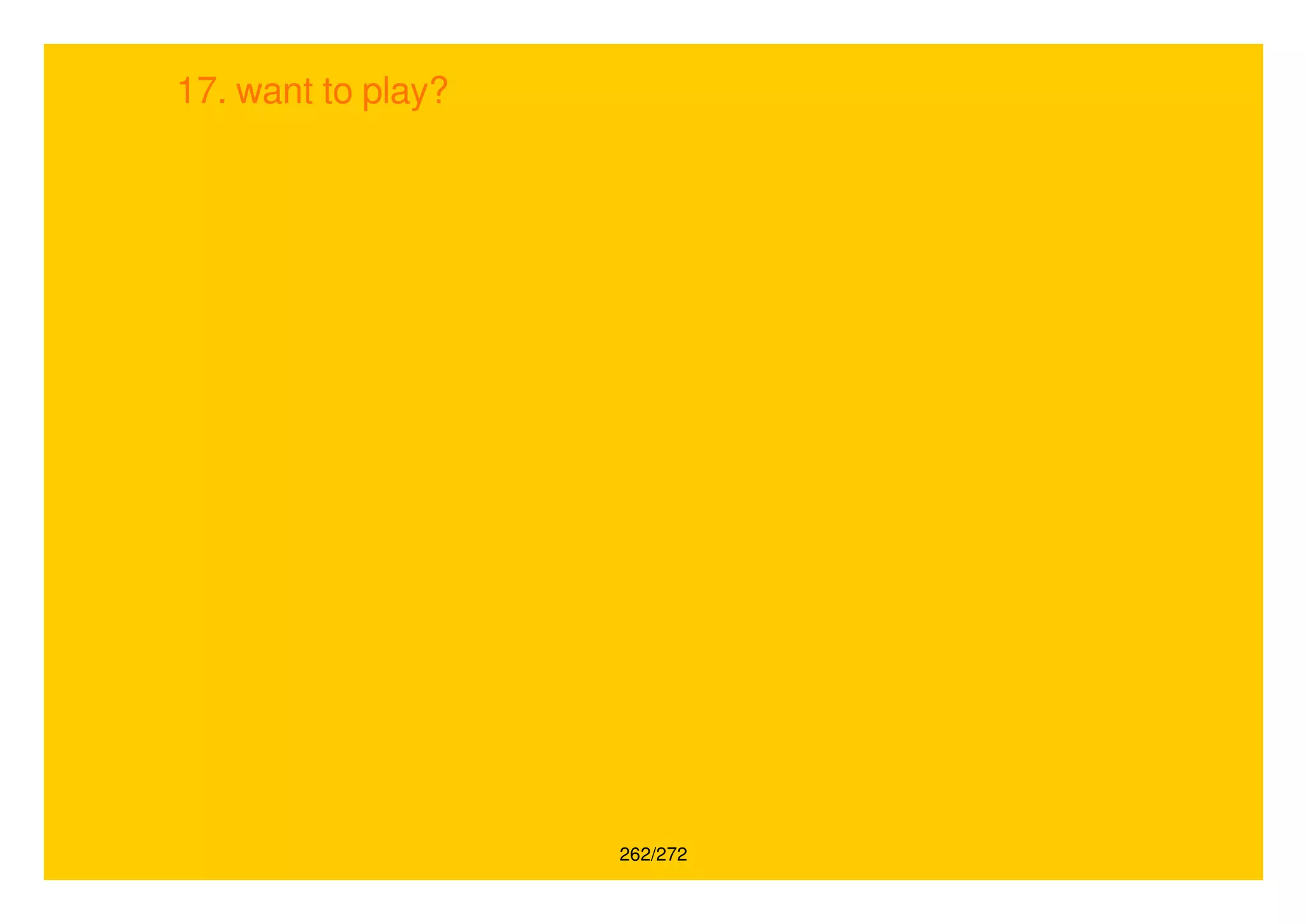
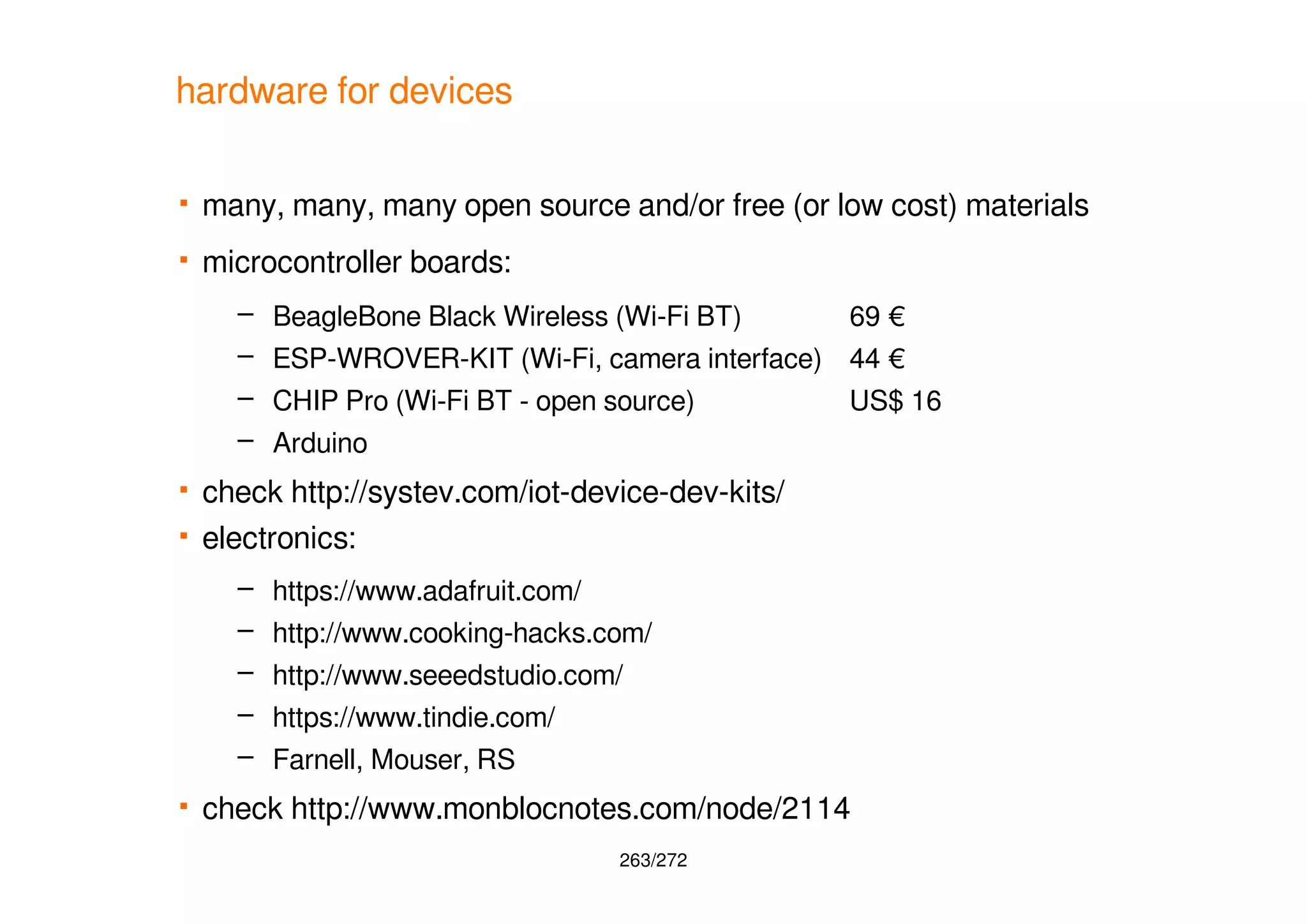
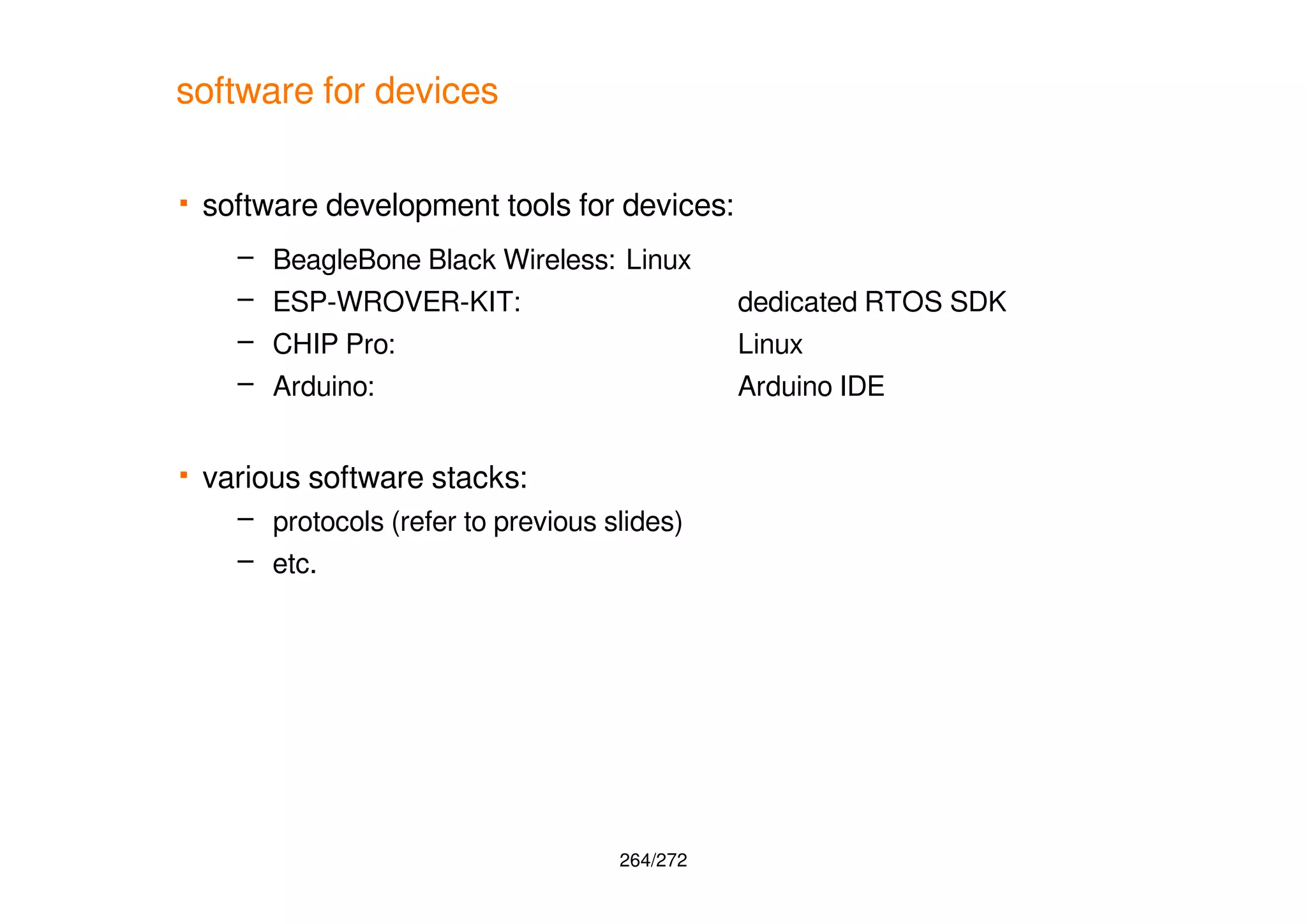
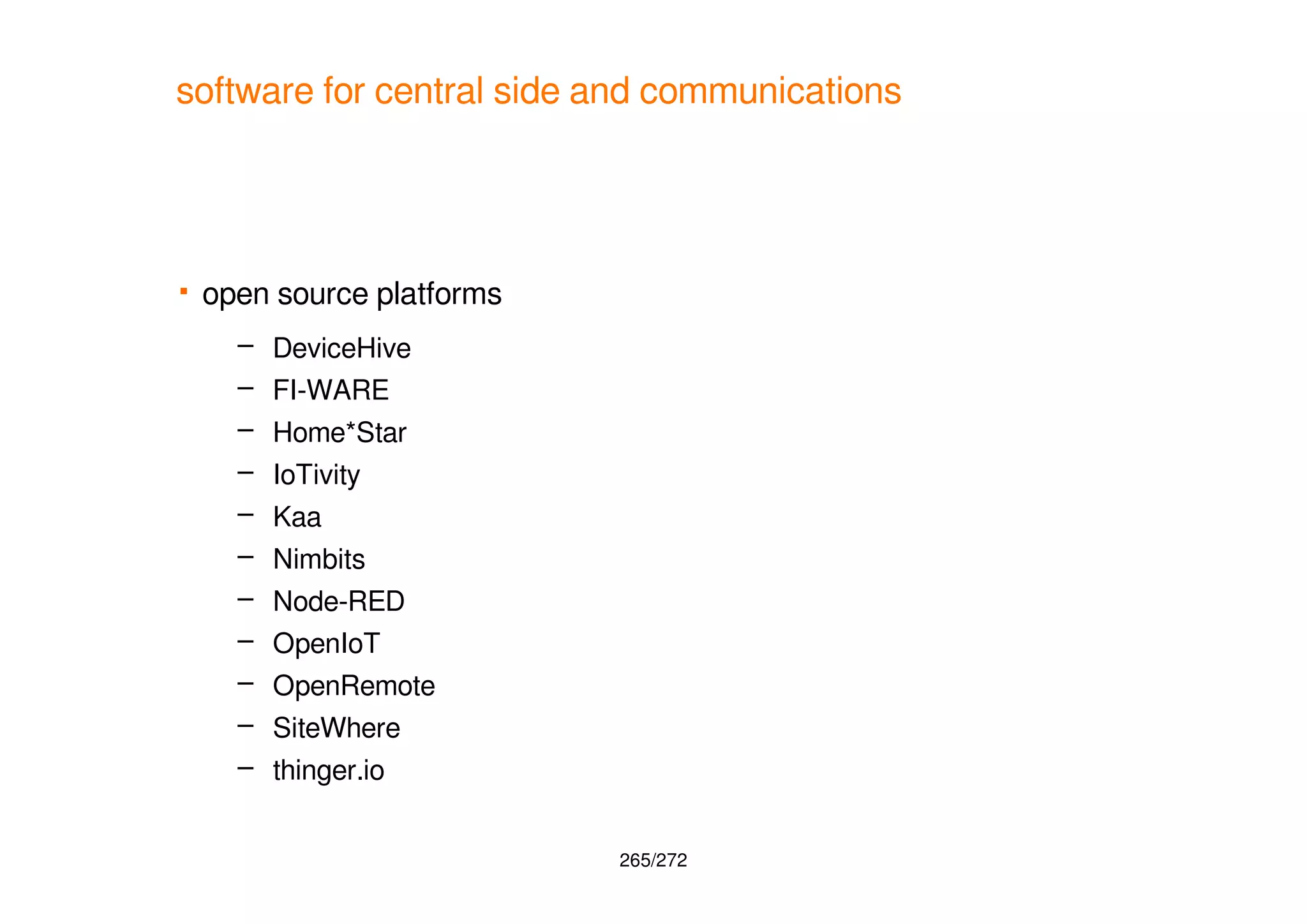
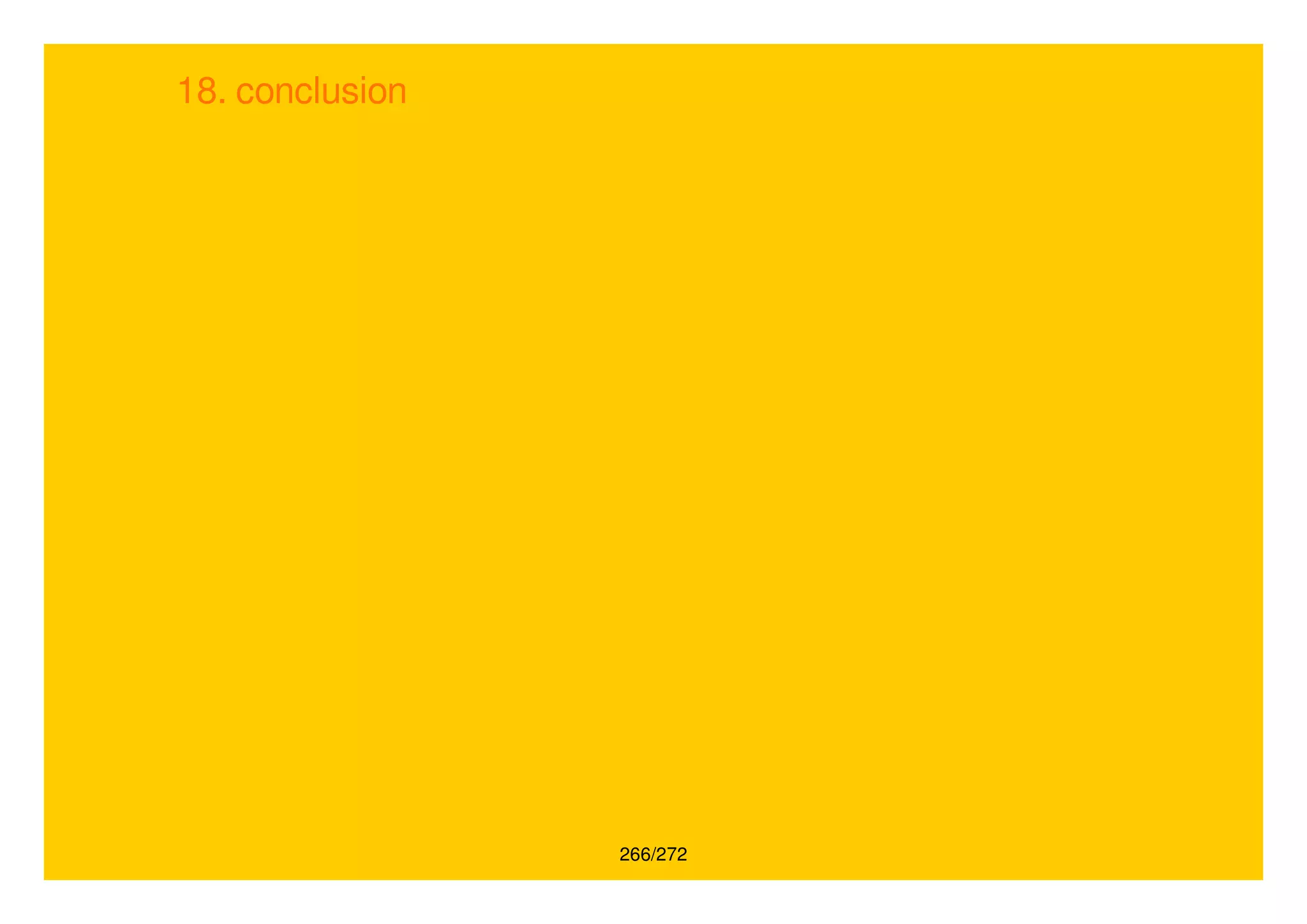
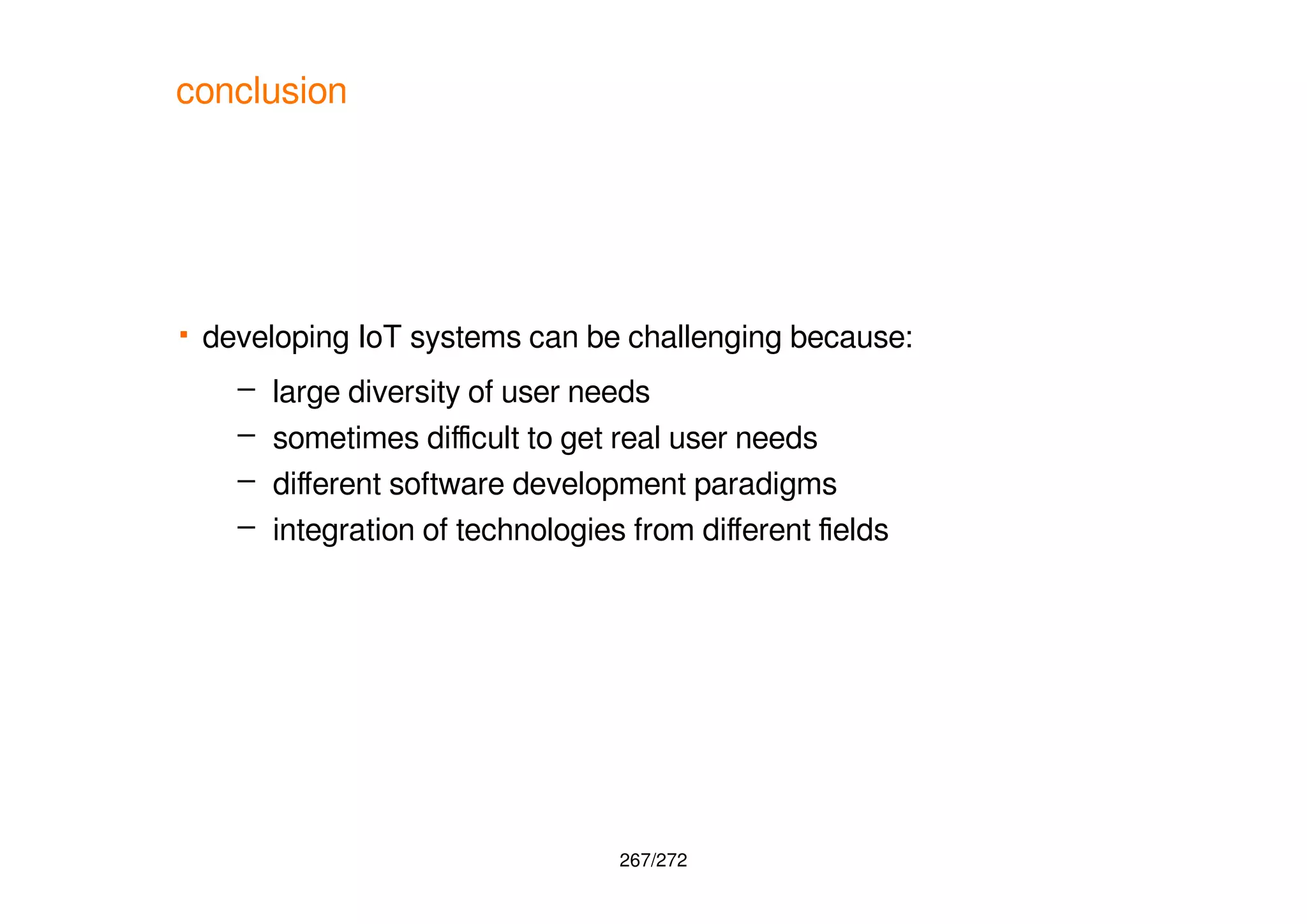
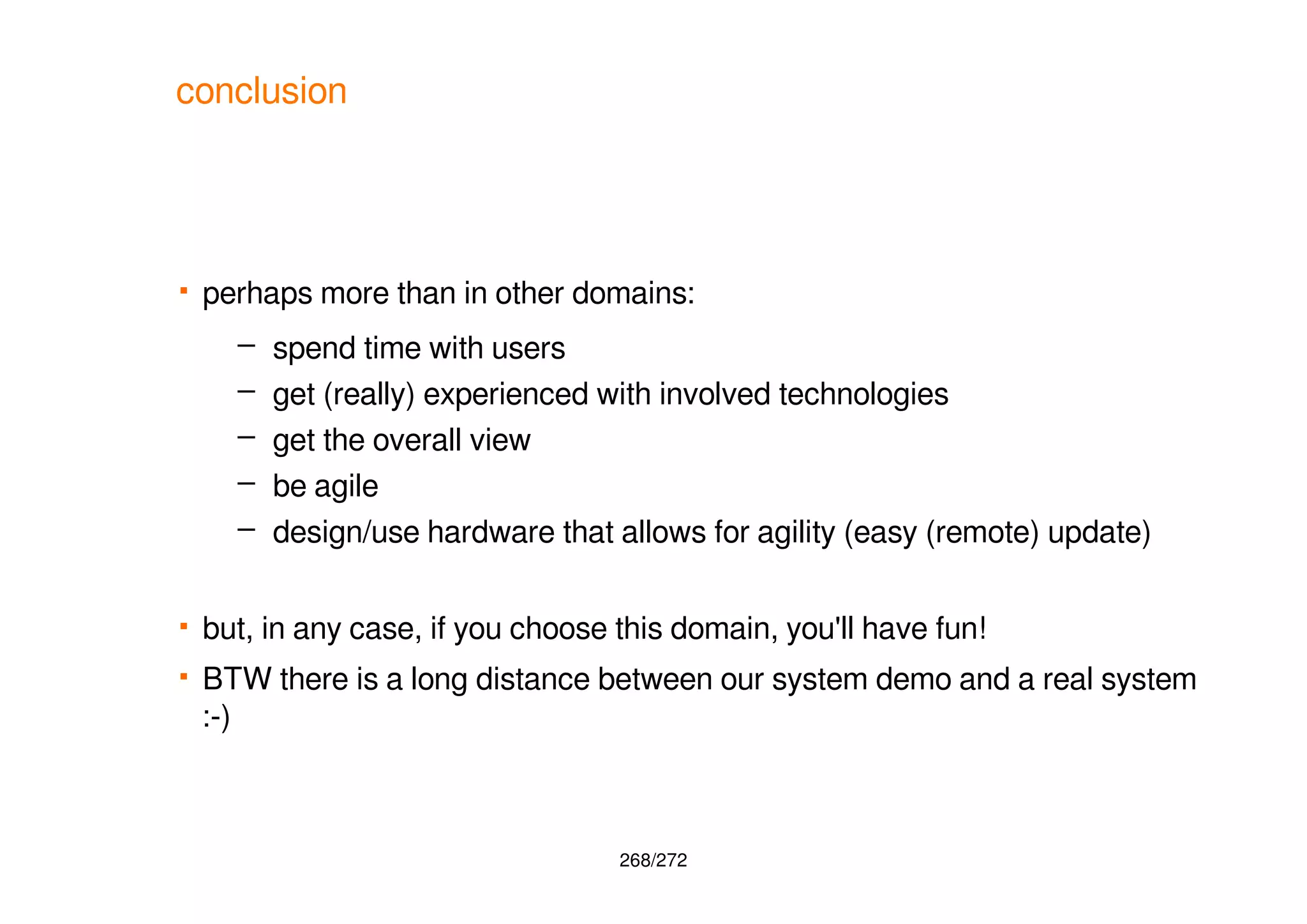

![270/272
credits and references
[Def01] https://material.io/icons/
[Def02] https://openclipart.org/detail/237859/factory
[Def03] https://en.wikipedia.org/wiki/Internet_of_things
[Fct01] http://www.libelium.com/resources/top_50_iot_sensor_applications_ranking/
[Fct02] https://www.aylanetworks.com/iot-use-cases/connected-home
[Pr101] http://homelive.orange.fr/accueil/
[Pr102] http://www.samsung.com/fr/consumer/mobile-devices/smartphones
[Pr103] https://openclipart.org/detail/155101/server
[Pr201] https://www.u-blox.com/en/product/neo-m8-series
[Pr202] http://www.ti.com/product/CC3200MOD/description
[Pr203] https://www.sierrawireless.com/products-and-solutions/embedded-solutions/automotive-modules/
[Pr204] https://developer.mbed.org/platforms/FRDM-K64F/
[Pr205] https://openclipart.org/detail/210237/misc-depression-button
[Pr206] https://www.u-blox.com/en/product/c027
[Pr207] https://www.iridium.com/products/details/iridiumedge
[Arc01] http://www.rm-odp.net/
[Arc01] https://openclipart.org/detail/232991/sedan
[Arc02] https://openclipart.org/detail/177832/radiator
[Arc03] https://openclipart.org/detail/24535/street-lamp
[Arc04] https://openclipart.org/detail/202078/printer-inkjet](https://image.slidesharecdn.com/20180217-iotandconnecteddevices-180217095428/75/IoT-and-connected-devices-an-overview-270-2048.jpg)
![271/272
credits and references
[Dev01] https://www.adafruit.com/products/2590
[Dev02] https://www.adafruit.com/products/2542
[Dev03] https://www.adafruit.com/products/2461
[Dev04] https://www.adafruit.com/products/1991
[Dev05 https://shop.sodaq.com/en/explorer.html
[Per01] https://wiki.openwrt.org/doc/hardware/port.gpio
[Per02] http://maxembedded.com/2011/06/the-adc-of-the-avr/
[Per03]
[Per04] https://en.wikipedia.org/wiki/Serial_Peripheral_Interface_Bus
[Per05] https://learn.sparkfun.com/tutorials/serial-peripheral-interface-spi
[Per06] http://www.engineersgarage.com/contribution/i2cinter-integrated-circuittwitwo-wire-interface
[Per07] http://maxembedded.com/2014/02/inter-integrated-circuits-i2c-basics/
[Per08]
[Com01] http://www.microchip.com/wwwproducts/en/RN2483
[Com02] https://portal.3gpp.org/desktopmodules/Specifications/SpecificationDetails.aspx?specificationId=1515
[Com03] http://www.wikiwand.com/it/Gateway_GPRS_Support_Node
[Com04] http://www.robotshop.com/eu/fr/plateforme-developpement-beaglebone-black-beagleboard.html
[Com05]
[Com06] http://planstrategique.anfr.fr/?p=1247
[Com07] https://www.lora-alliance.org/technology
http://eu.mouser.com/Connectors/D-Sub-Connectors/D-Sub-Standard-Connectors/_/N-9gybx?
No=50&P=1ytmhdqZ1yzv7x2Z1z0z812
https://autoelectricalsystems.wordpress.com/2015/11/10/basics-of-controller-area-network-can-bus-
part-1/
https://www.sierrawireless.com/iot-blog/iot-
blog/2016/08/lpwa_for_the_iot_part_2_standard_vs_proprietary_technologies/](https://image.slidesharecdn.com/20180217-iotandconnecteddevices-180217095428/75/IoT-and-connected-devices-an-overview-271-2048.jpg)
![272/272
credits and references
[Pla01] http://www.aeris.com/technology/aercloud/
[Pla02]
[Cen01] https://openclipart.org/detail/17312/antenna-square
[Sec01] https://iotsecurityfoundation.org/
[Sta01] http://onem2m.org/images/files/deliverables/Release2/TS-0001-%20Functional_Architecture-V2_10_0.pdf
[Sta02] http://www.itu.int/rec/T-REC-Y.2060-201206-I
[Pro01] https://openclipart.org/detail/259142/garbage-truck
[Pro02] https://openclipart.org/detail/204589/old-british-taxi
[Pro03] https://openclipart.org/detail/144367/chiva
[Pro04] https://openclipart.org/detail/139267/eco-car
[Pro05] https://dir.indiamart.com/impcat/gprs-modem.html
[Pro06] https://openclipart.org/detail/116599/solar-panel
[Pro07] https://openclipart.org/detail/181618/crashed-car
https://www.sierrawireless.com/products-and-solutions/sims-connectivity-and-cloud-services/iot-cloud-
platform/](https://image.slidesharecdn.com/20180217-iotandconnecteddevices-180217095428/75/IoT-and-connected-devices-an-overview-272-2048.jpg)